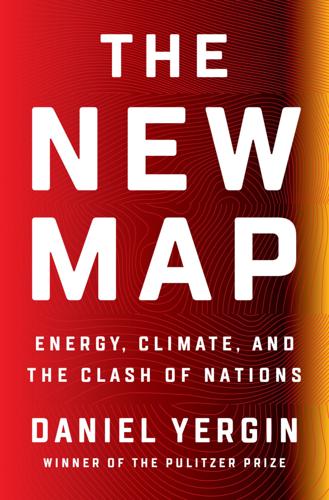
The New Map: Energy, Climate, and the Clash of Nations
by
Daniel Yergin
Published 14 Sep 2020
Centre des Archives Diplomatiques du Ministère de l’Europe et des Affaires Étrangères, 32 CPCOM/79, ASIE 1930–1940, CHINE, E 513-0 sd/e 749. 4. “How Much Trade Transits the South China Sea?,” China Power, Project CSIS, October 10, 2019 (world trade); Schofield and Storey, South China Sea Dispute, p. 9 (tuna); Alan Dupont, “Maritime Disputes in the South China Sea: ASEAN’s Dilemma,” Perspectives on the South China Sea, ed. Murray Hiebert, Phuong Nguyen, and Gregory Poling (Washington, D.C.: CSIS, 2014), p. 46 (“strategic commodity”); Ian Storey, “Disputes in the South China Sea: Southeast Asia’s Troubled Waters,” Politique Étrangère 79, no. 3 (2014), p. 11 (“entire world”). 5.
…
China says its claim to sovereignty is rooted in history, which it succinctly set out in a December 2014 paper: “China has indisputable sovereignty over the South Sea Islands and the adjacent waters. Chinese activities in the South China Sea date back to over two thousand years ago. China was the first country to discover, name, explore, and exploit the resources of the South China Sea and the first to continuously exercise sovereign power over them. From the 1930s to the 1940s, Japan illegally seized some parts of the South China Sea islands during its aggression against China. At the end of the Second World War, the Chinese government resumed exercise of sovereignty over the South China Sea islands.”1 Other nations challenge the Chinese claim to sovereignty, arguing that for many centuries Southeast Asian and Arab merchants dominated trade in the region.
…
Ezra Vogel, Deng Xiaoping and the Transformation of China (Cambridge: Harvard University Press, 2013); Richard Baum, Burying Mao: Chinese Politics in the Age of Deng Xiaoping (Princeton: Princeton University Press, 1994); Daniel Yergin and Joseph Stanislaw, The Commanding Heights: The Battle for the World Economy (New York: Touchstone, 2002), p. 197. 2. Bill Hayton, The South China Sea: The Struggle for Power in Asia (New Haven: Yale University Press, 2014), pp. 28, 121 (“not wise enough”). 3. Carlyle A. Thayer, “Recent Developments in the South China Sea: Implications for Peace, Stability, and Cooperation in the Region,” South China Sea Studies, March 24, 2011, p. 3; U.S. Department of State, “Limits in the Seas”; Tran Truong Thuy and Le Thuy Trang, Power, Law, and Maritime Order in the South China Sea (Lanham: Lexington Books, 2015), pp. 103–15. 4. Interviews; Hillary Rodham Clinton, Hard Choices (New York: Simon & Schuster, 2014), p. 79; Edward Wong, “Chinese Military Seeks to Extend Its Naval Power,” New York Times, July 23, 2010.

The Disappearing Act
by
Florence de Changy
Published 24 Dec 2020
I reminded him how quickly – very quickly, indeed – anything pointing towards a crash in the South China Sea had been discounted, dismissed, refuted and buried by the most influential groups of MHists online and, more importantly, by all governments affected by the crisis, however (apparently) marginally. I promised I would try to find more evidence that would lend credibility to his testimony. Which I believe we have done by now. Most pieces of evidences suggesting a crash in the South China Sea have been ignored, dismissed, denied or just erased. In the light of so many hints and clues to support some kind of simple South China Sea scenario, the lack of any obvious corroborative evidence to sustain the official narrative (either because it is being withheld or because there is none) is all the more striking.
…
From that point, despite the mounting pile of clues, attention shifted completely away from the South China Sea. Eyewitness accounts, reports by the Vietnamese Navy and Chinese satellite images, as telling as they may have seemed, quickly faded into oblivion, relegated to the large and increasingly crowded box of ‘as-yet unexplained temporary clues’ like pieces of a jigsaw puzzle that must be kept in a corner of the table until they can be made to fit into the overall picture. Accordingly, from Tuesday, 11 March, scenarios other than a plane crash into the South China Sea began to take shape. In an apparently ill-advised burst of transparency, Rodzali Daud, the Royal Malaysian Air Force Chief, told the local newspaper Berita Harian (Today’s News) that at 2.40 am that Saturday – one hour and 21 minutes after the last radio and radar contact with the plane – the aircraft had been detected by the Royal Malaysian Air Force Base at Butterworth near Pulau Perak.
…
She told me that she had reviewed the Tomnod search and its results: ‘I noticed that the density and the quality of reports coming from the South China Sea were higher and better than from anywhere else. Reports coming from there actually resembled high-reflective – metallic – pieces floating on water instead of [what were obviously] waves or boats.’ She was puzzled by this, but rather than travelling to South East Asia like Jonny Spendler, she tried to acquire higher-resolution images, which were normally available through DigitalGlobe. She was shocked to learn that the DigitalGlobe catalogue did not offer a single image for sale from the South China Sea between 8 and 15 March 2014. For there to be no pictures available for a specific area at a specific time like this was incredibly odd.
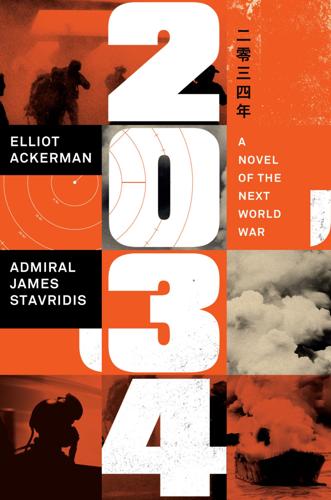
2034: A Novel of the Next World War
by
Elliot Ackerman
and
James Admiral Stavridis
Published 15 Mar 2021
If your government takes any retaliatory action for Galveston or San Diego, it won’t be a Chinese ship that we sink next but an American one.” Patel presented his nephew with another image, a map that showed the approximate disposition of Indian naval forces in and around the South China Sea. “And as you’ll see, this isn’t a hollow threat.” Patel’s map seemed an impossibility to Chowdhury. If accurate, it meant that dozens of Indian warships had infiltrated into the South China Sea undetected, representing a gross underestimation of India’s stealth-cloaking and cyber capability by his own country. Chowdhury’s thoughts shifted to a couple of days before, how his uncle had learned of the Enterprise’s receipt of launch orders against the Chinese mainland.
…
pid_prh_5.6.1_c0_r1 “For there is no folly of the beast of the earth which is not infinitely outdone by the madness of men.” —Herman Melville Contents 1. The Wén Rui Incident 2. Blackout 3. Blinding the Elephant 4. Red Lines 5. On Death Ground 6. The Tandava Coda The Horizon Acknowledgments 1 The Wén Rui Incident 14:47 March 12, 2034 (GMT+8) South China Sea It surprised her still, even after twenty-four years, the way from horizon to horizon the vast expanse of ocean could in an instant turn completely calm, taut as a linen pulled across a table. She imagined that if a single needle were dropped from a height, it would slip through all the fathoms of water to the seabed, where, undisturbed by any current, it would rest on its point.
…
He knew there’d be hell to pay for flying throttle and stick, but he’d deal with that when he got back to the Bush. He wanted to feel it. If only for a second. And if only for once in his life. It would be worth the ass-chewing. And so, with a bunch of noise behind his head, he banked into Iranian airspace. * * * 14:58 March 12, 2034 (GMT+8) South China Sea “You wanted to see me, Commodore?” Commander Jane Morris, captain of the John Paul Jones, seemed tired, too tired to apologize for being almost fifteen minutes late to her meeting with Hunt, who understood the strain Morris was under. Hunt understood that strain because she herself had felt it on occasions too countless to number.
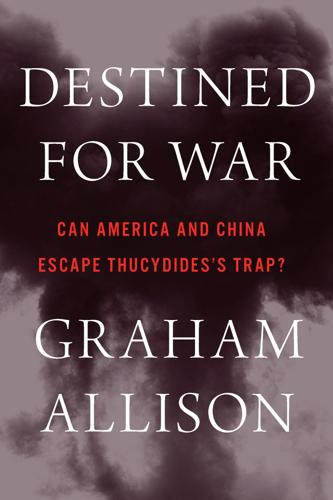
Destined for War: America, China, and Thucydides's Trap
by
Graham Allison
Published 29 May 2017
Derek Watkins, “What China Has Been Building in the South China Sea,” New York Times, February 29, 2016, http://www.nytimes.com/interactive/2015/07/30/world/asia/what-china-has-been-building-in-the-south-china-sea-2016.html. [back] 67. US Department of Defense, “Asia-Pacific Maritime Security Strategy,” 17. [back] 68. US trade accounts for $1.2 trillion of the total $5.3 trillion. Bonnie Glaser, “Armed Clash in the South China Sea,” Council on Foreign Relations, April 2012, 4, http://www.cfr.org/asia-and-pacific/armed-clash-south-china-sea/p27883. [back] 69. Andrei Kokoshin, “2015 Military Reform in the People’s Republic of China: Defense, Foreign and Domestic Policy Issues,” Belfer Center for Science and International Affairs, October 2016, vi, http://belfercenter.org/publication/27040.
…
Notable cases include China’s abrupt cessation of all exports of rare metals to Japan in 2010 (to persuade Japan to return several Chinese fishermen it had detained); its zeroing out of salmon purchases from what had been Norway’s number-one market in 2011 (to punish Norway for the Nobel Peace Prize committee’s selection of a noted Chinese dissident, Liu Xiaobo); and its prolonged inspection of bananas from the Philippines until they had rotted on the docks in 2012 (to change the Filipino government’s calculations about a dispute over Scarborough Shoal in the South China Sea). China enjoys such superiority in its balance of economic power that many other states have no realistic option but to comply with its wishes, even when the international system is on their side. In 2016, for instance, China flatly rejected an unfavorable ruling by the Permanent Court of Arbitration over a dispute with the Philippines in the South China Sea, setting the table for another contest of wills. In this standoff and others involving the South China Sea, China has demonstrated an ability to combine charm, largesse, bribes, and blackmail to find “compromises” that give it most of what it wants.
…
If Beijing were prepared to remove antiship and anti-air missiles from its islands in the South China Sea, Washington could limit surveillance operations along China’s borders, especially near China’s military installations on Hainan Island, as the country’s leaders have long demanded. China could agree to end regular patrols near the Senkaku Islands in the East China Sea in return for the US stopping provocative freedom-of-navigation operations in the South China Sea. The US could propose that China freeze island building in the South China Sea, accept limits on the modernization of its submarine fleet and antisatellite weapons, and reduce its amphibious warfare capabilities in exchange for the US slowing or even stopping development of a Conventional Prompt Global Strike capability, delaying deployment or removing advanced missile defense systems in South Korea and Japan, and recognizing Chinese sovereignty over the Paracel Islands.
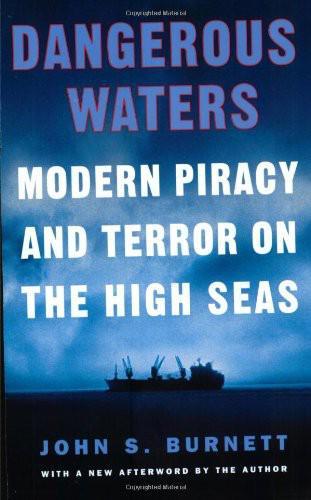
Dangerous Waters: Modern Piracy and Terror on the High Seas
by
John S. Burnett
Published 1 Jan 2002
The passage ahead will take me from Singapore across the South China Sea to Ho Chi Minh City, the same route of the Petro Ranger, and past the spot where she was hijacked. 17 Into the Dead Zone Petro Concord, South China Sea If a voyage down the Malacca Straits on the Montrose was an exercise in caution and awareness, then a passage across the murderous waters of the South China Sea on a smaller tanker is a passage in abject fear. Ships out here are far more alone, more vulnerable, than in the congested and tightly regulated channels. Located just on the other side of the Straits, the South China Sea is a violent, unregulated no-man’s-land, the private game reserve of organized crime; it is in these international waters that the hulking beasts of the sea like the Petro Ranger are hunted down.
…
Some investigating officials are convinced that money from these activities has funneled down to various militant organizations in the region, including the Abu Sayaf in the Philippines, and to GAM, the fundamentalist separatist movement on Sumatra, and to the Jamaah Islamiah in Malaysia.42 Four loosely connected multinational crime organizations control four areas: The Singapore syndicate controls the southern part of the South China Sea and Malacca Straits; Bangkok controls the Andaman Sea, bordered by Thailand, Burma, and Malaysia; triads in Hong Kong control the northern part of the South China Sea; Jakarta controls the Java Sea and parts of the South China Sea to Borneo. There are syndicate branches in Vietnam, Malaysia, Sumatra, Cambodia, the Philippines, Burma, and mainland China. Targeted cargo vessels steaming from one turf to another provide the syndicates with a movable feast and often the spoils are divided.
…
Man dies as he dreams. Alone. —Joseph Conrad PROLOGUE The Attack The young Indonesian poked me in the stomach with the barrel of his assault rifle. His eyes, cold and hard, challenged me to resist. I was at the edge of doing something stupid. I had been sailing alone across the South China Sea to Singapore in January 1992 aboard my sloop Unicorn. While not a large boat—only thirty-two feet long—it is stout enough for ocean passages and comfortable enough to call home. Setting off single-handed was not recommended; Indonesian harbor officials in Borneo on the other side had warned me that an oil tanker steaming through the same area had been attacked by pirates the night before.
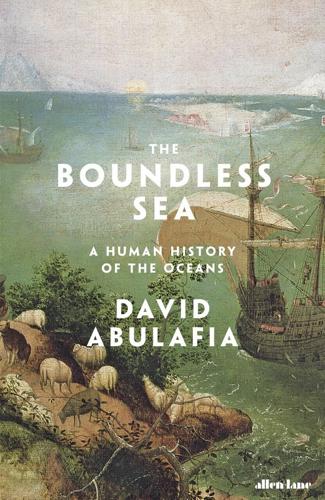
The Boundless Sea: A Human History of the Oceans
by
David Abulafia
Published 2 Oct 2019
D. 174 Gokstad ship 369 gold 57 , 76 , 106 , 244 , 505 , 540 , 547 , 588 , 640 , 717 African 471–4 , 475 , 481 , 484 , 496 , 500–501 , 506 ; Guinea/Mina coast 507 , 508 , 509–11 ; ‘River of Gold’ 471 , 473 , 474 , 484 , 496 , 500 , 502 , 511 artefacts found in Broighter 331 Aztec 635 bars 509 from Bia-Punt 79 boat model 331 bracelets 509 bribes 207 , 782–3 bullion famine 500–501 Californian 852–3 Caribbean 531 , 553 , 555 , 582 , 588–9 and China 216 of Chrysé and Argyré 134 coins 164 , 172 , 352 , 478 , 687 , 730 , 803 and Columbus 524 , 528 , 529 , 531 , 588 , 589 and crusades 481 dust 207 , 216 , 475 , 510 , 531 , 840 and economic warfare against Islam 501 , 537 , 546 and El Dorado 553 , 590 and encomienda system 531 English ambitions for 663–4 ‘fool’s gold’ 664–5 of Funan 140 and Hispaniola 531 , 582 Inca 635 ingots 156 and Japan 194 , 216 , 221 , 232 , 524 , 847 leaf 216 mining 174 and the Moluccas 611 and Oc-èo 141 of Ophir 80–81 , 82 in Philippines 574 and the Portuguese 471–4 , 501 , 502 , 506 , 507 , 508 , 509–11 , 546 , 548 , 560 , 635 , 652 ; funding imperial expansion 511 ; gold funding imperial expansion 511 of Ptolemy’s Syria 97 in Red Sea 176 Roman 108 and Russia 801 , 802 , 803 and Singapore/Temasek 286 and slavery 582 and Sofala 548 and Solomon 81 and the Spanish 531 , 553 , 555 , 582 , 588–9 , 729 and Śri Vijaya 153 tribute 546 Viking raids on 362 Welsh 302 Golden Hind 665 Gomes, Diogo 488 Gomes, Fernão 504 , 506 Gonneville, Binot Paulmier de 557–60 Gonville Hall, Cambridge 669 gooseberries 114 Gothenburg 717 , 722 , 723 , 724 , 725 archipelago 726 ‘Little London’ and the British 723 Reformed Church 723 Gotland 353 , 357 , 366 , 367 , 368 , 418 , 419 , 423 , 424 , 425 , 427 , 437 , 448 Bronze Age 368 Gotlanders’ Saga 368 Gouvea, Francisco de 653 Graf Spee 888 grain trade xix , 57 , 104 , 106 , 238 , 276 , 352 , 432 , 442 , 444 , 470 , 860 see also barley ; maize ; millet ; rice ; rye ; wheat Ålander 874–6 Black Sea 872 British imports 881 and Ceuta 475 , 478 and the Dutch 428 , 675 , 676–7 English 389 , 391 , 444 , 458 grain surpluses 50 and Hansards 428 , 429 and Iceland 390–91 Santo Domingo imports from Spain 587–8 Spanish 587–8 Gran Canaria see Grand Canary Gran Colombia 852 Granada 475 , 476 , 477 , 485 Grand Canary (Gran Canaria) 472–3 , 501 , 505 grapes 114 graves see burial ; tombs Gray, Robert 793 , 794 Great Britain see Britain Great Britain , SS 864 Great Chronicle of London 533 Great Collection of Buddhist Sutras 234 Great Depression 883–4 , 886 Great Eastern , SS 864 Great Gift 773 Great Northern War 802 Greece/Greeks Alexandrian Greeks 99 and Bereniké 111 Buddhism and Greek culture 90 coins 326 Greco-Roman merchants see merchants: Greco-Roman/‘Roman’ Greek pirates 130 Greek towns in northern Italy 334–5 and Hellenization 46 , 93 Ionia see Ionia maritime trade from 19th century 872–3 Massalia and Greek travellers 331–2 Mycenaeans see Mycenaeans and Persia 85 pottery 94 , 323 settlers in Africa 841 ships 109 , 872–3 and Socotra 129–30 trade routes of Bronze Age Greece 314 Greek language 111 of Socrotans 130 Greene, Daniel 795 Greenland xix , xxi , 362 , 380 , 393–409 , 721 Black Death in 405 Christianity 397 , 400 Corte Real’s rediscovery 534 Eastern Settlement 397 , 399 , 400 , 404 , 406 Eskimos: Dorset 398–9 ; Inuit 398 , 399–400 , 404 , 405 , 406–7 falcons 398 hunting 397 and Iceland 393–8 , 400–402 named Labrador 534–5 Norse discovery and settlement 393–402 , 403–7 , 655 and Norway 712 paganism 400 Southern Settlement 397 trade 398 , 402–4 , 407 , 408 Western Settlement 397 , 404 , 408 women 406 Greenlanders’ Saga 407 , 409 , 410–11 , 413 Greifswald 418 , 426 Gresham, Sir Thomas 669 Gresham College 669 Grijalva, Juan de 614 Grim Kamban 380 Grimaldo, Juan Francisco de 588 Grotius, Hugo 679–82 , 773 , 822 Guadeloupe 768 Guam 573–4 , 856 Guanches 472 , 488 Guangdong 159 Guangzhou/Canton xxix–xxx , 136 , 138 , 147 , 149 , 163 , 164 , 172 , 199 , 240 , 243–50 , 636–7 , 640 , 642 , 723 , 725 , 814 and the British 709 , 814 , 825 ‘Canton System’ 789 and Empress of China 785 , 786–8 and the French 827 and furs 806 Hoppos 789 merchants in 824 , 825 and New Julfans 706 North American trade with 786–91 and opium 825–6 and West Indies 711–12 Guatemala 581 guavas 644 Guðrið, wife of Þorfinn Karlsefni 411 , 412 , 413 Guðroð Crovan 378 Guðrum 361 Guerra, Luis 553 Guerra brothers 553 guilds, merchant 183 , 184 , 213 , 249 , 355 , 669 , 789 Guinea 504–8 and the Brandenburgers 716 coast 489 , 490 , 504 , 505–12 , 545 , 669 , 702 , 712 , 716 , 718 ; Carlsborg fort 717 , 718 and the Danes 712 , 716 , 721 and England 716 and France 561 and the Portuguese 504–8 , 754 scramble in 17th century for 716–19 and the Spanish 754 and the Swedes 716 , 718 trade see trade: Guinea trading stations 716 Guinea Bissau 504 Gujarat/Gujaratis 51 , 602 , 604–5 Diu see Diu, Gujarat Gulden Zeepaert , ’t 741 Gulf Stream xv gum arabic 839 Gunnbjorn Ulf-Krakuson 396 Gustavus Adolphus of Sweden 716 , 717 Gwadar, Oman/Pakistan 829 Gypsies 46 Habsburgs 439 , 604 , 703 Angra’s Spanish Habsburg fortifications 752 and France 672 Magnus Intercursus treaty between England and Habsburg rulers of Flanders 669 and New Christians 702 , 704–5 Portuguese 1640 rebellion 705 and São Felipe, Cape Verde 753 southern Netherlands transfer from Spanish to Austrian Habsburg rule 722 in Spain 614 , 764–5 Hacho, Mount 474 , 475 , 478 Hadhramawt, south Arabia 128 hairstyles 170 Haithabu 365–7 , 371 , 421 Haiti 527 , 685 see also Hispaniola Hakata (Fukoaka) 196 , 212 , 224 , 652 Hakata Bay 196 , 197 , 215 , 216–17 , 223 , 224 , 225 Hakluyt, Richard 658 Hakusuki, battle of 192 Halley, Edmund 750 Hallstatt culture 326 , 330 , 331–2 Hamburg 424 , 437 , 445 , 449 , 673 , 676 , 702 , 712 , 880 Chilehaus 880 and Portuguese Jewish merchants 701 and Second World War 891 , 892 Sephardim 701 trading links with South America 880 Hamburg–Amerika Line 869 Hamilton, Alexander 818–19 Hamwih (Southampton) 353 Hangzhou (Quinsay) 221 , 224 , 226 , 238 , 239 , 240 , 245 , 248 , 250 Hannibal 845 Hanoi 138 Hans, king of Denmark 464 Hansa, German xxii , 403 , 415–31 , 432–46 , 668 and Antwerp 673 Baltic members’ importance 433–6 and Bergen 418 , 419 , 443–6 and Bruges 433 , 438–9 , 440 , 441–2 cogs 426 , 428 , 451 and Cologne 428 , 433 , 438 , 441 , 442 , 444 , 447 , 448 , 452 Diets (Hansetage ) 420 , 432–6 , 437 , 453 and the Dutch 425 , 428 , 668 , 674–5 , 676 , 683 ; conflict with Spain 685 and England 419 , 447–53 , 456 , 458 , 463 ‘Hanseatic League’ 419 , 432–3 , 452 and herring 674 and Iceland 461–3 Kontor 440 , 444 , 445 , 446 , 447–8 and Norwegians 442–6 and Portugal 431 , 477 post-plague ‘Hansa of the Towns’ 432–6 Prussian members 452 and Teutonic Order 420–21 , 428 , 436 , 437 , 441 , 452 trade routes 424–5 , 438 HAPAG 881 , 885 , 886 , 891 , 904 Harald Fairhair 362–3 , 373 , 380 , 384 , 385–6 , 389 , 401 , 402 Harald Hardraða 361–2 , 377 , 378 Harali 57 Harappā 63 Harland, Edward 870 Harland and Wolff shipyard, Belfast 870 , 899 Harold Godwinsson 362 harpoons 28 , 304 , 399 Harris, William xxiii Harrison, John, chronometer 812 Hartog, Dirk 736 Harun ar-Rashid 170 , 365 Hasekura Tsunenaga 632 Hastings, Francis Rawdon-Hastings, 1st Marquess of 821 Haswell, Robert 793 Hathab/Astakapra 129 Hatshepsut/Hashepsowe, Queen 75–6 , 77 , 78 , 82 Havana xviii , 591–3 , 617 , 701 , 754 Hawai’ian islands xxiii , 3 , 20–21 , 25–7 , 810 , 813–17 , 859 agriculture 26–7 first settlers 24 Kaua’i 25 , 814 , 815 and Māori language 132 and Marquesas 24 , 30 O’ahu 24 , 25 , 814 , 816 pineapples 859 sweet potatoes 29 and the USA 816 , 817 , 856 , 859 Hawaiian Citizen 903 Hawaiki 5 , 33 , 34 , 35–6 , 37–8 Hayam Wuruk of Majapahit 280 Hayes’ Island 739–40 hazelnuts 114 Hazor 80 Heaney, Seamus 351 Hebrides 328 , 377 , 378 Viking raids 372 Hedeby see Haithabu Heian see Kyoto/Heian Hekataios 88 Hellenization 46 , 93 Helluland 409 Helsingborg 425 Helsingør (Elsinore) castle 713 Helsingør narrows 685 hemp 194 Henriques, Moses Josua 719 Henry I of Schwerin 425 Henry II of England 458 Henry III, Holy Roman Emperor 402 Henry III of England 450 , 469 Henry IV of England 452 Henry V of England 476 , 477 Henry VI, Holy Roman Emperor 449 Henry VII of England 526 , 532–3 , 534 , 557 Henry VIII of England 557 , 656 Henry the Impotent, king of Castile 504–5 Henry the Lion 424 , 425 , 427 Henry of Navarre 676 Henry the Navigator, Prince Henry 431 , 465 , 469 , 476 , 478 , 479–80 , 481 , 484 , 485 , 499 , 501 , 502 , 503 , 514 and the Azores 487 , 488 Belém statue 480 and Madeira 484 , 485 hens see chicken Herjólfsnes, Greenland 404 , 405 , 406 , 410 Hermapollon 112–13 Herodotos 88–9 , 90 , 334 herring 306 , 420 , 426 , 428 , 429–30 , 436 , 451 , 562 Baltic 430 , 436 , 451 , 674 and the Dutch 668 , 674 , 683 , 685 North Sea 430 , 436 , 674 Heyerdahl, Thor 27–30 , 299 , 727 Heyn, Piet 686 Heysham, Robert 749 Heysham, William 749 hides see skins/hides Hideyoshi Toyotomi 628 , 629 , 630 , 646–7 , 649 , 651–3 Dutch merchants in 650–51 Himilco 333 Himyar 122 , 123 , 166–7 Hindenburg 898 Hindostan , SS 865 , 867 Hinduism/Hindus 109 , 183 , 548 Brahmins see Brahmins Buddhism interwoven with Hinduism 293 and Madagascar 759 and Majapahit 280 and Melaka 293 , 295 Oman and Hindu merchants 834 and the Portuguese 547 , 548 , 606 ; Portuguese Christianizing mistakes over images 541 and Socotra 128 and Vietnam 144 Vishnu statues 159 Hine-te-aparangi 32 , 34 Hippalos 102 , 109 Hirado, Japan 692 , 693–4 Hiram, king of Tyre 73 , 80 Hispaniola 491 , 555 , 582–6 , 656 , 768–9 , 770 cattle 590–91 and Columbus 520 , 521 , 527–8 , 529 , 530 , 531 , 582 , 585 , 769 and the Dutch 683 gold 531 , 582 and Havana 592 hides 590 , 591 salt 588 Santo Domingo see Santo Domingo, Hispaniola sugar 582 , 589–90 , 768–9 Taínos 520 , 521 , 527–8 , 529 , 530 , 531 , 582 , 583 Hitler, Adolf 887 , 888 Hjǫrleif 384–5 Hoëdic 306 , 308 Hojeda, Alonso de 534 , 550 , 551 , 552 , 554 Hokianga nui a Kupe 33 Hokkaido 191 Hokule’a 20 Holocene period 303 , 304 Holt, Alfred 864–7 , 868 shipping company see Blue Funnel Line hominids, early, in Flores 7 Honduras 591 , 592 honey 194 , 389 , 391 , 444 , 470 Hong-wu 256 , 260 Hong-xi 267 Hong Kong 637 , 639 and Blue Funnel Line 867 , 891 and Britain 639 , 826–8 , 893 Chinese bazaar 827 Chinese settlers 827 Club 827 as a container port 904 , 907 and the Depression 886 merchants 789–90 , 808 , 824 and Mizrahi Jews 841 opium trade 827 , 828 P&O office 892 and People’s Republic of China 639 , 892–3 , 907 and pirate raids 867 and Second World War 887 , 892 ; and post-war period 892–3 and the USA 893 Victoria Island 826 , 867 Wallem shipping company 890 Hong Kong and Whampoa Dock Company 905 Honolulu 903 Hopewell 706 Hoppos, Canton 789 Hoq cave, Socotra 128 Horace 170 Hormuz 8 , 254 , 264–5 , 267 , 269 , 598–9 , 604 , 606 , 608 , 610 , 634 Strait of 52 , 62 , 166 , 598 , 634 Horrea Piperataria 114 horses 220 , 404 , 489 , 581 , 652 , 730 horse-breeding on Cape Verde 489 , 502 and yellow fever 855 Horta, Azores 750–51 horticulture, Lapita 12–13 Hotu Matu’a 30 houses circular 321 , 324 , 329 in circular villages 321 with dry-stone foundations 321 Inuit 399 Madeiran 484 merchant 425–6 , 443 , 445–6 , 838 oblong 321 of timber and wattle 366 Howqua (Hong merchant) 790 Huang Chao 172 Hudson, Henry 665 Hudson Bay 408 , 557 , 658 , 664 , 665 , 666–7 Huelva 319 Huguenots 676 , 696 , 697 Hull 447 , 451 , 462 , 871 human sacrifice 367 , 368 , 730 , 809 , 810 Humboldt, Alexander von 852 Hundred Years War 469 Hung Wu-ti 219 , 220 hunting 302 , 304 , 306–7 , 397 , 399 in Greenland 397 grounds 404 , 406 , 794 by Ming emperors 256 seals 399 turtles 105 whales see whales/whaling Hussein, sultan of Johor 821–2 Hutchison Ports 905 Hygelac 348 Hyksos 75 Hyogo 218 Iberia xxii , 305 see also Castile/Castilians ; Catalans ; Galicia ; Portugal/Portuguese ; Spain/Spaniards Atlantic culture of 324–5 Bronze Age 316 , 322 Christian vs Muslim struggle in 12th century 467–8 circular villages 321 Iron Age 330 Neolithic 308–9 , 313 pin-brooches 326 roundhouses 329 ships in Mediterranean from Atlantic Iberia 470 and Spanish Reconquista 468 , 477 swords 318–19 visitors to London 455 Ibn al-Muqaddam 182 Ibn Battuta 248 Ibn Hawqal 171 Ibn Iyas 595 Ibn Sab’in 475 Ibrahim Pasha, Pargalı 603 , 607 ice 303–4 Arctic 339 , 655 , 657 , 660 , 661 , 664 glaciers 304 receding 908 Ice Age 303–4 ‘Little Ice Age’ of 17th century 767 Iceland xix , 362–3 , 383–8 Black Death in 403 , 405 and Bristol 461–3 and Columbus 410 , 524 and England 461–3 and Greenland 393–8 , 400–402 and Hansards 461–3 and Norway 712 paganism 387–8 , 400 , 407 sagas 370 , 380 , 384 , 386 , 387–8 , 396 , 444 ; Egil’s Saga 389 , 391 ; Orkneyinga Saga 311 , 363 , 364 , 373 , 375 , 376 tallow 721 trade 390–92 , 461–3 vaðmal cloth 390–1 , 403 Ictis island 336 Ideal-X 902–3 Idrisi, Muhammad al- 130 , 157–8 , 471–2 , 475 Ieyasu Tokugawa 629 , 630–31 , 632 , 653–4 , 692 , 693–4 iguanas 12 Iki island 224 Imari wares 650 Imhof family and banking house 672 Imma 353 immigration see migration Imperator 885 Imperial Airways 898 Incas 29 , 618 , 635 , 727 incense 71–3 , 122 , 243 see also frankincense ; myrrh Arabian 94 , 115 Assyrian 80 Chinese 286 in Jewish Temple 80 and the ‘Muscateers’ 831 stands/vessels 80 Sumerian 80 Inchcape, James Lyle Mackay, 1st Earl of 884 India Ajanta caves 129 and Armenians 706 , 707 , 708 and the British/English 690–91 , 714 , 851 see also East India Company, English ; and Armenians 707 Buddhist monasteries 118 , 128 Cabral in 542 carpets 548 and China 125 , 137 , 138–9 , 144–6 , 147 , 152 , 161 , 282–3 see also Indo-China cloth see cloth: Indian coastal ethnic/religious diversity in 9th century 183 coins introduced to 102 da Gama in 540–41 and the Danes 712 , 714 , 715 diamonds 703 and Egypt 182–3 , 187–8 da Gama in 543 Goa see Goa Gujarat see Gujarat/Gujaratis as interchange point between trade networks 187 and Japan 152 luxury of elite 188 mail sent with P&O 867 and Malaya 282 and Mediterranean 108 merchant guilds 183 , 184 merchants from see merchants: Indian Mughal invasions 604–5 Muslims in 183 , 261 de Nova in 542 and Oman 831 , 832 and Ottomans 603 , 605 pepper see pepper: Indian and the Portuguese 540–43 , 604–5 , 606 ‘Roman’ merchants and southern India 52 Romans in 118 and silver 188 and Śri Vijaya 161 steamship link with Persian Gulf 868 Tamils see Tamils trade see trade: Indian and Vietnam see Vietnam: and India and West Indies 711–12 wine imports 116 Zheng He in 261 Indian Ocean 43–69 , 103 and Abbasid rise 170 and Alexandria 96 , 103 , 187 and American ‘Red Sea men’ 781–2 and British India Steam Navigation Company 868 and Buddhism 43–6 , 118 control struggle over 594–610 Dias’s discovery of link with Atlantic 514 , 536 , 537 ‘extensions’ xxii ; Red Sea see Red Sea ; South China Sea see South China Sea and the Genoese 703–4 Greco-Roman xviii and Gujarat 602 historic exit points 46–7 and the ‘Indies’ 46 , 99 , 517 and ‘Lascars’ 841 as link between Mediterranean and South China Sea 338 Madagascar as link with Atlantic 758 , 780 Magellan’s experience of 568 maritime network 43 , 90 , 93 , 124 , 125 , 147 , 167–70 , 279 Mediterranean interaction 98 , 116 , 117 , 124 , 167–70 , 338 , 517 Melaka as link with South China Sea 272 , 295 , 569 , 636 monsoons 50 , 51 , 52 , 96 , 102 , 171 , 182 , 546 navigation 117 and Ottomans see Turks/Ottomans: and Indian Ocean Pacific Ocean contrasted with 43 of the Periplous 103–10 , 116 , 119 , 124 , 125–8 , 134 and Persian Gulf see Persian/Arabian Gulf piracy widespread through 707 and Portugal see Portugal/Portuguese: and Indian Ocean Ptolemy’s view of 89 , 105 , 496 , 727 and Red Sea see Red Sea ‘Silk Route of the Sea’ xx , 265 ; and Singapore 281–9 Singapore as link with South China Sea 272 Spice Islands see Moluccas/Spice Islands spices in Indian cuisine 714–15 and Strait of Malacca see Melaka (Malacca): Strait of Malacca tides 103 , 107 trade see trade: Indian Ocean trade routes see trade routes: Indian Ocean and the Turks see Turks/Ottomans: and Indian Ocean and the USA 781–2 , 795 winds 51 , 110 see also monsoons and Zheng He’s voyages 254–5 , 256–69 , 280–81 , 293 ‘Indies’ areas covered by term in Middle Ages 46 , 517 , 523 Columbus and the term 46 , 517 East Indies see East Indies ; Indonesia/Indonesians spice trade see spices/spice trade transatlantic attempts to reach 517 , 522–35 , 537 , 550–64 , 566–8 , 571–2 West Indies see West Indies indigo 107 , 717 , 754 Indiké 120 Indo-China 137 , 147 , 249–50 see also Cambodia ; Vietnam and Fan-man’s conquests 144 Faxien’s voyages 144–6 and Sanskrit 144 Indonesia/Indonesians 6 , 43 , 147 see also East Indies ; Malaya/Malays and Buddhism 166 Bugi pirates 819 , 823 Chola and Indonesian trade 273 and the Dutch see Netherlands/Holland and the Dutch: and the East Indies/Indonesia Federation of Malaya and Indonesian Republic 893–4 and Madagascar 132–3 merchants 10 , 132 , 165 Moluccas see Moluccas/Spice Islands and the Portuguese see Portugal/Portuguese: and East Indies/Indonesia and Ryukyu Islands 232 sailings between India and China 125 spice trade with Madagascar 132–3 Sumatra see Sumatra and Vietnam 143 Zabaj 155–8 see also Śri Vijaya, Sumatra Indus River 50 , 53 , 68 , 88 , 106–7 Indus Valley and civilization 53 , 62–9 and Dilmun 66–7 see also Dilmun pottery 62 , 63 seals 63–4 and Sumer 62 trade with Mesopotamia 66–7 , 69 industrialization 861 , 865 , 869–70 , 896 , 907–8 infant mortality 307 Ingolf Arnarson 384–5 ingots bronze 320 copper 60 , 242 gold 156 silver 165 tin 164 Ingstad, Anne Stine and Helge 413 Innocent VIII 513 Inquisition 491 , 592 , 656–7 , 673 , 685 , 699 , 700 , 703 , 705 , 707 , 708 , 730 , 749 , 754 , 769 , 770 , 775 Intan wreck 164–5 Inuit 398 , 399–400 , 404 , 405 , 406–7 , 408 , 411 , 663 Ionia 82 , 85 Ionian Islands 682 , 872 , 873 Ipswich 353 Iran see Persia/Iran Iraq 68 , 85 , 164 , 598 Chinese trade with 185 Ottoman government of 831 Sumer see Sumer/Sumerians Ubaid 53–4 Ireland Bronze Age 316 , 320 circular villages 321 currachs 331 , 382 and the English 767 Irish Free State: and Second World War 888–9 ; and the USA 885 Irish monks 381–3 , 386–7 linen industry 457 migrants fleeing famine 860 monuments 301 and Orkney 311–12 and the potato 752 promontory forts 328 trade 457 and US immigration policy 885 Viking raids 361 , 372 , 379–80 , 381 Irian 280 Irish Channel 312 Irish Sea 313 iron 97 , 104 , 133 , 142 , 158 , 185 , 408 , 807 , 888 aboard SS London 861 early ironmaking 316 and Greenland 398 , 408 , 413 and Iceland 391–2 magnetized 243 and Marianas 619–20 nails see nails and Norsemen 408 ore 242 pyrites 664–5 Spanish 455 steamships 826 , 864 , 868–9 , 882–3 Swedish 724 technology 314–16 irrigation 50 on Hawai’i 25 , 26 Irvine, Charles 723 Isaac the Jew 186–7 Isabella of Castile 464 , 489 , 504–5 , 522 , 527 , 529 , 534 , 582 death 530 , 555 Isadora, Aelia 111 Isbister, Orkney 311 Isfahan 705–8 Isidore of Seville 135 , 409 Isis 122 Iskandar Shah 282 , 285 , 290 Islam/Muslims xx , 94 , 546 Abbasid dynasty 164 , 170 and Africa 500 , 502 Almohads 175 , 468 in Bombay 789 caliphate rivalries in 8th century 170 in China 244 , 258 Christians vs Muslims in Spain 423 , 477 coins 364 and the crusades see crusades dirhams 366 European struggle against Muslim power 46 see also crusades forcible conversion of Jews 181 Indian 183 ; in Calicut 261 and interest payments 837 and Ma Huan 269–70 and Madagascar 759 and Malaya 282 Mamluks see Mamluks and Melaka 291–2 , 293 , 295 merchants see merchants: Muslim ‘Moors’ 292 , 465–7 , 537 , 540 , 541 , 569 , 617 , 707 Muslim fleets 465–7 Muslim pilgrims 866 Muslims of Persian origin in 9th century 184 and Pasai 276 and Portugal see Portugal/Portuguese: and Islam ‘purity of blood’ doctrine and hiding of Muslim ancestry 696 in Quanzhou 244 and Red Sea closure to non-Muslims 187 relationship between Muslim governments and Jews/Christians 836–8 Shi‘ite 173 , 599 in Spain see Spain/Spaniards: Muslim (al-Andalus) spread along trade routes 146 , 166 and Śri Vijaya 147 Sunnis see Sunni Muslims and Tengah/Muhammad 291–2 , 293 and Zheng He 257–8 Íslendingabók 398 Ismail Pasha 849–50 Israel, Jonathan 674 , 686 Israel, Six-Day War (1967) 896 Israelites and incense 80 and Jewish Temple 80 , 81 Italy 115 , 240 see also Sicily ; Tuscany bankers 450 , 454 , 532 , 590 , 703 ; in England 454 French invasion 526 and Germany: landward connections 441 , 442 ; and Second World War 889 Greek towns in northern Italy 334–5 and London 454–5 merchants see merchants: Italian migrants fleeing poverty 860 and Ottomans 601 and Second World War 889 wars with Charles V 611 Zheng He in 254–5 Ivan III of Russia 677 Ivan IV, the Terrible 659–60 , 677 Ívar Bárdarson 403–4 ivory 505 , 547 , 717 , 840 craftsmen 503 elephant 47 , 59 , 61 , 62 , 63 , 76 , 105 , 107 , 118 , 121 , 122 , 153 , 233 , 265 , 278 , 323 , 324 , 398 , 405 , 833 and the Omanis 829 , 831 , 833 and the Portuguese 501 , 504 , 635 and the USA 833 walrus xix , 385 , 391 , 397 , 404 , 408 Izu islands 230 Jackson, Andrew 852 Jacob 782–3 Jacobites 723 Jacobsz, Ariaen 738–9 Jakarta see Batavia/Batavians Jamaica 520 , 530 , 749 , 761 , 769–79 and the English 765 , 768 , 769–79 Jews 773 Miami ferry service 900 and Panama Canal workforce 853–4 , 855 Port Royal 765 , 769–79 silver 777 , 778 and slave trade 777 and the Spanish 771 , 773 sugar trade 777 , 779 Jambi 160 , 273 , 279 , 287 James I of England 690 James II of England 777 James III of Majorca 473 James of Bruges 488 church in Azores 491 Jamestown, Virginia 557 , 766 Jan Mayen Island 396 Jang Bogo see Chang Pogo Jansz/Janszoon, Willem 736 Janus Imperiale 454 Japan/Japanese 6 , 190–209 , 212–29 Ainus 797 archers 211 , 230 armour 211 artists 200 Ashikaga shoguns 219 , 220 , 231 bakufu 212 , 217 , 222 , 223 , 225 , 229 and ‘barbarians’ 847 on Behaim’s globe 525 bonzes (religious teachers) 647 Buddhism see Buddhism: in Japan and Cabot 532 and Carletti 621 , 647 , 648–9 cash 214 Ceremony of National Purification 199 and China 135 , 152 , 188 , 189–90 , 192 , 197 , 198–209 , 212–21 , 228–9 , 235 , 236 , 251 , 287 ; and Hideyoshi’s assault on Korea 650–51 ; Hideyoshi’s conquest plans 646 ; Japanese mercenaries in Manila garrison vs Chinese 626 ; and Philip II’s plan to invade China 627 ; trade 201–2 , 212–20 , 228 , 638 , 647 , 649 and Christianity see Christianity: and Japan coal 846 and Columbus 524–5 , 537 and copper 692 , 847 daimyos (warlords) 644 , 646 , 647 , 650 , 654 and the Dutch see Netherlands/Holland and the Dutch: and Japan early ethnic variety 191 and European technology 847 and European weapons 644 and First World War 883 and Germany, Second World War 887 , 888 and gold 194 , 216 , 221 , 232 , 524 , 847 guilds (za ) 213 Iki 224 imperial court 191 , 193 , 194 , 196 , 197 , 200 , 203 , 205 , 209 , 213 , 214 , 215 , 217 , 222 , 223 , 228–9 and India 152 inflation 214 Inland Sea 199 , 204 , 212 , 218 , 232 , 652 inter-clan battles 219 , 230 and Java 220 junks 628 , 637 kami-kaze pilots 229 kaolin 650 and Korea 190 , 191–9 , 200 , 204 , 223 , 225 , 646 , 649–51 Kyushu see Kyushu island lacquered boxes xix , 216 and Macau 635 , 638 , 639 , 642 , 644 , 654 and Manila 622 , 628–30 , 632 , 633 Meiji regime 847 , 883 , 888 mercenaries 626 , 628–9 merchant fleets 883 , 896 merchants 189 , 221 , 616 , 629 , 630 , 649 and Mexico 630–31 Ministry of Commerce 847 Mongol attacks on 221 , 222–8 paintings 198 paper 200 , 201 , 213 , 743 pearls 216 , 221 peasants 213 ‘People of the Sea’ 213 and Philippines 617 , 622 , 628–30 , 632 , 633 , 648 , 652–3 Polo’s account of 221 and the Portuguese 606–7 , 628 , 630 , 632 , 635–8 , 639 , 642 , 647 , 653 , 654 , 692–3 ; and access to Chinese silk 652 ; and Dutch 692–3 ; and Hideyoshi 646–7 ; and Jesuits 644 , 646–7 ; translation of Portuguese sailing manuals into Japanese 644 pottery see pottery/ceramics: Japanese power fragmentation in 14th century 230 , 231 and rice 808 , 847 and the Russians see Russia: and the Japanese and Ryukyu Islands 229–30 , 232 , 614 sake 212 samurai 223–4 , 225 , 644 , 649 on Schöner’s globe 572 seafaring 199 and Second World War 887–8 , 890 , 891 Shikoku island 218 shipbuilding 212 , 896 ships see boats/ships: Japanese shogunate abolition (1868) 847 Shōsō-in imperial treasury, Nara 194 , 207 , 217 and Siam 220 and silk 194 , 200 , 201 , 628 , 630 , 633 , 847 silver 638 , 641 , 642 , 647 , 801 , 847 and the Spanish 627 , 629–30 , 632 , 633 , 652–3 ; and Dutch 692 Takashima 227 and tea 215–16 , 230 , 649 , 847 trade see trade: Japanese Tsushima see Tsushima island and the USA 846–7 ; and Second World War 888 and Vietnam 632 wakō pirates 218 , 219 , 220 , 222 , 637 , 638 and Waldseemüller 556 and Wallem 872 Japan current xv Japan Sea 6 , 43 , 198 , 200 Jardine, William 824 , 825 , 827 Jarlshof, Shetland 372 Java/Javans 7 , 113 , 154 , 162 , 272 , 279–81 , 287 , 689 , 736 Batavia see Batavia/Batavians and Britain 820 and China 163–4 , 188 , 244 , 260 , 262 , 268–9 , 280–81 , 286–7 and the Dutch 688 and Japan 220 Majapahit kingdom 279–81 , 284–5 , 287 , 290 merchants 292 and Mongols 228 , 272 , 279 and Norway 871 Parameśvara and Javan rule over Sumatra 287 , 289–90 Polo and ‘Great Java’ 272 , 280 , 734 and the Portuguese 578 and Ryukyu Islands 233 ships 285 ; junks 548 , 549 , 606 and Singapore/Temasek 284–5 , 286 , 288 , 289 spice merchants in 250 and Śri Vijaya 159 , 160 , 272–3 , 279–80 , 287 trade 163–4 Jefferson, Thomas 792 Jeffreys, George, 1st Baron 777 Jehosaphat 82 Jelling, Jutland 353 Jenkinson, Anthony 659–60 , 706 Jerónimo de Jesús de Castro 653 Jeronymites 589 Jerusalem 460 , 523 , 531 , 537 Temple 80 , 81 , 728 and Third Crusade 449 Jesuits 628 , 640 , 642 , 643 , 644–7 , 648 , 653 and Franciscans 653 jet 141 jewellery 141 , 265 see also specific gemstones American silver coins melted down for 754 bracelets see bracelets brooches 326 , 353 Crown Jewels 450 Lapita 15 necklaces 56 , 102 Jews 52 , 96 Adeni 181 of Alexandria 99 anti-Semitism 697 , 700 , 855 , 884 in Azores 840 bankers 450 , 855 of Cairo 124 , 536 in China 238 and citron 178 and England 700 , 769–70 , 839 and flax 176 , 178 forced conversion: to Christianity 537 ; to Islam 181 French anti-Semitism 855 of Fustat 176 Genizah documents 174 , 175–6 , 182 , 184 German 422 , 886 Gibraltar settlement 656 impurity laws and eastern drinking vessels 174 , 187 and the Inquisition 699 , 700 in Jamaica 773 Khazars 171 London’s Spanish and Portuguese Synagogue 700 , 838 Majorcan 480 in Manchester 839 in Mangalore 186 merchants 175–6 , 181 , 183 , 184 , 238 , 354 , 697–702 , 834 , 841 Mizrahi 841 Moroccan 697 , 836–8 , 840–41 Muslim governments’ relationship with 836–8 of Persian origin 184 and the Portuguese 536 , 537 , 697 , 699–700 , 701 , 702 , 717–18 , 772–3 , 838 , 840 see also Christianity: Portuguese New Christians (of Jewish origin) ; children from Portugal sent to São Tomé 493 , 494 ‘purity of blood’ doctrine and hiding of Jewish ancestry 696 Red Sea and Jewish–Christian confrontation 130 , 166–7 Sephardic see Sephardim and silk 176 in Singapore 823 in Spain 698 suspected secret Jews: in the Canaries 697 ; in Havana 592 Tabernacles Feast 178 Yemenite 181 , 182 Jian-wen 251 Jiddah 595 , 598 , 602 Jikaku Daishi (Ennin) 202–9 , 210–11 Jingdezhen 174 João I of Portugal 476 , 477 , 484 João II of Portugal 494 , 496 , 508 , 512 , 513 , 514 , 527 , 537 John, king of England 449 , 469 John I of Portugal 469 John, Prester 46 , 512 , 523 , 536 , 540 Johnson, Lyndon B. 903 Johor 239 , 679 , 818 , 821 Jon Grønlænder 405–6 Jordan 83 Josephus 135 Jourdain, John 689 , 690 Jtj (wife of Parekhou) 77 Juana la Beltraneja 505 Juana the Mad, queen of Castile 555 Julfa 706 see also New Julfan merchants Jungdezhen 649 junks xx , 134 , 137 , 233 , 234 , 575 , 637 Chinese 135 , 217 , 243 , 246 , 247 , 259 , 270 , 278 , 621 , 622 , 623 , 624 , 625 , 628 , 636 , 638 , 781 , 867 Japanese 628 , 637 Javanese 548 , 549 , 606 Melakan 643 and the Portuguese 636 , 637 , 642 , 643 Jutes 344 , 347 , 348 Jutland 685 battle of 882 Ka‘aba, Mecca 163 , 171 Kahiki 25 Kaiana, Hawai’ian prince 814–15 Kaifeng 238 Kalevala 366 Kalinga 288 Kalpe see Gibraltar Kamakura 212 , 214 , 215 , 217 , 223 , 224 , 229 Kamara (Puhar) 119 Kamaran Island 601 Kamchatka Peninsula 800 , 802 , 803 , 807 Kamehameha I of Hawai’i 814 , 815 , 816 , 817 Kamehameha II of Hawai’i 816–17 Kané 123 Kane (god) 26 Kangp’a see Chang Pogo Kanton, near Stockholm 725 kaolin 650 Karachi 63 , 91 Karelians 422 Karl Hundason, king of the Scots 376 Katharine Sturmy 461 Kathāsaritsāgara 143 Kattigara 121 , 143 Kaua’i 25 , 814 , 815 Kaundinya 140 , 141 Kaupang, Norway 353 , 355 , 365 , 390 Kawano Michiari 224–5 kayaks 399 Keats, John 565 Kedah 152 , 161 kelp 196 Kemal Reis 607 , 610 Kempe, Margery 452 Kendrick, John 792 , 793 , 794 Ken’in (Buddhist monk) 202 Kennedy, John F. 903 Kent 360 Ketill the Fool 386 Kettler, Jacob 719 , 720 Khazars 171 Khmer kingdom/kings 140–41 , 158 and Champa 249–50 and Song China 244 Kholmogory 660 Khubilai Khan 221 , 222 , 223 , 224 , 227 , 228 , 247 , 248 , 263 , 272 Ki no Misu 204 Kidd, William 761 Kiev/Rus 365 , 367 , 423 Kilwa 131 , 176 , 543 , 546 , 547 , 568 Kim Yang 211 kingfisher feathers 135 , 139 King’s Mirror 399 , 400 Kingston Bay, Jamaica 771 , 778 , 855 Kiribati Islands 14 , 31 , 614 Kiritimati 31 Kish/Qays 173–4 , 180 Klysma 102 , 117 knives 194 knǫrrs 371 , 385 , 390–91 Koch, John 330 Kodiak Island 793 , 805 Kōfuko-ji monastery, Nara 235 Koguryō, Korea 192 , 194 Kola Peninsula 658–9 Kolkata see Calcutta Kollam 183–4 Komr 158 Kon-Tiki 27 , 28 Kongo slaves 493 , 503 Konstantin of Novgorod 427 Koptos 78 , 111 , 112 , 113 , 116 Korea and Buddhism 166 , 194 , 198 celadon 232 and China 189 , 191 , 192 , 198 , 210 , 236 , 239 , 244 , 245 , 287 , 650 and Christianity 695 House of Li 219 and Japan 190 , 191–9 , 200 , 204 , 223 , 225 , 646 , 649–51 Kim dynasty 193 Koguryō kingdom 192 , 194 Koryō 219 , 222 , 223 merchants 189 , 207 ; merchant communities from Quanzhou 245 and Mongols 222 , 249 navy 650–51 North 193 Paekche kingdom 192 , 194 Parhae kingdom 194 , 197–8 and Red Sea 117 and Ryukyu Islands 232 , 234 ships 206 , 650–51 silk 244 , 247 Silla kingdom 192–3 , 194 , 195 , 197 , 198 , 199 , 204 , 211 slaves 210 tea bowls 649 trade 194 , 198 , 216 , 630 Kōrokan, Japan 196–7 Koryō, Korea 219 , 222 , 223 Kos, Greek island 116 Kosh, Socotra 129 Kosmas Indikopleustes 130 Kowloon 828 Kra Isthmus 137 , 144 , 273 Krakatoa 119 Kronstadt, Baltic 807 , 809 Kruzenshtern, Johann-Anton von 806–9 Kulami 182 Kumiai Indians 28 Kunemura 232 Kupe, Polynesian navigator 32–6 Kuril Islands 797 , 803 , 804 Kurland 715–16 , 719 Kuroshio current xv Kuwait 54 , 67 Kuy (war-god) 26 Kwallŭk 194 Kylsant, Owen Philipps, 1st Baron 883–4 Kylsant Royal Mail 883–4 Kyoto/Heian 212 , 216–17 , 218 , 223 , 228 , 644 Minamoto assault on 230 Tōfuku-ji monastery 218 Kyushu island 191 , 195 , 196 , 197 , 204 , 208 , 215 , 216–17 , 218 , 220 , 652 see also Hakata (Fukoaka) and Hideyoshi 646 Japanese converts to Christianity 654 pirates (wakō ) 218 La Gomera 589 La Isabela 528 , 585–6 , 588 La Navidad 585 La Pérouse, Jean-François de Galaup, comte de 809 , 812 La Tène culture 326 , 330 , 332 , 334 Labrador 464 , 533 , 557 Greenland given name of 534–5 lacquer 220 boxes xix , 216 , 703 Lady Hughes 788 Lady Washington 792 , 793 Lagash 64 , 65 Lagos, Algarve 497–9 , 502 Lancaster, James 687–9 Langdon Bay, Kent 319–20 , 321 Lanzarote 471 , 472 , 473 Laodicea 108 , 122 lapis lazuli 57 , 59 , 62 , 107 , 194 , 202 , 238 Lapita people/culture 11–16 , 19 agronomy 12 boats 15–16 horticulture 12–13 pottery 12 , 14 trade 15 Lapps/Sami 373 , 655 larch 408 Las Casas, Bartolomé de 554 , 582 , 584 , 585 , 591 Las Coles 585 Lasa 265 Latin 111–12 Latvia 420 , 422 peasants 719 Lavenham 453 Lavrador, João Fernandes 534 Lazarus, Emma 860 Le Havre 562 , 564 lead 333 , 640 Leander 807 leather 455 , 839 Lebanon 81 , 91 Ledyard, John 785 Lee Kuan Yew 894 Legázpi, Miguel López de 615 , 616 , 618 Leif Eiríksson (Leif the Lucky) 400 , 407 , 410 , 411 , 413 Leisler, Jacob 782–3 lemons 573 , 752 juice 688 lemurs, giant 133 leopards 99 , 266 skins 323 Lesseps, Ferdinand de 849 , 854 lettuce 643 Leuké Komé 115 Levant Company 691 Levant trade 460–61 Lewis, Bernard 836 Lewis, David 13 Lewis chessmen 397 Liang shu 137 Libelle of Englyshe Polycye 455 Libya/Libyans 73 , 79 , 90 Liefde , De 631 , 691 life expectancy 307 Lima 697 Limahon 625 , 627 limes 573 , 752 limewood 339 Limyriké 109 Lin Feng/Limahon 625 , 627 Lin Zexu 825–6 Lindisfarme 360 , 364 , 372 linen 373 , 444 , 457 , 540 , 548 , 624 Linnaeus, Carl 725 lions 99 , 259 , 266 , 269 , 276 skins 323 liquorice 194 Lisbon xxii , 370 , 468 , 469 , 470 , 476 , 477 , 487 , 510 , 545 , 600 , 606 , 617 , 648 , 676 , 701 , 840 archives 594 , 634 businessmen funding transatlantic voyages 525 Castilian siege of 476 and the Dutch 677 , 682–3 investors 561 , 703 and Madeiran sugar 485 shipbuilding 484 and spices 682–3 , 684 unloading of cargoes in transit to avoid customs in 745 , 751 Litany of Oengus 381 Lithuania 437 , 452 Liubice 423 Liujiagang 268 , 270 Liverpool 864 , 865 , 866 , 868 , 871 , 873 , 874 , 875 , 880 , 885 , 887 air raids 891 post-war recovery of shipping companies 897 and Second World War 891 , 892 Livonia/Livs 420–21 , 441 Livorno 619 , 676 , 682 , 700 , 772 , 838 , 872 Lixus 323 Lloyds 861 Lo Yueh 135 Loaísa, Garcia Jofre de 579 lodestones 243 , 370 Lomellini family 470 London 419 , 438 , 780 , 885 air raids and damage 891 , 892 , 896 and Bensaúde 840 and Bristol cloth 458 cosmopolitanism 455 Genoese in 455 and Greek merchants 872–3 and Hansards 447–8 , 449 , 450 , 453 and Italians 454–5 and Navigation Act (1651) 780 New Christians of 700 , 708 and New Julfans 706 Port of 454 , 839 , 880 , 891 , 892 , 896 , 897 ; docks 904 post-war recovery 897 Royal African Company 760 Royal Exchange 669 Royal Society 792 , 820 and under-sea cables 864 Sephardim 701 Spaniards in 455 Spanish and Portuguese Synagogue 700 , 838 Steelyard and the Hansard Kontor 447–8 , 453 tax exemptions 455 Viking raid on 360 and wool 454 London , SS 860–61 London Missionary Society 813 Long Melford 453 Longe, William 456 longitude, fixing 16 , 731 , 812 Loos, Wouter 740 Lopes Pereira, Manuel 704 Lopez, Fernando 755–6 Lopius, Marcus 793 Lothal 63 , 64 Lotus Sutra 199–200 , 215 Louis the Pious 337 Louis XI 459 Louis XII 559–60 Louis XIV 720 Louisiana , USS 859 Love Boat 900 Low Countries Flanders see Flanders Netherlands see Netherlands/Holland and the Dutch and Portuguese merchants avoiding customs duties 745 Portuguese sugar imports 669 and Spain 673 , 685 see also Netherlands/Holland and the Dutch: and the Spanish Low German language 426 Middle Low German 423 Lu-Enlilla 58–9 , 65 Lu-Mešlamtaë 59 Lu Xun 138 Luanda, Angola 593 , 701 Lübeck 418 , 419 , 422 , 423 , 424–6 , 427 , 429 , 440–41 , 444 , 445 , 447 , 449 , 450 , 452 , 470 Alt-Lübeck 423 Bone-Cutter Rebellions 440 and Hansa Diets 432 , 433 , 436 , 437 herring 430 Lübeckers in England 449–50 marzipan emporium 429 New Council 440–41 salt 430–31 Society of the Circle 440 , 442 Lucca 454 Lucena, Vasco Fernandes de 513 Lucian of Samosata 102 Lucqua (Hong merchant) 808 Luftwaffe 889 Lüneburg Heath 431 Luo Mao-deng: The Grand Director of the Three Treasures Goes Down to the Western Ocean 254 , 259 , 265 Lusitania , RMS 882 luxury goods 58 , 75 , 82 , 139 , 192 , 199 , 215 , 217 , 232 , 349 , 420 , 427 see also specific goods by name Arctic 412 , 414 , 415 Chinese customs rates on 241–2 , 273 European demand from new colonies in mid-16th century 588 exotic luxuries see exoticism: exotic goods, luxuries and foods and German Hansa 420 , 427 and Hawai’i 816 Japan and Portuguese luxuries 647 Mediterranean 672 and Russia 802 Luzon island 616 , 618 , 622 ceramics 652 Lvov 708 lychees 246–7 Lydia 85 Lynn, England 447 , 449 , 451–2 , 462 Steelyard 453 lynx 306 Lyons 562 Ma Huan 256–7 , 261 , 264–5 , 269–70 , 280 Maasvlakte 897 Mabuchi Kamo 847 Macaronesia 481–96 , 745–55 see also Azores ; Canary Islands ; Cape Verde Islands ; Madeira Macassar 10 Macau (Macao) xviii , xxix , 592 , 617 , 627–8 , 634 , 638–42 , 648 , 709 , 725 , 787 , 808 , 826 ‘black ships’ of Macau/Great Ship of Amacon 641–2 , 644 , 645–6 , 647 and the British 806 and gambling 907 and Japan 635 , 638 , 639 , 642 , 644 , 654 Jesuits 645 and New Julfans 706 opium trade 827 and the Portuguese 638–42 , 643–4 , 787 ; New Christians 703 silk 640 and silver 763 and tax 639 and the USA 806 Macaulay, Thomas Babington, 1st Baron 722 mace 611 , 684 , 703 , 781 Macnin, Meir 839 Macnin family 836 Macpherson, W.
…
This area was explored early in the second century AD by a sea captain named Alexander who may well have rounded the southern tip of Malaya, by way of the Strait of Malacca, and have entered the South China Sea, arriving at a place called Kattigara, which will be revisited in the next chapter. Greeks and Romans were not terribly sure where China lay, but they knew it was a source of fine silk, and that was probably the motive for occasional forays towards the South China Sea; an embassy from the court of Emperor Marcus Aurelius may have reached the South China Sea in the late second century, for Chinese records describe the embassy of ‘Antun’ (Antoninus, the emperor’s cognomen , or additional name), though they dismissed it as of little consequence because the goods offered as gifts – or, as the Chinese would prefer to think, tribute – were regarded as commonplace.
…
The impression given by the wreck is that this was a Chinese ship and that it was bound from Guangzhou or another port in southern China for a destination in the South China Sea.59 This evidence for goods being collected from different corners of the South China Sea on sizeable ships affects how one might think about this space. It has often been compared to the Mediterranean, but the Mediterranean is not an ideal model, for three large continents meet there, while the southern and eastern rims of the South China, Sea are chains of islands separating the sea from the open spaces of the Pacific; and the mainland to the north has always been dominated by China which, even when fragmented, has possessed an economic and political weight far in excess of anything that rulers over Śri Vijaya could hope to achieve.60 Yet the South China Sea has also been an area in which the great power to the north has taken a relatively passive role in the conduct of trade, compared to the inhabitants of Indonesia, Malaya, Thailand and Vietnam.
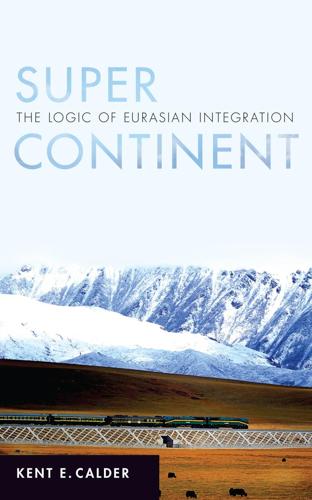
Super Continent: The Logic of Eurasian Integration
by
Kent E. Calder
Published 28 Apr 2019
RegionTopicID=SCS. 18. On the South China Sea as “China’s Caribbean,” see Kaplan, Asia’s Cauldron, 32 –50. 19. Southeast Asian nations began asserting these views with particular intensity following Hillary Clinton’s remarks at the 2010 ASEAN Regional Forum in Hanoi. 20. “The South China Sea Arbitration (The Republic of Philippines v. The People’s Republic of China),” Permanent Court of Arbitration, https://pca-cpa.org/en/cases/7/. 21. Katie Hunt, “Showdown in the South China Sea: How Did We Get Here?” CNN, August 2, 2016, http://www.cnn.com/2015/10/28/asia/china-south-china-sea-disputes -explainer/. 22.
…
Christopher Harress, “Russia and China Begin Mediterranean Military Exercises with Black Sea Port Visit,” IB Times, May 5, 2015, http://www.ibtimes.com/russia-china -begin-mediterranean-military-exercises-black-sea-port-visit-1916868. 288 Notes to Chapters 7 and 8 85. Russia and China began their exercises in the South China Sea on September 12, 2016. These exercises focused on “island seizing,” a particularly controversial topic at the time, since they followed the ruling at the Permanent Court of Arbitration in The Hague, declaring China’s South China Sea claims null and void. See Sam LaGrone, “China, Russia Kick Off Joint South China Sea Naval Exercise: Includes ‘Island Seizing’ Drill,” USNI News, September 12, 2016, https://news.usni.org/2016/09/12/china-russia-start-joint -south-china-sea-naval-exercise-includes-island-seizing-drill. 86.
…
Robert D. Kaplan, Asia’s Cauldron: The South China Sea and the End of a Stable Pacific (New York: Random House, 2014), 41. 17. The US Energy Information Administration (EIA) estimates that there are some 11 billion barrels of oil and 190 trillion cubic feet of natural gas proved and probable reserves in the South China Sea. China’s CNOOC estimated in late 2012 that the area holds some 125 billion barrels of oil and 500 trillion cubic feet of natural gas in undiscovered Notes to Chapter 6 279 reserves. See Energy Information Administration (EIA), “South China Sea,” U.S. Department of Energy, February 7, 2013, https://www.eia.gov/beta/international/regions-topics .cfm?
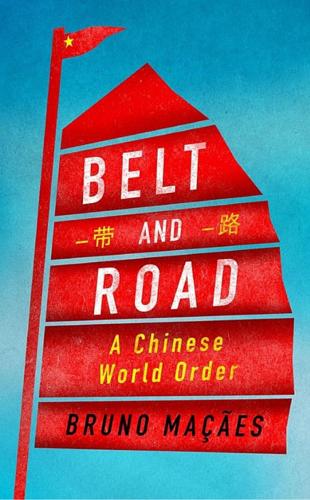
Belt and Road: A Chinese World Order
by
Bruno Maçães
Published 1 Feb 2019
The Road The Vision and Actions document proposed two routes for the Maritime Silk Road. The East Route would start from China’s coast through the South China Sea to the South Pacific. The West Route would pass through the South China Sea and terminate in Africa and Europe. This scheme was slightly modified in a 2017 document entitled Vision for Maritime Cooperation under the Belt and Road Initiative, where three separate routes are envisioned. First, the China-Indian Ocean-Africa-Mediterranean Sea Blue Economic Passage linking the China-Indochina Peninsula Economic Corridor, running westward from the South China Sea to the Indian Ocean, and connecting the China-Pakistan Economic Corridor (CPEC) and the Bangladesh-China-India-Myanmar Economic Corridor (BCIM-EC).
…
Even the initial success of the company seemed to anticipate the Chinese economic model of our time, being the result of the combination of the government’s financial support and the merchant managers’ autonomy.21 * * * Maps of the Maritime Silk Road released by the Chinese media have shown the route running through disputed areas in the South China Sea, another hot spot for geopolitical rivalry. The contradiction is that the South China Sea is the geographic area where China has been developing a new, more assertive and confrontational foreign policy, and it lies at the very center of those free and safe shipping lanes evoked by every official document on the Belt and Road. There are two main ways to think about this contradiction.
…
Countries such as Malaysia, the Philippines and Vietnam continue to hesitate between adopting one of the two interpretations of the initiative. In the past China has used economic aid as a powerful tool in advancing its interests in the South China Sea. When President Hu Jintao visited Phnom Penh in 2012 he promised his Cambodian counterpart economic assistance of 450 million yuan. A few months later Cambodia opposed including a mention of the South China Sea dispute in a joint statement tabled by Vietnam and the Philippines. Around the same time, Chinese quarantine authorities reportedly blocked hundreds of container lorries of Philippine bananas from entering Chinese ports.
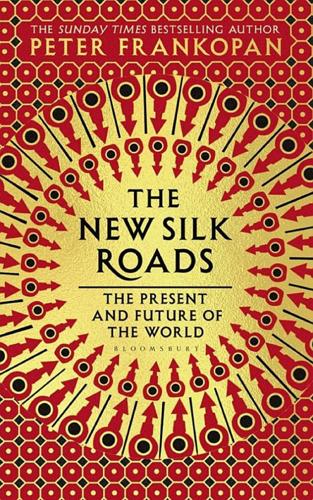
The New Silk Roads: The Present and Future of the World
by
Peter Frankopan
Published 14 Jun 2018
Admiral Davidson gave a frank assessment of China’s capabilities, and the limitations of the options available to the US Navy. China was in the process of constructing a series of military bases in the South China Sea and beyond, he noted. ‘Once occupied, China will be able to extend its influence thousands of miles to the south and project power deep into Oceania.’ Its forces, furthermore, would ‘easily overwhelm the military forces of any other South China Sea claimants’. His conclusion was as stark as it was clear: ‘In short, China is now capable of controlling the South China Sea in all scenarios short of war with the United States.’ Even in that event, he added, ‘there is no guarantee that the US would win a future conflict with China’.198 This is despite major investment in naval technology that includes the construction of vessels like the USS Zumwalt, so sophisticated that one of the US Navy’s most senior officers, Admiral Harry B.
…
, Eurasia Daily Monitor 15(20), 8 February 2018. 75Farhan Bokhari, Kiran Stacey and Emily Feng, ‘China courted Afghan Taliban in secret meetings’, Financial Times, 8 August 2018. 76Reuters, ‘Pakistan scrambles to protect China’s “Silk Road” pioneers’, 11 June 2017. 77Permanent Court of Arbitration, ‘The South China Sea Arbitration (The Republic of Philippines v. The People’s Republic of China)’, 12 July 2016 at https://www.pcacases.com/web/view/7 78Richard A. Bitzinger, ‘China’s Plan to Conquer the South China Sea Is Now Clear’, The National Interest, 10 May 2018. 79Vu Huang, ‘Vietnam asks China to end bombers drills in Paracels’, VnExpress, 31 May 2018. 80Manuel Mogato, ‘Philippines takes “appropriate action” over Chinese bomber in disputed South China Sea’, Reuters, 21 May 2018. 81US Department of Defense, ‘Remarks by Secretary Hagel at plenary session at International Institute for Strategic Studies Shangri-La Dialogue’, 31 May 2014. 82Ankit Panda, ‘How Much Trade Transits the South China Sea?
…
Landing drills by Chinese bombers have led to the formal demand that ‘China put an end to these activities immediately, stop militarisation and seriously respect Vietnam’s sovereignty’ over the islands.79 This was echoed in Manila, where the government of President Duterte took ‘appropriate diplomatic action’ about the presence of the bombers – but resisted calls of senior politicians to take more direct steps ‘to inflict, at the very least, a bloody nose on any attacker who is out to harm us’.80 Seen from the perspective of Beijing, the fortification of the islands is part of a defensive network that is essential to protect rather than enhance China’s position. The South China Sea is so important that in 2014 Chuck Hagel, then US secretary of defence, declared that it was nothing less than ‘the beating heart of Asia–Pacific and a crossroads of the global economy’.81 That is an understatement. While the assertion by many commentators that half of the world’s merchant fleet (by tonnage) passes through the South China Sea each year may be hyperbolic, the volume is nevertheless immense.82 As well as almost 40 per cent of all China’s trade, the waterway carries nearly a third of India’s trade goods by value, almost a quarter of that of Brazil as well as around 10 per cent that of the UK, Italy and Germany.83 This is not ‘a’ crossroads of the global economy.
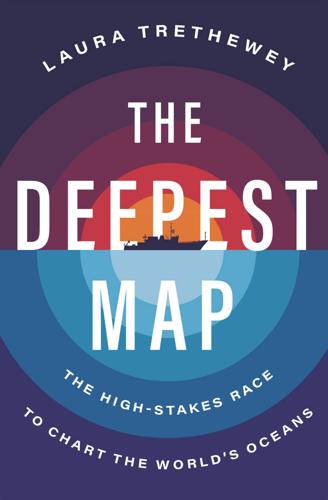
The Deepest Map
by
Laura Trethewey
Published 15 May 2023
-China Economic and Security Review Commission, September 9, 2020, 3, https://www.uscc.gov/sites/default/files/2020-09/Hayton_Testimony.pdf. 10.Ivan Watson, Brad Lendon, and Ben Westcott, “Inside the Battle for the South China Sea,” CNN, August 2018, https://www.cnn.com/interactive/2018/08/asia/south-china-sea/. 11.Luc Cuyvers et al., Deep Seabed Mining: A Rising Environmental Challenge (Gland, Switzerland: IUCN and Gallifrey Foundation, 2018), 32. 12.Vo Kieu Bao Uyen and Shashank Bengali, “Sunken Boats. Stolen Gear. Fishermen Are Prey as China Conquers a Strategic Sea,” Los Angeles Times, November 12, 2020, https://www.latimes.com/world-nation/story/2020-11-12/china-attacks-fishing-boats-in-conquest-of-south-china-sea. 13.Hayton, The South China Sea, 113. 14.Max Fisher, “The South China Sea: Explaining the Dispute,” New York Times, July 14, 2016, https://www.nytimes.com/2016/07/15/world/asia/south-china-sea-dispute-arbitration-explained.html. 15.Hayton, “The South China Sea in 2020,” 2. 16.Zachery Haver, “China Trademarked Hundreds of South China Sea Landmarks,” BenarNews, April 13, 2021, https://www.benarnews.org/english/news/philippine/sea-trademarks-04132021172405.html. 17.Yukie Yoshikawa, “The US-Japan-China Mistrust Spiral and Okinotorishima,” Asia-Pacific Journal 5, no. 10 (October 1, 2007): article 2541, https://apjjf.org/-Yukie-YOSHIKAWA/2541/article.html. 18.Norimitsu Onishi, “Japan and China Dispute a Pacific Islet,” New York Times, July 10, 2005, https://www.nytimes.com/2005/07/10/world/asia/japan-and-china-dispute-a-pacific-islet.html. 19.Hayton, The South China Sea, 262. 20.Sung Hyo Hyun, “The Geomorphic Characteristics and Naming of Undersea Feature in the East Sea, Korea,” in The 14th International Seminar on Sea Names Geography, Sea Names, and Undersea Feature Names (Tunis Ville, Tunisia: Society for East Sea, 2008). 21.F.
…
In a world where only a quarter or so of the ocean floor is accurately mapped, knowing more about the uncharted terrain than your enemies still carries a military advantage. In 2021, the $3 billion nuclear submarine USS Connecticut collided with a seamount somewhere in the South China Sea, a hotly contested waterway in the Pacific. China has spent the last few decades building a case for claiming much of the South China Sea as its own, flouting international laws and customs arising during the millennia that Southeast Asian people have shared these waters. The United States regularly sends naval warships through the South China Sea as a way of asserting its commitment to freedom of navigation on the high seas, but the submarine crash revealed that the US Navy is probably doing a lot more than that under the surface.
…
Fishermen Are Prey as China Conquers a Strategic Sea,” Los Angeles Times, November 12, 2020, https://www.latimes.com/world-nation/story/2020-11-12/china-attacks-fishing-boats-in-conquest-of-south-china-sea. 13.Hayton, The South China Sea, 113. 14.Max Fisher, “The South China Sea: Explaining the Dispute,” New York Times, July 14, 2016, https://www.nytimes.com/2016/07/15/world/asia/south-china-sea-dispute-arbitration-explained.html. 15.Hayton, “The South China Sea in 2020,” 2. 16.Zachery Haver, “China Trademarked Hundreds of South China Sea Landmarks,” BenarNews, April 13, 2021, https://www.benarnews.org/english/news/philippine/sea-trademarks-04132021172405.html. 17.Yukie Yoshikawa, “The US-Japan-China Mistrust Spiral and Okinotorishima,” Asia-Pacific Journal 5, no. 10 (October 1, 2007): article 2541, https://apjjf.org/-Yukie-YOSHIKAWA/2541/article.html. 18.Norimitsu Onishi, “Japan and China Dispute a Pacific Islet,” New York Times, July 10, 2005, https://www.nytimes.com/2005/07/10/world/asia/japan-and-china-dispute-a-pacific-islet.html. 19.Hayton, The South China Sea, 262. 20.Sung Hyo Hyun, “The Geomorphic Characteristics and Naming of Undersea Feature in the East Sea, Korea,” in The 14th International Seminar on Sea Names Geography, Sea Names, and Undersea Feature Names (Tunis Ville, Tunisia: Society for East Sea, 2008). 21.F.

The Long Game: China's Grand Strategy to Displace American Order
by
Rush Doshi
Published 24 Jun 2021
China proposed requiring prior notification of all joint exercises and allowing observer participation—requirements that effectively only applied to the United States as the main state conducting joint exercises, and succeeded in inserting prior notification into the 2002 Declaration of Conduct of Parties in the South China Sea.128 China also called for states to cease surveillance of one another, which again principally applied to US maritime surveillance.129 It used discussions over the South China Sea as “a means to restrict US Naval exercises in the area” by proposing a ban on South China Sea military exercises—targeting recently restarted US-Philippine exercises in particular. China argued that a proposed ASEAN maritime information center be placed in Tianjin, which could have given China influence over information provision.130 China pressured states not to join Washington’s post-9/11 Regional Maritime Security Initiative (RMSI), which involved using US Special Forces, new bases in Malaysia, and high-speed vessels to secure the Malacca Straits from terrorist attack and piracy.131 Seeing this effort as part of a containment plan, China suggested an alternative eleven-nation joint China-ASEAN patrol to secure the sea lines.132 China even suggested that “bilateral agreements between ASEAN countries and outside powers,” such as alliances with the United States, should not supersede multilateral ones made through ASEAN that might limit alliance cooperation or participation in RMSI.133 Finally, China was the first nuclear state to support ASEAN’s interest in nuclear weapons-free zones in Southeast Asia, which if successful, could have complicated US efforts to station strategic nuclear forces or nuclear-equipped vessels and aircraft in the region, thereby limiting US freedom of maneuver without affecting China, which did not deploy such forces abroad.134 Finally, China sought to reassure ASEAN states to prevent its encirclement.
…
“From the perspective of what was needed to protect China’s maritime rights and interests, recover Nansha and Taiwan, and deal with other strategic circumstances,” he notes in his memoir, the members “recommended constructing an aircraft carrier.”153 Liu further noted that, without an aircraft carrier, it would be difficult to secure Chinese interests with surface vessels alone, telling the PLA General Staff in 1987 that: “when thinking about maritime formations, we had only considered destroyers, frigates, and submarines; after further research, we realized that without air cover, there was no way these formations would be able to fight outside the radius of shore-based combat aircraft,” and that even within the range of shore-based aircraft, air cover would simply not reach quickly enough in times of crisis.154 The military was convinced carriers were useful not only for conflicts in the distant South China Sea, but also much closer in the Taiwan Strait. Liu wrote that the PLA General Staff looked favorably upon his report and escalated the question of carrier acquisition, all of which suggests that at least as early as 1987, a Chinese focus on narrower local operational contingencies should have included an aircraft carrier. In 1995, Liu in a high-level meeting on aircraft carriers stated that “Defending the South China Sea, peacefully reuniting Taiwan, safeguarding maritime rights and interests—all require aircraft carriers.”155 The fact that China thought carriers would be useful in regional contingencies means that theories of Chinese investment focused on regional considerations cannot account for the delay in building carriers.
…
Zhang Yunling writes that joining multilateral organizations allowed China to “demonstrate its benign intentions by exercising self-restraint and displaying a willingness to be restrained” and, crucially, that “this idea has led directly to actions such as not devaluing the Renminbi during the 1997 Asian Financial Crisis, joining the TAC-SEA [an ASEAN document], and largely letting ASEAN states dictate the norms regarding the South China Sea dispute.”20 Similarly, a book from the Central Party School Press summarizing China’s foreign policy strategy indicates China pursued a policy of self-constraint (自我约束) and “accepting constraint” from others in these bodies (接受约束) to reassure neighbors and confirms that multilateral concessions—like signing an ASEAN South China Sea Code of Conduct—were part of this strategy.21 In another article, Zhang Yunling makes clear that this “good neighbor policy” was part of a grand strategy to blunt American encirclement: China has pursued a strategy of maintaining amicable relationships with neighbors (mulin youhao, wending zhoubian) to hedge against downturns in Sino-U.S. relations.
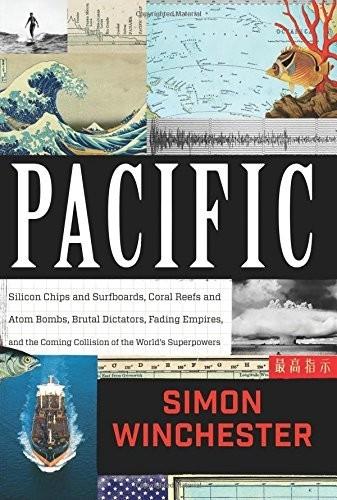
Pacific: Silicon Chips and Surfboards, Coral Reefs and Atom Bombs, Brutal Dictators, Fading Empires, and the Coming Collision of the World's Superpowers
by
Simon Winchester
Published 27 Oct 2015
Just for now, rhetoric was the only weapon China was using in the region, with hostile declarations made at conferences, fierce rhapsodies published in the government press, claims to historical rights, and predictions of a glorious and laowei-free—a foreigner-free—future offered in schools to Chinese children. Yet in the South China Sea (one and a half million square miles of shipping lanes and oil and gas fields and untold seafloor mining possibilities), more than mere rhetoric is being employed, and a flash point is being born, a danger to all. For at the heart of the new South China Sea problem is another demarcation zone made up of scores of tiny islands that constitute what since 1947 has been known to the Chinese as, somewhat bizarrely, the Nine-Dash Line.
…
Yet another piece of Chinese sovereign territory is being manufactured in full public view, and one day, in all likelihood, it will be defended at all costs, by all and any means.7 It was once assumed that China’s steady encroachments were predicated on the oil and gas reserves that lie beneath the South China Sea. Such is no longer the principal reason. Nowadays it is much simpler: the Chinese want all the green waters, all of what they call “the near sea” within the First Island Chain, to be free of interlopers. They know also that “might is right,” and with stealth and determination, they can keep away those who are not welcome, and thus protect themselves, creating, as Shakespeare remarked of Richard II’s England, a “fortress built by Nature for herself Against infection and the hand of war.” The Americans dislike the way the South China Sea is currently being carved up, with so much to China’s unilateral benefit.
…
CHAPTER 10: OF MASTERS AND COMMANDERS Three books in particular set the scene for the current Chinese expansion of influence in the far western Pacific and the fretfulness it is causing in Washington: Bill Hayton’s The South China Sea; Robert Haddick’s Fire on the Water; and, by the always reliable Robert Kaplan, Asia’s Cauldron. However, the situation in the region is changing so rapidly that all these studies are in danger of becoming dated—so that interested readers would do well to monitor the near-constant streams of publications from such bodies as the Center for Strategic and International Studies, the Asia Society, and the International Crisis Group, among others, to keep properly abreast. The International Crisis Group Paper 229 (2012), “Stirring Up the South China Sea,” presents useful background; and for truly ultra-deep background, there are always new editions available of Alfred Mahan’s classic The Influence of Sea Power upon History, 1660–1783—essential reading for those who might be curious about how these new naval challenges are likely to play themselves out.
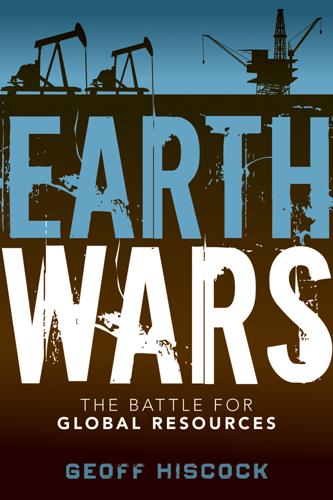
Earth Wars: The Battle for Global Resources
by
Geoff Hiscock
Published 23 Apr 2012
Now, keeping the sea lanes into Hong Kong, Shenzhen, Guangzhou, and other Chinese ports open and free from piracy or terrorism is something of critical importance to China and its trading partners. All of this makes the South China Sea one of the most strategically important stretches of water in the world, particularly when it comes to the oil tankers and specialised bulk carriers that bring energy resources and other raw materials to China, Japan, South Korea, and Taiwan. As much as a third of the world’s traded crude oil passes through these waters. China says it wants peaceful, cooperative, and mutually beneficial relations with its neighbours in the South China Sea, but rich fishery stocks and potential energy reserves make this area a place of ongoing tension.
…
A sample of the rhetoric that prevails comes from this editorial commentary in China’s state-controlled Global Times newspaper on 21 June 2011: Vietnam has been taking risky actions in the South China Sea for some time. It has occupied 29 Chinese islands. It has been gaining the most benefits from undersea natural gas and oil exploitation. It is also the most aggressive in dealing with China . . . China has to send a clear message that it will take whatever measures necessary to protect its interests in the South China Sea. If Vietnam continues to provoke China in this region, China will first deal with it with maritime police forces, and if necessary, strike back with naval forces.8 Vietnam controls the largest number of islands in the Spratlys group, which is situated between Vietnam and the western coasts of the Philippines, Brunei, and Malaysia’s Sabah and Sarawak states on Borneo.
…
They dropped pieces of wood in the water directly in front of Impeccable’s path. The incident took place in international waters in the South China Sea, about 75 miles south of Hainan Island. It was preceded by days of increasingly aggressive conduct by Chinese vessels.10 Chinese Foreign Ministry spokesman Ma Zhaoxu (10 March 2009): China has lodged a solemn representation to the United States as the USNS Impeccable conducted activities in China’s special economic zone in the South China Sea without China’s permission. We demand that the United States put an immediate stop to related activities and take effective measures to prevent similar acts from happening.
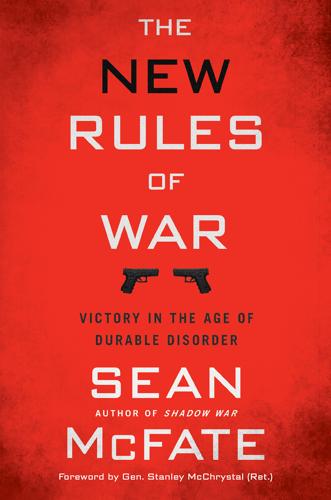
The New Rules of War: Victory in the Age of Durable Disorder
by
Sean McFate
Published 22 Jan 2019
“I second that,” says the air force pilot with a smirk. “So how does that apply to the South China Sea?” I ask. “There’s only so much the US can and should do,” the SEAL says. Some students nod while others shake their heads. “China is a rising superpower and we’re the reigning one. War is inevitable.” “No, it’s not.” This debate continues for a while, until it fizzles. Where else can it go? The conversion turns back to the South China Sea, and everyone looks at the floor, stumped. “The problem is that victory in the South China Sea is like finding a needle in a haystack when every problem looks like hay.”
…
Versions of this conversation have echoed across Washington for over a decade. Not much has changed, other than more Chinese islands in the South China Sea. Whatever the United States is doing, it’s not working. China is fighting in the twenty-first century, whereas America is stuck in the twentieth. The Three Warfares strategy conquers with a creeping expansionism designed to remain below the United States’ threshold of “war,” knowing that America will remain inert if at “peace.” By viewing the South China Sea as a traditional military battlefront, the United States falls into China’s strategic trap. Nonwar war is paradoxical to conventional war thinkers, and seeing them contemplate it is like watching a dog trying to pick up a basketball.
…
E., 95 CARITAS, 136 “Cartel,” 177 Carter, Jimmy, 212 Cassandra’s Curse, 20 Cathar Crusade, 127 Cesena massacre, 27 Chamber of Commerce, U.S., 66–67 Chechens (Chechnya), 8, 96–97, 207 China legal warfare (“lawfare”), 68–69 media warfare, 67–68 Opium Wars, 180 South China Sea, 37, 56, 63, 65, 71–73, 245 South China Sea incident of 2017, 59–63 “Three Warfares” strategy, 64–70, 73, 203 Tibet annexation, 97 China Central Television network (CCTV), 67–68 China National Petroleum Corporation, 136 Christian militia, 144–45 Churchill, Winston, 240 CIA (Central Intelligence Agency) Guatemalan coup d’état, 208–11 Liberian Civil War, 116–17 shadowy manipulations, 211–12 “Title 50” programs, 110 war futurists and, 13–14 Citizenship, 98–100 Citizens United v.

China's Good War
by
Rana Mitter
An occasion commemorating the Second World War was being used, in effect, to create new partnerships, while bolstering myths about the old ones. The South China Sea Dispute The South China Sea dispute is probably the single most prominent territorial conflict in which China has been engaged in recent decades. I will not go into the complexities of the dispute here, which continue to be the subject of extensive political as well as academic debate.26 (In broad outline, the argument concerns China’s claim of sovereignty over the majority of the South China Sea and a number of island groups in it, including the Paracel and Spratly Islands, a claim strongly resisted by several Southeast Asian nations.)
…
He Na, “New Figures Reveal Chinese Casualties,” China Daily, 15 July 2015, makes the case for thirty-five million casualties (dead and wounded) over a fourteen-year war. 26. See Bill Hayton, The South China Sea: The Struggle for Power in Asia (New Haven, CT, 2014), for an insightful account of the disputes. 27. Stephen Chen, “China’s Claims in South China Sea ‘Proposed by Continuous Boundary for the First Time,’ ” South China Morning Post, 22 Apr. 2018. 28. Chen Qianping, “The Nationalist Government’s Efforts to Recover Chinese Sovereignty over the Islands in the South China Sea after the End of World War Two,” Journal of Modern Chinese History, 11, no. 1 (2017), 73. 29. China’s resistance was, in some ways, similar to that of France, although Nationalist and Communist China resisted rather longer than the equivalent French states did. 30.
…
I will not go into the complexities of the dispute here, which continue to be the subject of extensive political as well as academic debate.26 (In broad outline, the argument concerns China’s claim of sovereignty over the majority of the South China Sea and a number of island groups in it, including the Paracel and Spratly Islands, a claim strongly resisted by several Southeast Asian nations.) One particular element of the dispute, however, relates directly to China’s postwar circumstances: the Nationalists’ drawing up of a line of control in the South China Sea in 1946–1947, sometimes known as the “nine-dash” line because of its original representation as a series of dashes on the map. Discussions about the South China Sea are not generally connected to the history of the Second World War, not least because Japan is not a direct participant in the current controversy. But recent arguments surrounding this dispute have been tied to the territorial claims made by Chiang Kai-shek’s government as it sought to reshape the region after 1945.27 As in other cases, academic historiography has worked in tandem with the changing atmosphere in international relations.
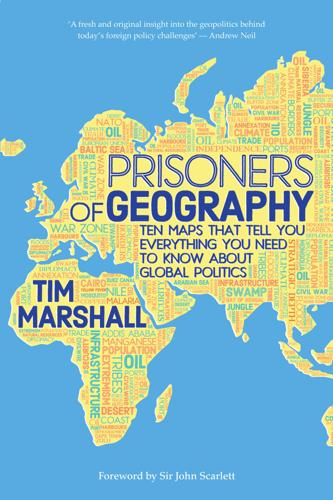
Prisoners of Geography: Ten Maps That Explain Everything About the World (Politics of Place)
by
Tim Marshall
Published 10 Oct 2016
While it works on this problem it is deploying anti-submarine ships and is busy installing a network of underwater sensors in the East and South China Seas. Between China and the Pacific is the archipelago that Beijing calls the “first island chain.” There is also the “nine-dash line,” more recently turned into ten dashes in 2013 to include Taiwan, which China says marks its territory. This dispute over ownership of more than two hundred tiny islands and reefs is poisoning China’s relations with its neighbors. National pride means China wants to control the passageways through the chain; geopolitics dictates it has to. It provides access to the world’s most important shipping lanes in the South China Sea. In peacetime the route is open in various places, but in wartime it could very easily be blocked, thus blockading China.
…
All of the states along the strait, and near its approaches, are anxious about Chinese dominance and most have territorial disputes with Beijing. China claims almost the entire South China Sea, and the energy supplies believed to be beneath it, as its own. However, Malaysia, Taiwan, Vietnam, the Philippines, and Brunei also have territorial claims against China and one another. For example, the Philippines and China argue bitterly over the Mischief Islands, a large reef in the Spratly Islands in the South China Sea, which one day could live up to their name. Every one of the hundreds of disputed atolls, and sometimes just rocks poking out of the water, could be turned into a diplomatic crisis, as surrounding each rock is a potential dispute about fishing zones, exploration rights, and sovereignty.
…
The maps of the region that the Chinese now print show almost the whole of the South China Sea as theirs. This is a statement of intent, backed by aggressive naval patrols and official statements. Beijing intends to change its neighbors’ ways of thinking and to change America’s way of thinking and behaving—pushing and pushing an agenda until its competitors back off. At stake here is the concept of international waters and free passage in peacetime; it is not something that will easily be given up by the other powers. The geopolitical writer Robert D. Kaplan expounds the theory that the South China Sea is to the Chinese in the twenty-first century what the Caribbean was to the United States at the beginning of the twentieth century.
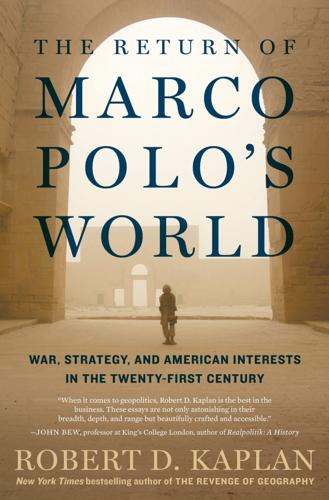
The Return of Marco Polo's World: War, Strategy, and American Interests in the Twenty-First Century
by
Robert D. Kaplan
Published 6 Mar 2018
Remember the overarching theme of this essay: the tightly wound interconnectedness of weakening states and faded empires across Eurasia. The world of the digital age is like a taut web. Tweak one string and the whole network vibrates. This means a flareup in the Baltic or South China Sea is not only about the Baltic or South China Sea. Nothing is local anymore. Connectivity itself magnifies the effect of military miscalculation. The Peloponnesian War that engulfed all of Greece had its origins in relatively minor conflicts involving Corcyra and Potidaea, which helped drive tensions between Athens and Sparta to the breaking point.
…
Obviously, transportation infrastructure will not defeat geography. Indeed, the very expense of building such infrastructure in many places demonstrates the undeniable fact of geography. Anyone in the energy exploration business, or who has participated in a war game involving the Baltic states or the South China Sea, knows just how much old-fashioned geography still matters. At the same time, critical transportation infrastructure constitutes yet another factor making geography—and, by inference, geopolitics in our era—more oppressive and claustrophobic. To be sure, connectivity, rather than simply leading to more peace, prosperity, and cultural uniformity as techno-optimists like to claim, will have a much more ambiguous legacy.
…
His return route to Venice would take him across the Indian Ocean: through the Strait of Malacca to Sri Lanka, up India’s western coast to Gujarat, and on side trips to Oman, Yemen, and East Africa. If the early-twenty-first-century world has a geopolitical focus, this would be it: the Greater Indian Ocean from the Persian Gulf to the South China Sea, and including the Middle East, Central Asia, and China. The current Chinese regime’s proposed land-and-maritime Silk Road duplicates exactly the one Marco Polo traveled. This is no coincidence. The Mongols, whose Yuan Dynasty ruled China in the thirteenth and fourteenth centuries, were, in fact, “early practitioners of globalization,” seeking to connect the whole of habitable Eurasia in a truly multicultural empire.
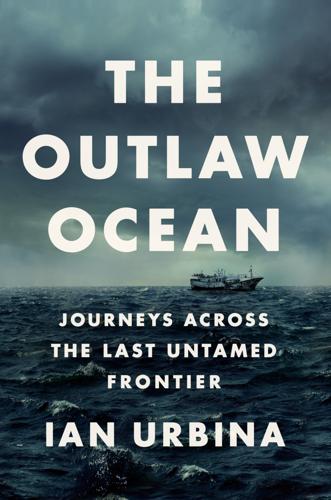
The Outlaw Ocean: Journeys Across the Last Untamed Frontier
by
Ian Urbina
Published 19 Aug 2019
* * * · · · “I wish I had never seen it,” said the security guard Som Nang, describing what he had witnessed hundreds of miles from shore. In late 2013, Som Nang embarked on his maiden voyage on a boat that resupplied fishing vessels in the South China Sea. After four days on the water, Som Nang’s ship pulled up alongside a dilapidated Thai-flagged trawler. A Thai fishing ship in the South China Sea At the front of the trawler, a shirtless, emaciated man huddled with a rusty metal shackle around his bruised neck and a three-foot chain anchoring the collar to a post on the deck. The man had tried to escape the boat, the captain of the fishing vessel later explained, so he locked the metal collar on the man and chained him up every time another ship drew near.
…
Pudjiastuti’s assault on illegal fishing did not please everyone, least of all China. A major investor in Indonesia, China had become an increasingly aggressive maritime player—not only globally, but especially in the South China Sea, where overfishing had exhausted catches close to shore. Economic growth in China pushed it to look to the sea for new oil and gas reserves. Both of these pressures had led China to claim sovereignty over rocks, shoals, and reefs throughout the South China Sea. Generally, China had tried to avoid armed clashes, relying instead on its civilian maritime force—in other words, its million-boat fishing fleet—to establish its foothold in the region.
…
“That is a diplomatic negotiation now,” he said curtly. In the days after the confrontation, I emailed James Kraska, an international law professor at the U.S. Naval War College in Rhode Island and an expert on the South China Sea. I sent him the coordinates of where the clash occurred and asked him whose waters those were. “Impossible to say,” he replied. Countries have to agree on where to draw these lines, he said. In the South China Sea, Indonesia and Vietnam have never come to such an agreement, he explained. That the borders were such a gray area was a surprise. During the confrontation, Samson had been so confident about the Macan’s location.
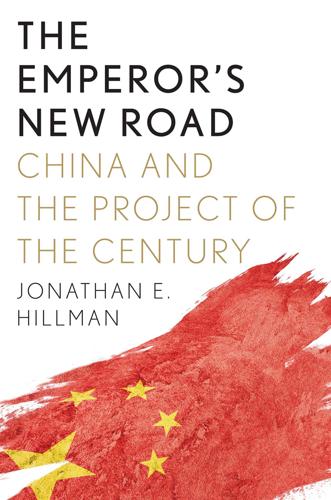
The Emperor's New Road: How China's New Silk Road Is Remaking the World
by
Jonathan Hillman
Published 28 Sep 2020
Chinese officials have taken an expansive view of China’s territorial claims in the South China Sea, resisting attempts to negotiate territorial disputes multilaterally and disregarding rulings by international tribunals. In 2010, during an annual ASEAN security forum, China’s foreign minister, Yang Jiechi, stormed out after Secretary of State Hillary Clinton challenged China’s claims. He returned with an aggressive message for the ASEAN countries: “China is a big country and other countries are small countries, and that’s just a fact.”7 China’s actions in the South China Sea have been even more alarming than its words. Where the facts on the ground have not suited its position, China has changed the ground.
…
Owen Lattimore, “Yunnan, Pivot of Southeast Asia,” Foreign Affairs 21, no. 3 (1943): 476–493. 7. John Pomfret, “U.S. Takes a Tougher Tone with China,” Washington Post, July 30, 2010, http://www.washingtonpost.com/wp-dyn/content/article/2010/07/29/AR2010072906416.html. 8. Eleanor Ross, “How and Why China Is Building Islands in the South China Sea,” Newsweek, March 29, 2017, https://www.newsweek.com/china-south-china-sea-islands-build-military-territory-expand-575161. 9. Mission of Japan to the Association of Southeast Asian Nations, “Japan’s Cooperation on ASEAN 2025 (Connectivity),” May 2016, https://www.asean.emb-japan.go.jp/asean2025/jpasean-ec03.html. 10. Yukio Tajima, “Abe Softens Tone on Indo-Pacific to Coax China’s ASEAN Friends,” Nikkei Asian Review, November 13, 2018, https://asia.nikkei.com/Politics/International-Relations/Abe-softens-tone-on-Indo-Pacific-to-coax-China-s-ASEAN-friends. 11.
…
Its overland and maritime ambitions converge in South and Southeast Asia, where it faces fierce competition from regional powers. Australia, Japan, India, and the United States are all working to provide alternatives to Chinese investment. Still, China is often its own worst enemy. Where the facts on the ground have not suited its position, it has changed the ground, creating artificial islands in the South China Sea and militarizing them with runways and missiles. Most countries want China’s investment and trade but find its increasingly aggressive behavior alarming. China’s partners might be smaller, but they are no less savvy. Many have far more experience dealing with outside powers than China has experience acting as one.
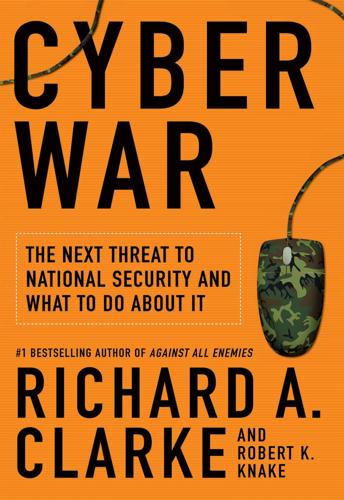
Cyber War: The Next Threat to National Security and What to Do About It
by
Richard A. Clarke
and
Robert Knake
Published 15 Dec 2010
The trite answer one often hears is that China may find itself forced to stop Taiwan from implementing a declaration of independence. When serious analysts weigh the prospects of open conflict with China, however, they see it playing out over the open waters of the South China Sea. The Spratly Islands are not exactly a tourist destination. They are not exactly islands. If all were piled up together, the reefs, sandbars, and rocks in the South China Sea would amount to less than two square miles of land. That two square miles of land is spread out over more than 150,000 square miles of ocean. It’s not the islands that China, Vietnam, Taiwan, Malaysia, the Philippines, and Brunei are feuding over, but what is under them and around them.
…
U.S. intelligence then learns that the Chinese are loading up their South Sea Fleet for an amphibious landing on disputed islands in the South China Sea. Cyber Command is asked by the Pentagon to buy some time, to slow down the Chinese landings by disrupting the troops and supplies getting ready to load up on the ships still in port. The Chinese South Sea Fleet is headquartered in Zhanjiang, on the Leizhou Peninsula, and its air force supporting operations in the South China Sea is on Hainan, in the Tonkin Gulf. The Fleet Headquarters and the Naval Air Base do not have their own electric grid; they are connected to the public power system.
…
Or, if you have a highly rational actor on the other side, they’ll understand that the stakes are getting too high and they stand to suffer even more serious losses if things continue. In Exercise South China Sea, the PLA decided to engage in escalation dominance. In response to a cyber attack on the power grid in southeastern China, they not only hit the West Coast power grid, they disrupted the global Defense Department intranet, damaged the databases of U.S. financial clearinghouses, and sent additional kinetic warfare units into the crisis zone in the South China Sea. As the game continued, the U.S. leadership had to decide quickly whether it stood to lose more than China in the next round of cyber war escalation.
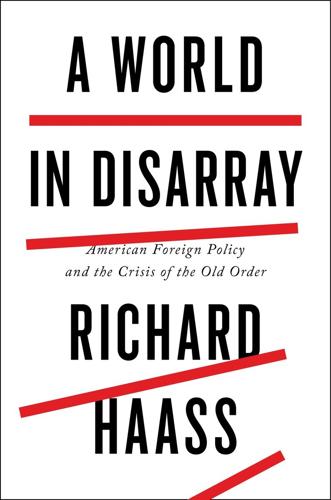
A World in Disarray: American Foreign Policy and the Crisis of the Old Order
by
Richard Haass
Published 10 Jan 2017
Patrick, “Everyone Agrees: Ratify the Law of the Sea,” The Internationalist (blog), CFR.org, June 8, 2012, http://blogs.cfr.org/patrick/2012/06/08/everyone-agrees-ratify-the-law-of-the-sea/; and Thomas Wright, “Outlaw of the Sea: The Senate Republicans’ UNCLOS Blunder,” ForeignAffairs.com, August 7, 2012, www.foreignaffairs.com/articles/oceans/2012-08-07/outlaw-sea. 12. It is for this reason that China’s rejection of the ruling administered by the Permanent Court of Arbitration on the South China Sea in July 2016 was to be expected. See “Press Release: The South China Sea Arbitration,” The Hague, July 12, 2016, Permanent Court of Arbitration, https://assets.documentcloud.org/documents/2990864/Press-Release-on-South-China-Sea-Decision.pdf; and “Full Text of Statement of China’s Foreign Ministry on Award of South China Sea Arbitration Initiated by Philippines,” Xinhua, July 12, 2016, http://news.xinhuanet.com/english/2016-07/12/c_135507744.htm. 11.
…
Campbell, Xi Jinping on the Global Stage: Chinese Foreign Policy Under a Powerful but Exposed Leader, Council on Foreign Relations Special Report No. 74 (New York: Council on Foreign Relations Press, 2016). 8. Fu Ying and Wu Shicun, “South China Sea: How We Got to This Stage,” National Interest, May 9, 2016, http://nationalinterest.org/feature/south-china-sea-how-we-got-stage-16118. 9. Basic information about the Asian Infrastructure Investment Bank can be found at its Web site, www.aiib.org. 10. See Xi Jinping, The Governance of China (Beijing: Foreign Languages Press, 2014), 306–8; and Fu Ying, “The US World Order Is a Suit That No Longer Fits,” Financial Times, January 6, 2016, www.ft.com/intl/cms/s/0/c09cbcb6-b3cb-11e5-b147-e5e5bba42e51.html. 11.
…
Greece and its various creditors were having difficulty arriving at a formula by which new loans could be extended; the risk was a crisis that would begin but not necessarily be contained within Greece and the Eurozone. The prospect of Brexit raised existential questions for the future of both the United Kingdom and Europe. Seventy years after the end of the war in the Pacific, China was expanding its claims in the South China Sea amid growing nationalism and tensions in a region characterized by numerous territorial disputes and much historical bitterness. Internally, Chinese authorities, fearing the political fallout of a slowing economy, were cracking down politically and intervening in currency and stock markets alike.
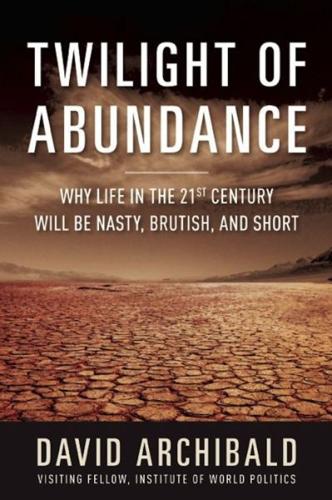
Twilight of Abundance: Why the 21st Century Will Be Nasty, Brutish, and Short
by
David Archibald
Published 24 Mar 2014
Added into that mix are the nuclear weapons of Pakistan (a future failed state) and the ones that Iran is intent on making. China is a more formidable threat. A recent Pentagon report described China’s claim to the South China Sea as “enigmatic.” It is nothing of the sort. The claim is China’s way of grabbing its neighbors’ traditional fishing grounds and asserting hegemony in the region. China has become nasty and aggressive. It is the schoolyard bully who wants to pick a fight in order to get respect. Now the Chinese, having warned that they will seize any ships that cross the South China Sea without prior permission, can’t back down without losing face. Blood will be shed before the situation is resolved.
…
Their view of the world was confirmed by the global financial crisis of 2008, during which the Europeans begged to be bailed out of their predicament with Chinese money. That sealed the deal in terms of their contempt for foreign cultures that are far more self-indulgent than China’s. In fact, China’s harsher tone toward the West dates from 2008. THE SOUTH CHINA SEA China has attempted to seize the South China Sea as far south as the Natuna Islands, part of Indonesia. The Chinese claim bumps up against the coast of Borneo. The area has been almost completely uninhabited because there was nothing worth staying for. No fishing settlements were there, so the fishing cannot be that attractive.
…
In short, there are no natural resources worth losing blood over. The claim is purely political. China plans to enforce its claim by building a large fleet of naval vessels badged as coast guard vessels. The United States does not recognize the Chinese claim and has stated that it will send naval ships through the South China Sea as usual. The practical effect for the nations of the South China Sea littoral—Vietnam, Malaysia, Indonesia, Brunei, and the Philippines—apart from loss of traditional fishing grounds, is a great inconvenience for shipping. A vessel sailing from Hanoi to Japan would have to travel a further 3,000 kilometers to avoid being seized in the Chinese claim area.
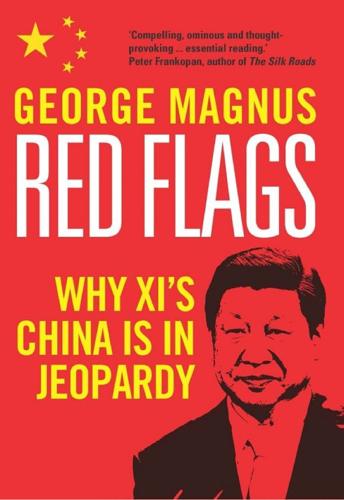
Red Flags: Why Xi's China Is in Jeopardy
by
George Magnus
Published 10 Sep 2018
John Hurley, Scott Morris and Gailyn Portelance, ‘Examining the Debt Implications of the Belt and Road Initiative from a Policy Perspective’, Center for Global Development, Policy Paper 121, March 2018, <https://www.cgdev.org/sites/default/files/examining-debt-implications-belt-and-road-initiative-policy-perspective.pdf>. 17. ‘5 Things About Fishing in the South China Sea’, Wall Street Journal, 19 July 2016, https://blogs.wsj.com/briefly/2016/07/19/5-things-about-fishing-in-the-south-china-sea/ 18. ‘How China Rules the Waves’, Financial Times, 12 January 2017, <https://ig.ft.com/sites/china-ports/>. 19. ‘Beijing Rejects Tribunal’s Ruling in South China Sea Case’, Guardian, 12 July 2016, <https://www.theguardian.com/world/2016/jul/12/philippines-wins-south-china-sea-case-against-china>. 20. ‘Priority Policy for Development Cooperation FY2017’, Ministry for Foreign Affairs, April 2017, <http://www.mofa.go.jp/files/000259285.pdf>. 21.
…
In the book, he emphasised the strategic and maritime significance to the US of what he called the ‘rimland’, or the countries and islands on the rim of the continental powers of the US, Europe and what was then the USSR. The geography of the rim ran from southern Europe and the Maghreb, east through the Persian Gulf, into the Indian Ocean, across to the South China Sea and up to Japan and the north west of China. Drawing attention to the population residing in the Asia-Pacific region in particular, along with its resources and industrial development potential, Spykman argued that whoever controlled this rimland would rule Eurasia, and the destiny of the world.
…
In any event, few companies are likely to establish majority stakes in Chinese financial companies soon, if at all, and most of the big trade deals announced were non-binding, and those that could happen will take years of negotiation. Sino–US relations, book-ended by these high-level meetings, became frostier. The US resumed arms sales to Taiwan, and periodically sent naval warships close to contested islands in the South China Sea. The relabelled Comprehensive Economic Dialogue ended without any substantive agreement, or the usual joint policy statements and press conferences. When the new vice premier and overall head of economic and financial affairs, Liu He, visited Washington in early 2018, partly to restart the dialogue talks, he returned home empty-handed.

The Future Is Asian
by
Parag Khanna
Published 5 Feb 2019
Asia is therefore much more than just “China plus.” Asia’s future is thus much more than whatever China wants. China is historically not a colonial power. Unlike the United States, it is deeply cautious about foreign entanglements. China wants foreign resources and markets, not foreign colonies. Its military forays from the South China Sea to Afghanistan to East Africa are premised on protecting its sprawling global supply lines—but its grand strategy of building global infrastructure is aimed at reducing its dependence on any one foreign supplier (as are its robust alternative energy investments). China’s launching the Belt and Road Initiative doesn’t prove that it will rule Asia, but it does remind us that China’s future, much like its past, is deeply embedded in Asia.
…
In 1995, fearing Taiwanese president Lee Teng-hui’s independence aspirations, China mobilized forces in Fujian province and conducted missile tests and amphibious exercises in the Taiwan Strait, with the United States responding by sending two aircraft carrier battle groups to compel it to back down. China did, however, regain sovereignty over Hong Kong from Great Britain in 1997 and Macao from Portugal in 1999, marking the formal disappearance of colonialism in Asia. During the mid-1990s, China also became more assertive in the South China Sea, prompting ASEAN to establish the ASEAN Regional Forum to bring China, the United States, Russia, Australia, and other powers under one diplomatic umbrella. ASEAN also expanded to include Vietnam in 1995 and Laos and Myanmar in 1997. Despite the tense regional atmosphere, China and South Korea began a dialogue with isolated North Korea, which had lost its Soviet patron.
…
When it comes to migration, colonialism’s lasting legacy has been to make Asia even more Asian. European empires from the Portuguese to the British moved Malay and Indian merchants and slaves by the millions across the greater Indian Ocean realm. Steamship ferry services across the Bay of Bengal and South China Sea galvanized regional migration. At the same time, the pan-Asian anticolonial movements of the nineteenth and twentieth centuries inspired Asians to rediscover a common spatial and political understanding of Asia. Though colonialism was a humiliating experience, it nonetheless provided a common layer on which Asians are now building a post-Western future.
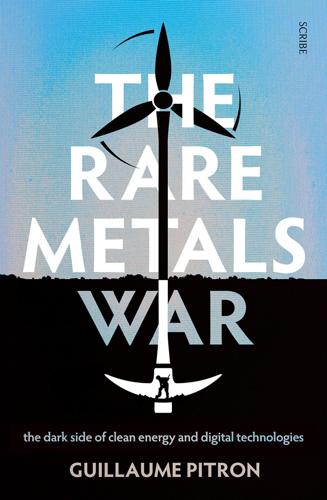
The Rare Metals War
by
Guillaume Pitron
Published 15 Feb 2020
The continued existence of the most sophisticated Western military equipment (robots, cyberweapons, and fighter planes, including the US’s supreme F-35 stealth jet) also partly depends on China’s goodwill. This has US intelligence leaders concerned, especially as one high-ranking US army officer states that ‘only war can now stop Beijing controlling the South China Sea’.19 This latest scramble for resources is already heightening tensions over ownership of the most abundant deposits, sparking territorial conflicts in peaceful backwaters apparently of interest to no one. Fuelling this thirst for rare metals are a burgeoning global population set to reach 8.5 billion by 2030, the boom in new modes of high-tech consumption, and the growing convergence of Western and emerging economies.20 By seeking to break free from fossil fuels and turn an old order into a new world, we are in fact setting ourselves up for a new and more potent dependence.
…
Either way, as stated by Peter Leitner, ‘The Clinton administration was heavily predisposed toward approving almost anything the Chinese wanted.’ Leitner also left me with an open question — one that would take months of investigation to clear up: were rare-earth magnets the essential thread in this tangle of corruption, cynicism, and a thirst for power? South China Sea: access denied Peter Leitner did make one thing clear: ‘The Chinese targeted Magnequench in order to advance their ability to produce long-range cruise missiles.’ The question is whether the technology they acquired formed part of the two ballistic missiles that were first revealed to the world during a spectacular military parade in Beijing in 2015: the Dongfeng-26 ballistic missile, capable of reaching the US base on the island of Guam, and the Dongfeng-21D anti-ship ballistic missile.
…
The question is whether the technology they acquired formed part of the two ballistic missiles that were first revealed to the world during a spectacular military parade in Beijing in 2015: the Dongfeng-26 ballistic missile, capable of reaching the US base on the island of Guam, and the Dongfeng-21D anti-ship ballistic missile. Nicknamed the ‘aircraft carrier killer’ and operational since 2010, the DF-21D has been central to Beijing’s policy of prohibiting access to the South China Sea these past few years. Having control over this strip of ocean running from its coasts to the south of Vietnam would increase China’s strategic leverage, and give it access to prodigious quantities of offshore hydrocarbon resources, as well as an eye on the comings and goings of half the world’s oil.
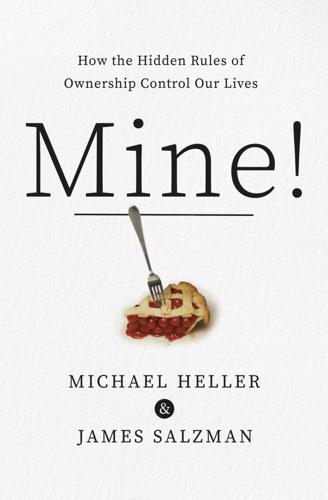
Mine!: How the Hidden Rules of Ownership Control Our Lives
by
Michael A. Heller
and
James Salzman
Published 2 Mar 2021
Today, though, China: Vince Beiser, “The Secret Ingredient to China’s Aggression? Sand,” New York Times, July 31, 2018. “Great Wall of Sand”: “A ‘Great Wall of Sand’ in the South China Sea” (editorial), Washington Post, April 8, 2015. ignore the claim: Sam LaGrone, “PACOM Harris: U.S. Would Ignore a ‘Destabilizing’ Chinese South China Sea Air Defense Identification Zone,” USNI News, February 26, 2016. “as its maritime empire”: Geoff Ziezulewicz, “U.S. Warship Sails Contested Waters in South China Sea After White House Rejects Maritime Claims There,” Navy Times, July 14, 2020. “unless Washington plans”: Mark Hanrahan, “China’s Global Times: Are Paper’s Warnings of War with U.S.
…
China’s strategy is similar to adverse possession, which we discussed in Chapter 2: lay claim to the newly inhabitable lands, then bootstrap that claim with attachment for the surrounding waters. U.S. Admiral Harry Harris has mocked the manufactured islands as the “Great Wall of Sand,” but it is no laughing matter. The South China Sea has rich fishing areas as well as oil and natural gas reserves. Perhaps most important, it provides one of the world’s most active shipping lanes, with over $5 trillion worth of goods passing through annually. The United States has warned China to stop creating islands in the South China Sea and repeatedly sent warships to the area. While no shots have been fired, the war of words between the United States and China has been escalating.
…
Secretary of State Rex Tillerson raised the possibility of a naval blockade of the manufactured islands—an action usually interpreted as an act of war. Three years later, Secretary of State Mike Pompeo stated that “The world will not allow Beijing to treat the South China Sea as its maritime empire.” The Chinese government-controlled newspaper, Global Times, has made the stakes clear, warning that “unless Washington plans to wage a large-scale war in the South China Sea, any other approaches to prevent Chinese access to the islands will be foolish.” Manufactured islands—plus expansive claims to attachment—are changing the global balance of power. Boo Boo, Dockers, and Tulip Attachment reaches not only above, below, and to the side, but also deeply into your home, as Natore Nahrstedt discovered to her dismay.
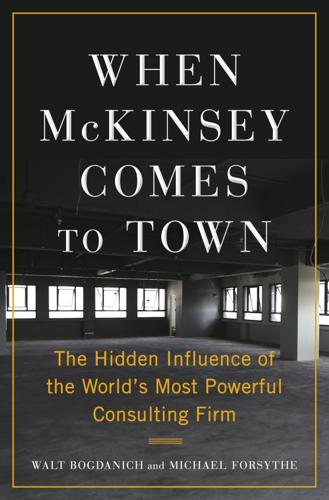
When McKinsey Comes to Town: The Hidden Influence of the World's Most Powerful Consulting Firm
by
Walt Bogdanich
and
Michael Forsythe
Published 3 Oct 2022
GO TO NOTE REFERENCE IN TEXT 5. Befriending China’s Government In late 2013 a fleet: Various blogs have published the position of the Tian Jing Hao in the South China Sea in late 2013 and into 2014, citing ship’s positioning data analyzed by IHS Jane’s. See garudamiliter.blogspot.com/2014/06/world-news-china-goes-all-out-with.html. For a description of the vessel and its ownership, see Charles Clover, “South China Sea Island-Maker Seeks Foreign Flotation,” Financial Times, June 11, 2015. GO TO NOTE REFERENCE IN TEXT The respected Jane’s Defence Weekly: James Hardy and Sean O’Connor, “China Completes Runway on Fiery Cross Reef,” IHS Jane’s Defence Weekly, Sept. 25, 2015.
…
GO TO NOTE REFERENCE IN TEXT In all, 702 people: “公司召开‘十三五’战略咨询视频会” (Company holds thirteenth five-year-plan strategic consulting video conference), China Communications Construction Company, Sept. 29, 2015, www.ccccltd.cn/xwzx/gsyw/201509/t20150929_41727.html [inactive]. GO TO NOTE REFERENCE IN TEXT In one incident: Luis Martinez, “Chinese Warship Came Within 45 Yards of USS Decatur in South China Sea: US,” ABC News, Oct. 1, 2018. GO TO NOTE REFERENCE IN TEXT A Washington think tank: Michael Forsythe, “Possible Radar Suggests Beijing Wants ‘Effective Control’ in South China Sea,” New York Times, Feb. 24, 2016. The think tank is the Center for Strategic and International Studies. GO TO NOTE REFERENCE IN TEXT “China, with its authoritarian system”: “SECNAV Nominee Del Toro’s Written Statements to the Senate,” USNI News, July 13, 2021.
…
Among the ships was the Tian Jing Hao, the largest dredger in Asia, capable of sucking more than a million gallons of sand an hour from the seafloor. Over two years, satellite photos tracked the reef’s transformation from an uninhabitable outcropping barely poking above the water’s surface into a 677-acre island. China’s government insisted that Fiery Cross, and a clutch of neighboring reefs turned islands in the South China Sea, wouldn’t be militarized. But on September 25, 2015, the world learned otherwise. The respected Jane’s Defence Weekly, using satellite photos, reported the completion of a 3.1-kilometer-long airstrip on the reef capable of handling long-range Chinese bombers. Missile systems would soon follow.
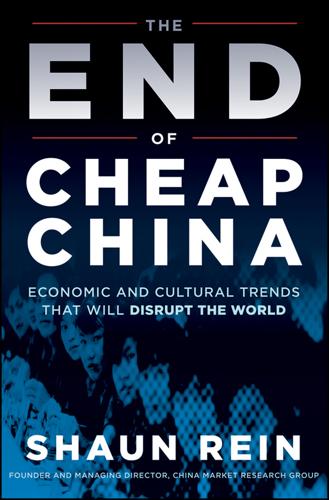
The End of Cheap China: Economic and Cultural Trends That Will Disrupt the World
by
Shaun Rein
Published 27 Mar 2012
They are demanding a more muscular Chinese military presence that is willing to flex its muscles to demonstrate to its neighbors and the rest of the world there is an end to American hegemony and a new world order. In 2011 China launched stealth airplanes and an aircraft carrier, and took a more aggressive and nationalistic stance in disputes with Japan and in the South China Sea with the Philippines and Vietnam. Although China historically does not have a history of straying far beyond its borders in military exercises, preferring to stay closer to its orbit, a meek, inwardly focused China is not a foregone conclusion as threats to its stability from internal issues diminish while threats from the outside rise.
…
One retired senior politician from America told me, “If China is increasing its trade volumes around the world, shouldn’t it be securing its own shipping lanes?” He was irritated because he felt China was freeloading on the U.S. Navy’s protection of maritime trade routes, but was taking an increasingly muscular stand in the South China Sea, causing anger in Vietnam and the Philippines. AMERICA On a trip to the United States in early 2011 to give a speech at the Wharton School of Business, I took my three-year-old son, Tom, to New York to see Times Square. I had heard about a major advertising campaign the Chinese government had launched on electronic billboards there to improve its image with the millions of tourists who pass through each year.
…
China as a new hegemonic power: One key element in the rise of any superpower is how it will enforce and display its newly acquired power. Will China try to force its ideology on the rest of the world, as most great powers, like the United States, try to do? Does its recent aggressive posturing with its neighbors, like the Philippines in the South China Sea and Japan, foreshadow a return to war, or are China’s words and military maneuvers simply a jockeying for power in a new world system, much as kids duke it out on the playground at the start of a school year? 2. Economic growth hitting a wall: Will China’s soaring economy ever stall? More and more analysts, even relatively bullish ones, wonder whether its economy can sustain its 10 percent annual growth.

Connectography: Mapping the Future of Global Civilization
by
Parag Khanna
Published 18 Apr 2016
Today many coastal nations claim exclusive economic zones stretching two hundred nautical miles from their shores, with dozens of overlapping claims causing legal friction and naval skirmishes. In navigating global waters for commercial gain, China is a reminder of Grotius and the Dutch. But when it comes to the South China Sea, China uses an audacious term even Selden would have blushed at: “blue soil.” While China has come late to the South China Sea waters in search of energy resources, it has been clever to focus its attention on areas already identified—and auctioned—by PetroVietnam to Exxon as well as Indian, Russian, and other companies that have long been operating under Vietnamese licenses.
…
Either way, if we opt for the tropical route, we’ll speed southward along the world’s most extensive high-speed rail network into mountainous Yunnan and its capital, Kunming. From there, we can cross directly into Laos and take in Vientiane before crossing into Thailand toward Bangkok, or take a coastal route along the South China Sea via Hanoi and Ho Chi Minh City in Vietnam and through Phnom Penh in Cambodia to Bangkok. Now the options narrow with the geography: we speed on down the Malay Peninsula to Kuala Lumpur and Singapore, the southernmost point on mainland Asia. But water hasn’t stopped us so far, so let’s continue by train through a tunnel under the strategic Strait of Malacca onto Indonesia’s largest island of Sumatra, then over the Sunda Strait bridge to reach the capital, Jakarta, on Java, the world’s most populous island with more than 150 million people.
…
It would be like America claiming the entire Caribbean to Venezuela’s coast as its own—which was indeed the gist of the early twentieth-century Roosevelt corollary to the Monroe Doctrine. But China’s aggressive maps and aerial defense identification zones are meant not to deny others’ usage of the South China Sea but rather to position itself to better harvest as much as possible of the estimated thirty trillion cubic meters of natural gas and ten billion barrels of oil deposited under disputed waters. China’s “use it or lose it” approach also involves installing brick-and-mortar airstrips, lighthouses, garrisons, signals stations, and administrative centers on neglected or abandoned islands in the Spratly and Paracel chains.*3 Fiery Cross Reef in the Spratly Islands has become the epicenter of what some call an “island factory” where large-scale sand dredging and land reclamation are used to build up and connect separate shoals into larger islands.
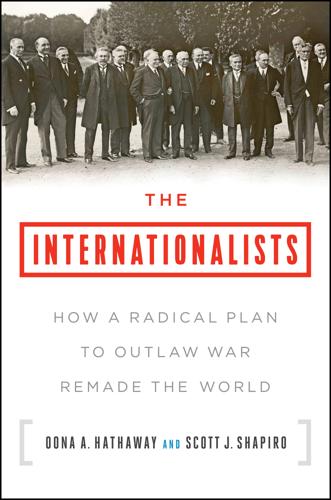
The Internationalists: How a Radical Plan to Outlaw War Remade the World
by
Oona A. Hathaway
and
Scott J. Shapiro
Published 11 Sep 2017
A very different route to territorial conflict occurs when land people did not care about—land that nobody bothered to lay firm claim to—suddenly becomes valuable. And nowhere has this been more true than in the archipelago of the South China Sea. Chances are good that if you look up from this book and gaze around, you will see several items that, in whole or in part, have passed through the South China Sea. Half of the world’s merchant fleet tonnage and a third of its crude oil passes through this waterway. That’s more than $5 trillion in shipborne trade per year. As goods make their way through the sea, they pass the coasts of Malaysia, Brunei, Philippines, Taiwan, China, Vietnam, Thailand, and Singapore, the same waterway traversed by the Santa Catarina when it was captured by Jacob van Heemskerck in 1603.11 The hundreds of tiny islands your goods passed were once close to worthless, rocky shoals that offered refuge to little more than resting wildlife and the occasional exhausted fisherman.
…
Even taken together, however, these losses were small: Italy’s noncolonial losses totaled just over 7,000 square kilometers—a small sliver of what was forfeited by those vanquished in the First World War. Japan, meanwhile, lost its colony of Korea, which it had held since 1910 and which became an independent state under joint U.S. and Soviet administration. Japan also withdrew its claims to a number of islands in the South China Sea (claims that had long been contested by its neighbors). Japan and Italy were far from alone in losing their colonial holdings, of course. Shortly after the war, France relinquished its claims to Syria. As the mandate that had been granted to the United Kingdom expired, Israel declared its independence—the first of what would soon become a tidal wave of such declarations by former colonies.
…
War raged in Korea from 1950 to 1953 and in Vietnam from 1955 to 1975. Genocidal conflicts erupted in Yugoslavia (now the former Yugoslavia) and Rwanda in the 1990s, and civil war ravaged Sudan for more than two decades. In 2014, the United States and China began playing a high-stakes game of chicken over islands in the South China Sea and many fear a war with China in the near future. And in 2015 alone, high-fatality civil wars continued in Nigeria, South Sudan, Yemen, Syria, Iraq, Afghanistan, Pakistan, Somalia, and Ukraine.1 Why, if war has been outlawed, is there still so much conflict? The answer is that these conflicts are not prohibited by the Pact.

Arriving Today: From Factory to Front Door -- Why Everything Has Changed About How and What We Buy
by
Christopher Mims
Published 13 Sep 2021
Five of us—one pilot, one sailor, two port executives, and me, ever the hapless, bespectacled journalist—shout at one another over the roar of the engine and the wind. We race a lazy current carrying lilies and the occasional glob of trash, tracing the river’s sinuous curves, headed for its terminus in the South China Sea. Jan Bandstra, a vigorous, middle-aged Dutchman who speaks “six or seven” languages and has managed ports in as many countries, observes that this must have been the same view American GIs had as they patrolled in PT boats, exchanging machine-gun fire with Vietcong hidden in the dense jungle that still lines both shores.
…
For Jeff, who is in some ways just a human fail-safe for automated systems that usually require no intervention, leaving Cai Mep is a change of tempo. It’s also the beginning of the most dangerous and hair-raising part of his regular circuit around the world. “There are no other places in the world that are busier than the South China Sea,” says Jeff. Here, the captain and every officer on watch must all be on high alert. Fishing boats, cargo ships of every size—from rusting old bulk carriers to the largest container ships afloat, “Post-Panamax” vessels carrying nearly twice the cargo on the Brussels—and assorted other flotsam litter the ship’s radar, the horizon, and all the sea between the sky and the bow of the ship.
…
Partly this is because many ships below a certain size do not have things like AIS to make plain where they are and where they’ll be in the near future. This means that, aside from showing up on radar, these ships are invisible to the electronic systems designed to connect ships to one another and to shore. Hence, on watch in the South China Sea, Jeff is constantly scanning the horizon with an old-fashioned pair of binoculars. As soon as he spots a ship—be it an unregistered derelict fishing vessel with unlicensed crew who are likely to be refugees conscripted into forced labor by unscrupulous employment agents, or a barge, or a pleasure craft—Jeff switches his attention to the radar, identifies which blip on the screen corresponds to the ship he’s spotted, and lets the onboard computer do the work of calculating the ship’s CPA, or closest point of approach, and the time it will occur.
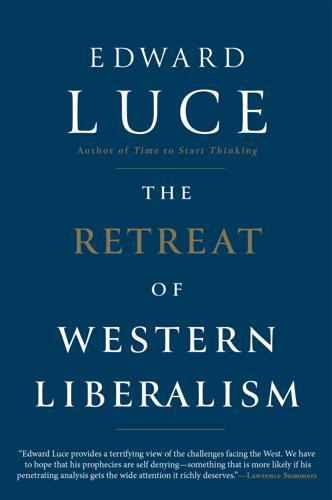
The Retreat of Western Liberalism
by
Edward Luce
Published 20 Apr 2017
The first big hint of an impending Sino-American showdown came at Rex Tillerson’s confirmation hearings for Secretary of State in January 2017. He broke with long-standing policy on the contested South China Sea by saying the US would deny China access to the disputed islands it claims – and on many of which it has built formidable military installations. This was a big rupture in America’s position, which had maintained formal neutrality in the South China Sea disputes but kept up freedom of navigation patrols through the sea’s international waters. Tillerson ripped all that up. China’s ‘access to those islands is not going to be allowed’, he told senators.
…
Looking back on it, of course, the war now seems to have been inevitable. Though Trump reluctantly endorsed a ‘One China’ stance a few weeks after taking office, and welcomed Xi Jinping to his ‘Winter White House’ at Mar-a-Lago two months after that, the genie was already out of the bottle. Indeed, with a US destroyer at the bottom of the South China Sea and large-scale US strikes on China’s naval bases, we can feel lucky it did not turn into a global conflagration. We have Vladimir Putin to thank for that. Who else had the credibility in both Beijing and Washington to broker a cessation of hostilities? Regardless of what we think of Putin’s ways, no one would begrudge Russia’s president the Nobel Peace Prize.
…
From now on, the Pentagon would split its assets equally between the Atlantic region and the Asia Pacific region. America’s global deployments had previously been distributed 60:40 in the Atlantic’s favour. The US would open new bases in Darwin, Australia, and the Philippines. Washington would also take a more robust stand on the disputed islands in the South China Sea – what Beijing calls the first island chain. Obama adopted a zero-sum position that set the US and China on a collision course. America would be committed to resolving the sovereignty dispute through international law. China would be just as committed to enforcing its unilateral claims to the islands.
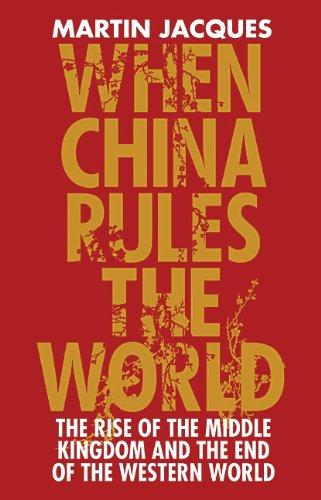
When China Rules the World: The End of the Western World and the Rise of the Middle Kingdom
by
Martin Jacques
Published 12 Nov 2009
Chinese legal scholars argue that: ‘a judicial fact must be appreciated in the light of the laws contemporary with it, rather than the laws in force at the time when a dispute arises.’92 This gives force and legitimacy to history rather than the present, to the laws that prevailed during the era of the tributary system rather than the present international legal system. Map 11. Chinese Claims in the South China Sea In 1984 Deng Xiaoping suggested ‘the possibility of resolving certain territorial disputes by having the countries concerned jointly develop the disputed areas before discussing the question of sovereignty’.93 In other words, the question of sovereignty should not necessarily delay moving forward on other issues. Deng’s remark has frequently been cited by Chinese sources in the context of the islands in the South China Sea, where his approach has in practice been followed, and in relation to the Diaoyu/Senkaku islands in the East China Sea that are disputed with Japan; it has also been suggested in connection with Taiwan.94 While insisting on their ultimate sovereignty over the latter, the Chinese have offered to shelve the matter more or less indefinitely, providing Taiwan does not seek to declare independence, illustrating the flexibility with which the Chinese are prepared to approach the issue.
…
The Qin dynasty - which, prior to its triumph, roughly coincided with the present north-west province of Shaanxi - eventually emerged victorious over six other kingdoms and succeeded in expanding its territory sixfold.21 During the 2,000 years that followed the Qin victory, China expanded southwards to the South China Sea, northwards to incorporate much of the steppe lands, and westwards into Central Asia. Far from this enormous geographical expansion being characterized by a natural process of fusion, peace and harmony, it predictably entailed much conflict and many wars.22 The growth of China is the story of the outward expansion of the northern Chinese.
…
At the ASEAN-China summit in 2003, China formally acceded to ASEAN’s Treaty of Amity and Cooperation - which committed China to the core elements of ASEAN’s 1967 Charter - the first non-ASEAN country to do so (India has since followed). In 2002 it also signed the Declaration on the Conduct of Parties in the South China Sea, which rejected the use of force in resolving the disputes over the Spratly and Paracel islands.27 These had been a serious and continuing source of tension between China on the one hand and Vietnam, Taiwan, the Philippines, Malaysia and Brunei on the other, culminating in military conflict with Vietnam28 and the Philippines.29 The agreements between ASEAN and China were to have a major impact on the political dynamics of East Asia.
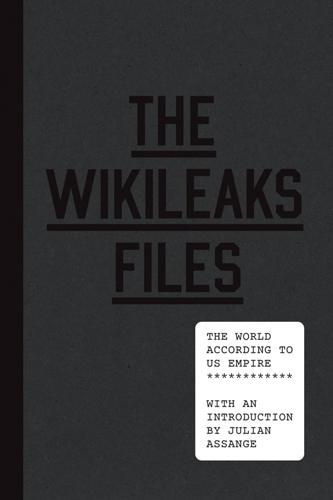
The WikiLeaks Files: The World According to US Empire
by
Wikileaks
Published 24 Aug 2015
During this period, China offered multi-billion-dollar trade and investment deals, largely focused on infrastructural development, and pushed for “joint-development” schemes in the South China Sea’s disputed geographical features, culminating in the tripartite Joint Maritime Seismic Undertaking agreement between the Philippines, China, and Vietnam. In a cable entitled “Joint Seismic Survey in South China Sea Makes Progress,” the American Embassy in Manila cautiously welcomed the agreement as a timely confidence-building measure on the part of disputing parties: The first phase of a joint seismic survey for hydrocarbon deposits undertaken by the national oil companies of the Philippines, China, and Vietnam in an 143,000 square kilometer zone of the South China Sea is near completion.
…
Eager to enhance strategic ties with Indonesia, Washington supported Jakarta’s integration into the G-20, arguably the world’s leading decision-making forum, and lavishly praised the Southeast Asian state’s status as a booming emerging market and vibrant Muslim democracy.32 In light of growing territorial tensions between Beijing and its Southeast Asian neighbors, the Obama administration found an opportunity to enhance its regional influence among countries that had been rattled by China’s rising territorial assertiveness. Washington formally supported a “regional” solution to the South China Sea disputes, and, crucially, announced that the “freedom of navigation” in international waters constituted an American national interest—signaling Washington’s indispensable role in and commitment to ensuring regional stability. To demonstrate its solidarity with ASEAN, Washington encouraged the establishment of a binding code of conduct in the disputed areas, in accordance with the 2002 Declaration on the Conduct of Parties in the South China Sea and the relevant provisions of international law, specifically the United Nations Convention on the Law of the Sea (UNCLOS).
…
Singapore also played a crucial role in facilitating China’s efforts to improve relations with ASEAN countries, with Singaporean leaders repeatedly emphasizing the benign aspects of China’s rise and downplaying concerns with its opaque political system and rapid military modernization program.36 In a diplomatic cable titled “Singapore Takes Notice as China Becomes More Assertive,” the American embassy in Singapore, after extensive discussions with leading local academics and journalists, aptly reflects the shifting regional attitude toward China in recent years: Singapore hopes the United States will not back down in the face of Chinese pressure because that would encourage China to become increasingly assertive in its dealings with other countries on issues such as its claims in the South China Sea. However, Singapore also fears a continued escalation of tensions between the United States and China, which Singapore believes would only be bad for the region … Singapore is concerned that if China’s new assertiveness causes the United States to back down, China might take a harder edge in its dealings with individual ASEAN countries, especially in its effort to press its claims in the South China Sea. [10SINGAPORE166] Over the succeeding years, as the Obama administration’s policy of pivoting toward Asia gained pace, other Southeast Asian states such as Malaysia, Indonesia, Vietnam, and even Thailand, expressed their growing concerns—both in confidence and publicly—with China’s territorial assertiveness and diplomatic inflexibility, despite Beijing’s continued economic engagement with the region.37 CONCERTED COORDINATION ON “ROGUE STATES” In addition to China, the cables also reveal constant US efforts to coax and cajole its Southeast Asian allies and strategic partners into pressuring “rogue states” such as North Korea, Myanmar, Sudan, and Iran.
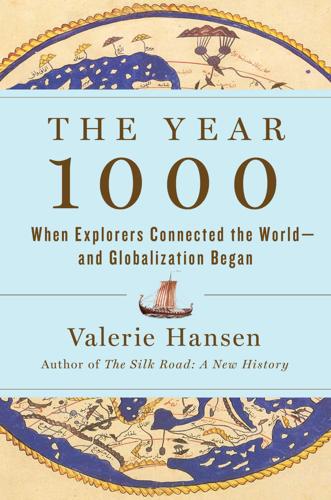
The Year 1000: When Explorers Connected the World―and Globalization Began
by
Valerie Hansen
Published 13 Apr 2020
The depth and range of the list makes perfect sense for the most heavily frequented sea route in use before the arrival of the Europeans in the 1500s. As information about foreign countries traveled alongside goods, the Chinese learned more about Southeast Asian geography. The Guangzhou gazetteer’s author divided the waters of the South China Sea into the Small Western Ocean (the section of the South China Sea near the Malay Peninsula), the Small Eastern Ocean (the Sea of Sulu east of Borneo), and the Large Eastern Ocean (the Java Sea), and explained which countries were located near each body of water. As knowledgeable as Chinese mariners were about the geography of Southeast Asia, India, the Arabian Peninsula, and Africa, they didn’t venture east of the Philippines into the Pacific because they believed that the world ended there.
…
Other contemporary rulers also hoped to build large empires, but they focused on the sea, not land, and used ships rather than horsemen, as we’ll see in the next chapter. CHAPTER SEVEN Surprising Journeys Mapmakers divide the waters between Africa and Japan into different seas—the Arabian Sea, the Indian Ocean, the Bay of Bengal, the South China Sea, the East China Sea, and the Pacific Ocean—but in actuality these formed one continuous waterway, which mariners traveled along by hugging the coastline. Their early voyages took advantage of the monsoon winds to explore and to transport goods from the Arabian Peninsula to India and later to China.
…
There, boatbuilders hewed planks from trees, carved knobs on the interior of the planks, drilled holes into the knobs, and tied the planks together with cord. This is called the lashed-lug technique. Manguin reasons that the sailors going from the Malay Peninsula to Madagascar used vessels whose wooden planks were joined together in this way. With multiple masts and sails, these vessels have been archeologically recovered in the South China Sea and Southeast Asian waters. The Phanom Surin shipwreck, the largest boat of this type found so far, measured some 115 feet (35 m) long. At present we have no way of knowing whether these early sailors used double canoes or larger boats with multiple sails. We are certain that Polynesian navigators ventured east into the Pacific at the same time as the Malay voyages to Madagascar.
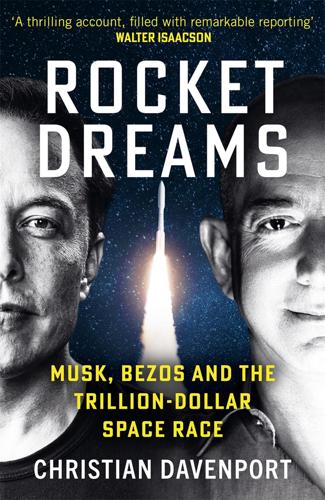
Rocket Dreams: Musk, Bezos and the Trillion-Dollar Space Race
by
Christian Davenport
Published 6 Sep 2025
: Sandra Erwin, “White House Has Nothing to Say on Space Force,” SpaceNews, February 2, 2021, https://spacenews.com/white-house-has-nothing-to-say-on-space-force/. 241 “Creating a Space Force is arguably”: Montgomery, “Trump’s Excellent Space Force Adventure.” 241 “It’s concerning to see”: Jacqueline Feldscher, “Top House Republican Demands Psaki Apologize Over ‘Disgraceful’ Space Force Quip,” Politico, February 2, 2021, https://www.politico.com/news/2021/02/02/house-republican-psaki-space-force-465175. 241–42 “I did send a tweet”: “Press Briefing by Press Secretary Jen Psaki,” The White House, February 3, 2021, https://bidenwhitehouse.archives.gov/briefing-room/press-briefings/2021/02/03/press-briefing-by-press-secretary-jen-psaki-february-3-2021/. 244 For years, China had ignored: Jane Perlez, “Tribunal Rejects Bejing’s Claims in South China Sea,” The New York Times, July 13, 2016, https://www.nytimes.com/2016/07/13/world/asia/south-china-sea-hague-ruling-philippines.html. 244 the Pentagon accused China: Terri Moon Cronk, “Chinese Seize U.S. Navy Underwater Drone in South China Sea,” Defense Department News, December 16, 2016, https://www.defense.gov/News/News-Stories/Article/Article/1032823/chinese-seize-us-navy-underwater-drone-in-south-china-sea/. 244 “an unsafe and unprofessional”: Steven Lee Myers, “American and Chinese Warships Narrowly Avoid High-Seas Collision,” The New York Times, October 2, 2018, https://www.nytimes.com/2018/10/02/world/asia/china-us-warships-south-china-sea.html. 244 “Kristin, who is back”: Eric Berger, “White House Says It Supports Artemis Program to Return to the Moon,” Ars Technica, February 4, 2021, https://arstechnica.com/science/2021/02/senate-democrats-send-a-strong-signal-of-support-for-artemis-moon-program/.
…
But its plans were so shrouded in secrecy, it was hard to determine exactly what its motivations were. Lal and others feared China would lay claim to the South Pole of the moon as it had in the South China Sea, where it constructed artificial islands and patrolled the open waters as a form of intimidation. For years, China had ignored a ruling by an international tribunal at The Hague that rejected its territorial claims in the South China Sea. It continued to fortify its outposts and conduct military operations. Tensions between the United States and China had been mounting. Early in the Trump administration, the Pentagon accused China of unlawfully seizing a U.S.
…
“We choose to go back to the moon not because of the unique glory it brings, but because this difficult step of destiny is also a forward step for human civilization!” There were also signs that its ambitions in space were not just about furthering human civilization, but territorial. The year before, Ye Peijian, the leader of the country’s lunar program, invoked China’s sovereign claims to islands in the South China Sea as an analogy for what it hoped to achieve on the lunar surface. “The universe is an ocean, the moon is the Diaoyu Islands, Mars is Huangyan Island,” he said. “If we don’t go there now, even though we’re capable of doing so, then we will be blamed by our descendants. If others go there, then they will take over, and you won’t be able to go even if you want to.
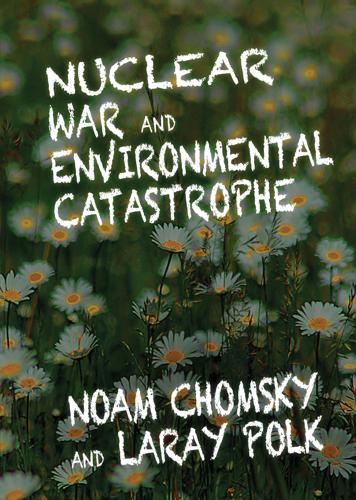
Nuclear War and Environmental Catastrophe
by
Noam Chomsky
and
Laray Polk
Published 29 Apr 2013
They are preparing for a new kind of Cold War in the Arctic, anticipating that rising temperatures there will open up a treasure trove of resources, long-dreamed-of sea lanes and a slew of potential conflicts.” Eric Talmadge, “As Ice Cap Melts, Militaries Vie for Arctic Edge,” Associated Press, April 16, 2012. Areas of future hostilities over oil include the Strait of Hormuz, South China Sea, and Caspian Sea basin. Michael T. Klare, “Danger Waters: The Three Top Hot Spots of Potential Conflict in the Geo-Energy Era,” TomDispatch.com, January 10, 2012. On drilling in the Chukchi and Beaufort seas, see note 3, chap. 1. 2 In 2005, while deep-water drilling in Angola, an Exxon spokesperson said, “All the easy oil and gas in the world has pretty much been found.
…
It’s been a kind of a hassle, also hasn’t been discussed much in the United States—but is discussed quite a lot in China, about control of the seas in China’s vicinity. Their navy is expanding, and that’s discussed here and described as a major threat. What they’re trying to do is to be able to control the waters nearby China—the South China Sea, Yellow Sea, and so on—and that’s described here as aggressive intent. The Pentagon just released a report on the dangers of China. Their military budget is increasing; it’s now one-fifth what the US spends in Iraq and Afghanistan, which is of course a fraction of the military budget. Not long ago, the US was conducting naval exercises in the waters off China.
…
India, on the other hand, is playing it pretty cool. They’re also improving their relations with China. President Obama recently secured military basing rights in Australia and formed a new free-trade pact, the Trans-Pacific Partnership, which excludes China. Is this move related to the South China Sea? Yes, in particular that, but it’s more general. It has to do with the “classic security dilemma” that I mentioned before, referring to the strategic analysis literature. China’s efforts to gain some measure of control over nearby seas and its major trade routes are inconsistent with what the US calls “freedom of the seas”—a term that doesn’t extend to Chinese military maneuvers in the Caribbean or even most of the world’s oceans, but does include the US right to carry out military maneuvers and establish naval bases everywhere.
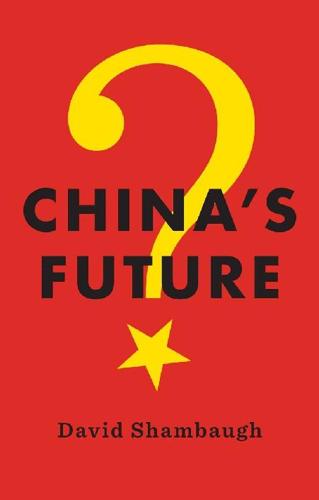
China's Future
by
David Shambaugh
Published 11 Mar 2016
Taiwan also lives daily under a huge military threat from the mainland, including over 1,200 short-range ballistic missiles aimed at the island twenty-four hours a day, 365 days a year.3 In Southeast Asia, the Philippines, Vietnam, Malaysia, and Brunei are all embroiled in territorial disputes with China in the South China Sea. This multilateral dispute has strained Beijing’s bilateral relations with each country, as well as collectively with the Association of Southeast Asian Nations (ASEAN). Cambodia is as close to being a client state of Beijing’s as exists in Asia, but even there the country is beginning to show signs of choking under Beijing’s smothering economic embrace and diplomatic pressure.4 Myanmar experienced the same suffocation until it drew back from Beijing’s grasp in 2011; since then a variety of bilateral frictions have continued to fray relations.
…
The Chinese distinguish between “near seas” () and “far seas” (), the former being contiguous to China’s coastline and the latter being open-ocean “blue water” operations. The White Paper indicated that the People’s Liberation Army Navy (PLAN) “will gradually shift its focus” from the former to the latter.10 As the White Paper starkly said, “The traditional mentality that land outweighs sea must be abandoned.” China’s island-building in the South China Sea has also caused further wariness among China’s southern neighbors, as its East China Sea claims have done in Japan. Beijing’s unilateralism and dismissiveness of these concerns is further fueling regional anxieties. Polls of Asian nations conducted by the Pew Global Attitudes Project in 2014 and 2015 revealed widespread concerns across the region that China’s territorial disputes could trigger conflict (Figure 5.2).
…
Finally, China’s sustained decades-long military modernization program, which has been fueled by 12 percent average annual budget increases,24 is altering the security environment in the Asia-Pacific region where the United States has enjoyed unrivaled preeminence since 1945. China also regularly rhetorically denounces the U.S. alliance system in the region, and its assertive moves to enforce its disputed maritime claims are changing “facts on the ground” (indeed, they are literally creating ground from submerged atolls it controls in the South China Sea) and directly challenging key American allies. Hence, all three of the core premises that have undergirded more than four decades of American China policy are unraveling and coming under increasing criticism in Washington. In Beijing too, the United States is explicitly viewed as a subversive threat to Communist Party rule and an existential threat to China’s security.
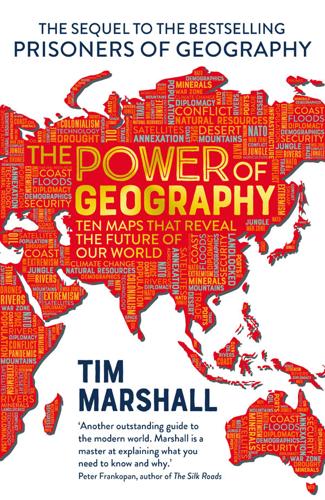
The Power of Geography: Ten Maps That Reveal the Future of Our World
by
Tim Marshall
Published 14 Oct 2021
In its ‘near abroad’ this former colony and ally of the West is the main power and is respected, but not loved; in the wider region it is one of several major powers and a potential ally or enemy. Strategically, most of Australia’s focus is to its north and east. As a first line of defence it looks up to the South China Sea area, below that it views the Philippines and the Indonesian archipelago, and then the seas between it and Papua New Guinea. To its east it focuses on the islands of the South Pacific such as Fiji and Vanuatu. It does have some advantages: Australia would be difficult to invade – not impossible, but difficult.
…
It is also a major market for Australia’s iron ore, gas, coal and gold. But China’s wider interests in the region, its attempts to expand its territorial claims and influence, don’t always align with Australia’s. The region off China’s coastline is a complicated place. China claims geographical and historical rights over 80 per cent of the South China Sea. A quick look at the map suggests that might not be entirely fair, as Vietnam, the Philippines, Taiwan, Malaysia and Brunei are always ready to point out. They hold different geographical and historical views which explain their often-overlapping territorial claims. But Beijing is still busy pouring concrete onto small rocks sticking out of the water more than 1,600 kilometres from the mainland, calling them islands, and then constructing runways, radars and missile batteries on them.
…
There China cannot make territorial claims, nor, without provoking conflict, can it go in for island-building and military construction. What it can do, though, is use its economic muscle to try and gain a foothold, but that’s where it runs into the region’s only major power. Australia can’t feasibly prevent China from dominating the South China Sea, but it can try to ensure Beijing has limited influence when it comes to the South Pacific. Battle has commenced. Australia is the largest aid donor to the Pacific Islands, but China has been increasing financial aid and loans and, as it did elsewhere, was quick to move in when the Covid-19 virus struck.
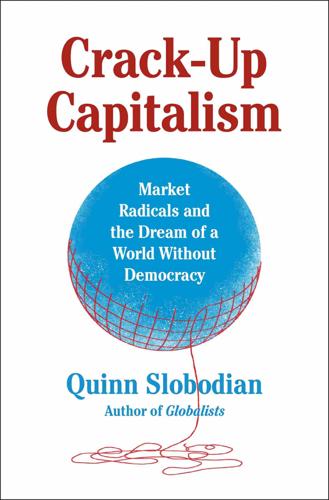
Crack-Up Capitalism: Market Radicals and the Dream of a World Without Democracy
by
Quinn Slobodian
Published 4 Apr 2023
They quoted the West German chancellor Willy Brandt’s prediction that “Western Europe has only twenty or thirty more years of democracy left in it.”10 The cover of the report showed a national flag in a rifle’s crosshairs. Doom ruled the world, but the sun shone in Hong Kong. In late September 1978, Milton Friedman smiled as he gestured at the city spiked with white skyscrapers glittering in the South China Sea behind him. Here, he promised, was a solution to the crisis, a place far from the paroxysms of popular sovereignty. Perhaps this place, he suggested, might be the desirable end state for global capitalism. Perhaps the ideas of national self-determination; one man, one vote; and the power of the people were so many detours, cloverleafing roads to serfdom, and this impeccable vessel for commerce and finance—armored against the demands of the population but nimbly responsive to the demands of the market, a capitalist juggernaut at full throttle—was the future.
…
While the MPS members gathered for their political education and shopping junket, Deng was preparing a plan for reform that came to be called “crossing the river by feeling for the stones.”86 It could have been called crossing the river by feeling for the zones. After he became paramount leader in December 1978—and Time’s Person of the Year—the first four experimental special economic zones (SEZs) were created on the Pearl River Delta, nestled up to Hong Kong on the South China Sea. In contrast to the shock treatment meted out by Augusto Pinochet to Chile after his 1973 coup, or the Big Bang overnight price reforms carried out in postcommunist Russia and Eastern Europe, China used a model of “experimental gradualism,” opening up sluices and locks to foreign investors and market-determined prices rather than dynamiting the levee and letting it all flood in.87 The first opening for the experiment in capitalist hydraulics was the district of Bao’an—on the other side of the Shenzhen River, which divided the New Territories from China—fifteen miles from Central Hong Kong but a world away in terms of the standard of living in the late 1970s.
…
Nor did he mention the importance of language and kinship ties across the border that facilitated Hong Kong’s role as the switchboard and front shop for the mainland factory, a cockpit for the Chinese boom.109 To give just one example of the diaspora in action, the Hong Konger who opened the first zone in the Pearl River Delta had been born in Bao’an himself and fought with the communists in the revolution. When he applied to open the zone, his request was forwarded on by his former military superior, who had become the Chinese minister of communications.110 Hong Kong was no island adrift in the South China Sea. Even through the years of division, it remained knitted into the mainland’s side.111 Rather than attend to any of this complex history, Friedman opted instead, as he spoke to students at the University of Hong Kong, to remind them of the dangers of democracy. “Unfortunately, political democracy has elements which tend to destroy economic freedom,” he told them.112 Happy to reduce the territory to caricature, the neoliberals shipped out versions of a Portable Hong Kong in their carry-on bags.
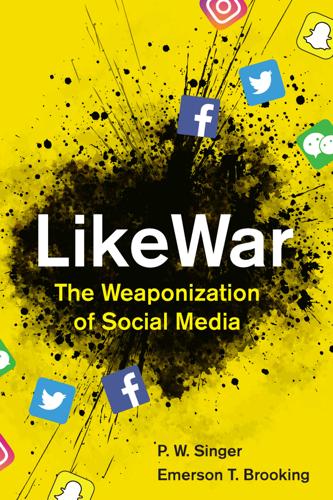
Likewar: The Weaponization of Social Media
by
Peter Warren Singer
and
Emerson T. Brooking
Published 15 Mar 2018
We Won’t Accept That Terrorists Take Control of Any Part of Syria,’” Global Research, October 7, 2016, https://www.globalresearch.ca/president-al-assad-interview-the-moderate-opposition-is-a-myth-we-wont-accept-that-terrorists-take-control-of-any-part-of-syria/5549743. 215 a Bellingcat investigation: Waters, “Finding Bana.” 215 her English-literate mother: Ibid. 216 “use force to unify Taiwan”: Ben Blanchard and Faith Hung, “South China Sea? For Beijing, Taiwan Is the No. 1 Security Issue,” Reuters, January 17, 2016, https://www.reuters.com/article/us-taiwan-election-security/south-china-sea-for-beijing-taiwan-is-the-no-1-security-issue-idUSKCN0UV064. 216 “Even if no grass”: Peter Navarro, “Senkaku Suicide Scenarios: China vs. Ameripan,” HuffPost, December 6, 2017, https://www.huffingtonpost.com/peter-navarro-and-greg-autry/senkaku-suicide-scenarios_b_9583586.html. 216 censors and state media: Bethany Allen-Ebrahimian, “After South China Sea Ruling, China Censors Online Calls for War,” Tea Leaf Nation (blog), Foreign Policy, July 12, 2016, https://foreignpolicy.com/2016/07/12/after-south-china-sea-ruling-china-censors-online-calls-for-war-unclos-tribunal/. 216 “Stop boasting”: Ibid. 217 “Gone are the days”: Thomas J.
…
In discussions with its neighbors over disputed islands, the common tone on Chinese social networks has been conveyed in messages like this: “Even if China is a graveyard, still need to kill all Japanese. Even if no grass grows in China, still need to recover Diaoyu Islands.” Following an international court ruling that rejected China’s sweeping territorial claims to the South China Sea, Chinese social media erupted with hundreds of thousands of furious comments, many calling for war. The anger, which had originally been stoked by the government, quickly spooked senior party officials; in response, censors and state media worked overtime to restrain the very forces they had helped unleash.
…
utm_term=.rbRkqQAqZ2#.bpyjaROaGN. 16 dueling “Facebook militias”: Francisco Perez, “Graphic Campaign Puts Violence in Kashmir in Social Media Fore,” Deutsche Welle, July 26, 2016, http://www.dw.com/en/graphic-campaign-puts-violence-in-kashmir-in-social-media-fore/a-19428356. 16 launching online “expeditions”: Anne Henochowicz, “Minitrue: Trolling Tsai Ing-Wen Beyond the Great Firewall,” China Digital Times, January 22, 2016, https://chinadigitaltimes.net/2016/01/minitrue-trolling-tsai-ing-wen-beyond-great-firewall/. 16 constantly pushing: Bethany Allen-Ebrahimian and Fergus Ryan, “‘Stop Boasting and Fight,’” Tea Leaf Nation (blog), Foreign Policy, October 27, 2015, https://foreignpolicy.com/2015/10/27/china-south-china-sea-nationalism-united-states-navy-lassen/. 16 Attending a U.S. military: Chinese crisis simulation, Washington, DC, 2016. 16 limiting leaders’ options: Roundtable (not for attribution), Washington, DC, 2016. See also Center for Strategic and International Studies, “Global Security Forum 2013: A Simulated Crisis in East Asia” (Washington, DC, November 6, 2013). 17 “continuation of political intercourse”: Carl von Clausewitz, On War, ed. and trans.
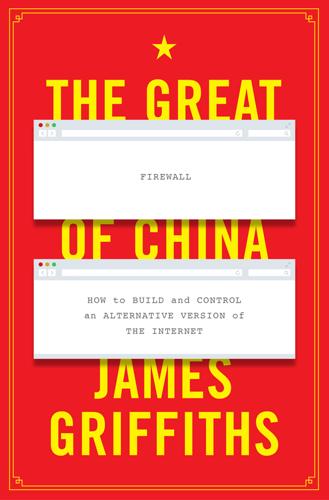
The Great Firewall of China
by
James Griffiths;
Published 15 Jan 2018
Leavenworth, ‘Website chronicles China’s massive effort to control internet content’, McClatchy, 9 April 2015, http://www.mcclatchydc.com/news/nation-world/world/article24782851.html 19‘Xiao Qiang’, MacArthur Fellows Program, 2001, https://www.macfound.org/fellows/671/ 20S. Wade, ‘Minitrue: delete reports on call to ease internet control’, China Digital Times, 7 March 2017, https://chinadigitaltimes.net/2017/03/minitrue-delete-reports-call-limit-internet-censorship/ 21A. Ramzy, ‘KFC targeted in protests over South China Sea’, The New York Times, 19 July 2016, https://www.nytimes.com/2016/07/20/world/asia/south-china-sea-protests-kfc.html 22S. Wade, ‘Minitrue: do not hype illegal demonstrations’, China Digital Times, 19 July 2016, https://chinadigitaltimes.net/2016/07/minitrue-not-hype-illegal-demonstrations/ 23‘’, Xinhua, 19 July 2016, http://military.china.com/important/11132797/20160719/23092151_all.html 24Q.
…
The censors’ reaction was immediate: “All websites, please find and delete reports and posts on Luo Fuhe’s ‘proposal to improve and increase speed of access to foreign websites’ as soon as possible,” said a leaked order.20 Similar commands are issued for protests and demonstrations, even when their motivation is patriotic and in support of Party goals. After China lost a landmark international court ruling in July 2016 over its sprawling territorial claims in the South China Sea, spontaneous protests broke out targeting the Philippines – the other party in the case – with calls for boycotts of Filipino products and of KFC, which served as an easy representative for the US, Manila’s main ally.21 As the protests threatened to get out of control, however, with some calling on the government to take military action to enforce its claims, a leaked censorship order told website owners “for the near future, do not hype or spread information related to illegal rallies and demonstrations.
…
After China lost a landmark international court ruling in July 2016 over its sprawling territorial claims in the South China Sea, spontaneous protests broke out targeting the Philippines – the other party in the case – with calls for boycotts of Filipino products and of KFC, which served as an easy representative for the US, Manila’s main ally.21 As the protests threatened to get out of control, however, with some calling on the government to take military action to enforce its claims, a leaked censorship order told website owners “for the near future, do not hype or spread information related to illegal rallies and demonstrations. Pay close attention and delete inflammatory information.”22 In the wake of this order, according to Weiboscope, a monitoring service at the University of Hong Kong, the phrases ‘KFC’ and ‘South China Sea’ were heavily censored on social media. When censorship alone is not enough to stymie calls for collective action, state media can be drafted in to help. During the anti-Philippines protests, a Xinhua editorial said that while feeling anger over the ruling was “the embodiment of patriotic feeling … if that feeling leads to illegal behaviour that destroys social order, then it is mistaken to label it ‘patriotic’”.23 That Xinhua would be used in this fashion is no surprise.
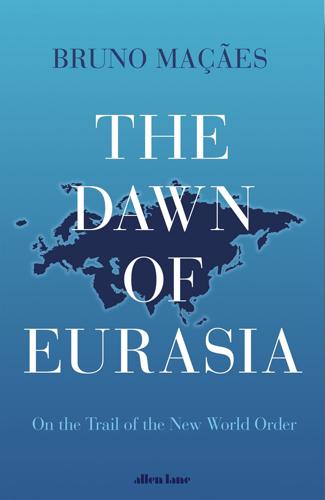
The Dawn of Eurasia: On the Trail of the New World Order
by
Bruno Macaes
Published 25 Jan 2018
It is no coincidence that the land component is called an economic belt: a road is just a transport link between two points, a belt is a densely occupied economic corridor for trade, industry and people. The Maritime Silk Road is designed to go from China’s coast to Europe through the South China Sea and the Indian Ocean in one route, and from China’s coast through the South China Sea to the South Pacific in the other. At sea, the initiative will focus on building smooth, secure and efficient transport routes connecting major sea ports. Together, the land and sea components will strive to connect about sixty-five countries. The preferred abbreviation in China for the combined project is – unsurprisingly – the Belt and Road, 带一路.
…
From the perspective of Chinese Go, it looks like the kind of strategy one might adopt of going after an opponent’s more exposed and isolated pieces before turning to its stronghold.8 If this can be achieved without giving rise to a more powerful Russia or Europe, then China will, ipso facto, emerge as America’s equal. Every instance of American retrenchment moves China closer to this goal. It does not really matter if it happens in the Middle East, in the South China Sea or in Ukraine. In this connection, it is worth noting that the countries of the Gulf Co-operation Council now export three and a half times as much to the Japanese, Korean, Indian and Chinese markets as to the European Union and the United States combined. Indian and Chinese conglomerates are also involved in major infrastructure projects, such as the high speed train link connecting the holy cities of Mecca and Medina in Saudi Arabia and the construction of two of the Riyadh Metro lines.
…
One Chinese analyst describes the 244 islands that constitute the Andaman and Nicobar archipelagos as a ‘metal chain’ (铁链) that could lock the western exit of the Malacca Strait. More generally, Chinese observers foresee the emergence of a powerful rival aiming to control the Indian Ocean, the mirror image of the Eurasian landmass to the north. For them, India is developing its overall capacity to ‘enter east’ (东进) into the South China Sea and the Pacific, ‘exit west’ (西出) through the Red Sea and Suez Canal into the Mediterranean, and ‘go south’ (南下) toward the Cape of Good Hope and the Atlantic.10 In 2016 news emerged that India and Japan were secretly planning to install a sea wall of hydrophones between Indira Point in the Nicobar Islands and Banda Aceh on the northern tip of Sumatra in Indonesia, aimed at tracking undersea movement and effectively plugging the entry to the Indian Ocean for Chinese submarines.
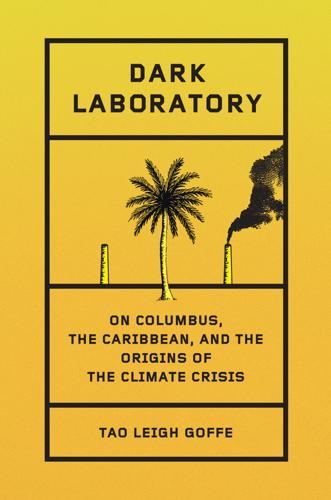
Dark Laboratory: On Columbus, the Caribbean, and the Origins of the Climate Crisis
by
Tao Leigh. Goffe
Published 14 Mar 2025
Both are vertical modern cities and today both are flooding. Lo Ting sobs briny tears because he knows that with over sixty surrounding islands, Hong Kong is drowning. Hungry ghosts form a loud chorus asking to be venerated in secret corners and underwater caves. The lore of Lo Ting, the “Thing with Scales,” shapes the underwater. The South China Sea islands are in geopolitical and climate crisis. Blank A4 sheets deny the piercing gaze of the surveillance state. Victoria Harbor was submerged again in 2023, with Super Typhoon Saola’s floods sweeping away infrastructure. Hot and humid days brew as cyclones threaten the city, already channeling the dissent of over seven million residents.
…
How did my grandfather receive these Chinese slurs and taunts? Did he find a sense of refuge diving in and out of the saltwater caves and grottos as a teenager? Did he hear Lo Ting’s Hong Kong mountain songs? Was Mami Wata there too as a protector across the waters of his Black Pacific childhood? Map of Hong Kong and the South China Sea Gah-san is the Hakka ritual of tomb sweeping for the dead. When I learned that the characters mean “climbing mountains” (because traditionally our ancestors were buried in mountain crypts), the moniker made a lot of sense. Who will sweep the tombs of generations lost to the climate crisis?
…
When I knew him in the ’90s, he was always the one silently and dutifully holding the camcorder to record family memories. In the photograph above, the mountain ranges form a backdrop shadowy with the contrast of the geologic texture of the New Territories. Two adolescents, my grandfather and his cousin (perhaps during World War II), etch themselves into the geology of the South China Sea Islands chain, occupied by the Japanese and the British in the 1940s. The two young cousins gaze off into the distance, posing with a wistful sense of purpose, perhaps looking across the Pacific toward the island of their birth, Jamaica. I imagine my lineage as descended from the mythic Hong Konger fish-humanoid creature that arose from the sea: Lo Ting.
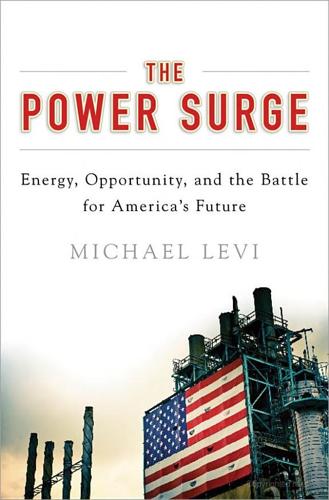
The Power Surge: Energy, Opportunity, and the Battle for America's Future
by
Michael Levi
Published 28 Apr 2013
Even the mere perception of reduced risk among decision makers would also increase U.S. freedom to act around the 132 • THE POWER SURGE world. The national security benefits of greater flexibility would be real and potentially large. But many worry there will also be big national security costs stemming from a transition away from oil. O n September 7, 2010, in the choppy waters off a string of uninhabited islands in the South China Sea, a Chinese fishing boat found itself in trouble.75 If you ask the Japanese, the islands are the Senkaku, under Tokyo’s control since 1972.76 According to Beijing, they are the Diaoyu, a Chinese possession for many centuries before.77 The dispute meant both countries plied the waters, and on that Tuesday the Chinese boat struck two Japanese coast guard ships.
…
See automobiles Carter, Jimmy, 11–12, 51 Chavez, Hugo, 78 Chesapeake Energy, 2–3, 47 China climate change and, 105–106 coal and, 96 economic development in, 17, 96, 130, 187–188 energy consumption by, 68, 75, 105–106, 130, 184 globalization and, 187–188 natural gas and, 32–33, 204 nuclear energy and, 173 oil production in, 69 rare-earth metals and, 132–134 solar energy and, 149–150, 157, 166–167 South China Sea confl ict and, 132–134 U.S. relations with, 78, 183–186, 201 Chrysler, 109, 116 Clayton, Blake, 78 clean energy. See renewable energy; solar energy; wind energy Clean Energy Ministerial (CEM) summit, 148 climate change Arctic ice and, 84, 86, 91 biofuels and, 111, 138–139 cap-and-trade and, 97, 101, 155, 171, 206 carbon dioxide emissions and, 85, 87, 89–100, 102–103, 136, 139 carbon tax and, 101, 155, 202 clean energy standard (CES) and, 101, 155, 202 coal and, 97–101, 170, 182, 194 Copenhagen climate summit and, 104–106 deforestation and, 85, 91, 105, 140 geoengineering and, 193–194 globalization and, 188 international treaties and, 104–107, 204 introduction to the science of, 84–88 methane and, 102 mountain pine beetles and, 83–84, 87–88 natural gas and, 97–103, 107, 155, 177, 200, 204, 208 nuclear energy and, 97–99, 101, 173, 175 oil and, 80, 83, 85–86, 88–90, 93–97, 101, 107–108, 110, 136–137, 182, 194, 196, 200 renewable energy and, 170, 178, 194, 196–197 social cost of carbon, 89–90 Clinton (Pennsylvania), 161–162 Clinton, Bill, 15, 116 coal carbon capture and sequestration and, 100, 158, 172 China and, 96 climate change and, 97–101, 170, 182, 194 land use and, 22, 175–176 power plants and, 3, 17, 88, 98–100, 103, 107, 141, 153, 158, 160–161, 168, 170, 196 Coal Question, The (Jevons), 137 cobalt, 133 Colbert, Stephen, 48 Cold War, 10, 16, 64, 169, 185 Colorado climate change in, 83–85, 87–88 mountain pine beetles in, 83–84, 87–88 252 • INDEX Colorado (Cont.) natural gas production in, 102–104 tight oil in, 51, 56, 61, 80, 93–94 Columbus (Ohio), antifracking protest in, 3–4, 22, 92 compressed natural gas (CNG), 37–39 Congo, 133 Copenhagen climate summit, 104–106 Dawe, Justin, 170–172 Day, Roger, 62 Dearing, Becky, 26 Deepwater Horizon oil spill, 52, 56–58 defense spending, innovation and, 169, 201 deglobalization, 189–190, 194 Delaware, 56 Department of Defense, 169, 200–201 Department of Energy, 15, 115, 146 Detroit automakers, 5, 18, 109–110, 113–116, 118–119, 122–123, 129–130, 136 Deutch, John, 24 Diaoyu Islands, 132 Dix, Bill, 20–22, 25, 46, 48 Dukakis, Michael, 14 E.ON, 32 Eagle Ford shale (Texas), 55 Earth Summit (1993), 15 earthquakes, natural gas production and, 44–45, 47 economic development natural gas and, 27–29, 47, 49, 192 oil and, 74–75, 127, 192 renewable energy and, 147, 162–163, 166, 191–192 Economides, Michael, 41 Edelstein, Paul, 129–130 EGL Oil Shale company, 51, 62 el-Badri, Abdallah Salem, 69 electric cars, 5, 114, 116, 118–119, 132, 135, 141–142, 200 electricity.
…
See also energy security; national security Arab-Israeli War (1973), 7, 76 Cold War, 10, 16, 64, 169, 185 globalization and, 35, 186–190, 194, 204–205 Gulf War (1991), 13–14, 76, 112 Organization of Petroleum Exporting Countries (OPEC), 7, 13, 66–69, 90, 95–96 sea lanes and, 78, 183–184, 205 South China Sea confl ict, 132–134 Germany, 156, 173, 183 global warming. See climate change globalization Asian tiger economies and, 187 China and, 187–188 climate change regulation and, 188 254 • INDEX globalization (Cont.) deglobalization, 189–190, 194 energy trade and, 35, 188–190, 204–205 Great Depression and, 187 multinational corporations and, 187–188 trade agreements and, 186–187 United States and, 186 Gore, Al, 96–97, 146 Grant County (Kansas), 24 Grape, Steven, 54 Great Depression, 187, 190 Great Illusion, The (Angell), 183 Great Recession climate change initiatives and, 206 Congressional Budget Office projections and, 190–191 natural gas production and, 23, 25–26, 28 oil consumption and, 110 oil prices and, 16 renewable energy and, 145–146, 191 unemployment and, 190–191 Gulf of Mexico Deepwater Horizon oil spill, 52, 56–58 oil production in, 3, 56–57, 180 Gulf War (1991), 13–14, 76, 112 Halliburton, 4, 24 Hamilton, Jim, 70 Hammond, Allen, 9 Hanergy, 167 Hansen, James, 82, 92 Hart, Gary, 10 Herrington, John S., 14 Honda GX, 38 Horizon Wind, 170 horizontal drilling, 23–24, 47, 52, 54 Hot, Flat, and Crowded (Friedman), 163 House, Kurt Zenz, 170–172 Howarth, Robert, 101–104 Hubbert, M.
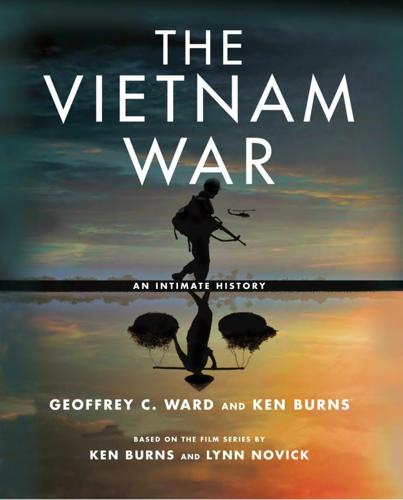
The Vietnam War: An Intimate History
by
Geoffrey C. Ward
and
Ken Burns
Published 4 Sep 2017
Under the slogan “Denunciation of the Communists,” Diem set out to destroy the Viet Minh wherever its cadre and their sympathizers could be found. Tens of thousands of citizens were eventually imprisoned. Most were dedicated communists, but included among them were many people whose only crime had been having criticized Diem’s regime. Hundreds were sent to Con Son Island, a former French prison two hundred miles offshore in the South China Sea. Shackled prisoners were taken there by boat. Two paths led from the landing to the prison. One was named Ngo Dinh Diem Road, the other Ho Chi Minh Road. Those who chose the Ho Chi Minh Road were poorly fed, beaten, tortured, and chained inside so-called tiger cages. More than twenty thousand are believed to have died there between 1954 and 1970.
…
The clandestine communist radio promised that U.S. servicemen would soon have to “pay more blood debts,” and on February 10 the Viet Cong blew up a hotel in Qui Nhon, killing twenty-one Americans and pinning twenty-three more beneath the rubble. The president called for the evacuation of more than eighteen hundred American dependents and ordered a second airstrike. This time, one hundred U.S. Navy fighter bombers, based on carriers in the South China Sea, as well as Air Force planes based in Thailand and South Vietnam, hit more North Vietnamese military targets—ammunition depots, supply depots, and assembly areas. Anxiety about what seemed to be happening spread around the world. France, which had spent nearly a century in Vietnam, called for an end to all foreign involvement there.
…
One hundred tons of Chinese and Soviet arms were found freshly unloaded on the beach—rifles, grenades, explosives, mortar rounds, and a million rounds of small-arms ammunition. Still more supplies were quietly being smuggled into the Mekong Delta—among them the weapons that had helped make the communist victory at Ap Bac possible. To deny the North Vietnamese further access to the South China Sea coast, the U.S. Seventh Fleet launched a massive naval patrolling campaign called Operation Market Time, while a second naval operation, Game Warden, employed patrol boats to close off the Saigon River and the multiple river mouths of the Mekong Delta. Hanoi was forced to alter its plans for resupply.
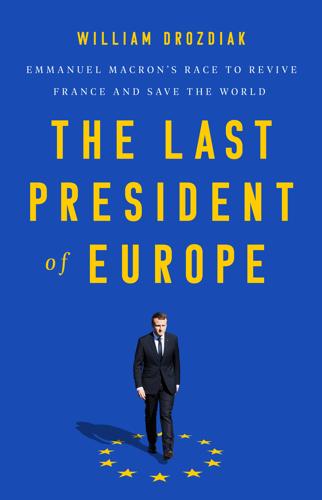
The Last President of Europe: Emmanuel Macron's Race to Revive France and Save the World
by
William Drozdiak
Published 27 Apr 2020
He has appealed for China’s cooperation and welcomed Beijing’s support for the Paris climate change accord as well as its continued backing of the Iran nuclear deal after Trump pulled out. At the same time, he recognizes that China poses a serious challenge to the international order, and not just on trade and investment issues. China’s aggressive actions in the South China Sea and its threats to freedom of navigation have prompted Macron to expand France’s naval presence in the Indo-Pacific region and upgrade its defense relationships with Australia, India, and Japan. Macron is acutely aware that France needs to be joined by the rest of Europe in concerted efforts to acquire sufficient leverage to deal effectively with the China challenge.
…
The strategy paper noted that China had impeded Europe’s fight against climate change as a major exporter of coal-fired power plants. It also criticized China’s human rights policies, which had taken a dramatic turn for the worse under Xi’s presidency, for instance, in its treatment of Chinese lawyers and journalists. The paper cited China’s “large military maneuvers” as a new source of anxiety for Europe, not just in the South China Sea but also in Europe’s own neighborhood, including the Arctic region. China had conducted joint military exercises with Russia in the Black Sea, the Mediterranean Sea, and the Baltic Sea, including missile tests off the coast of Kaliningrad, to the consternation of Poland and three Baltic states that are EU and NATO members.
…
In 2018, Greece blocked an EU statement in the United Nations criticizing China’s human rights record, and Hungary rejected an EU letter denouncing the torture of detained lawyers in China. Hungary, Greece, Croatia, and Slovenia—all beneficiaries of China’s investments—also softened an EU statement condemning China’s actions and legal claims in the South China Sea. In contrast to the criticism he often hears from his EU partners, Hungary’s prime minister, Viktor Orbán, is clearly pleased that he does not receive any lectures from China about his illiberal policies that threaten democratic values. Nor does Orbán feel that he needs to apologize to Macron or anybody else for his country’s “Eastward Opening” toward China.
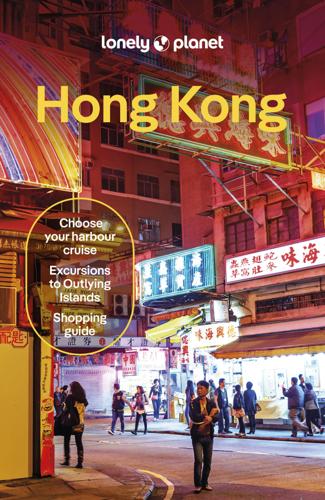
Lonely Planet Hong Kong
by
Lonely Planet
Jumbo Sinking Restaurant For years, Aberdeen Harbour was where you went to eat seafood at Jumbo Kingdom Floating Restaurant, essentially a gigantic, kitsch houseboat dressed up like a Ming dynasty palace. With space for 2300 diners, Jumbo hosted the likes of Queen Elizabeth II, Tom Cruise and Jimmy Carter in its heyday, but in 2020 the restaurant closed, citing a decade of losses. In 2022, it was sold to a buyer in Cambodia but sank in the South China Sea on route, with some crying foul play. Tai Pak, its sister restaurant, remains in the harbour. Despite being long closed, Tai Pak was reportedly sold in 2022 and might reopen at some point in the future. TOP TIPS • Aberdeen Promenade is easily accessed from Aberdeen bus terminus, or by taking the MTR to Lei Tung Station on Ap Lei Chau and crossing by sampan
…
Hike to it from the south to get the full impact when the bay sweeps into view. Fan Lau The southwest corner of Lantau is a remote coast of half-abandoned villages and deserted beaches. This full-day hike ends at Tai O. Dragon’s Back A good choice for a quick getaway, this section of the Hong Kong Trail takes you up to windy heights overlooking the South China Sea. KOWLOON A VISUAL FEAST OF OLD AND NEW Kowloon’s vibrant energy, neon-lit streets, bustling open-air markets and diverse local restaurants make it the heart and soul of Hong Kong. Chi Lin Nunnery & Nan Lian Garden | Lee Yiu Tung/Shutterstock © Legend has it that Kowloon, meaning ‘Nine Dragons’ in Cantonese, was named by Emperor Bing during the Song dynasty after the eight highest peaks, with the ninth dragon symbolising himself.
…
Learn more about Hong Kong’s history with interactive multi-media exhibitions, and for dinner with a view there are plenty of sky-high dining options on the 101st floor. Adult tickets start at HK$198, and last entry is at 8pm. Wander Around West Kowloon Cultural District Get inspired at Hong Kong’s cultural heart After a decade-long redevelopment project to reclaim 840 acres of land from the South China Sea, nearly 100 acres became the West Kowloon Cultural District, which opened in 2020. This growing arts and cultural hub with performance and exhibition centres, open green spaces, cafes, restaurants and a waterfront promenade is an idyllic spot to enjoy sunset views, bike rides and leisurely strolls.

Among the Braves: Hope, Struggle, and Exile in the Battle for Hong Kong and the Future of Global Democracy
by
Shibani Mahtani
and
Timothy McLaughlin
Published 7 Nov 2023
Kimmy Chung and Chris Lau, “Hong Kong Elections: Beijing Accuses Occupy Protest Leader Benny Tai of Breaking National Security Law Through Primary Poll,” South China Morning Post, July 14, 2020, www.scmp.com/news/hong-kong/politics/article/3093175/hong-kong-elections-beijing-issues-strongest-condemnation. 16. Xinqi Su, “Under Beijing’s Watchful Eye, Hong Kong Activist Joshua Wong Treads a Fine Line,” Agence France-Presse, September 13, 2020. CHAPTER 17 1. Yoshiyuki Ogasawara, “The Pratas Islands: A New Flashpoint in the South China Sea,” Diplomat, December 10, 2020, https://thediplomat.com/2020/12/the-pratas-islands-a-new-flashpoint-in-the-south-china-sea. 2. Ta Kung Pao, August 11, 2020, www.takungpao.com.hk/news/232109/2020/0811/485097.html. 3. Cited in multiple news articles, including Jack Lau and Danny Lee, “Campaigners for 12 Hongkongers Arrested While Fleeing to Taiwan Demand Government Discloses Details on ‘Police Spy Plane,’” South China Morning Post, October 8, 2020, www.scmp.com/news/hong-kong/politics/article/3104765/campaigners-12-hongkongers-arrested-while-fleeing-taiwan.
…
They didn’t want to risk turning back. The boat charged ahead, leaving a trail of flotsam bobbing in the water. Tommy had failed in his one and only responsibility. “It wasn’t easy, man!” he argued. Then he shrugged it off. There were more important things than the chips. They raced across the South China Sea, scanning ahead for authorities. They passed two men fishing in a rowboat. Then massive tanker ships from Singapore and China, stacked with containers that made their own boat look minuscule. Far from shore, the sightings became more infrequent. Ray, a quiet and unassuming IT worker, swore that he saw a Chinese Navy vessel, but it was a false alarm.
…
The place where they had landed seemed largely abandoned, dark except for some large floodlights. This, their map indicated, was Pratas Island. Located some two hundred miles southeast of Hong Kong, the island is a tiny, U-shaped rock controlled by Taipei but situated closer to China than to Taiwan. China insisted that Pratas was theirs. Beijing’s aggressive moves in the South China Sea and belligerence toward Taiwan had made Pratas Island a geopolitical flashpoint of global importance. The only inhabitants were Taiwanese Coast Guard officials and Marines on the front line of a simmering conflict.1 Now it also included the five Hong Kong protesters. A military official peppered the men with questions: “Why did you come here?
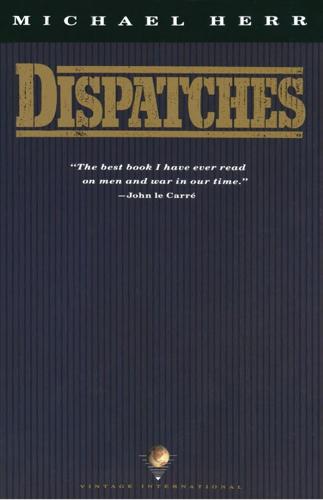
Dispatches
by
Michael Herr
Published 1 Jan 1977
If you wanted someone to know you’d gone insane you really had to sound off like you had a pair, “Scream a lot, and all the time.” Some people just wanted to blow it all to hell, animal vegetable and mineral. They wanted a Vietnam they could fit into their car ashtrays; the joke went, “What you do is, you load all the Friendlies onto ships and take them out to the South China Sea. Then you bomb the country flat. Then you sink the ships.” A lot of people knew that the country could never be won, only destroyed, and they locked into that with breathtaking concentration, no quarter, laying down the seeds of the disease, roundeye fever, until it reached plague proportions, taking one from every family, a family from every hamlet, a hamlet from every province, until a million had died from it and millions more were left uncentered and lost in their flight from it.
…
What did anybody ever expect those people to say? No matter how highly placed they were, they were still officials, their views were well established and well known, famous. It could have rained frogs over Tan Son Nhut and they wouldn’t have been upset; Cam Ranh Bay could have dropped into the South China Sea and they would have found some way to make it sound good for you; the Bo Doi Division (Ho’s Own) could have marched by the American embassy and they would have characterized it as “desperate”—what did even the reporters closest to the Mission Council ever find to write about when they’d finished their interviews?
…
(A Paris-Match photograph showed Flynn and a French photographer carrying him on a door, his face half covered by bandages, “Tim Page, blessé à la tête.”) His friends began trying to talk him into leaving Vietnam, saying, “Hey, Page, there’s an airstrike looking for you.” And there was; it caught him drifting around off course in a Swift boat in the South China Sea, blowing it out of the water under the mistaken impression that it was a Viet Cong vessel. All but three of the crew were killed, Page took over 200 individual wounds, and he floated in the water for hours before he was finally rescued. They were getting worse each time, and Page gave in to it.
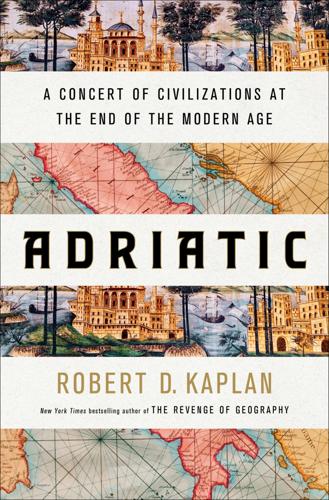
Adriatic: A Concert of Civilizations at the End of the Modern Age
by
Robert D. Kaplan
Published 11 Apr 2022
A precious, eclectic seascape that encompasses the whole of Europe—including its Orthodox and Muslim aspects—is about to become planetary, as the new and vast maritime empire of China threatens to overwhelm all of these European associations that I have sketched herein, making this journey a mere period piece, a tour-ender in old foreign correspondents’ lingo. For the Adriatic is about to be linked with the South China Sea and the Indian Ocean as key elements of a burgeoning global trade, from Hong Kong to Trieste by way of Hambantota, Gwadar, and other Indian Ocean ports. Then there is the battle over new natural gas discoveries in the eastern Mediterranean, and the struggle over oil in war-torn Libya. More than half a dozen littoral countries are involved in both intense negotiations and military positioning to see which consortium controls these envisioned pipelines, some of which may enter Europe through the Adriatic.
…
By boring deep into the historical and aesthetic peculiarities of each place, rather than losing the texture through some bland and abstract, formulaic global approach. In the early years of the twenty-first century I traveled throughout the greater Indian Ocean, in anticipation of its christening as the “Indo-Pacific” by the Pentagon. At the beginning of the second decade of the twenty-first century I journeyed through the South China Sea, in anticipation of that region’s future in news headlines. And in the middle of that second decade, in 2016, I began traveling throughout the Adriatic, in anticipation of its possible destiny as the western maritime terminus of China’s Belt and Road. But my aim has not been to theorize on global geopolitics in light of China’s and Russia’s return to great power status.
…
The West—namely the political and economic prominence of Europe throughout modern history—was, again echoing Oakley, as much a process as an inheritance: meaning its permanence cannot be taken for granted. The West may be quite transitory; the ground is always moving beneath our feet. Again, I think of the Chinese, who want to make Trieste part of the same maritime geography as the South China Sea, connecting Trieste more with the Indian Ocean than with many other parts of Europe. Nobody probed this transitory aspect better than Oswald Spengler, the German philosopher who shocked the intellectual world with his The Decline of the West, published in two volumes in 1918 and 1922. Spengler found no special position for the West in world history, interacting and fusing as it does with other cultures and civilizations, and maturing and disintegrating as they do.
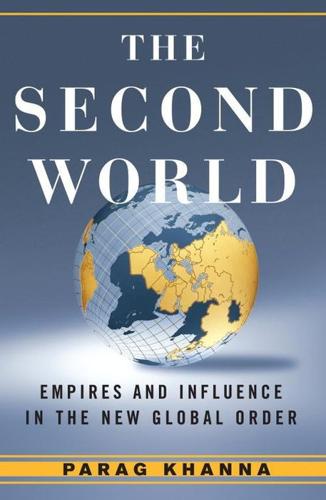
Second World: Empires and Influence in the New Global Order
by
Parag Khanna
Published 4 Mar 2008
Its diminished credibility has reduced it from its status as the ultimate guarantor of Asian stability to a more minor role as Japan and Taiwan’s protector and troubleshooter of crises from Malaysian-Indonesian naval skirmishes to the North Korean nuclear standoff.11 By 2001, China stopped referring to the United States as a “hegemon” in East Asia not out of politeness, but simply because America had ceased to be able to function as one. Not only is China encroaching on Mackinder’s heartland, but its vast Pacific coastline makes it the largest nation on Spykman’s Rimland as well. Just as the Silk Road is the land route from China to the West, the South China Sea and the Straits of Malacca are the region’s sea lines of communication (known as SLOC), the maritime passageway to the energy resources and markets of the Persian Gulf and Europe. The East Asian strategic picture is thus evolving on the sea, with China working tirelessly to co-opt Southeast Asia’s littoral states through trade pacts and naval cooperation.
…
An inside-out Asian strategic culture has emerged, governed by a consultative diplomacy (known as musyawarah) that identifies common interests likely to yield face-saving decisions while marginalizing controversial or outside (read: U.S.-imposed) topics.12 “What we have now is a Chinese ‘Monroe Doctrine,’” the Malaysian analyst declared. “We should get it over with and accept this Chinese order. That way we can peacefully resolve the problems of Taiwan, North Korea, and the South China Sea.” Could a benign Chinese hierarchy prevent rivalries from escalating beyond the psychological and economic level? Even though serious disputes remain over land and sea boundaries, as Singaporean diplomat Kishore Mahbubani points out, “guns have fallen silent” in the region due to a “tidal wave of common sense” by which Asians are rejecting the Western historical pattern of militarism in favor of shared prosperity.
…
American military contractors are selling the country hardware and satellites, while Intel’s microchip plant has graduated Vietnam from shoe manufacturing to the high-tech arena. While the waxy, embalmed body of triumphant “Uncle Ho” Chi Minh still inspires awe in his grand Hanoi mausoleum, Uncle Sam has been invited back by both the economic and defense establishments. Though it is much harder to draw lines in water than in sand, the South China Sea is a tripwire for exposing any Chinese transgressions toward its maritime neighbors—but also the best venue to witness China’s maritime “smile diplomacy” at work. The potentially oil-rich Spratly and Paracel island clusters are claimed in whole or part by Taiwan, Vietnam, Malaysia, Indonesia, and the Philippines.
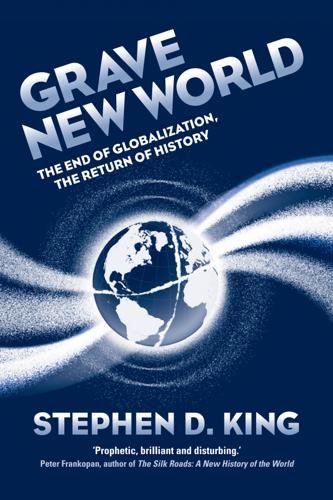
Grave New World: The End of Globalization, the Return of History
by
Stephen D. King
Published 22 May 2017
PIVOTING TO THE HOTSPOTS The battle for influence in the Pacific is not really about economics at all: it is instead about power in what is still, potentially, a very unstable region. From a domestic US or European perspective, it is all too easy to believe that the world’s territorial disputes are over. Yet for many other parts of the world, that simply isn’t true. In East Asia there is no shortage of hotspots. In the South China Sea, China, Taiwan, the Philippines, Malaysia, Vietnam and Brunei all make territorial claims over the Spratly Islands, which offer plenty of fish and potentially bountiful supplies of oil and gas. China has been in the process of establishing ‘facts on the ground’ – or, more accurately, ‘facts on reclaimed reefs’ – through the construction of airstrips, the provision of a mobile phone network and even the erection of a lighthouse.
…
Plummer, The Economic Effects of the Trans-Pacific Partnership: New estimates, Peterson Institute for International Economics Working Paper 16-2, Washington, DC, January 2016. 12.The US offers Trade Adjustment Assistance, but the jury is out regarding its effectiveness. 13.The nine-dash line was originally an eleven-dash line that first appeared on Taiwanese maps in 1947. The People’s Republic of China thereafter adopted a similar approach: both cases in effect make territorial claims on disputed parts of the South China Sea. 14.The press release accompanying the ruling can be found at https://pca-cpa.org/wp-content/uploads/sites/175/2016/07/PH-CN-20160712-Press-Release-No-11-English.pdf 15.Tibetans might well disagree, but while the Tibetan landmass is huge, it is sparsely populated: at the last count, there were around 3.2 million inhabitants, of whom 90 per cent were ethnically Tibetan.
…
(i), (ii), (iii), (iv), (v) Byzantium (i) Cabinet (UK) (i) California (i), (ii) caliphates (i), (ii), (iii) Callaghan, Jim (i), (ii) Cameron, David (i) Canada a reputable country (i) Asian Development Bank and (i) closes gap on US (i) Irish emigrate to (i), (ii) North America Free Trade Agreement (i), (ii) TPP (i) Cape of Good Hope (i) capital, mobility of (i), (ii), (iii), (iv) see also cross-border capital flow Capital in the Twenty-First Century (Thomas Piketty) (i) capitalism communism and (i) free-market capitalism (i), (ii), (iii), (iv) Fukuyama’s disciples on (i) Steffens and Shaw on (i) US economic model and (i) Caribbean (i) Carter, Jimmy (i) Castillon, Battle of (i) Castro, Fidel (i) Catherine of Aragon (i) Catherine the Great (i) Catholics (i), (ii), (iii) Caucasus (i), (ii) Central African Republic (i), (ii) Central America (i) Central Asia (i), (ii), (iii) see also Asia central banks (i), (ii) see also bankers inflation targets (i) Kosmos (i) price distortion (i) printing money (i), (ii) quantitative easing (i), (ii), (iii) zero interest rates and (i) Chad (i) Chechens (i) checks and balances (i), (ii) Chile (i) China (i), (ii), (iii), (iv) 1980 emergence (i) ageing population (i) attracting Western investment (i) balance of payments surplus (i) boom to slowdown (i) Brazil and (i) British in (i) Coca-Cola and (i) demand for German goods (i) Deng Xiaoping (i) Disney and (i) economic resurgence (i), (ii) excess capital in US (i) foreign capital for (i) iPhones (i) Japan and (i) living standards (i) military spending (i) OECD and (i) per capita incomes (i), (ii) ratifies Paris climate deal (i) rise of renminbi (i), (ii) Russia threatens (i) South China Sea and neighbour disputes (i) TPP and (i) treaty ports (i) Trump’s protectionism and (i) US tries to contain (i), (ii), (iii) Chongqing (i), (ii) Christianity (i), (ii), (iii), (iv), (v) Churchill, Winston (i), (ii), (iii), (iv)n1 CIA (i) Ciudadanos (i) Cleveland, Grover (i) climate change (i), (ii) Clinton, Hillary 2016 campaign (i) Bernie Sanders opposes (i) concerns of supporters (i) rejects TPP (i), (ii) Syria (i) wins Democrat nomination (i) clubs (i), (ii) Cobden, Richard (i), (ii), (iii) Coca-Cola (i) ‘coffin ships’ (i) Cold War binary rivalry, a (i) economic differences (i) end of (i), (ii) globalization and (i) NATO and (i) Soviet living standards (i) collateralized debt obligations (CDOs) (i) Collins, Philip (i) Columbus, Christopher (i), (ii), (iii) commodity markets (i), (ii), (iii) common sense (i) Commonwealth (i) communism Berlin Wall and (i) capitalism and (i) Cuba (i) Marx’s stages (i) Shaw extols (i) Soviet Union collapse and (i), (ii) Como, Lake (i) Comptoir National d’Escompte de Paris (i) Concert of Europe (i) Congo (i) Congress (US) 1933 banking crisis (i) American public’s confidence in (i) Bush Jnr on terrorism (i) Immigration Act 1917 (i) Japanese sanctions (i), (ii) Smoot–Hawley tariff (i) Congress of Vienna (i), (ii), (iii), (iv) Connally, John (i) Conolly, Arthur (i) Conservative Party (i), (ii) Constantinople (i), (ii) Constitutional Tribunal (Poland) (i) ‘Convention of Peking’ (i) Convention on the International Regulations for Preventing Collisions at Sea (i) Corbyn, Jeremy (i), (ii) Córdoba (i), (ii) corporate scandals (i) Corroyer, Edouard (i) Court of Cassation (Egypt) (i) Crécy, Battle of (i) Creole languages (i) Crimea (i), (ii) Crimean War (19th century) (i) crop yields (i) cross-border capital flow allocation of resources and (i) emerging markets and (i), (ii) extraordinary growth of (i), (ii), (iii) globalization dominated by (i) inequality and (i) Varoufakis tries to limit (i) Cuba (i) Czech Republic (i) Czechoslovakia (i) Darius the Great (i) Darwin, Charles (i) Davos (i), (ii) de Gaulle, Charles (i), (ii) debt (i) Africa (i) China (i) debt to income ratios (i) government debt (i) Latin America (i) low inflation and (i) deflation (i), (ii), (iii), (iv) Delhi (i) demand management (i), (ii) Democratic Party (US) (i), (ii) Democratic Republic of the Congo (i) Denfert-Rochereau, Eugène (i) Deng Xiaoping (i), (ii), (iii), (iv) Denmark (i), (ii) Department of Housing and Urban Development (US) (i) deposit insurance (i) devaluation 1930s (i), (ii), (iii) dollars, gold and (i) Eisenhower and Britain (i) franc (i) right conditions for (i) Diaoyu (i) Disney (i), (ii) Doha Round (i) dollar (US) see American dollar Dow Jones Industrial Average (i) Draghi, Mario (i) Duisburg (i) Duterte, Rodrigo (i), (ii) DVDs (i) East Africa (i) see also Africa Eastern Europe EU and its effects (i) importing democracy (i) joining the EU (i), (ii) Molotov–Ribbentrop Pact (i) New World emigration (i) Ottoman Empire and (i) Soviet communism and (i), (ii), (iii) ‘Economic Theory of Clubs’ (James Buchanan) (i) Ecuador (i) Eden, Anthony (i), (ii) Edison, Thomas (i) Edison Electric (i) educational attainment (i) Edward VI, King (i) Egypt (i), (ii), (iii) Einstein, Albert (i) Eisenhower, Dwight D.

I, Warbot: The Dawn of Artificially Intelligent Conflict
by
Kenneth Payne
Published 16 Jun 2021
A similar degree of uncertainty attends discussion of how to treat warbots—for example, what should you do if an adversary scoops up your underwater drone in international waters, and carts it off for inspection/reverse engineering? That’s already happened, when in 2016, the Chinese navy retrieved an American experimental submersible in the South China Sea, right under the nose of the ship that had launched it. Provocative, yes, but an act of war? Not in the view of the US military on that occasion. That drone was later returned to the Americans, after diplomatic protests. What about the sort of cyber hacking the Russians were accused of? There’s no clear answer—states are feeling their way forward in new circumstances.
…
If it gets either of those wrong, there is the danger of applying the wrong amount of violence (too much, or too little) against the wrong target. So the brain of the warbot is, predictably, its key feature. But what attributes can we expect it to exhibit, five years from now, in the Syrian border lands, the heavily defended airspace of the South China Sea, or under the polar icecap? By now you’ll be familiar with the broad parameters—AI’s speed, pattern recognition and accurate recall. Set against that are its familiar weaknesses—its brittleness and its narrow, domain-specific skills. And also its lack of ‘common sense’ and the difficulty of representing knowledge to it in a way that we can be confident fully captures our intentions.
…
A-10 Warthog abacuses Abbottabad, Pakistan Able Archer (1983) acoustic decoys acoustic torpedoes Adams, Douglas Aegis combat system Aerostatic Corps affective empathy Affecto Afghanistan agency aircraft see also dogfighting; drones aircraft carriers algorithms algorithm creation Alpha biases choreography deep fakes DeepMind, see DeepMind emotion recognition F-117 Nighthawk facial recognition genetic selection imagery analysis meta-learning natural language processing object recognition predictive policing alien hand syndrome Aliens (1986 film) Alpha AlphaGo Altered Carbon (television series) Amazon Amnesty International amygdala Andropov, Yuri Anduril Ghost anti-personnel mines ants Apple Aristotle armour arms races Army Research Lab Army Signal Corps Arnalds, Ólafur ARPA Art of War, The (Sun Tzu) art Artificial Intelligence agency and architecture autonomy and as ‘brittle’ connectionism definition of decision-making technology expert systems and feedback loops fuzzy logic innateness intelligence analysis meta-learning as ‘narrow’ needle-in-a-haystack problems neural networks reinforcement learning ‘strong AI’ symbolic logic and unsupervised learning ‘winters’ artificial neural networks Ashby, William Ross Asimov, Isaac Asperger syndrome Astute class boats Atari Breakout (1976) Montezuma’s Revenge (1984) Space Invaders (1978) Athens ATLAS robots augmented intelligence Austin Powers (1997 film) Australia authoritarianism autonomous vehicles see also drones autonomy B-21 Raider B-52 Stratofortress B2 Spirit Baby X BAE Systems Baghdad, Iraq Baidu balloons ban, campaigns for Banks, Iain Battle of Britain (1940) Battle of Fleurus (1794) Battle of Midway (1942) Battle of Sedan (1940) batwing design BBN Beautiful Mind, A (2001 film) beetles Bell Laboratories Bengio, Yoshua Berlin Crisis (1961) biases big data Bin Laden, Osama binary code biological weapons biotechnology bipolarity bits Black Lives Matter Black Mirror (television series) Blade Runner (1982 film) Blade Runner 2049 (2017 film) Bletchley Park, Buckinghamshire blindness Blunt, Emily board games, see under games boats Boden, Margaret bodies Boeing MQ-25 Stingray Orca submarines Boolean logic Boston Dynamics Bostrom, Nick Boyd, John brain amygdala bodies and chunking dopamine emotion and genetic engineering and language and mind merge and morality and plasticity prediction and subroutines umwelts and Breakout (1976 game) breathing control brittleness brute force Buck Rogers (television series) Campaign against Killer Robots Carlsen, Magnus Carnegie Mellon University Casino Royale (2006 film) Castro, Fidel cat detector centaur combination Central Intelligence Agency (CIA) centre of gravity chaff Challenger Space Shuttle disaster (1986) Chauvet cave, France chemical weapons Chernobyl nuclear disaster (1986) chess centaur teams combinatorial explosion and creativity in Deep Blue game theory and MuZero as toy universe chicken (game) chimeras chimpanzees China aircraft carriers Baidu COVID-19 pandemic (2019–21) D-21 in genetic engineering in GJ-11 Sharp Sword nuclear weapons surveillance in Thucydides trap and US Navy drone seizure (2016) China Lake, California Chomsky, Noam choreography chunking Cicero civilians Clarke, Arthur Charles von Clausewitz, Carl on character on culmination on defence on genius on grammar of war on materiel on nature on poker on willpower on wrestling codebreaking cognitive empathy Cold War (1947–9) arms race Berlin Crisis (1961) Cuban Missile Crisis (1962) F-117 Nighthawk Iran-Iraq War (1980–88) joint action Korean War (1950–53) nuclear weapons research and SR-71 Blackbird U2 incident (1960) Vienna Summit (1961) Vietnam War (1955–75) VRYAN Cole, August combinatorial creativity combinatorial explosion combined arms common sense computers creativity cyber security games graphics processing unit (GPU) mice Moore’s Law symbolic logic viruses VRYAN confirmation bias connectionism consequentialism conservatism Convention on Conventional Weapons ConvNets copying Cormorant cortical interfaces cost-benefit analysis counterfactual regret minimization counterinsurgency doctrine courageous restraint COVID-19 pandemic (2019–21) creativity combinatorial exploratory genetic engineering and mental disorders and transformational criminal law CRISPR, crows Cruise, Thomas Cuban Missile Crisis (1962) culmination Culture novels (Banks) cyber security cybernetics cyborgs Cyc cystic fibrosis D-21 drones Damasio, Antonio dance DARPA autonomous vehicle research battlespace manager codebreaking research cortical interface research cyborg beetle Deep Green expert system programme funding game theory research LongShot programme Mayhem Ng’s helicopter Shakey understanding and reason research unmanned aerial combat research Dartmouth workshop (1956) Dassault data DDoS (distributed denial-of-service) dead hand system decision-making technology Deep Blue deep fakes Deep Green DeepMind AlphaGo Atari playing meta-learning research MuZero object recognition research Quake III competition (2019) deep networks defence industrial complex Defence Innovation Unit Defence Science and Technology Laboratory defence delayed gratification demons deontological approach depth charges Dionysus DNA (deoxyribonucleic acid) dodos dogfighting Alpha domains dot-matrix tongue Dota II (2013 game) double effect drones Cormorant D-21 GJ-11 Sharp Sword Global Hawk Gorgon Stare kamikaze loitering munitions nEUROn operators Predator Reaper reconnaissance RQ-170 Sentinel S-70 Okhotnik surveillance swarms Taranis wingman role X-37 X-47b dual use technology Eagleman, David early warning systems Echelon economics Edge of Tomorrow (2014 film) Eisenhower, Dwight Ellsberg, Daniel embodied cognition emotion empathy encryption entropy environmental niches epilepsy epistemic community escalation ethics Asimov’s rules brain and consequentialism deep brain stimulation and deontological approach facial recognition and genetic engineering and golden rule honour hunter-gatherer bands and identity just war post-conflict reciprocity regulation surveillance and European Union (EU) Ex Machina (2014 film) expert systems exploratory creativity extra limbs Eye in the Sky (2015 film) F-105 Thunderchief F-117 Nighthawk F-16 Fighting Falcon F-22 Raptor F-35 Lightning F/A-18 Hornet Facebook facial recognition feedback loops fighting power fire and forget firmware 5G cellular networks flow fog of war Ford forever wars FOXP2 gene Frahm, Nils frame problem France Fukushima nuclear disaster (2011) Future of Life Institute fuzzy logic gait recognition game theory games Breakout (1976) chess, see chess chicken Dota II (2013) Go, see Go Montezuma’s Revenge (1984) poker Quake III (1999) Space Invaders (1978) StarCraft II (2010) toy universes zero sum games gannets ‘garbage in, garbage out’ Garland, Alexander Gates, William ‘Bill’ Gattaca (1997 film) Gavotti, Giulio Geertz, Clifford generalised intelligence measure Generative Adversarial Networks genetic engineering genetic selection algorithms genetically modified crops genius Germany Berlin Crisis (1961) Nuremburg Trials (1945–6) Russian hacking operation (2015) World War I (1914–18) World War II (1939–45) Ghost in the Shell (comic book) GJ-11 Sharp Sword Gladwell, Malcolm Global Hawk drone global positioning system (GPS) global workspace Go (game) AlphaGo Gödel, Kurt von Goethe, Johann golden rule golf Good Judgment Project Google BERT Brain codebreaking research DeepMind, see DeepMind Project Maven (2017–) Gordievsky, Oleg Gorgon Stare GPT series grammar of war Grand Challenge aerial combat autonomous vehicles codebreaking graphics processing unit (GPU) Greece, ancient grooming standard Groundhog Day (1993 film) groupthink guerilla warfare Gulf War First (1990–91) Second (2003–11) hacking hallucinogenic drugs handwriting recognition haptic vest hardware Harpy Hawke, Ethan Hawking, Stephen heat-seeking missiles Hebrew Testament helicopters Hellfire missiles Her (2013 film) Hero-30 loitering munitions Heron Systems Hinton, Geoffrey Hitchhiker’s Guide to the Galaxy, The (Adams) HIV (human immunodeficiency viruses) Hoffman, Frank ‘Holeshot’ (Cole) Hollywood homeostasis Homer homosexuality Hongdu GJ-11 Sharp Sword honour Hughes human in the loop human resources human-machine teaming art cyborgs emotion games King Midas problem prediction strategy hunter-gatherer bands Huntingdon’s disease Hurricane fighter aircraft hydraulics hypersonic engines I Robot (Asimov) IARPA IBM identity Iliad (Homer) image analysis image recognition cat detector imagination Improbotics nformation dominance information warfare innateness intelligence analysts International Atomic Energy Agency International Criminal Court international humanitarian law internet of things Internet IQ (intelligence quotient) Iran Aegis attack (1988) Iraq War (1980–88) nuclear weapons Stuxnet attack (2010) Iraq Gulf War I (1990–91) Gulf War II (2003–11) Iran War (1980–88) Iron Dome Israel Italo-Turkish War (1911–12) Jaguar Land Rover Japan jazz JDAM (joint directed attack munition) Jeopardy Jobs, Steven Johansson, Scarlett Johnson, Lyndon Joint Artificial Intelligence Center (JAIC) de Jomini, Antoine jus ad bellum jus in bello jus post bellum just war Kalibr cruise missiles kamikaze drones Kasparov, Garry Kellogg Briand Pact (1928) Kennedy, John Fitzgerald KGB (Komitet Gosudarstvennoy Bezopasnosti) Khrushchev, Nikita kill chain King Midas problem Kissinger, Henry Kittyhawk Knight Rider (television series) know your enemy know yourself Korean War (1950–53) Kratos XQ-58 Valkyrie Kubrick, Stanley Kumar, Vijay Kuwait language connectionism and genetic engineering and natural language processing pattern recognition and semantic webs translation universal grammar Law, Jude LeCun, Yann Lenat, Douglas Les, Jason Libratus lip reading Litvinenko, Alexander locked-in patients Lockheed dogfighting trials F-117 Nighthawk F-22 Raptor F-35 Lightning SR-71 Blackbird logic loitering munitions LongShot programme Lord of the Rings (2001–3 film trilogy) LSD (lysergic acid diethylamide) Luftwaffe madman theory Main Battle Tanks malum in se Manhattan Project (1942–6) Marcus, Gary Maslow, Abraham Massachusetts Institute of Technology (MIT) Matrix, The (1999 film) Mayhem McCulloch, Warren McGregor, Wayne McNamara, Robert McNaughton, John Me109 fighter aircraft medical field memory Merkel, Angela Microsoft military industrial complex Mill, John Stuart Milrem mimicry mind merge mind-shifting minimax regret strategy Minority Report (2002 film) Minsky, Marvin Miramar air base, San Diego missiles Aegis combat system agency and anti-missile gunnery heat-seeking Hellfire missiles intercontinental Kalibr cruise missiles nuclear warheads Patriot missile interceptor Pershing II missiles Scud missiles Tomahawk cruise missiles V1 rockets V2 rockets mission command mixed strategy Montezuma’s Revenge (1984 game) Moore’s Law mosaic warfare Mueller inquiry (2017–19) music Musk, Elon Mutually Assured Destruction (MAD) MuZero Nagel, Thomas Napoleon I, Emperor of the French Napoleonic France (1804–15) narrowness Nash equilibrium Nash, John National Aeronautics and Space Administration (NASA) National Security Agency (NSA) National War College natural language processing natural selection Nature navigation computers Nazi Germany (1933–45) needle-in-a-haystack problems Netflix network enabled warfare von Neumann, John neural networks neurodiversity nEUROn drone neuroplasticity Ng, Andrew Nixon, Richard normal accident theory North Atlantic Treaty Organization (NATO) North Korea nuclear weapons Cuban Missile Crisis (1962) dead hand system early warning systems F-105 Thunderchief and game theory and Hiroshima and Nagasaki bombings (1945) Manhattan Project (1942–6) missiles Mutually Assured Destruction (MAD) second strike capability submarines and VRYAN and in WarGames (1983 film) Nuremburg Trials (1945–6) Obama, Barack object recognition Observe Orient Decide and Act (OODA) offence-defence balance Office for Naval Research Olympic Games On War (Clausewitz), see Clausewitz, Carl OpenAI optogenetics Orca submarines Ottoman Empire (1299–1922) pain Pakistan Palantir Palmer, Arnold Pandemonium Panoramic Research Papert, Seymour Parkinson’s disease Patriot missile interceptors pattern recognition Pearl Harbor attack (1941) Peloponnesian War (431–404 BCE) Pentagon autonomous vehicle research codebreaking research computer mouse development Deep Green Defence Innovation Unit Ellsberg leaks (1971) expert system programme funding ‘garbage in, garbage out’ story intelligence analysts Project Maven (2017–) Shakey unmanned aerial combat research Vietnam War (1955–75) perceptrons Perdix Pershing II missiles Petrov, Stanislav Phalanx system phrenology pilot’s associate Pitts, Walter platform neutrality Pluribus poker policing polygeneity Portsmouth, Hampshire Portuguese Man o’ War post-traumatic stress disorder (PTSD) Predator drones prediction centaur teams ‘garbage in, garbage out’ story policing toy universes VRYAN Prescience principles of war prisoners Project Improbable Project Maven (2017–) prosthetic arms proximity fuses Prussia (1701–1918) psychology psychopathy punishment Putin, Vladimir Pyeongchang Olympics (2018) Qinetiq Quake III (1999 game) radar Rafael RAND Corporation rational actor model Rawls, John Re:member (Arnalds) Ready Player One (Cline) Reagan, Ronald Reaper drones reciprocal punishment reciprocity reconnaissance regulation ban, campaigns for defection self-regulation reinforcement learning remotely piloted air vehicles (RPAVs) revenge porn revolution in military affairs Rid, Thomas Robinson, William Heath Robocop (1987 film) Robotics Challenge robots Asimov’s rules ATLAS Boston Dynamics homeostatic Shakey symbolic logic and Rome Air Defense Center Rome, ancient Rosenblatt, Frank Royal Air Force (RAF) Royal Navy RQ-170 Sentinel Russell, Stuart Russian Federation German hacking operation (2015) Litvinenko murder (2006) S-70 Okhotnik Skripal poisoning (2018) Ukraine War (2014–) US election interference (2016) S-70 Okhotnik SAGE Said and Done’ (Frahm) satellite navigation satellites Saudi Arabia Schelling, Thomas schizophrenia Schwartz, Jack Sea Hunter security dilemma Sedol, Lee self-actualisation self-awareness self-driving cars Selfridge, Oliver semantic webs Shakey Shanahan, Murray Shannon, Claude Shogi Silicon Valley Simon, Herbert Single Integrated Operations Plan (SIOP) singularity Siri situational awareness situationalist intelligence Skripal, Sergei and Yulia Slaughterbots (2017 video) Slovic, Paul smartphones Smith, Willard social environments software Sophia Sorcerer’s Apprentice, The (Goethe) South China Sea Soviet Union (1922–91) aircraft Berlin Crisis (1961) Chernobyl nuclear disaster (1986) Cold War (1947–9), see Cold War collapse (1991) Cuban Missile Crisis (1962) early warning systems Iran-Iraq War (1980–88) Korean War (1950–53) nuclear weapons radar technology U2 incident (1960) Vienna Summit (1961) Vietnam War (1955–75) VRYAN World War II (1939–45) Space Invaders (1978 game) SpaceX Sparta Spike Firefly loitering munitions Spitfire fighter aircraft Spotify Stanford University Stanley Star Trek (television series) StarCraft II (2010 game) stealth strategic bombing strategic computing programme strategic culture Strategy Robot strategy Strava Stuxnet sub-units submarines acoustic decoys nuclear Orca South China Sea incident (2016) subroutines Sukhoi Sun Tzu superforecasting surveillance swarms symbolic logic synaesthesia synthetic operation environment Syria Taliban tanks Taranis drone technological determinism Tempest Terminator franchise Tesla Tetlock, Philip theory of mind Threshold Logic Unit Thucydides TikTok Tomahawk cruise missiles tongue Top Gun (1986 film) Top Gun: Maverick (2021 film) torpedoes toy universes trade-offs transformational creativity translation Trivers, Robert Trump, Donald tumours Turing, Alan Twitter 2001: A Space Odyssey (1968 film) Type-X Robotic Combat Vehicle U2 incident (1960) Uber Uexküll, Jacob Ukraine ultraviolet light spectrum umwelts uncanny valley unidentified flying objects (UFOs) United Kingdom AI weapons policy armed force, size of Battle of Britain (1940) Bletchley Park codebreaking Blitz (1940–41) Cold War (1947–9) COVID-19 pandemic (2019–21) DeepMind, see DeepMind F-35 programme fighting power human rights legislation in Litvinenko murder (2006) nuclear weapons principles of war Project Improbable Qinetiq radar technology Royal Air Force Royal Navy Skripal poisoning (2018) swarm research wingman concept World War I (1914–18) United Nations United States Afghanistan War (2001–14) Air Force Army Research Lab Army Signal Corps Battle of Midway (1942) Berlin Crisis (1961) Bin Laden assassination (2011) Black Lives Matter protests (2020) centaur team research Central Intelligence Agency (CIA) Challenger Space Shuttle disaster (1986) Cold War (1947–9), see Cold War COVID-19 pandemic (2019–21) Cuban Missile Crisis (1962) culture cyber security DARPA, see DARPA Defense Department drones early warning systems F-35 programme Gulf War I (1990–91) Gulf War II (2003–11) IARPA Iran Air shoot-down (1988) Korean War (1950–53) Manhattan Project (1942–6) Marines Mueller inquiry (2017–19) National Security Agency National War College Navy nuclear weapons Office for Naval Research Patriot missile interceptor Pearl Harbor attack (1941) Pentagon, see Pentagon Project Maven (2017–) Rome Air Defense Center Silicon Valley strategic computing programme U2 incident (1960) Vienna Summit (1961) Vietnam War (1955–75) universal grammar Universal Schelling Machine (USM) unmanned aerial vehicles (UAVs), see drones unsupervised learning utilitarianism UVision V1 rockets V2 rockets Vacanti mouse Valkyries Van Gogh, Vincent Vietnam War (1955–75) Vigen, Tyler Vincennes, USS voice assistants VRYAN Wall-e (2008 film) WannaCry ransomware War College, see National War College WarGames (1983 film) warrior ethos Watson weapon systems WhatsApp Wiener, Norbert Wikipedia wingman role Wittgenstein, Ludwig World War I (1914–18) World War II (1939–45) Battle of Britain (1940) Battle of Midway (1942) Battle of Sedan (1940) Bletchley Park codebreaking Blitz (1940–41) Hiroshima and Nagasaki bombings (1945) Pearl Harbor attack (1941) radar technology V1 rockets V2 rockets VRYAN and Wrangham, Richard Wright brothers WS-43 loitering munitions Wuhan, China X-37 drone X-drone X-rays YouTube zero sum games
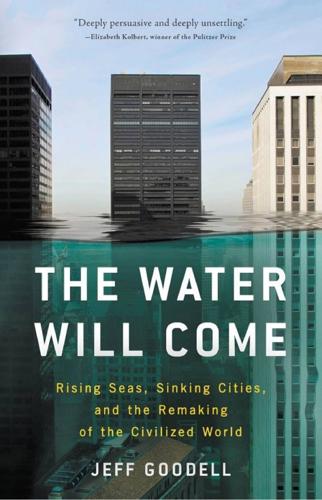
The Water Will Come: Rising Seas, Sinking Cities, and the Remaking of the Civilized World
by
Jeff Goodell
Published 23 Oct 2017
Accessed March 7, 2017. http://www.opec.org/opec_web/static_files_project/media/downloads/publications/ASB2016.pdf 6. Flash flooding: “Nigeria Floods Kill 363 People, Displace 2.1 Million.” Reuters, November 5, 2012. 7. Eko Atlantic: The development has a glitzy website, which includes a virtual tour of the site: http://www.ekoatlantic.com/ 8. South China Sea: Gordon Lubold. “Pentagon Says China Has Stepped Up Land Reclamation in South China Sea.” Wall Street Journal, August 20, 2015. 9. Singapore: “Such Quantities of Sand.” The Economist, February 26, 2015. 10. Tokyo Bay: Ibid. 11. satellite data: Alister Doyle. “Coastal Land Expands as Construction Outpaces Sea-Level Rise.” Reuters, August 25, 2016. 12.
…
Specifically, the amendment allows foreigners who invest over $1 billion to own land, provided that at least 70 percent of the land is reclaimed from the sea. Indian officials are concerned that this is an invitation to the Chinese, who have already launched a massive land reclamation project in the South China Sea. Unnamed Indian officials said they are “concerned” that China now plans to do the same in some of the Maldives’ 1,200 islands, which are located strategically in the Indian Ocean. Eva Abdulla, one of just fourteen parliamentarians in the Maldives who voted against the amendment, said, “This will make the country a Chinese colony.”
…
What’s happening in Lagos is part of a larger trend of combating sea-level rise with old-fashioned engineering muscle. On coasts and in shallow bays around the world, enormous dredging machines are pumping sand and gravel out of the bottom of the sea and creating new land. You can see it in the South China Sea, where China is rapidly turning coral reefs into islands to support military bases, airstrips, and port facilities. Since its independence in 1965, Singapore has expanded its size by almost a quarter, from 244 square miles to 277 square miles. Japan has reclaimed more than 100 square miles of land in Tokyo Bay alone.
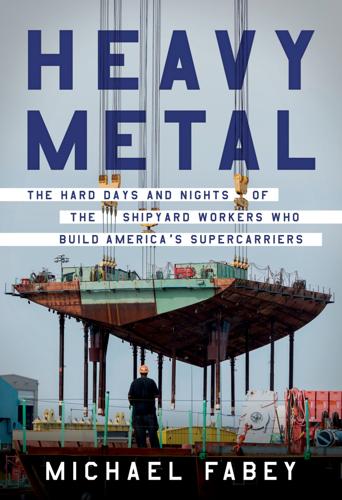
Heavy Metal: The Hard Days and Nights of the Shipyard Workers Who Build America's Supercarriers
by
Michael Fabey
Published 13 Jun 2022
Now, standing on the back end of the Ford on the Tidewater waterfront in the spring of 2014, Nasty Manazir envisioned the squadrons he could deploy with his new launch-and-recovery systems—F-18s and the new super-stealthy next-generation F-35 combat jets, as well as large drone aircraft the ship could send out to much greater distances than it could currently, to spy or bomb. All this would make the vessels less vulnerable to attack from enemies in the South China Sea or the halls of Congress. AAG and EMALS provided another benefit, as well: boosting the launch and trap rates would speed up operations in general, what the navy called the sortie rate. The faster the sortie rate, the more effective a carrier’s aircraft in combat. Navy and shipyard designers searched for other ways to boost that rate, and they found them—ranging from rather simple in-deck refueling stations to more exotic advanced weapons elevators (AWEs), which moved more weapons faster from the belowdecks magazines to aircraft being readied for launch.
…
I have also never been more proud of the shipbuilders who had made that sight possible.” Many travelers regard December as one of the best months to visit Hainan Island, China’s largest tropical island, roughly the size of Taiwan, which sits just south of the Qiongzhou Strait, which separates the Gulf of Tonkin from the South China Sea. Perched at China’s southernmost point, Hainan features a tropical climate that attracts beachgoers from all over the country and Southeast Asia to the seaside luxury hotels of its southern city of Sanya. But Chinese president Xi made a trip to Sanya on December 17, shortly after the Kennedy flooding, to check on the progress of his own carrier at the naval base there.
…
Such a mind-set usually bodes well for Newport News Shipbuilding, particularly when the impetus for the concern during that early fall of 2020 became China and its shipbuilding programs, as well as Chinese missiles developed to take out US carriers. China test-fired two missiles in September into the South China Sea, including a “carrier killer” DF-21D rocket into an area between the southern island province of Hainan and the Paracel Islands—a notable feat, although much easier than actually hitting a moving, protected carrier, an ability China has yet to prove. Still, China apparently recently built a stockpile of two hundred DF-26 missiles, compared to about sixteen as of three years earlier.
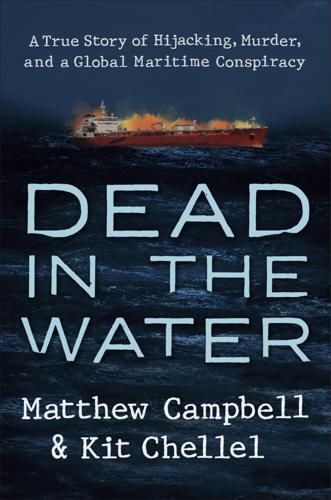
Dead in the Water: A True Story of Hijacking, Murder, and a Global Maritime Conspiracy
by
Matthew Campbell
and
Kit Chellel
Published 2 May 2022
The crew of one vessel were found to have booked local hotel rooms a month before a supposedly accidental explosion stranded them off the coast. From the Gulf of Guinea, the outbreak spread to the Middle East before arriving in Asia. In the late 1970s, so many cargo ships were going down in the South China Sea that the Lloyd’s market took the unprecedented step of ordering an inquiry, to be led by the specially appointed Far Eastern Regional Investigation Team, or FERIT. In typical Lloyd’s style, FERIT’s report was kept confidential and was not to be shared with nonmembers, although several historians have written about its contents.
…
(A port official became suspicious when he noticed that the shipment lacked the distinctive odor that normally accompanied nine hundred tons of spice.) Sometimes the cargo had already been removed and sold in secret before an insurance claim was made. In a few cases it had never existed at all. The cost to the London market of the South China Sea claims alone was estimated at $100 million. FERIT’s most significant finding was that the scuttling craze was linked to organized crime groups operating out of Taiwan, Hong Kong, and Singapore. They seemed to have access to shipwrecking specialists. A welding contractor, for example, was hired to cut four half-meter holes in a vessel’s hull and then seal them with metal panels that could be removed when the time came.
…
Vandenberg, 99–100 Georgoulis, Dimitrios, 108 Goffman, Erving, 11 Gonzaga, Noe, 17, 229 as captain of Brillante Virtuoso, 11 found tied on deck, 22 interviewed on Philippine Sea, 26 orders Marquez to allow pirates on board, 19–20 taken by pirates, 21 testimony of, 218–21 Great Britain, 4 Greathead, Henry, 101 Greek shipping industry, 147–50 Liberty ships and, 148 Lloyd’s of London, relationship with, 109–10 Niarchos, Onassis and, 149–51 oil trade and, 148–49 tramp shipping and, 148 Green, Peter, 42 Gulf of Aden, 14 Gulf of Guinea insurance fraud cases, 105 H Hanks, Tom, 15 Heath, Cuthbert, 41 Hegestratos, 100 Hellas Helvetia, 192 Hellenic Register of Shipping, 152 High Risk Area, 15 Hill, Ginny, 78 Hiscox, 136 HMS Lutine, 43 HMS Tireless, 123 Hodgson, Godfrey, 37, 40, 101, 105 Holt Global, 33 hull insurance, 38–39, 40–41, 127–29 I Iliopoulos, Antonis, 153 Iliopoulos, Ioannis, 153 Iliopoulos, Marios, 150–55 arrest on fraud charges, 160–61 authors’ attempts to speak with, 243–44 continues to do business at Lloyd’s, 230–31 Despina Andrianna and, 229–30 disclosure stonewalled by, 145–46 education and racing career of, 151–52 Elli and, 114–15, 118, 129, 154 Flaux’s ruling on Iliopoulos counterclaims against insurers, 161–62 fraud accusations by insurers, 137–38 Greek privacy protection violations and money laundering accusations against Zavos and Norton Rose, 143 identified as Brillante owner, 114, 115 Iron Antonis and, 152–53 lack of consequences for, 162–63, 228–29 lifestyle of, 184 oil trade and, 154 purchase of passenger vessels during COVID-19 pandemic and, 230 quantum trial and, 133, 135 Ritsona rally race and, 183–84 Seajets and, 153–55, 228–29 shell companies of, 154 “Ship of the Year” won by Seajets ferry, 228–29 summons to testify in Brillante case, 147, 155 testimony of, 157–60 Zavos’ team security breach and, 142–43 Iliopoulos, Panagiotis, 151, 153 insurance bottomry, 100 cargo insurance, 35, 42, 117–18, 127–29 foenus nauticum (maritime interest), 100 hull insurance, 38–39, 40–41, 127–29 industry refusal to comment on Brillante story, 238–39 war risk insurance, 39, 116–17 See also Lloyd’s of London; maritime insurance fraud Iron Antonis, 152–53 J Jull, Malcolm, 127–29 K Karite Shipmanagement, 154 Kiourani, Varvara, 153 Komiseris, Stylianos, 104, 105 Kulukundis, Elias, 149 L Lallis, Gerry, 143–45, 238 Lallis Voutsinos Anagnostopoulos, 143 Larsen, Jakob, 34 letters of marte (marque), 38 Liberia, 30, 32, 103, 150 Liberopoulos, John, 164, 166 Liberty ships, 148 Livanos, Tina, 149 Lloyd, Edward, 37 Lloyd’s List, 37, 228 Lloyd’s Marine Intelligence Unit (MIU), 39 Lloyd’s of London, 35–43 amount of money passing through, 41 corporate conglomerates and, 111 COVID-19 pandemic liabilities of, 231 declined to comment on Brillante story, 239 Greek shipping community, relationship with, 109–10 history of, 37–38 Iliopoulos continues to do business with, 230–31 as insurance marketplace, 36–37 Loss Book, 43 maritime insurance fraud and, 101–12 Names as financiers of, 111 Open Form salvage contract, 85, 86 reinsurance and, 41–42 Salvage Arbitration Branch, 85 underwriting practice at, 40–41 working practices at, 39–40 Loss Book, 43 Lutine Bell, 43 M Maersk Alabama (ship), 15, 29–30 Magellan, 230 Maritime Affairs Authority (MAA), 58–59 maritime insurance fraud, 101–12 casualty rates for Greek-owned ships, 109–10 coffin ships and, 102 earliest documented cases of maritime insurance fraud, 100–101 enforcement, difficulties in, 103–4 lack of financial incentive to tackle, 103 Lloyd’s market and, 101–12 Merchant Shipping Act of 1876 and, 102–3 Michael scuttling and case, 104–5 Salem fraud, 106–9 South China Sea claims, 1970s, 105–6 tanker glut of 1970s and, 105 in Victorian era, 102–3 maritime interest (foenus nauticum), 100 Marquez, Allan, 175–82 background and training of, 10–11 City of London detective interview of, 240 duties of, 12–13 gives account of Brillante attack to Veale, Conner, and Zavos, 179–82 identifies and alerts of approaching danger, 17, 18 interviewed by authors for story appearing in Bloomberg Businessweek, 177–78, 239–40 joins crew of Brillante, 11 ordered to allow pirates on board, 19–20 threatened by Tabares and Iliopoulos to amend his story, 177, 180–81 Marshall Islands, 31, 32 Merchant Shipping Act of 1876, 102–3 Metal Mickey.
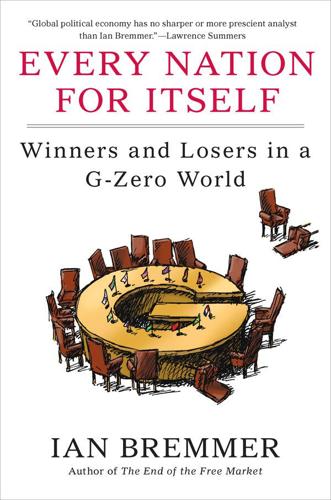
Every Nation for Itself: Winners and Losers in a G-Zero World
by
Ian Bremmer
Published 30 Apr 2012
True, China’s military has become more assertive, even aggressive, in East Asia in recent years. In 2011, the Vietnamese and Philippine governments accused Chinese patrol boats of firing warning shots and even threatening to ram energy exploration vessels operating in or around disputed territory in the South China Sea. No one seems to know for certain who within the Chinese leadership authorized these actions, but it’s evident that the country’s armed forces want to expand their (already considerable) influence within the governing bureaucracy and to test their regional room for maneuver. And China is working to build a blue-water navy capable of operating far from its shores.
…
The G-Zero is a period of great transition, and significant changes in the international balance of power stoke both competition among would-be regional powers and anxiety among those who fear they aren’t yet ready to compete. Whether the competition involves the kind of posturing we’ve seen in the South China Sea—as China, Taiwan, Vietnam, South Korea, the Philippines, and others stake claims to disputed territory—or the risk of cyberattack from states looking to frustrate potential rivals at minimum cost, companies that offer governments new offensive and defensive capabilities will find lots of new opportunities.
…
-China Relations, 157 National Development and Reform Commission, 130 National Institute of Standards and Technology, 73 natural gas, 58, 63, 147, 181, 182 in Arctic, 97 Navy, U.S., 24 Nehru, Jawaharlal, 24–25, 55 New York, N.Y., 121 NGOs, 135 Nigeria, 48, 72, 177, 182 Nile, 106 Nixon, Richard, 44, 49–50 Noda, Yoshihiko, 20 North Africa, 18, 48, 136, 139, 175, 187 North Atlantic Treaty Organization (NATO), 17, 19, 30, 117, 133–34, 192 North Korea, 70, 91, 123, 125, 152, 154, 165, 208n nuclear program of, 15, 57, 58–59, 124, 158, 161 Norway, in Arctic Council, 96–97 Nuclear Non-Proliferation Treaty (NPT), 57–59 Obama, Barack, 8–9, 11, 64, 65, 100, 113, 190, 202n oil, 3, 22, 23, 30–31, 37, 47–49, 58, 61, 114, 116, 117, 120, 125–26, 127, 141–42, 147, 160, 181–82 in Arctic, 97 OPEC’s embargos of, 48–49, 50 as priced in dollars, 81–82 oilseeds, 100 Oman, 71 Organization of the Petroleum Exporting Countries (OPEC), 48–49, 50, 100 Paine, Thomas, 185 Pakistan, 14, 57, 70, 115, 161, 182, 183 food riots in, 98 India’s conflict with, 25, 70, 152, 158, 165–66 U.S. drone attacks in, 111 Palestinians, 17, 25, 136, 158 Pan Am Flight 103, 139 Panetta, Leon, 73 PayPal, 75 Peace Corps, 90–91 Pearl Harbor, 187 People’s Action Party, Singapore, 121 People’s Liberation Army, 146 Peru, 177 Petrobras, 125–26 Pew Research Center, 13 Philippines, 23, 51, 70, 114, 129, 194 pivot states, 115–20, 136, 140–41, 155, 165, 177, 178–79 Poland, 55 pollution, 104–5 population growth, 104 Portugal, 17 power grids, 169, 171 protectionism, 77–79 protectors, 128–30 Prussia, 167 Putin, Vladimir, 24, 54, 82, 137, 141, 182 Qatar, 48, 71 Rapaport, 132 Raytheon, 129 Reagan, Ronald, 65 “Red Dragon Rising: The Coming War with China” (board game), 170–71 referees, 133–35 regional development banks, 38 Research in Motion (RIM), 33 Resolution 1973, 192 Roach, Stephen, 12 rogue states, 123–25, 138–39 Roosevelt, Franklin, 42–43 Rosneft, 127 Royal Dutch Shell, 97 Rudd, Kevin, 203n Russia, 24, 28, 30, 54, 55, 69, 73, 77, 84, 102, 121, 122, 125, 141, 168, 169, 170, 177, 183, 203n in Arctic Council, 96, 97 climate change and, 94 default on debt in, 37 energy exported by, 30 Georgia’s war with, 32, 141 grain exports banned by, 102 Internet in, 88, 89, 91, 92 nuclear program of, 59 oil prices and, 141 Peace Corps unwelcome in, 90–91 state capitalism in, 78 suspicions of U.S. in, 91 Ukraine’s ties with, 54, 137–38, 141 water security in, 105 Russian Empire, 167, 182 Rwanda, 32, 106 Sarkozy, Nicolas, 9, 38 Sata, Michael, 119 Saudi Arabia, 26, 30, 33, 48, 67, 69, 71, 114, 128, 155, 182 foreign land purchased by, 102 grain production in, 104 Internet in, 92 local hegemony of, 175–76 oil of, 114 state capitalism in, 78 Schäuble, Wolfgang, 18 Schengen Agreement, 18, 176 Schularick, Moritz, 158 Scowcroft, Brent, 163 September 11, 2001, terrorist attacks of, 13, 32, 64, 188 Serageldin, Ismail, 104 shadow states, 136–38 Shanghai Cooperation Organization, 122 Shaw, George Bernard, 37 Shi Lang, 23 Siemens, 127 Sierra Leone, 130 Singapore, 51, 71, 120, 121–22, 194 Singh, Manmohan, 26 smart grids, 72, 73 Social Security, 12, 189 Somalia, 14, 183 Sony, 75 Soreq Nuclear Research Center, 207n South Africa, 10, 26, 28, 72, 131, 177 biofuel production in, 100 South Asia, water scarcity in, 104 South China Sea, 23, 129 Southeast Asia, 59, 102 urbanization in, 99 Southern African Development Community, 120 South Korea, 15, 51, 55, 70, 71, 114, 129, 165, 173, 208n foreign land purchased by, 102 U.S. beef banned by, 103 sovereign wealth funds, 125 Soviet Union, 39, 44, 45, 47, 52, 53, 54, 72–73, 138, 168, 173, 186 coup attempt in, 92 efforts at reform in, 179–80 nuclear program of, 57 post–World War II reconstruction needed in, 39–40 shifting borders of, 182 Spain, 17, 169 separatist movements in, 181 Spiegel, Der, 8 Spielberg, Steven, 119 Splinternet, 90 Standard Chartered Bank, 3 State Development & Investment Corporation (SDIC), 129, 140 state-owned companies, 78–79, 119, 125, 139–40, 160 in China, 59, 61, 86, 144, 148 Stoltenberg, Jens, 9 Strategic Arms Reduction Treaty (2010), 59 Strategy & Tactics, 170–71 Strauss-Kahn, Dominique, 27 Stuxnet, 56, 72–73 Sudan, 32, 106, 119 Sweden, in Arctic Council, 96–97 Syria, 48, 69, 112, 117, 123, 175, 183 Taiwan, 51, 114, 129, 172–73 as exposed state, 136 Tanzania, 106 tariffs, 79 Tata Group, 128 TD-SCDMA, 86 tech bubble, 64 telecommunications standards, 33, 83–94 terrorism, 3, 70, 93, 116, 128, 170, 183 Texas, 47, 48 Thailand, 51, 71, 114, 124, 168–69, 194 collapse of currency in, 37 multinationals in, 80 water security in, 105 3G mobile phone standard, 86 Three Gorges Dam, 105 Tiananmen Square, 53, 59, 148, 163 Time, 75 trade, global, 68, 70–71, 76–80, 178, 193–95 protectionist trend in, 77–79 trade balances, 32 trade routes, 15, 24, 59 Trans-Pacific Partnership, 71 Treasury Department, U.S., 38 Tunisia, 19, 69, 112, 175 Turkey, 3, 25, 26, 55, 69, 76, 141, 148, 155, 161, 166, 179, 187 as pivot state, 117 Turkmenistan, 54 Twitter, 91 Uganda, 72, 106 Ukraine, 54, 141, 177 as shadow state, 137–38 United Arab Emirates, 26, 48, 71 United Nations, 44, 89, 97, 104, 131 Food and Agriculture Organization, 100, 103 General Assembly of, 21, 44 Security Council of, 3, 25, 44, 57, 192 World Food Program of, 103 United States, 16, 21, 25, 30, 39, 44, 47, 50, 122, 148–49, 170, 182 in Arctic Council, 96–97 as Asian power, 70–71 beef production in, 103, 105 biofuels produced in, 100 United States (cont.)

Amazing Train Journeys
by
Lonely Planet
Published 30 Sep 2018
% Go in search of the dining car as the skyscrapers of HCMC disappear from view. % Sunbathe by the South China Sea in resort towns like Nha Trang. % Ho Chi Minh City (Saigon) % Binh Thuan % Nha Trang % Dieu Tri % Quang Ngai © MATT MUNRO | LONELY PLANET © MATT MUNRO | LONELY PLANET % CLOCKWISE FROM LEFT: Martyrs’ Monument near Hanoi’s Hoan Kiem Lake; train drivers enjoy the ride; a woman sells flowers. PREVIOUS PAGE: A railway guard on the Reunification Express line. % skirting cliffs beside the South China Sea, diving in and out of the tunnels as green hills rise above and turquoise waves break far down below.
…
As Hanoi and Ho Chi Minh City are served by numerous international flights, many visitors fly into one city, make a one-way journey on the Reunification Express and depart from the other. Many nationalities will need to obtain a visa to enter Vietnam. OS Breathe in as the train squeezes through narrow alleyways approaching Hanoi. Thanh Hoa Ninh Binh Hanoi © MATT MUNRO | LONELY PLANET Hugging the coast of the South China Sea just north of Hai Van Pass, between Hue and Hoi An. Mandalay to Lashio MYANMAR (BURMA) The Myanmar’s colonial-era railways may be creaking under the weight of time, but that’s rather the appeal. The hill railway cutting northeast from Mandalay rattles and shakes across the precarious Gokteik Viaduct, defying the centuries above a seemingly bottomless valley, on its way from the British-era hill station of Pyin Oo Lwin to Lashio, the wartime terminus of the Burma Road.
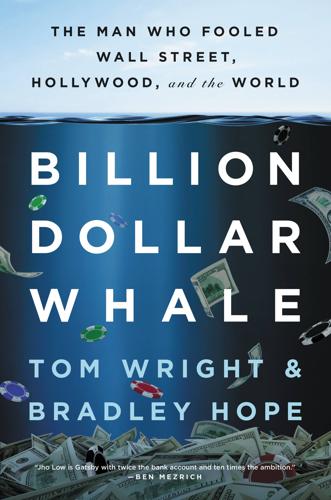
Billion Dollar Whale: The Man Who Fooled Wall Street, Hollywood, and the World
by
Tom Wright
and
Bradley Hope
Published 17 Sep 2018
Chapter 38 Losing Control Kuala Lumpur, Malaysia, March 2014 The 1MDB board of directors started their afternoon meeting with a recitation of the first seven verses from the Qur’an, known as the Al-Fatiha, for the crew and passengers of MH370, the Malaysia Airlines Boeing 777-200 jet that had gone missing in early March over the South China Sea. The plane, with 239 crew and passengers on board, was flying from Kuala Lumpur to Beijing, but just an hour after takeoff the pilot stopped making contact with air traffic control and, moments later, the plane disappeared from civil aviation radar screens. In the weeks since, Beijing’s official media had slammed Malaysia for leading a chaotic search effort, first focusing efforts on the South China Sea, north of Malaysia, before military radar showed the aircraft had gone missing over the Andaman Sea, to the west of the country.
…
Now, Obama was finally in Malaysia as part of a tour that also included close allies like Japan, South Korea, and the Philippines. His deputy national security adviser, Ben Rhodes, who was also on the trip, called Malaysia a “pivotal state” in the region—a code for a bulwark against China. In recent months, Beijing had been taking a militarist approach toward enforcing its territorial claims to the entire South China Sea. President Obama, keen to balance this aggression, promised in a joint statement with Najib to help train and equip Malaysia’s navy. The statement also stressed the two leaders’ support for a vibrant civil society. For some State Department officials who had counseled against the visit—given Najib’s government was busy locking up opposition politicians—this last pledge was derisory.
…
It was no surprise then that Najib turned away from President Obama, who had lost faith in Malaysia as a model Islamic democracy, and looked instead to China’s authoritarian rulers. Under President Xi Jinping, Beijing was extending its influence outside of its borders, whether through more aggressive territorial claims to islands in the South China Sea, or via a softer diplomatic approach, offering to build infrastructure like highways and ports in neighboring countries. Najib was quick to claim victory, saying the deals, and the end to Malaysian investigations, put the fund’s problems behind the country. The National Audit Department had finished its probe into 1MDB, but the government classified it under the Official Secrets Act, attempting to bury its contents.
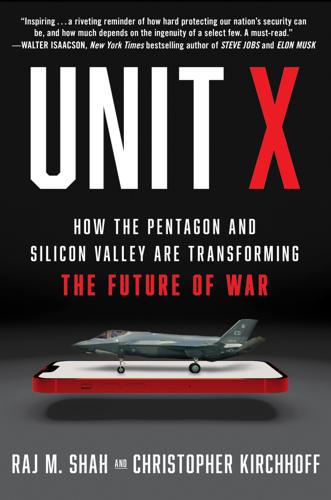
Unit X: How the Pentagon and Silicon Valley Are Transforming the Future of War
by
Raj M. Shah
and
Christopher Kirchhoff
Published 8 Jul 2024
Troops and Disrupting Airstrikes in Raqqa, Officials Say,” Washington Post, June 14, 2017, https://www.washingtonpost.com/news/checkpoint/wp/2017/06/14/isis-drones-are-attacking-u-s-troops-and-disrupting-airstrikes-in-raqqa-officials-say/; Emil Archambault and Yannick Veilleux-Lepage, “Drone Imagery in Islamic State Propaganda: Flying Like a State,” International Affairs 96, no. 4 (July 2020): 955–73, https://academic.oup.com/ia/article/96/4/955/5813533. sunk in the opening minutes of a battle: Stephen Chen, “Chinese Scientists War-Game Hypersonic Strike on US Carrier Group in South China Sea,” South China Morning Post, May 23, 2023, https://www.scmp.com/news/china/science/article/3221495/chinese-scientists-war-game-hypersonic-strike-us-carrier-group-south-china-sea#; Jon Harper, “Incoming: Can Aircraft Carriers Survive Hypersonic Weapons?,” National Defense, March 22, 2019, https://www.nationaldefensemagazine.org/articles/2019/3/22/incoming-can-aircraft-carriers-survive-hypersonic-weapons.
…
President Xi Jinping had declared himself ruler for life, suppressed self-rule in Hong Kong, disappeared dissidents and businessmen who opposed his rule, and undertaken a campaign of genocide against the Uyghurs, a minority ethnic population in Western China. And he was just as brutal abroad. He illegally possessed territory in the South China Sea, ran drills simulating the invasion of Taiwan, and used China’s economic power to coerce allegiance from weaker nations. He even stationed Chinese police forces in Chinese embassies and consulates to chase down dissidents who fled abroad. Xi was also amassing military power at an astonishing clip.
…
Those among China’s neighbors that are predisposed to lean toward America, such as the Philippines, Vietnam, and Singapore, are limited in doing so due to having China as their largest trading partner. And China’s co-option has sometimes taken the form of brazen physical seizures. In just the last decade massive Chinese military air bases have been built on disputed lands in the South China Sea. In his 2024 New Year’s address, President Xi used stronger words than ever before, calling Taiwanese “reunification” inevitable, an escalation that worried defense analysts. China has moved into the western hemisphere and signed significant military and intelligence cooperation agreements with Cuba, just sixty miles from Florida’s coast.

Thank You for Being Late: An Optimist's Guide to Thriving in the Age of Accelerations
by
Thomas L. Friedman
Published 22 Nov 2016
Russia still really would like to break up the NATO alliance—just as NATO still really does see the most important part of its mission today as containing any possible Russian aggression. China really would like to see the United States retreat from the South China Sea and shrink its power profile in Asia generally; the United States really does believe that its role in maintaining the openness of global sea lanes requires making certain that China doesn’t alone write the rules of the road for the South China Sea, let alone the Pacific. And both Russia and China still have nuclear weapons targeting America—and the rogue state of North Korea clearly aspires to have the same. The power of all of them has to be balanced by a strong American nuclear deterrent.
…
That is, the traditional great-power competition, primarily among the United States, Russia, and China, is back again (if it ever really went away) as strong as ever, with the three major powers again jockeying over spheres of influence, along golden-oldie fault lines such as the NATO–Russia frontier or the South China Sea. This competition is propelled by history, geography, and the traditional imperatives of great-power geopolitics, and is reinforced today by the rise of nationalism in Russia and China. Its contours will be determined by the balance of power between these three big nation-states. This story has been well documented, and is not my main focus.
…
If China, for its part, were to collapse into disorder, it would negatively impact everything from the cost of the shoes on your feet and the shirt on your back to the mortgage on your house to the value of the currency in your wallet. China may be America’s rival, but, in today’s interdependent world, its collapse would be far more threatening to America than its rise. Probably the worst thing a rising China might do is bully all its neighbors into toeing its line, take over more islands in the South China Sea, or demand more economic concessions from foreign investors. But a falling China could melt down the U.S. stock market and trigger a global recession, if not worse. While this high degree of interdependence poses one set of new challenges, the rising risk of state failure in a number of countries poses another.

The Quest: Energy, Security, and the Remaking of the Modern World
by
Daniel Yergin
Published 14 May 2011
Still, to underline those claims, a Chinese submarine went down to the deepest part of the sea, where its crew planted a Chinese flag.5 Energy resources are an increasingly important part of the argument. Substantial oil and gas resources are produced around the South China Sea, notably in Indonesia, Brunei, and Malaysia. Estimates of the undiscovered oil in the South China Sea range between 150 billion and 200 billion barrels, which is more than enough to stir competition, although far from proven. Although China and Vietnam have worked out some joint-production agreements, they are at odds over ownership of other exploration areas.
…
In November 2003, seven months after the invasion of Iraq, President Hu Jintao reportedly told a Communist Party conference that the country had to solve what became known as the Malacca Dilemma. This referred to China’s reliance on the Malacca Strait, the narrow waterway connecting the Indian Ocean and the South China Sea and through which passes more than 75 percent of China’s oil imports. “Certain powers have all along encroached on and tried to control navigation through the strait,” Hu is said to have declared. “Certain powers” was an obvious euphemism for the United States.2 The growing attention to risk was reinforced by what happened in 2004: the unanticipated jump in both Chinese and global demand for oil and the consequent rapidly rising prices.
…
Despite an extensive and growing economic relationship in the years that led up to August 1914, Britain and Germany were driven apart by rivalry and the suspicions aroused by their naval race, by anxiety over control of sea-lanes and access to resources, by competition over who would have what place in the sun—and by growing nationalistic fer vor. Echoes of the Anglo-German naval race can be heard in today’s arguments. Controversy over the South China Sea has already created some tension between the United States and China. That sea’s 1.3 million square miles are bounded on the west by China, Vietnam (which calls the region the East Sea), and Malaysia, down to Singapore and the Strait of Malacca; and then, coming up on the east, by Indonesia, Brunei, the Philippines, and at the top, by Taiwan.
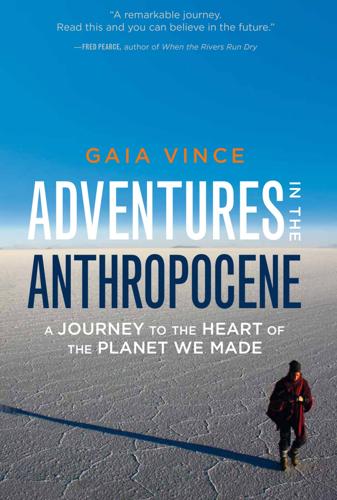
Adventures in the Anthropocene: A Journey to the Heart of the Planet We Made
by
Gaia Vince
Published 19 Oct 2014
If not, Chile will be one of the few developing countries to choose to protect its natural environment over short-term financial gain. It’s hard to imagine such a thing happening in poorer, one-party Laos. In the steamy hills of South East Asia’s Golden Triangle, on the Thai–Burmese border, I take a slow boat into tropical Laos, beginning a journey along the Mekong River that will end 2,600 kilometres downstream in the South China Sea. The Mekong is the planet’s twelfth longest river and one of its richest biodiversity sites, supporting over 1,300 varieties of fish and the world’s biggest inland fishing industry. The river basin is home to some 60 million people in six nations, who depend on it for food, water and transport.
…
‘But we eat fish, not electricity,’ he smiles. But you would be compensated, I say. ‘The problem is, we need fish to eat, not money,’ he repeats. The Mekong is second only to the Amazon in terms of fish diversity. And uniquely, more than 70% of its fish are migratory – some species migrating annually from the South China Sea in Vietnam as far as Tibet.7 These include the world’s largest freshwater fish, the incredible Mekong giant catfish, measuring more than three metres long and weighing as much as 300 kg – whose numbers have already declined by an estimated 90% in the last twenty years through overfishing. If the Don Sahong hydrodam gets built it will mean certain loss of a number of commercially important fish, but perhaps more importantly, it will risk the livelihoods of tens of thousands of people who depend on the fisheries for their daily food, such as the sardine-sized carp, known as the trey riel.
…
In the early morning, I slip down a rain-slicked muddy bank of the Mekong to board a rusty ferry downriver to Vietnam. There are few other passengers – most people are using the new highway. How different the river is now from the liquid crease folded into the mountains of northern Thailand. Here, the Mekong is fat and deep and hurtles along to the South China Sea like a migrating fish on its urgent journey south. At the border the river splits into islands and channels – the Vietnamese call the Mekong the dragon with nine tails. People here live closer than ever to the Mekong, in stilted houses that reach the bank via wobbly boards tied together with ropes.

After the Fall: Being American in the World We've Made
by
Ben Rhodes
Published 1 Jun 2021
There was also something ominous, though. Whereas past Chinese leaders spoke about China’s “core interests” (a euphemism for interests that would never be compromised and could lead to conflict) with respect to issues like Tibet and Taiwan, Xi’s definition was broader and included the entire South China Sea—maritime borders that absurdly snaked around the coastlines of several Southeast Asian nations and encompassed vast natural resources. Sizing up Xi’s ambition, Obama set to work getting him focused on climate change as an issue on which Xi could demonstrate global leadership by dealing with the air pollution that was becoming a more dangerous phenomenon in China.
…
To address China’s more assertive approach in Asia, Obama accelerated an effort to consolidate a bloc of countries committed to a set of rules and norms for commerce that could be translated into geopolitics through the Trans-Pacific Partnership (TPP), a trade agreement that included traditional U.S. allies as well as nations like Vietnam and Malaysia who were threatened by China’s claim to the South China Sea. A Vietnamese official once pointed out the importance of TPP to me as a signal of America’s presence in Asia: “We have hated the Chinese for a thousand years, but they are right here,” he said, pointing to China’s border with Vietnam. “They are going to be here. The question is: Are you?” Obama had some success in appealing to Xi’s ambitions while trying to shape how they evolved.
…
Ultimately, this shift in the center of the world’s gravity doesn’t just shape particular transactions and policies; it begins to shift how we behave, in a version of how a totalitarian government exerts control over the behavior of its citizens. For rich countries, big corporations, and prominent individuals who want access to Chinese markets or investments, there is increasingly an explicit cost in return. Do not meet with people like the Dalai Lama. Do not oppose China’s position on matters like the South China Sea. Do not investigate or even inquire about what is happening in Xinjiang. Do not comment on anything that is taking place within China’s borders. * * * — In the aftermath of Tiananmen, at the height of American leverage over global affairs, George H. W. Bush moved quickly to make amends with the Chinese Communist Party, and Bill Clinton followed suit—welcoming China into the World Trade Organization and the lucrative club of nations that agree upon a set of rules for international trade, even though China routinely broke them.
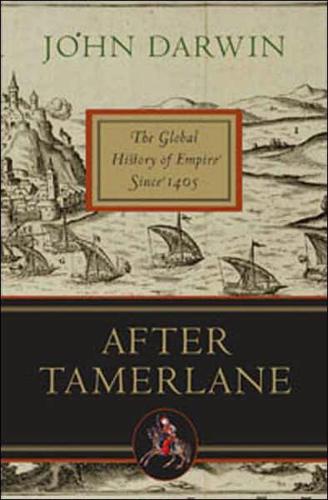
After Tamerlane: The Global History of Empire Since 1405
by
John Darwin
Published 5 Feb 2008
Notions of universal empire, a new ‘culture of travel’, and millenarian rumours and fantasies circulated around the huge land mass between Spain and the Bay of Bengal.11 Geographical location in Asia or Europe begins to look much less important for social and cultural change than a position astride Eurasia’s trunk lines of trade, or in the arid belt where long-distance travellers did not have to toil through forest, jungle or marsh.12 A similar change of emphasis can be seen among historians writing the new ‘global history of material progress’. As van Leur had suggested, the facile conclusion that Europeans had galvanized a somnolent Asia after Vasco da Gama’s arrival in India in 1498 was a travesty of the facts. A dense mercantile network already linked ports and producers between the coast of East Africa and the South China Sea. Asian merchants were not passive victims of a European takeover. Whatever their shortcomings, Asian governments were more than the predatory despots of European mythology who crushed trade and agriculture by penal taxation and arbitrary seizure. In different parts of Asia, there were market economies where the division of labour, specialized trades and urban development (the hallmarks of growth as Adam Smith had described it) looked very similar to those found in Europe.
…
Secondly, it was brutally clear that without the union of north and south the pattern of regional exchange that drove the commercial economy would function poorly at best. That meant exerting effective control over a much larger land area than any other state in Eurasia was able to rule continuously. Thirdly, it was North China’s acquisition of the vast, rich hinterland stretching away to the South China Sea that allowed it to meet its main geopolitical challenge – although not all the time. The Chinese Empire, with its highly evolved agrarian culture, confronted the nomad empires that erupted volcanically in the Inner Asian steppe. Indeed much of North China was dangerously close to the epicentres of nomadic energy – which usually formed where the steppe and the ‘sown’ came closest together.
…
The major states of South Asia mostly looked inland. Maritime trade was left to coastal merchant communities that lacked social prestige and political influence.8 So the Portuguese were able to enforce their naval supremacy in the Indian Ocean with comparative ease. East of the Malayan peninsula it was a different story. In the South China Sea or near Japan, the Portuguese were much more cautious. Here they found a niche as long-distance traders, convenient middlemen for a Ming Empire that disliked overseas activity by its own subjects and refused direct commercial relations with Japan. As a result, the Estado modulated gradually from a crusader-predator into a loose-knit network of Portuguese communities, largely made up of casados, or settlers, and the local peoples with whom they intermarried.
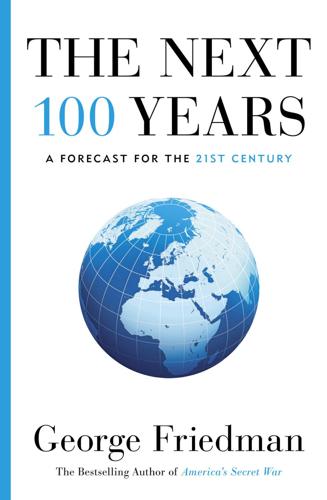
The Next 100 Years: A Forecast for the 21st Century
by
George Friedman
Published 30 Jul 2008
Military power and geographical reality created an economic reality. Other countries have lost time recovering from wars. The United States has not. It has actually grown because of them. Consider this simple fact that I'll be returning to many times. The United States Navy controls all of the oceans of the world. Whether it's a junk in the South China Sea, a dhow off the African coast, a tanker in the Persian Gulf, or a cabin cruiser in the Caribbean, every ship in the world moves under the eyes of American satellites in space and its movement is guaranteed—or denied—at will by the U.S. Navy. The combined naval force of the rest of the world doesn't come close to equaling that of the U.S.
…
PHYSICAL SAFETY AND GUARANTEE CONTROL OVER THE INTERNATIONAL TRADING SYSTEM The fact that the United States emerged from World War II not only with the world's largest navy but also with naval bases scattered around the world changed the way the world worked. As I mentioned previously, any seagoing vessel—commercial or military, from the Persian Gulf to the South China Sea to the Caribbean—could be monitored by the United States Navy, who could choose to watch it, stop it, or sink it. From the end of World War II onward, the combined weight of all of the world's existing fleets was insignificant compared to American naval power. This highlights the single most important geopolitical fact in the world: the United States controls all of the oceans.
…
Additionally, there will be the question of Japanese respect for Chinese sovereignty and the question of self-determination for maritime Russia. On a deeper level, the United States will be alarmed by Japan's rapidly growing maritime power, including sea-based and space-based military systems. Japan, still importing oil from the Persian Gulf, will be increasing its power in the South China Sea and in the Strait of Malacca. In the early 2040s, the Japanese will be concerned with the stability of the Gulf and will begin to probe and patrol in the Indian Ocean in order to protect their interests. Japan will have well-established, close economic ties with many of the island chains of the Pacific, and will begin to enter into agreements with them for satellite tracking and control stations.
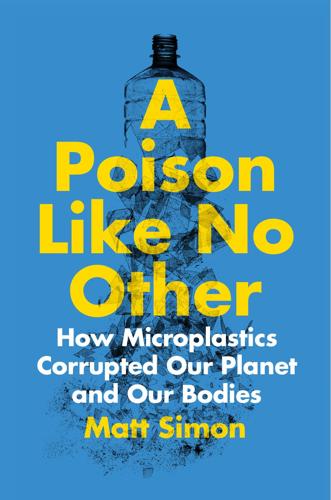
A Poison Like No Other: How Microplastics Corrupted Our Planet and Our Bodies
by
Matt Simon
Published 24 Jun 2022
Scientists have analyzed a trove of stashed-away plankton samples, collected off the coast of Scotland since the 1960s, and found a significant rise in microfiber contamination over the decades—a sad echo of Jennifer Brandon’s sediment samples.53 Others have taken water samples off Antarctica and found zooplankton tangled up in microfibers.54 Biologists not only find petroplankton and biological plankton mingling together in water samples taken from different depths but also find the particles mingling in the stomachs of captured zooplankton: baby salmon that (eventually) feed bears and humans, the crustaceans that feed fish and birds, the krill that feed whales.55 A survey in the South China Sea tested fish larvae, jellyfish, shrimp, and predatory worms and found microplastics in them all.56 Adult fish that feed on zooplankton, or on smaller fish that feed on zooplankton, then assume the particles: a sampling in the remote South Pacific turned up microplastics in 97 percent of fish species, including mahi-mahi, red snapper, and barracuda57—one foot-long Pacific chub was burdened with 104 pieces of plastic in its gut.
…
“Ingestion of Microplastics by Zooplankton in the Northeast Pacific Ocean.” Archives of Environmental Contamination and Toxicology 69:320–30. https://doi.org/10.1007 /s00244-015-0172-5. 56. Sun, Xiaoxia, Qingjie Li, Mingliang Zhu, Junhua Liang, Shan Zheng, and Yongfang Zhao. 2017. “Ingestion of Microplastics by Natural Zooplankton Groups in the Northern South China Sea.” Marine Pollution Bulletin 115 (1–2): 217–24. https://doi.org/10.1016/j.marpolbul.2016 .12.004. 57. Markic, Ana, Clarisse Niemand, James H. Bridson, Nabila Mazouni-Gaertner, Jean-Claude Gaertner, Marcus Eriksen, and Melissa Bowen. 2018. “Double Trouble in the South Pacific Subtropical Gyre: Increased Plastic Ingestion by Fish in the Oceanic Accumulation Zone.”
…
See also tires roots, 99 row covers, 90–91 Royer, Sarah-Jane, 18–19 rubber, 11, 77 ryegrass, 98–99 salmon, 56, 77–80 San Francisco Bay, 81–83 sand temperature, 44–45 Sargasso Sea, 41–43 scrubbers, 13 Sea of Plastic, 92–93 sea salt, 104 sea spray, 118–120 sea turtles, 44, 65 sea urchins, 65–66 seafloor sediments, 45, 48–49, 51 shellac, 9, 11 shipping industry, 47–48 side chains, 16–17 sin taxes, 161 single-use packaging, 164 sinkers, 53 6PPD, 77–80 size of microplastics, 24–28 slicks, 62–63 sludge, 85–89, 157 Smit, Joost, 147–148, 150, 154 soccer fields, 83 Society of the Plastics Industry. See Plastics Industry Association socks, 139, 164 soils, 6, 93–98, 118 Soltani, Neda Sharifi, 126 South China Sea, 56 South Pacific Gyre, 56–57 Spain, 92–93 spices, 104 stool, human, 109–110 index stormwater runoff, 77–83 surface area, 18–19 surface tension, 34 Sweden, 86 sweeping, 126 Szaky, Tom, 160, 161 taxation, 161, 164 teabags, 108 Tedori River, 89–90 Texas, 29 textile production, 132 thale cress, 100–102 Thomas, Larry, 157 Thompson, Richard, 60 Three Gorges Reservoir (China), 107 tire-core particles, 115–117 tires atmosphere and, 114–118 coho salmon and, 77–80 overview of issues with, 2, 162–163 toothpaste, 13 translocation, 70–74 Trasandre, Leonardo, 141–142, 166 trash wheel barges, 81 trophic transfer, 55–57, 72 Tunnell, Jace, 29, 30 turbulence, 43 turtles, 44, 65 Tyre Collective, 116 undercounting, 28 upwelling, 43 urban areas, tire-core particles and, 115–117 vacuuming, 126 vertical migration, 54 Vibrio bacteria, 58 vinyl chloride, 133 Walker, Imari, 22, 166 Wang, Zhanyun, 146 waste management companies, 160 wastewater disposal, 45–46 wastewater treatment, 31–32, 35, 39, 110, 157–158 water supplies, 4, 105–110 weathering, 24 Weddell Sea, 47 Westerink, Remco H.S., 152, 154 whales, 64 wheat, 100–102 wildlife, 93–97.

The Extreme Centre: A Warning
by
Tariq Ali
Published 22 Jan 2015
Even in parts of South America, where the Bolivarian assault on global capitalism and its priorities has been the strongest, no systemic break has occurred. There is no major capitalist or hybrid state that even wishes to challenge US global power: China, Russia, leave alone the servile European Union, may have their quibbles, but even serious disputes (Ukraine, South China Sea) within the capitalist family of nation states seem far from developing into any frontal political challenge, or military confrontation, with Washington.3 This being the case, is there a convincing alternative explanation of the global struggle being waged by the United States today, other than to maintain mastery of the world?
…
Chinese military doctrine, according to Martin Jacques, is rooted in Sun Zi’s writings: it sets much greater store on seeking to weaken and isolate the enemy than on actually fighting him. Thus China relies exclusively on trade to expand its influence. Despite its vast economic investments, it has yet to acquire a single foreign base (although it is investing in maritime facilities in Pakistan and Myanmar, in case trade routes in the South China Sea become blocked). Many have argued that the US went to war in Afghanistan and Iraq to seize the region’s energy resources, or to secure pipelines. However, the real beneficiary of both wars has been China. It has not only obtained some of the biggest contracts in Iraq, it recently also won a $3.4bn contract – the largest in Afghan history – to mine copper in Logar province.
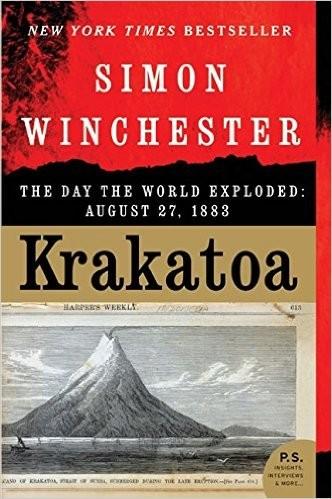
Krakatoa: The Day the World Exploded
by
Simon Winchester
Published 1 Jan 2003
He insisted they A milliner weaves topis and bonnets from alang-alang grass, the better to keep off the sun and the flies. stay and become part of his new community – offering them (unlike his fellow Dutchmen) the right to trade privately, and to take pepper and birds' nests and sea-cucumbers, all of which were readily available in Java, back to their homes across the South China Sea without interference from the monopoly of the Company. ‘They are an uncommonly clever, courteous, industrious and obliging people,’ wrote one of Coen's colleagues. ‘There is nothing you can imagine that they do not undertake and practise… Many keep eating-houses or tea-houses… or earn money fishing or carrying or conveying people.’
…
His inn possessed a large wooden veranda overlooking the sea, and he and his guests would come of an evening to sit in lounge chairs there. A remarkably lovely spectacle was spread out before them: the island-filled, mountain-ringed, sunset-spectacular Sunda Strait, with the seemingly endless passage of ships sailing (or steaming: this was 1883, after all) along it, on their various ways between the Indian Ocean and the South China Sea. This last was what convinced the Lloyd's Committee that Schuit was the ideal man for them in the town where they particularly needed to employ one of the best. He was fascinated by the passing trade, and so were his guests. He bought and mounted a large brass telescope under his porch, so that he could identify the more distant vessels.
…
.: Krakatau 1883: The Volcanic Eruption and Its Effects 396–7 Simla, India 144 Singapore 157, 158, 168, 187, 189, 190, 191, 200, 231, 233, 264n, 265, 278 Singapore Cricket Club 153 Sinkara Lake 126 Sir Robert Sale (British vessel) 230 Skerl (translator) 75 Skopje 378 slavery in Batavia 42, 44–5, 46 on Rodriguez 261 Smith, William 69 Smithsonian Institution, Washington 287n, 312 Snider-Pellarini, Antonio 72n Socoa, near Birritz 280, 281 sodium 304 Soenda Straits xv solfataras 303, 326 Solferino, battle of 195 Solo, Java 2, 124, 127, 133, 153 Solo, sultan of 124 Solomon Islands 384n Solor fort 29 South Africa 281, 287, 289 South America 67, 71, 72, 74, 308 South American Plate 308 South Atlantic 111 South China Sea 43, 161n, 182 South Georgia 274, 281 South Pole 74, 76, 84, 85, 281 Southampton 172n South-East Asia 52, 224n maps xiii, xiv Southern Africa 197 Spaan, Mr van 211n Spain, Spanish 13n, 14, 22, 29n Spanish Netherlands 29n Speenhof, Mr 46 Spice Islands, Islanders 33, 60, 297n Spice Route 11, 13n spiders, ballooning 356–9, 357, 361–2 Spitsbergen 87 Sri Lanka see Ceylon stabilists 107–8 Steers Island 314, 347n Sterling, Edward 194n Stockholm 80 Stokes, Sir George 273n Stonyhurst College 288 Stonyhurst weather observatory 270 Strachey, General Richard 271, 273n stratosphere 285, 286, 313 stratospheric ash, cloud of 289–91 Sturdy, E.W. 220n subduction 111, 112, 113, 154, 318, 319,388 subduction factories 307, 308–9, 320 subduction zones 110, 111, 114, 115, 116, 171, 308, 309, 312, 317, 319,388 Sudan 335n Suez 191 Suez Canal 143, 183 Sufi movement 334, 337 Sukarno, General 145–6, 380 Sukarnoputri, Megawati 376 Sukhumi 190 Sulawesi 24, 55, 64, 66, 137 sulphur 302 sulphur dioxide gas 243, 388, 389 Suma Pars. 27 Sumatra 1, 6, 20, 26, 31, 48, 49, 55, 61, 78, 126, 169, 309, 374 Islamicized 17, 40 mapping 22, 24, 171 van Linschoten on 25 British colonial intentions 34 volcanically unstable 114–15 splits from Java 126, 155 and P'u-tei 132 earthquakes 154 and gutta-percha 188 warnings of forthcoming eruption (1883) 207 sky completely darkened (August 1883) 234 deaths from tephra 242–3, 245 plate tectonics 317 Islam in 342 rain forest 355 Sumbawa Island 294 sun blue 287, 289 colorations 288 white corona 288 sun-compass 86 sun-gauges 267 Sunda country 125, 126 Sunda Kelapa, Jakarta 136–7, 147 Sunda (steam ferry-boat) 157, 168 Sunda Strait 3, 6, 22–3, 25–7, 45, 50, 111, 115, 119, 127, 148, 149, 155–8, 161n, 164–7, 170, 173, 175, 182, 183, 200, 204, 207, 210, 213, 219–21, 223, 226, 231, 233, 237–9, 241, 245, 249, 253, 258, 260, 272, 275, 278, 282, 298, 319, 338, 342, 345, 354, 355, 367n, 372, 376, 378–81 Sundanese 332, 333, 335 sunsets 287–93 supercontinents 73, 74, 88 Surabaya, Java 17, 153, 168, 172n, 278 Surapati 45 Surtsey Island, off Iceland 384n, 385 survival of the fittest 61–2 S.W.
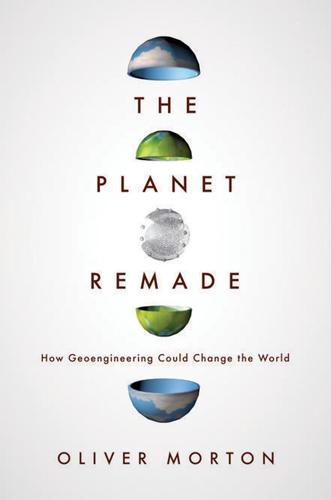
The Planet Remade: How Geoengineering Could Change the World
by
Oliver Morton
Published 26 Sep 2015
If those in power in Beijing, to take an example not at all at random, were to perceive some national benefit in deploying cloud-brightening technology in the South China Sea, why would they not act on that perception, given that China already seeds clouds from Xinjiang to Guangdong? The fact that others dispute China’s dominion over that sea might simply add to the appeal; how better to express your dominion than to commandeer the sky? And further justification could be found, as we have seen, in the fact that China is already cooling the South China Sea, along with much else, by means of the power-station aerosols that drift east from the mainland. It would be Crutzen’s stratosphere–troposphere trade-off achieved by other means: the unintentional effects of pollution replaced by intentional engineering that preserves perceived benefits while causing less harm.
…
The chance may remain small; the ability of policy makers not to think about such things even when researchers are aware of them is, as the IMO has demonstrated, quite well developed. And that could be a good thing. Such ironing-out obviously offers the possibility of conflict (especially when it comes to the South China Sea, where more or less everything offers the possibility of conflict). As with global approaches, changes that are to one country’s advantage might be to another’s detriment. At the same time – indeed, as a direct result of those risks of conflict – there is a possibility that national desires to make intentional regional changes might bring about serious strategic discussions about what could be acceptable.
…
III, 191 Rockefeller Foundation, 189, 191–2 Rockström, Johan, 308 Roebling, John, 134 Roosevelt, Eleanor, 185 Rosenfeld, Daniel, 296 Royal Society, 87, 157, 160 Ruddiman, William, 223–5, 227 Ruderman, Mal, 321 Ruskin, John, 80 Russia see USSR Rutgers University, 113 Rutherford, Ernest, 209–10, 215–16 Sagan, Carl, 89–90, 307–8, 323–7, 338–9 Sage, Rowan, 234–5, 236 Sahara Desert, 128, 241–2 Sahel, 293, 368–9, 371 St Helen, Mount, 90 St Helena, 127 Salter, Stephen, 283–6, 288, 294, 353 Sankey, Matthew, 74, 283 Sankey diagrams, 74, 75 Santer, Ben, 154 satellite-navigation systems, 118–19 Saturn, 37 Saudi Arabia, 354 scattering: back and forward, 97, 111; and cloud brightening, 273; description, 62–3, 73; effects, 39, 62–3, 73, 97; future scenarios, 370; on Mars, 89; and veilmaking, 111, 149–50 Schaefer, Vincent, 269, 272 Schaffer, Simon, 112 Schellnhuber, Hans Joachim, 21 Schneider, Stephen: on Carson show, 324; on Crutzen’s influence, 154; as editor of Climatic Change, 137, 153; and geoengineering, 138, 276–7, 325–6; and Sagan, 324, 325–6 science fiction, 63, 272, 309, 322–3, 342 Scripps Institution of Oceanography, 75–6 sea levels, 2, 222, 252, 371, 372, 374 Second World War (1939–45), 187, 190 seismology, 41 Seitz, Russell, 291 Sen, Amartya, 365 Serres, Michel, 80 SETI, 324 Shackleton, RRS, 275 Shakespeare, William, 315 Shalizi, Cosma, 228 Shell, 278 Shelley, Mary, 171 shellfish shells, 233 Sherlock, Robert, 133 shipping, and pollution, 282–3, 297–8 Shoemaker, Gene, 322, 328, 333 Shoemaker-Levy 9 (comet), 333 Simon, Herbert A., 100 sky: brightness, 97; colour, 39, 62–3; veilmaking’s effect on appearance, 111 Slingo, Tony, 273 smallpox, 227 Smil, Vaclav, 195, 212 smoke, 306–7, 319, 323 Smuts, Jan, 77 snowmaking, 270–1 sociology, 129 Socolow, Robert, 1, 28, 249 Soddy, Frederick, 209–11, 212–13, 214–15, 230, 313–14, 318 soil erosion and conservation, 185–6, 264; see also fertilizers, synthetic solar power: development of industry, 11–12; and direct-air capture, 28; inadequacy as replacement for fossil fuels, 9; as percentage of world’s energy used, 3; pros and cons, 17–18; and veilmaking and volcanic eruptions, 98, 111; see also renewable energy solar-radiation management see clouds: brightening; veilmaking soot: and climate, 297; and clouds, 279; emissions at sea, 282; and nuclear war, 307, 320; production, 274–5; self-lofting, 320, 342; warming effects, 73, 146, 279, 307 Soufrière Hills, 100, 108 South Africa, 16, 271 South America, 230, 252, 254 South China Sea, 296, 297 Southern Ocean, 252–3, 255, 257 Soviet Union see USSR space colonies, 339 space missions, 57, 60, 62, 77, 212–13, 353; interstellar, 139, 150 Spaceship Earth concept, 75–8 SpaceX, 353 Spain, 180 Spufford, Francis, 344 Stakman, E. C., 191 Stanford University, 236, 237 Star Wars programme, 156, 334 stars, twinkling effect, 39 steam power, 236 steam turbine technology, 212 Steel, Duncan, 332 strategic missile defence see Star Wars programme stratosphere: and nuclear fallout, 43–7; overview, 35–56; and volcanic eruptions, 84–6, 89–99; see also ozone layer; veilmaking Strauss, Lewis, 316 the sublime, 41, 101, 123, 300, 337–8, 345 Suess, Eduard, 44 Suess, Hans, 44 sulphur and sulphates: cooling effects, 84–5, 89–99, 107, 275–80; cutting emissions, 282–3; and global warming, 279–80; sulphur cycle, 274–5; and veilmaking, 107–12, 280–1 the sun, 97, 216 sunlight: and climate change, 65; effects, 62–5; historical changes in pattern, 222–3; and plant growth, 97; reflectivity by clouds, 273–4, 283–8, 292; reflectivity by Earth’s surface, 71–2, 289–93; regional methods of reflecting, 289–93; and sunsets, 268; see also clouds: brightening; scattering; veilmaking sunsets, 86, 268 sunshine geoengineering see clouds: brightening; veilmaking supernovae, 316–17, 321–2 Sutton, Mark, 207–8 Tambora, Mount, 86, 93, 108, 122, 127–8 Tansley, Arthur, 74, 76–7, 81 Taubo, 93 Teller, Edward: and asteroid impact avoidance, 331, 334–5; background, 136, 148; and environmental warfare, 136, 340; and GCMs, 317; life at Livermore, 148–9, 317; and nuclear explosives, 319–20; and nuclear weapons, 136, 148, 312; and veilmaking, 149, 151, 154 Texas, 248 Thailand, 271 thallium, 178 thermodynamics, 65–6, 74–5, 80, 245–6; second law, 214, 215 thermosphere, 41 thermostats, 129, 151, 164 Thomas, Jim, 369 Thompson, George, 134 Thoreau, Henry David, 134, 268 Three Mile Island accident (1979), 15 Titan (moon), 37 Titley, David, 116 Toba, 93–4 Toon, Brian, 89–90, 307–8, 323 trees: and carbon dioxide, 224–5, 233, 234, 236, 259–61; and Earth’s reflectivity of sunlight, 72, 130, 260 Trenberth, Kevin, 66, 96, 283 Trenberth diagram, 66–8, 73–4, 79 tropopause, 46, 111 troposphere, 46, 85, 199–200 tsunamis, 340 TTAPS, 307–8, 323–7 Turco, Richard, 307–8, 323, 326 Turner, Frederick, 177–8 Turner, J.
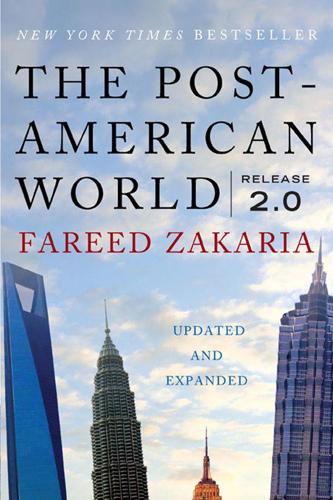
The Post-American World: Release 2.0
by
Fareed Zakaria
Published 1 Jan 2008
When asked in polls in 2007 whom they trusted to wield global power, respondents in countries like Thailand and Indonesia, traditional U.S. allies, chose China over the United States. Even in Australia, favorable attitudes toward China and the United States are evenly balanced. Until recently, memories of China’s revolutionary foreign policy—which in practice meant using the Chinese diaspora to foment trouble—lingered. Beijing’s invasion of Vietnam, its claims in the South China Sea, and its border disputes with Russia and India had given China the image of a prickly and troublesome neighbor. By the late 1990s, however, China had adopted a very different regional policy, which became especially clear from its constructive role in the region after the East Asian crisis of 1997.
…
What if that hegemony is waning? America no longer has the only large market in the world. The dollar is unlikely to retain its totemic position forever as the reserve currency, yielding to a basket that is largely composed of euros and dollars but includes other currencies too. In certain areas—the South China Sea, for example—U.S. military force is likely to be less relevant than that of China. In international negotiations, America will have to bargain and compromise with others. Does all this add up to instability and disorder? Not necessarily. Two hundred years of Anglo-American hegemony has in fact created a system that is not as fragile as it might have been in the 1920s and 1930s.
…
Petersburg, 83 Salafist Group for Call and Combat (GSPC), 13 salwar kurta, 88 samba, 95 Sarbanes-Oxley Act (2002), 221 saris, 88 Sarkozy, Nicolas, 252–53 Saudi Arabia, 8, 11, 13–14, 32, 38, 55, 125, 168, 232–33, 248n, 264, 278 savings rate, 25, 50, 104, 137–39, 151–52, 216–19, 233, 283 Schumer, Chuck, 220–21 Schwab, Klaus, 147 Schwarz, Benjamin, 37 scientific research, 68–70, 98, 123, 192, 198, 199, 200–202, 208–12, 218–19 Securities and Exchange Commission, 48 Security Council, UN, 40, 101, 118, 131, 165n, 254, 272 September 11, 2001, terrorist attacks, xi, 6, 10–11, 14, 16, 17, 246, 247, 265, 271, 272, 277, 278 service sector, 43, 148, 151, 230–31 Setser, Brad, 48, 55 Shah Jahan, 70 Shakespeare Wallah, 94 Shanghai, 34, 102–3, 109, 118, 150, 185, 211 Shanghai Stock Exchange, 109–10, 118 Shanmugaratnam, Tharman, 210–11 sharia, 16 Sharma, Ruchir, 179 Sherif, Abdul-Aziz el-, 15 Shia Muslims, 11–12, 263 shopping malls, 3 Shultz, George, 265 Sicily, 37 Sikhs, 180 Silicon Valley, 48, 215 Singapore, 3, 26, 32, 115–16, 132, 153, 185, 195–96, 200, 209, 210–12 Singh, Manmohan, 159, 160, 162, 169 Sino-African summit (2006), 130 Sky News, 96 Slaughter, Anne-Marie, 268 slavery, 79 Slovakia, 223 “smiley curve,” 203 socialism, 23, 24, 120, 144, 157, 161, 173, 178, 197 Social Security, 235 Socrates, 123 “soft power,” 121, 186, 259 Somalia, 185, 223 South Africa, 3, 4, 53, 98, 132, 188–90, 257, 258 South America, 78–79 South Asia, 21n, 52, 60 South China Sea, 133, 267 South Korea, 2, 20, 26, 40–41, 55, 84, 93, 95, 98, 104, 112, 115, 116, 132, 157, 171, 214 Soviet Union: Afghanistan invaded by, 13, 101, 284 Chinese relations of, 133, 137, 142 collapse of, 9, 23–24, 53, 243, 244–45, 284 Communist regime of, 23–24, 120 Czechoslovakia invaded by (1968), 252 expansionism of, 10, 173, 256, 284 space program of, 71, 232 as superpower, 10, 101, 120, 173, 256, 266, 284 technology sector of, 71 U.S. relations with, 4, 8–9, 20, 38, 141, 143, 144, 163–66, 196, 199, 244–45, 247, 252, 254, 255–56, 274, 275, 277, 284 in World War II, 37 see also Russia space program, 71, 232 Spain, 17, 116, 187, 239–41, 278, 280 Spanish language, 96 special interests, 234, 236 Speer, Albert, 103 Speer, Albert, Jr., 103 Spence, Jonathan, 124 Spiegel, 251 Spielberg, Steven, 105 Sputnik launching (1957), 232 Sri Lanka, 157, 165 Stalin, Joseph, 37, 196, 254, 275, 277 Starbucks, 105 state-directed capitalism, 32 state socialism, 144 “stealth reforms,” 160 steel, 103–4 Steingart, Gabor, 50 Stiglitz, Joseph, 139–40 stocks, 43, 109–10, 222 sub-Saharan Africa, 80 Sudan, 31, 38, 41, 131, 188, 273 Suez Canal, 20, 168, 186, 195 Suez Canal crisis (1956), 20, 168 suicide bombings, 14–15 Summers, Lawrence, 246 Sunni Muslims, 11–12, 263 Sun Yat-sen, 84, 86 Sun Zi, 143 Sweden, 24, 116, 200 Switzerland, 200 Syria, 6, 8, 157 Taiwan, 2, 20, 26, 35, 112, 116, 118, 119, 132, 135–36, 137, 141, 142, 165n, 214, 263, 264 Taiwan Strait, 20 Taj Mahal, 70–71 Talbot, Strobe, 107 Taliban, 13, 172, 241 Tamil Nadu, 180 tariffs, 40, 197 Tata Group, 148–49, 153 Tata Motors, 230 Nano of, 229–30 taxation, 40, 64, 72, 75, 83–84, 107–8, 223, 235, 236, 262 Tay, Simon, 259 technology, xiii, 9, 36, 43, 58, 60–61, 87, 92–93, 113, 135, 142, 148–49, 161, 198, 199, 200–212, 215, 217, 224–26, 228–32, 233 Tehran Conference (1943), 254 telecommunications industry, 161 television, 95, 96 tennis, 219–20 terrorism, 5, 6, 9, 10–19, 29, 34, 59, 241, 246, 247, 264, 269–70, 271, 272, 276–80 textile industry, 28 Thailand, 28, 132 Tharoor, Shashi, 165n Thatcher, Margaret, 24, 197, 225, 244, 245 Third Plenum of the Eleventh Central Committee of the Communist Party (1978), 101–2 Third World, 10, 39, 102, 161, 177, 229, 232 Thirty Years’ War, 123 Thornton, John, 114 Tiananmen Square massacre (1989), 27, 137, 274–75 Tibet, 165 Time, 96 Times (London), 96 Times Higher Educational Supplement, 207 Tojo Hideki, 37 Tokyo, 91–92 totalitarianism, 112–17, 274 Toynbee, Arnold, 185, 197 Toyota, 225–26 trade balance, 21, 36, 57–58, 104–5, 216 traditional culture, 90–99 “treasure ships,” 62–63 treasury bills, U.S., 138 Treasury Department, U.S., 11 Trends in International Mathematics and Science Study (TIMSS), 208–9 Truman, Harry S., 253, 255–56 Tsongas, Paul, 245 tsunami disaster (2005), 155 Tunisia, 209 Turkey, 4, 8, 17, 28–29, 84, 115, 273–74, 278 Turkey bombings (2003), 17 Twain, Mark, 271 Ukraine, 3, 260 unemployment, xi, xiii, 2, 227 unemployment rate, 212, 217, 226, 284 unilateralism, 59, 246–55, 264, 267–69 “uni-multipolarity,” 53 unipolar order, 1–5, 39, 52, 233, 240–42, 243–50, 266–67, 274–75 United Arab Emirates, 3 United Nations, 40, 41, 101, 118, 131, 157, 165n, 213, 240, 244, 250, 253, 254, 264, 268, 272 United Nations Human Development Index, 157 United Nations Population Division, 213 United States, 239–85 African policy of, 270–71, 273 alliances of, 243–50, 270–75 Asian policies of, 90, 241–42, 245, 259–60, 266, 267, 273–74, 280–81 automobile industry of, 192, 225, 230, 244 British Empire compared with, 185–86, 189–90, 197–99, 237, 261–63, 266, 268 British relations of, 168, 189, 194–97, 241, 254, 261, 274 budget deficits of, 139, 219, 241–42, 244 capitalism in, xi, 23, 28, 47, 60, 120, 200–202, 223–24 China compared with, 100, 103, 108, 193, 200, 242, 263 Chinese relations of, 100, 104, 105–6, 108, 118, 136–44, 176–77, 190, 236, 254, 260–61, 263, 264, 266, 269, 280–82 colonial period of, 65, 194 culture of, xi, 1–5, 36, 90–91, 93, 94, 204, 212–16, 223–26, 271–72, 275–85 democratic ideals of, 141, 167, 232–38, 264, 274–75 demographics of, 212–16 diversity of, 212–16, 278, 283–84 domestic market of, 224, 241, 267, 283 economy of, xi–xiii, 18, 20, 22, 25–26, 29, 43–49, 50, 56–57, 86–87, 118–19, 120, 140, 152, 182, 186, 191, 192, 197–99, 212–19, 233–34, 237–38, 241, 244, 245, 255, 275, 282–83 education in, 48, 58, 200, 204–12, 215, 218–19, 225, 233 elections in, 245, 251, 276, 278–79 energy needs of, 38, 232–33 engineers trained in, 204–8 European relations of, 244–45, 251–55, 273–74 family values in, 93 film industry of, 90, 94 financial markets of, 217, 219–22 foreign investment in, 219 foreign policy of, 8, 42, 52, 59, 125, 130, 131, 132, 140, 142–44, 167–68, 189–90, 223, 235–85 foreign trade of, 20–21, 36, 57–58, 104, 200, 216, 217, 280–83 French relations of, 251, 252–53 future development of, 1–5, 94–99, 199–203, 204, 239–85 German relations of, 244, 245, 251 global influence of, see post-American world gross domestic product (GDP) of, 18, 104, 118–19, 191, 196, 198–99, 200, 207–8, 215, 217, 218, 219n, 255 growth rate for, 212–16, 233–34, 243 health care in, 225–26, 233n, 283 immigration to, 61, 87, 167, 212–16, 233, 272, 277, 278, 280, 282 income levels of, 212, 216, 217–18, 219 India compared with, 155–56, 200, 226–27 Indian relations of, 54–55, 144, 160, 166–68, 173, 174–78, 182, 249–50, 263, 264, 266, 269, 271, 274, 283 industrialization of, 2, 20, 65, 193, 200, 204, 217, 218 infrastructure of, 152 insularity of, 223–26, 275–85 Japanese relations of, 245, 266 labor force of, 225–26 legal system of, 225 manufacturing sector of, 202–3 middle class in, 226–32 Middle East policies of, 8, 31, 52, 274 military forces of, xi, 48, 54, 140, 142–43, 174–78, 182, 185, 198–99, 241, 254, 259–63, 265, 267, 269–71 military spending of, 18, 105n, 142, 198–99, 241, 262 Muslim population of, 272, 276, 278 national debt of, 138, 140, 217–19, 241–42 nationalism in, 36–39 nuclear weapons of, 140, 142, 174–78, 265 oil needs of, 38 political system of, 186, 216, 232–38, 275–85 population of, 22, 50–51, 100, 200, 212–16 productivity of, 200, 281, 282, 283 United States (continued) religious attitudes in, 122 rhetoric of fear in, 275–85 Russian relations of, 54, 190, 241, 247, 260, 266, 269 savings rate of, 216–19, 233, 241, 283 scientific research in, 198, 199, 200, 218–19 Soviet relations of, 4, 8–9, 20, 38, 141, 143, 144, 163–66, 196, 199, 244–45, 247, 252, 254, 255–56, 274, 275, 277, 284 special interests in, 234, 236 as superpower, 4, 49–61, 117, 120, 142–44, 182, 223–85 taxation in, 108, 223, 235, 236, 262 technology sector of, xiii, 58, 61, 198, 199, 200–212, 215, 217, 224–25, 228, 233 terrorist attacks against, 6, 10–11, 13, 16, 17, 29, 59, 241, 246, 247, 265, 270, 271, 272, 276, 277–80 unemployment in, xi, 227 unemployment rate in, 217, 226, 284 unilateralism of, 59, 246–55, 264–65, 267–69 as UN member, 118, 254, 264, 272 wage levels in, 229 in World War II, 36–37 urbanization, 102–3, 106, 110, 150, 153–55, 160, 167 U.S.
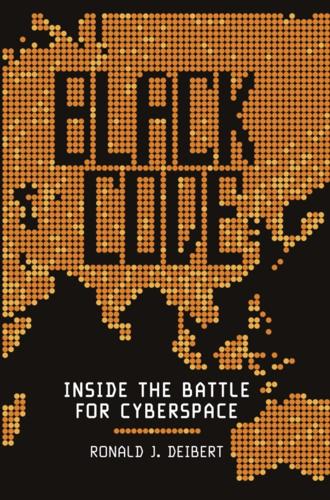
Black Code: Inside the Battle for Cyberspace
by
Ronald J. Deibert
Published 13 May 2013
Hainan Island is home to the Lingshui signals intelligence facility and the Third Technical Department of the Government of China’s People’s Liberation Army (PLA). Established in the 1960s, and upgraded substantially in the 1990s, the signals intelligence facility is staffed by thousands of analysts, and its primary mission is to monitor U.S. naval activity in the South China Sea. (It’s a big island, to be sure, but that a signals intelligence facility of some renown happens to be located there is intriguing.) The tool used to hack into government agencies, media outlets, and others, was a trojan called Ghost RAT that gave the attackers the ability to remove any file from the computers under their control.
…
Despite the outrage after the release of our report and the condemnation levelled at Skype for colluding with Chinese authorities, four years later the same system is still in place. In fact, it is now more elaborately designed and frequently updated, sometimes on a daily basis in response to current events like the ongoing dispute with Japan over islands in the South China Sea, or the controversy around disgraced Communist Party official Bo Xilai. In fact, all Internet companies operating in China – Baidu, Sina, Tencent QQ, Youku, and others – are required to stop the “spread of harmful information” over their networks. The policing is typically undertaken through filtering and surveillance of the type TOM-Skype engages in, enforcing the use of real names in registration processes (to eliminate anonymous postings), and even direct intervention by paid officials in forums warning users not to engage in unwelcome, perhaps even illegal, discourse.
…
Like those of many other countries, China’s military planners have fully integrated cyber warfare into their military doctrine and operational plans. Because the U.S. has a military alliance with Taiwan and Japan, in the event of a regional war – say, over Taiwan or the disputed islands of the South China Sea – the People’s Liberation Army would be hard pressed not to deploy its cyber warfare assets to confuse, deter, and even disable American military and civilian assets. As the Stuxnet worm aptly demonstrated in 2010, a menacing virus or trojan horse can be used to sabotage critical infrastructure.
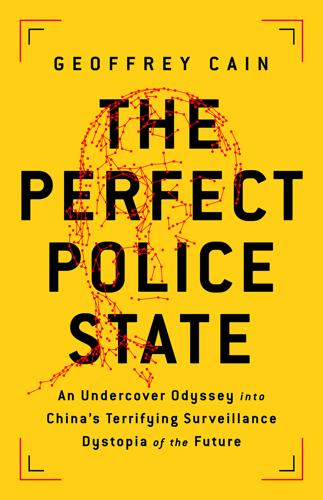
The Perfect Police State: An Undercover Odyssey Into China's Terrifying Surveillance Dystopia of the Future
by
Geoffrey Cain
Published 28 Jun 2021
Yimou Lee, David Lague, and Ben Blanchard, “Special Report: China Launches ‘Gray-Zone’ Warfare to Subdue Taiwan,” Reuters, December 10, 2020, https://www.reuters.com/article/hongkong-taiwan-military-idUSKBN28K1GS. 28. Karen Leigh, Peter Martin, and Adrian Leung, “Troubled Waters: Where the US and China Could Clash in the South China Sea,” Bloomberg, December 17, 2020, https://www.bloomberg.com/graphics/2020-south-china-sea-miscalculation/. 29. David Crawshaw and Miriam Berger, “China Beat Back Covid-19 in 2020. Then It Really Flexed Its Muscles at Home and Abroad,” Washington Post, December 28, 2020, https://www.washingtonpost.com/world/2020/12/28/china-2020-major-stories/. 30.
…
In October 2020, China broadcast a video showing a simulated invasion of Taiwan, and sent fighter jets threateningly close to its airspace. China had long sought to “reclaim” Taiwan, ever since anti-communist forces were given control of the island in October 1945 and the Chinese Communist Party took power in mainland China in 1949.27 Throughout 2020, China undermined international law by claiming large swathes of the South China Sea, where it harassed American, Indian, Vietnamese, and other countries’ naval vessels.28 As China continued to strengthen its vast censorship apparatus, it imprisoned a tycoon and two professors who criticized Xi Jinping’s leadership and China’s response to Covid-19.29 In November, retaliating against Australia, China imposed tariffs of up to 212 percent on Australian wine, cutting off the industry’s biggest export market.
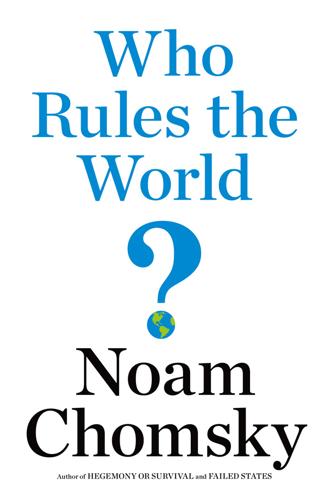
Who Rules the World?
by
Noam Chomsky
THE CHALLENGES TODAY: EAST ASIA Beginning with the “American lake,” some eyebrows might be raised over the report in mid-December 2015 that “an American B-52 bomber on a routine mission over the South China Sea unintentionally flew within two nautical miles of an artificial island built by China, senior defense officials said, exacerbating a hotly divisive issue for Washington and Beijing.”9 Those familiar with the grim record of the seventy years of the nuclear weapons era will be all too aware that this is the kind of incident that has often come perilously close to igniting terminal nuclear war. One need not be a supporter of China’s provocative and aggressive actions in the South China Sea to notice that the incident did not involve a Chinese nuclear-capable bomber in the Caribbean, or off the coast of California, where China has no pretensions of establishing a “Chinese lake.”
…
Schlosser, Eric School of the Americas Schoultz, Lars Science secrecy Securities and Exchange Commission (SEC) separation of church and state Serbia settler-colonial societies Shalit, Gilad Shamir, Yitzhak Shanghai Cooperation Organization (SCO) Sharon, Ariel Shenon, Philip Shiites Shin Bet Shoigu, Sergei Shultz, George Sinai Peninsula Sisi, Abdul Fattah al- slavery Smith, Adam Smith, Lamar Snowden, Edward Solow, Robert Somalia Sourani, Raji South Africa South America South China Sea Southeast Asia South Korea South Vietnam Soviet Union collapse of Cuba and Israel and nuclear weapons and Spanish-American War Stalin, Joseph Stalingrad, Battle of Stark, USS, attack State Department Policy Planning Staff terrorist list Stearns, Monteagle Stern, Sheldon Stiglitz, Joseph Stockholm International Peace Research Institute (SIPRI) Story, Joseph Strategic Air Command (SAC) Strategic Command (STRATCOM) Strategic Defense Initiative (“Star Wars”) strategic primacy Sudan Suharto Summers, Lawrence SWAPO Sykes-Picot agreement Syria Tacitus Taliban tariffs taxation Taylor, William teachers Temple, Henry John (Lord Palmerston) terra nullius terrorism.

The Uninhabitable Earth: Life After Warming
by
David Wallace-Wells
Published 19 Feb 2019
Which does cast a climate shroud over the prospect, now so much taken for granted among the Nostradamuses of geopolitics, of an Asian century. Whatever the course of climate change, China will surely continue its ascent, but it will do so while fighting back the ocean, as well—perhaps one reason it is already so focused on establishing control over the South China Sea. Nearly two-thirds of the world’s major cities are on the coast—not to mention its power plants, ports, navy bases, farmlands, fisheries, river deltas, marshlands, and rice paddies—and even those above ten feet will flood much more easily, and much more regularly, if the water gets that high.
…
The drowning of American navy bases by sea-level rise is trouble enough, and the melting of the Arctic promises to open an entirely new theater of conflict, once nearly as foreign-seeming as the space race. (It also positions the country primarily against America’s old rivals the Russians, now revived as adversaries.) Given the right war-gaming cast of mind, it is also possible to see the aggressive Chinese construction activity in the South China Sea, where whole new artificial islands have been erected for military use, as a kind of dry run, so to speak, for life as a superpower in a flooded world. The strategic opportunity is clear, with so many of the existing footholds—like all those low-lying islands the United States once used to stepping-stone its own empire across the Pacific—expected to disappear by the end of the century, if not before.
…
The Center for Climate and Security, a state-focused think tank, organizes the threats from climate change into six categories: “Catch-22 states,” in which governments have responded to local climate challenges—to agriculture, for example—by turning toward a global marketplace that is now more than ever vulnerable to climate shocks; “brittle states,” stable on the surface—but only by a run of good climate luck; “fragile states,” such as Sudan, Yemen, and Bangladesh, where climate impacts have already eaten into trust in state authority, or worse; “disputed zones among states,” like the South China Sea or Arctic; “disappearing states,” which they mean literally, as in the case of the Maldives; and “non-state actors,” like ISIS, which can seize local resources, such as freshwater, as a way of applying leverage against the nominal state authority or the local population. In each case, climate is not the sole cause but the spark igniting a complex bundle of social kindling.
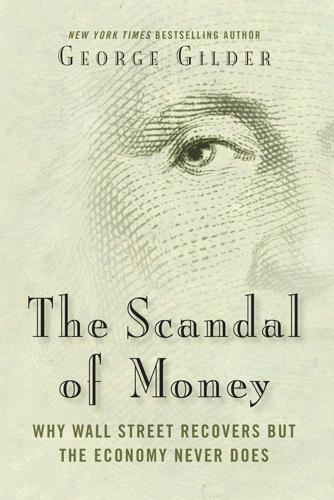
The Scandal of Money
by
George Gilder
Published 23 Feb 2016
Trying to respond to all the images at once will produce not a coherent or sophisticated policy but a stream of spastic reflexes, as we have seen in the Obama administration. It blandishes the Chinese for silly and insincere commitments to carbon dioxide abatement one day and the next dispatches warships to the Spratly Islands to discourage land reclamation projects on reefs in the South China Sea. Denunciations of the Chinese for trumped-up charges of currency “manipulation” are followed by obsequious entreaties to participate in expanded Pacific trade or climate change treaties. Silly tough-guy postures and blind monotheories can be found on the Right as well. Does the incendiary sage David Stockman, President Reagan’s budget director, really mean it when he describes the country as “the Great China Ponzi” or as “an entire nation of 1.3 billion . . . gone mad building, borrowing, speculating, scheming, cheating, lying and stealing”?
…
See also stagnation seigniorage, 12, 34, 67, 80 Shanghai, 30, 42–43, 48 Shannon, Claude, 64, 133, 138–40, 143, 168, 173–74 Shell, 158–59 Shelton, Judy, 162–63 Shelton bonds, 163 Silicon Valley, xvii, xxii, 18, 50, 70, 87, 115, 117–20, 122–25, 127–29, 149, 164, 169, 171 Singapore, 106 Skousen, Mark, xv, 32–33 Smith, Adam, xx socialism, socialists, xviii, 5, 20, 25, 31, 150, 152–53 Social Security, 15, 55 Solyndra, 123 Sony, 158 Soros, George, 89, 96–97, 110 South China Sea, 40 Southwest Airlines, 9 Soviet Union, 42, 156. See also Union of Soviet Socialist Republics (USSR) Spain, 55, 57, 94, 117 Spratly Islands, 40 stagnation, xiii–xv, 31, 84, 87, 91, 96, 117, 129, 134, 149, 152, 162, 164. See also secular stagnation Stiglitz, Joseph, 89 stimulus, xiii, xviii, 14, 150, 171 Stockman, David, 40, 48, 50 Stone Age, 19, 169 Summers, Lawrence “Larry,” 3, 7, 56, 114, 134, 150 Sun Microsystems, 119 Swanson’s Law, 18 Sweden, Swedes, 5, 36 Szabo, Nick, 64, 72–76, 160 T Taiwan, Taiwanese, 30, 46–48, 106 Tamny, John, 11 tax cuts, xiv, 12, 151, 153 Taylor, John, 35 Taylor Rule, 35 technology, xi, xviii–xix, xxi–xxii, 2–3, 5–9, 12–13, 19, 41, 43, 45, 56–58, 63–67, 70, 83, 90, 92, 100, 143, 158, 171 Tel Aviv, 118 Texas, 55, 99 Thailand, 110 Thiel, Peter, xi, 14, 56 third world, the, 6, 118, 152 Tiananmen Square, 29, 43 Troubled Asset Relief Program, 55 Trump, Donald, 40, 113 Turing, Alan, 64, 138, 168, 174 Turing machine, 138 Turner, Adair, 88–96, 110 Turner-Piketty thesis, 93, 96 Tversky, Amos, xx Twilight of Sovereignty (Wriston), 101 U UBS, 127 unemployment rates, xi–xiii, 35, 55, 100, 150, 152 Unenumerated, 73 “unicorns,” 50, 87, 119–23, 171 Union of Soviet Socialist Republics (USSR), 42.
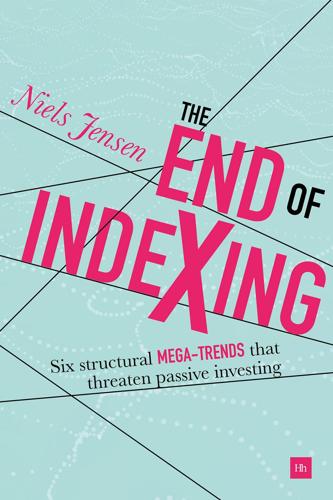
The End of Indexing: Six Structural Mega-Trends That Threaten Passive Investing
by
Niels Jensen
Published 25 Mar 2018
As a natural consequence of falling risk tolerance, the threat power is also in decline. Under President Obama, the US made an unusually low number of credible threats (ISIS kept them busy), and a very risk-averse Europe made virtually none. Meanwhile, China was busy making credible threats in Asia. In 2011, China collided with Japan in the South China Sea and, only a few years later, the Chinese played silly games again – this time with the Philippines being the counterparty. Finally, as far as coalition power is concerned, there appears to be a growing perception in the West that perhaps we shouldn’t rely on our traditional coalition partners the way we have done for many years.
…
As we entered the new millennium, total debt-to-GDP in China was around 120%. As the Global Financial Crisis hit in 2008, debt-to-GDP was already over 200%, and now it is almost 350%, and many Chinese banks are in the danger zone. One final point on China – it is not only when dealing with macroeconomic numbers that the Chinese cheat. Take the crisis in the South China Sea, where China first had a territorial dispute with Japan, and then one with the Philippines. Despite the international court in The Hague ruling against China, it chose to simply ignore that ruling. That sort of behaviour clearly weakens China’s coalition power, and could potentially turn the entire world against it.
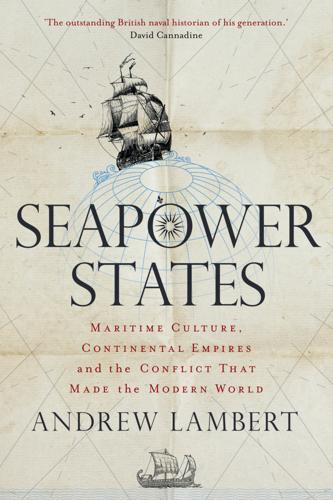
Seapower States: Maritime Culture, Continental Empires and the Conflict That Made the Modern World
by
Andrew Lambert
Published 1 Oct 2018
Yale Center for British Art, Paul Mellon Collection. Maps The World in the Age of Empire The Mediterranean The Siege of Tyre The Athenian Empire Ancient Athens Rome and Carthage during the Second Punic War Venetian Bases and Caravan Routes The Battle of Lepanto The Dutch Empire Rhodes The Portuguese Empire The British Empire The South China Sea ACKNOWLEDGEMENTS As any manuscript heads for publication authors return to the beginning, to reflect on the debt they owe to others, fellow scholars, students, family and friends, delightfully loose categories reflecting the reality that the first and last are often one and the same. Furthermore, as a historian I am acutely conscious of my debt to those who have gone before, a debt we honour by reflecting on works written long go, for very different audiences.
…
Eliminating the ungoverned oceanic space which enabled that choice would pave the way for a global state, leaving seapower identity to tertiary operators, superpower clients. Yet whichever great continental power became the universal monarchy there would soon be maritime barbarians hammering at their sea gates. The South China Sea Chinese and Russian responses to the challenge of seapower culture echo those of older continental hegemons: censorship, command economies, denial strategies and the continentalisation of maritime space with legal restraints, physical barriers, land-based weapons and strategy. While China has found new tools for this mission, notably in the extension of territorial jurisdiction far out to sea, using international legislation to restrict the free use of the sea, it contains powerful echoes of Catherine II’s ‘Armed Neutrality’ of 1780, which her son revived in 1801, and successive Russian attempts to close the Baltic to British warships.
…
Mahan, The Problem of Asia, Boston: Little, Brown, 1900, p. 38. Corbett concurred in ‘The Capture of Private Property at Sea’, The Nineteenth Century (June 1907), reprinted in A. T. Mahan, ed., Some Neglected Aspects of War, Boston: Little, Brown, 1907. 3. This is also, misleadingly, referred to as the ‘South China Sea’. 4. A. Patalano, ‘Japan as a Maritime Power: Deterrence, Diplomacy and Maritime Security’, in M. M. McCarthy, ed., The Handbook of Japanese Foreign Policy, London: Routledge, 2018, pp. 155–72. I am indebted to Dr Patalano for an advance copy of his important paper. Conclusion 1. The Oxford English Dictionary ignores the issue of identity.

Four Battlegrounds
by
Paul Scharre
Published 18 Jan 2023
America’s strategy of engagement assumed economic liberalization would pave the way for political liberalization. But political reform had not occurred, and even economic openness was a one-way street. Internationally, China’s “peaceful rise,” as its leaders had claimed, was turning out to be anything but. In the 2010s, China began an aggressive campaign to militarize the South China Sea, threatening the Philippines, Taiwan, Vietnam, Malaysia, and Indonesia and destabilizing the region. Tensions rose across the Taiwan Straits, as U.S. leaders feared China was building a military option to absorb democratic Taiwan. Washington had, for a while, been patient with various tensions in the relationship, confident that time was on their side, but by the time President Trump came to office, the stage was set for a “reckoning” with China.
…
Schmidt explained, “China and the United States have many common goals,” citing AI safety and climate change. “Both countries have benefited from trade between the two countries for a long time.” Three decades of engagement has meant that the American and Chinese AI ecosystems are strongly connected, yet China’s militarization of the South China Sea, bullying of its neighbors, and “predatory economics” led the U.S. government to declare China a “strategic competitor” in 2018. China’s mass detention of over one million Uighurs in Xinjiang, eroding Hong Kong’s freedoms, and unwillingness to change its illiberal economic practices further hardened views in Washington.
…
Even AI systems that retained a human “in the loop” for lethal decision-making could cause harm if they gave faulty recommendations and humans acted on them. While nations are responsible for their own test and evaluation processes, one country’s failure to adequately test its AI systems could undermine other nations’ security. Accidents could lead to unintended escalation, for example if a drone went awry in a tense geographic area, such as the South China Sea or Taiwan Strait. While nations hardly have an incentive for helping their competitors’ systems to work well, they would want to know that an adversary’s military forces remain under control. The possibility that an autonomous system could be malfunctioning could introduce a dangerous element of ambiguity into crises, with nations unsure whether an adversary’s drones’ actions are the result of an accident or a deliberate human decision.
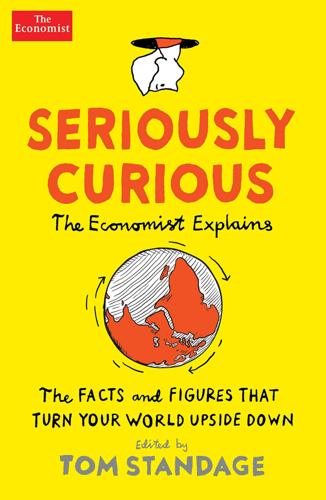
Seriously Curious: The Facts and Figures That Turn Our World Upside Down
by
Tom Standage
Published 27 Nov 2018
What has changed in recent years is that a larger share of the money is going towards imports: in contrast with the 2000s, when the West’s armies undertook the bulk of the fighting in Afghanistan and Iraq, many nations sucked into this decade’s disputes lack military muscle and have no domestic industry capable of building it up. With America less eager to be the world’s policeman, they see a greater need for buying their own kit. Vietnam, which borders the South China Sea, imported three times more weaponry in the period from 2012 to the end of 2016 than in the previous five years. Saudi Arabia’s purchases grew by 212% and Qatar’s by 245%. But the trade is also underpinned by a push on the supply side. America, which sells arms to more than 100 countries, dominates the market.
…
He also hopes to create new markets for Chinese companies, such as high-speed rail firms, and to export some of his country’s vast excess capacity in cement, steel and other metals. By investing in volatile countries in central Asia, he reckons he can create a more stable neighbourhood for China’s own restive western provinces of Xinjiang and Tibet. And by encouraging more Chinese projects around the South China Sea, the initiative could bolster China’s claims in that area (the “road” in “belt and road” refers to sea lanes). Yet some of these ambitions contradict others: is a dodgy project in central Asia a better place to invest than American government securities? And with different motivations go conflicting interests.
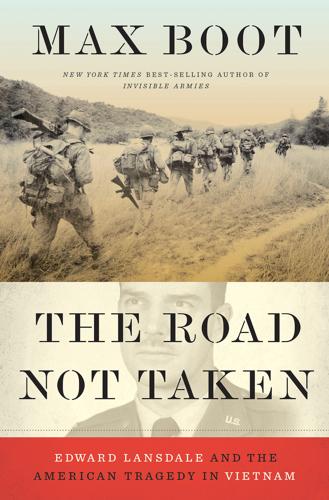
The Road Not Taken: Edward Lansdale and the American Tragedy in Vietnam
by
Max Boot
Published 9 Jan 2018
After sitting up “practically all night in a last-minute session with the Philippine gang, helping them plan,” Lansdale on May 31, 1954, was winging his way to Saigon in a U.S. Air Force flying boat. The Thirty-First Air Sea Rescue Squadron at Clark Air Base had offered to fly him over, provided he didn’t mind spending a few extra hours en route patrolling the South China Sea. Sitting sleepily in a bucket seat, his “boxes and other baggage piled up around” him, “shaking gently with the aircraft’s vibrations” and “sipping coffee from a paper cup,” Lansdale wondered about what he would encounter once he landed. He knew that “events in Indochina were moving toward a climax and that the U.S. wanted me on the spot for whatever occurred next,” but there was no way to predict what that would be.42 13 “I Am Ngo Dinh Diem” [Diem] was happiest when cloistered with books or papers in his study.
…
He announced that “an opportunity had come up to take Hinh and his staff officers for a brief visit to the Philippines.”9 Hinh said regretfully that he was too busy to join the trip, notwithstanding his fond memories of the fleshpots of Manila, but he agreed that his key lieutenants—Lieutenant Colonel Tranh Dinh Lan, Captain Pham Xuan Giai, and Lieutenant Nguyen Van Minh—could go. So on the evening of October 25, 1954, Lansdale found himself winging his way over the South China Sea in a C-47 transport aircraft along with the three Vietnamese officers.10 After a few days in Manila, Lansdale returned to Saigon to find that no coup had occurred. At the end of November, General Hinh finally agreed to step down and leave the country. He moved to France, where he eventually rose to become deputy chief of staff of the French air force.
…
Little did they suspect that they would soon repeat and even exceed most of their forerunners’ mistakes. DESPITE THE mutual distrust among the South Vietnamese, French, and Americans, they were all supposed to work together to pull off the first big test of their nation-building prowess: Operation Liberty to reoccupy the Ca Mau Peninsula, jutting out into the South China Sea at the very tip of South Vietnam. It was due to be evacuated by the Vietminh in February 1955. When a group of French and American officers gathered for a briefing on the Ca Mau plans, the Vietnamese commander of the operation, Lieutenant Colonel Duong Van Duc, gave such an uninspired presentation that Iron Mike O’Daniel started asking some tough questions—until Lansdale pulled him aside and explained that Duc was not briefing the real plan.
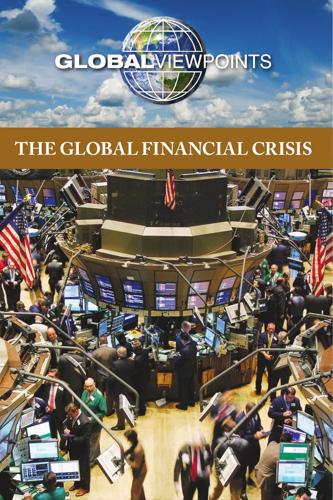
Global Financial Crisis
by
Noah Berlatsky
Published 19 Feb 2010
Michael Lelyveld, “China’s G-20 Role Debated,” Radio Free Asia Online, April 13, 2009, www.rfa.org Since early 2009, there have been several reports that Chinese vessels have harassed alleged American spying ships in the South China Sea. In June, a Chinese submarine accidentally collided with an underwater sonar array towed by an American destroyer which was in the South China Sea to participate in a joint military exercise with ASEAN [Association of Southeast Asian Nations] members. Crisis Could Be an Opportunity Most recently, the BRIC (Brazil, Russia, India, China) countries held their first summit meeting.
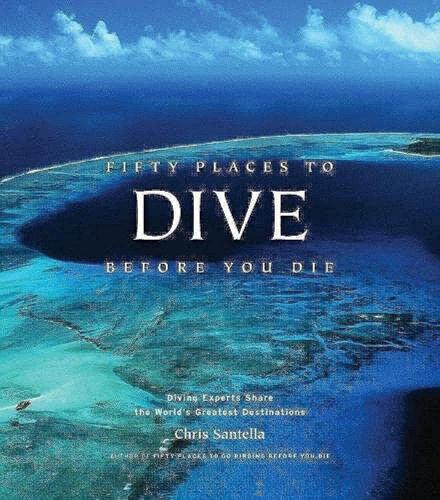
Fifty Places to Dive Before You Die: Diving Experts Share the World's Greatest Destinations
by
Chris Santella
Published 1 Oct 2008
I first dived there in 1997, and on the rare occasions I return, it’s wonderful to see that the coral is as pristine as it was then and the marine life is just as abundant, too.” Layang Layang (pronounced “lie-young lie-young”) is a smallish coral atoll that lies 200 miles northwest of the tip of Borneo in the South China Sea, off the Malaysian province of Sabah. It’s one of the 600 islands that make up the Spratly chain. Layang Layang (which means “Swallows Reef” in Malay) was originally a series of thirteen interconnected coral reefs; the island, as it’s experienced today, is largely the creation of the Malaysian government, which connected two reefs with extensive deposits of sand.
…
Jason is also an accomplished underwater photographer and his images have appeared in numerous books, magazines, and brochures; he was the driving force behind Scubazoo’s first coffee-table book Sipadan, Mabul, and Kapalai: Sabah’s Underwater Treasure, and more recently project managed their latest coffee-table book, Reef. He has done over 3,000 dives. * * * SIMON ENDERBY graduated from Aberdeen University with a B.Sc. (Hons.) degree in marine zoology. He was a leading figure in the first scientific research expedition to Pulau Layang Layang, Malaysia, in the South China Sea. Having worked with the Sea Mammal Research Unit and British Antarctic Survey in the UK, he returned to Malaysia in 1997 to survey the entire coast and coral reefs of Sabah and to run a turtle research program. Simon joined Scubazoo (www.scubazoo.com) in early 1998 and has been involved in many of Scubazoo’s broadcast television filming projects.
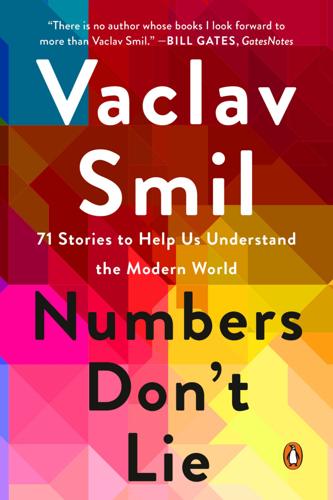
Numbers Don't Lie: 71 Stories to Help Us Understand the Modern World
by
Vaclav Smil
Published 4 May 2021
Clearly not an “empire” whose duration could be timed. And who should pay the closest attention to these lessons of imperial demise? Obviously the Chinese Communist Party that is trying to suppress Tibet and Xinjiang, whose policies have not earned it any genuine friends along the country’s long borders and have led to overreaching into the South China Sea, and whose decision to invest heavily (Silk Road–style) in poorer Asian and African countries is to buy long-term political influence. The party celebrated 70 years of the latest reincarnation of imperial rule in October 2019: given the history of modern imperial longevity, what are the odds that it will be around 70 years from now?
…
China, 77–81 wheat yields, 229 Indonesia, 47, 93 infant mortality rate, xiii, 8–11, 9, 57–9, 58 influenza, 13, 16–17, 18 information creation and storage, 129–32, 130 infrared radiation, 99 innovation, 133–6 insulation, 291–8, 292, 296 Internet, 80, 131–2 Iran, 4, 6, 22, 207 Iraq, 8 Iraq War (2003), 93 Ireland GDP, 68 happiness, 40 manufacturing, 67, 83, 84–5 unemployment, 83 Iron Curtain, 61 iron industry, 176–7 irons, electric, 98, 99 Israel, 85, 283 Istanbul, 46 Italy annual energy use, 289 diet, 235–7, 253 electricity, 134, 171 fertility rate, 5, 7 First World War’s legacy, 53–4 GDP, 66 happiness, 40, 42, 66 life expectancy, 66 nuclear energy, 134 unemployment, 66 ivory trade, 275–8 Jacobi, Moritz von, 101 Jakarta, 47, 212 Japan agriculture, 228 car industry, 70, 71, 82–4, 195, 198, 287–8 diet, 239–41, 240, 253, 254, 256, 257–8, 261, 262 economy, 70–2 education, 60 electricity, 71, 133–4, 145, 171–2 energy use, xii–xiii fertility rate, 5, 7 happiness, 40, 42 human height, 21, 22–3 infant mortality rate, 9, 10–11, 59 life expectancy, 24–5, 24, 59, 255–8, 256 manufacturing, 67, 83, 84 megacities, 45, 47, 48–9 nuclear energy and accidents, 71, 133–4, 145 obesity, 256 population, 69, 71 rise and fall, 69–72 and Second World War, 69–70 subways, 216 trains, 198, 216–17 unemployment, 83 Japanese empire, 90, 92–3 Java Sea, 212 Jeddah Tower, 152 Jenner, Edward, 12 Jha, Sanjay, 80 Johannesburg, 49 Johnson & Johnson, 85 kangaroos, 30 Karachi, 47, 165 kerosene, 208–11, 209 Keys, Ancel, 235 Khafre, pharaoh of Egypt, 34 Khrushchev, Nikita, 88 Khufu, pharaoh of Egypt, 31–4 Kilby, Jack S., 121–3 Kinshasa, 46, 48 Kiska island, 93 Kolkata, 47, 165 Korean War (1950–53), 54, 93 Kurzweil, Ray, 24, 26 Kuwait, 40, 42 lactose intolerance, 259–63 Lagos, 46, 48 Lahore, 47 Lallement, Pierre, 186–7 Latvia, 23 LEDs, 159, 160–1, 171 length, understanding measurement units, xiii Leni (container ship), 167 LG, 269 life expectancy and diet, 253, 254, 256, 257–8 and happiness, 39–41 and height, 22 heritability, 26 Japan, 24–5, 24, 59, 255–8, 256 overview, 24–7, 24 UK compared to other countries, 66 USA compared to other countries, 58, 59 world’s oldest person, 26 lifts see elevators light and lighting artificial, 158–61, 159 cost of artificial, 171 fluorescent lights, 159–60, 159, 161 LEDs, 159, 160–1, 171 light efficacy, 127, 158–9, 160, 171 lightbulbs, 117, 119, 171, 189 natural, 158, 159, 161 sodium lamps, 159–60 Lilienfeld, Julius Edgar, 189 Lima, 46 literacy, 60 Lockheed, 206 London, Treaty of (1604), 92 lorries see trucks and lorries Los Angeles, 46, 48, 281 Los Angeles airport, 209 Love, Henry, 193 LPs, 119–20 Luanda, 49 Lusitania, RMS, 183 Maastricht Treaty (1993), 63 McDonnell Douglas, 206 Madras, 47 magnitude, orders of, xv Malaysia, 83 Malaysia Airlines disappearance and shooting down, 212 Mali, 4, 212 Mallet, Edouard, 20 mammograms, 131 Manchuria, 92–3 Manila, 47 manufacturing assembly lines, 194–5 dispersed assembly, 195 Japan, 70–1 sector overview, 82–5, 83 UK compared with other countries, 67 manure, 221–2 Mao Zedong, 277–8 Marin Teknikk, 166 Martin, Peter E., 193 mass planetary biomass, 271–4, 272 range of, 269–70 understanding measurement units, xiv math education, 60 Maxwell, James Clerk, 99 Maxwell House coffee, 99 Maybach, Wilhelm, 187–8 measles, 14 measurement units, understanding, xiii–xiv meat beef vs. chicken consumption, 243–6, 244 fake, 234 and health, 235, 236, 237, 243, 244, 251, 263 and life expectancy, 253, 254 rational consumption, 251–4 shares of dominant meats, 253–4 waste, 230 medical imaging, 131 Mediterranean diet, 235–8 megacities, 44–9, 46–7, 162–5 Mendelssohn, Kurt, 32 meningitis, 13 Menkaure, pharaoh of Egypt, 34 menopause, age of onset, 3 menstruation, age of first, 3 Mesopotamia, 91, 129 Mexico car industry, 195–6 electricity cost, 172 happiness, 40, 42–3 indigenous peoples and running, 30 megacities, 46, 48 Mexico City, 46, 48 Mia (container ship), 167 Michaux, Pierre, 187 Michelin, André, 191 Michelin, Édouard, 191 Michelin tire company, 191 microbes, 271 microchips, 97 microprocessors, 124 Microsoft, 80 milk, 23, 259–63, 260, 273 Mini Coopers, 197, 198 missiles, 54, 124 money digital financial transfers, 131 disposable income as measure of quality of life, 8–9 the euro, 63 historical and international comparisons, xiv lifetime earnings and height, 22 the yen, 70 Mongolia, 259 Montbeillard, Philibert Guéneau de, 20 Montenegro, 74 Moon landings, 88, 124 Moore, Gordon, 125 Moore’s Law, 125–8, 126 Morocco, 155, 235–6 mortality rate, 15–20, 214–15 see also infant mortality rate Moscow, 47, 48 Motorola, 269 motors, electric, 101–4, 102 motors, polyphase, 103 movies, 130, 131 Mozambique, 277 MSC Switzerland, 166–7 Mumbai, 47, 79 music, recording and reproducing, 117, 118–20, 130 Muybridge, Eadweard, 113–15 Myanmar (formerly Burma), 93 Nadella, Satya, 80 naphtha, 149 Narayen, Shantanu, 80 NASA, 130 National Climatic Data Center, 130 Native Americans, 30 NATO, 54 nattō, 257 Nazis, 90, 92–3 Netflix, 131 Netherlands beer consumption, 237 electricity generation, 141 happiness, 39, 40 human height, 23 wheat yields, 228 New York, 46, 48–9, 75, 98 New Zealand, 39, 40, 289 Niger, 5 Nigeria energy use, xii–xiii fertility rate, 4 happiness, 43 human height, 23 independence, 92 infant mortality rate, 9 megacities, 46, 48 polio cases, 14 nitrates, 55–6 nitrogen, 221–5, 229 nitrous oxide, 224 Nokia, 269 North Africa, 231, 275 see also Egypt; Morocco North America electricity generation, 144 food waste, 231 human height, 22 indigenous peoples and running, 30 insulation, 291–4 nuclear energy, 144 see also individual countries by name North Korea, 54, 71 Norway car industry, 195 electric cars, 202 electricity cost, 171 happiness, 39, 40, 41 infant mortality rate, 10–11 insulation, 297 Novartis, 84–5 Noyce, Robert, 122–3 nuclear energy China, 75 failure to deliver on promise, 133–5, 143–6 and global energy transmissions, 175 Japan, 71 as percentage of source of global electricity, 201–2 production statistics, 144 nuclear weapons, 54 numbers effect of qualitative differences, xiv highest unit prefix, 132 problems in interpreting, xi–xvi, 307 setting in context, xii–xiv, 307 nutrition see food Obama, Barack, 57 obesity, 58, 232–3, 235, 238, 256, 273 Oceana, 231 oil Chinese supply, 75 energy generated by, xii historical use, 174 modern uses, 176–7 OPEC oil crisis (1973–74), 70 US supply, 75 and wind turbines, 149 oil tankers, 70 old-age dependency ratio China, 73, 76, 80 Japan, 71 UK, 68 USA, 73 olive oil, 235, 236, 237 Organization of Petroleum Exporting Countries (OPEC), 70 Osaka, 47 Oslo airport, 209 otitis, 13 ovulations, lifetime number, 3 Pakistan, 14 47, 229 palm oil, 210 Pan Am, 204–7 Panama, 40, 42–3 paper bags, 99 Paris, 46, 48 Paris Agreement on Climate Change (2015), 305 pasta, 235–6 Pennsylvania, University of, 114–15 penny farthings, 187 pens, ballpoint, 98, 100 pertussis, 13 Peru, 46 petrol see gasoline Pfizer, 85 Philadelphia, 100 Philippines, 47, 93 Philips, 160 phones author’s taxonomy, 268–9 cellphones, 104, 174, 177, 268–9 energy cost, 289–90, 288 life expectancy, 288, 289 smartphones, 107 phonographs, 117, 118–20 phosphorus, 221 photography, 113–15, 130, 131 photovoltaic (PV) cells, 154–7, 155, 162, 172, 203 phylloxera, 247 Pichai, Sundar, 80 Pioneer Zephyr (locomotive), 218 plague, 12 planes see airplanes plastics, 176–7, 306 plate tectonics, 280–1 pneumonia, 13 Poland, 202 polio, 13, 14 pollution, 75, 286 see also environment population children as percentage of, 273 China, 73, 74, 76, 77 EU, 63 fertility rate, 3–7, 4 India, 77 Japan, 69, 71 megacities, 44–8, 46–7 percentage in cities, 44 population size and infant mortality rate, 10–11 twentieth-century growth, 225 world, xv pork, 243, 245, 246, 253–4 Porsche, Ferdinand, 195 Portugal, 235–6 potassium, 221 poverty, and fossil fuels, 306 power, understanding measurement units, xiv Prague Spring (1968), 61, 88–9 Pratt & Whitney, 206 printing, 129 Puerto Rico, 93 PV cells see photovoltaic cells pyramids, 31–4, 31 Qing empire, 90, 91, 92 Quaker Oats, 99 quality of life Canada, 58 China, 75 economic measures of, 8–9, 39–41, 135–6 EU, 63 Germany, 58 infant mortality as measure of, 8–11, 9 and megacities, 48–9 UK, 58 and unemployment, 37–8 USA compared to other countries, 57–60, 58 see also happiness Quetelet, Adolphe, 20 radio waves, 97 radios, transistor, 70 railways, electric street, 98, 99 reading proficiency, 60 records, 119–20 religion conflict in India, 81 and happiness, 42–3 resistance, understanding measurement units, xiv rice, 126–7 Rio de Janeiro, 46, 48–9 roads see highways robberies, 37 Roche, 84–5 Romania, 7, 8 Rome, ancient, 129, 275, 283 Royal William, SS, 181 running, 28–30 Russia education, 60 electricity generation, 134, 144 First World War’s legacy, 53–4 happiness, 40 infant mortality rate, 9 megacities, 47, 48 nuclear energy, 134, 144 relations with USA, 86–9 Second World War’s legacy, 53–4 winter temperatures, 296–7 see also Soviet Union Saha Airlines, 207 Samar (container ship), 167 Samsung, 268–9, 287–8 São Paulo, 46 satellites, 86, 87–8, 89, 154, 156 Saudi Arabia, 40, 42 Schmid, Albert, 106 Schröter, Moritz, 109 science education, 60 scooters, 197, 198 screws and screwdrivers, 268, 269 Seaborg, Glenn, 145 seafood see fish and seafood Second World War (1939–45), 53–4, 69–70, 93 Serbia, 10, 23 service industry sector, 82–4 sex ratios, 77–9 Shakespeare, William, 130, 131 Shallenberger, Oliver B., 106 Shanghai, 47, 165 Shenzhen, 44–5, 47 ships container, 112, 167 fuels used, 166–9, 176 ocean liners, 127 transatlantic crossings, 181–3 shrews, 269 Siemens, 105, 107, 140 Sierra Leone, 9 Silicon Valley, 80 Singapore, 83 Sirius, SS, 181–3 skyscrapers, 98, 100, 284 Slovakia, 60 Slovenia, 9, 83, 249 smallpox, 12 smartphones see phones Smil, Vaclav (author) comes to West, 88–9 flying experiences, 214–15 houses lived in, 300–1 Smith, C.J., 193 smoking, 26, 214, 255 social status, and height, 22 social support, 39 solar heating, 302 solar power cost, 172–3 and the environment, 203 as percentage of source of global electricity, 201–2 storage, 162–5, 163 transition to, 154–7, 155, 175, 176 Somalia, 9, 79 Somme, Battle of the (1916), 53 Sony, 70–1 sound, recording and reproducing, 117, 118–20 sources, xi–xii South Africa, 24, 30, 49, 172 South America diet, 246 electricity generation, 144 food waste, 231 megacities, 46, 48, 49 nuclear energy, 144 see also individual countries by name South China Sea, 94 South Korea diet, 262 electricity generation, 143 fertility rate, 4, 6 happiness, 40, 42 human height, 22 infant mortality rate, 10–11 life expectancy, 24, 59 manufacturing, 67, 83, 85 nuclear energy, 143 relations with Japan, 71 Second World War’s legacy, 54 unemployment, 83 South Sudan, 40, 42 Soviet empire, 90, 92 Soviet Union Cold War, 54 collapse, 63, 92 control of Eastern Europe, 61 nuclear energy, 133 and Prague Spring, 88–9 relations with USA, 86–9 see also Russia soy sauce, 257 space race, 87–8, 89 Spain car industry, 195 diet, 235–6, 237–8, 253, 258 education, 60 fertility rate, 7 food exports to UK, 66–7 happiness, 40 life expectancy, 255 unemployment and quality of life, 37 spam, 131 Spanish empire, 90, 91 spectrographs, 115 speed, understanding measurement units, xiii–xiv Sputnik, 86, 87, 89 Stanford, Leland, 113–14 Stanley, William, 106–7 Starley, John Kemp, bicycle, 186, 187 Stavanger airport, 209 steam power early, 187 motors, 101 and transatlantic crossings, 181–3 turbines and turbogenerators, 98, 127, 140, 141 steel and carbon emissions, 203, 286 energy cost, 127 and food waste, 233 grades, 269 importance, 306 in reinforced concrete, 284 in wind turbines, 147–8 stencil duplicators, 101 stock market Japan, 70 value of manufacturing vs. service companies, 82 Stockholm airport, 209 stoves, 300–1 Strauss, Lewis L., 145 streaming, digital, 120 submarines, 54 subways, 216, 217 sugar and sweeteners, 257–8 suicide, 17, 42 Sumitomo, 70 the sun, 279 surveillance, 80 sushi, 239–40, 242 Sutton, William, 187 Swatch Group, 84–5 sweating, 28–30 Sweden fertility rate, 6, 7 happiness, 39, 40 height and lifetime earnings, 22 insulation, 297 Switzerland diet, 253 electricity generation, 139, 142, 143 happiness, 39, 40 manufacturing, 84–5 nuclear energy, 143 Sydney Opera House, 284–5 Synthetic Genomics, 211 Takata, 71 tanks, xiv, xv, 54 Tanzania, 49, 277 tea, 257 technology, rate of advancement, 125–8 telegraph, 118 telephones see phones Tesla, Nikola, 101–3, 103 Tesla cars, 199 tetanus, 12–13 Texas Instruments, 121–4 Thailand, 47, 83, 93 Thomson, Robert William, 190 Three Gorges dam, 285 Three Mile Island, 145 Tianjin, 47 Tibet, 94, 259 tires, 187, 189–92, 190 tōfu, 257 Tokyo, 45, 47, 48–9, 216, 239, 281 Toshiba, 70–1 Toyota, 71, 82–4, 198 trade deficits and surpluses, 85 trains diesel, 111, 112 energy efficiency, 216–18, 217 first, 187 maglev, 134, 134 motors, 104 speed, xiii weight-to-payload ratio, 198 see also railways transformers, 105–8, 105 transistors, 70, 121, 125–6, 189 transmitters, 54–5 transport energy efficiency of different modes, 216–18 fuels used, 176 goods, 112 highways, 285 increase in speed of, 147 transatlantic, 181–4, 206 see also individual vehicle types by name Trippe, Juan, 206 trucks and lorries, 112 tsunamis, 71, 281 tuberculosis, 12–13 tuna, 239–42, 240 Tupolev, 204–5 turbines and turbogenerators gas, 139–42, 140 steam, 98, 127, 140, 141 wind, 147–53, 148, 151, 203 Turkey, 46, 172 UK car industry, 195 car prices, 194 coal industry, 303 economic inequality, 79 education, 67 electricity, 133–4, 143, 171 energy supply, 67 food self-sufficiency, 66–7 food waste, 233 freedom, 80 future post-Brexit, 65–8 GDP, 66 happiness, 39, 40, 58, 66 healthcare system, 67–8 historical fuels used, 174 infant mortality rate, 9, 58 life expectancy, 24, 25, 58, 66, 255 manufacturing sector, 67 nuclear energy, 133–4, 143 obesity, 58 old-age dependency ratio, 68 quality of life, 37 unemployment, 37, 66 wheat yields, 227 Ukraine, 7, 145, 212 ultraviolet radiation, 99 unemployment, 35–8, 35, 66, 82–4, 83 United airline, 210 UpWind project, 152 urbanization, 44–9, 46–7 US empire, 90, 93–4 USA agriculture, 126, 227–8, 227 biofuel, 210 buildings’ energy consumption, 291 car industry, 193–6, 197–9, 197 car passenger numbers, 200 car prices, 194 carbon emissions, 304 cattle farming, 273 cement production, 284, 285 diesel cars, 111 diet, 242, 243–6, 244, 256, 257, 258, 260–1 economic inequality, 79 economy, 93–4 economy compared to China’s, 73–4 education, 60, 88 electricity cost, 170, 171–2, 171, 173 electricity generation and storage, 133–4, 139–40, 141, 143, 164 exceptionalism, 57–60, 58 food consumption and waste, 231–3 happiness, 39, 40, 58 highways, 285 house heating, 301 housing, xiv human height, 20, 23 hydroelectric dams, 285 infant mortality rate, xiii, 9, 10, 11, 57–9, 58 influenza, 16–17, 18 Japanese car imports, 70 and Japanese yen devaluation, 70 LEDs, 160 life expectancy, 24–5, 58, 59, 255, 256 manufacturing, 67, 84, 85 megacities, 46, 48–9 nuclear energy and accidents, 133–4, 143, 145 obesity, 58, 232–3, 256, 273 oil supply, 75 old-age dependency ratio, 73 pattern of rise and fall, 71–2 relations with Russia, 86–9 USA – cont’d.
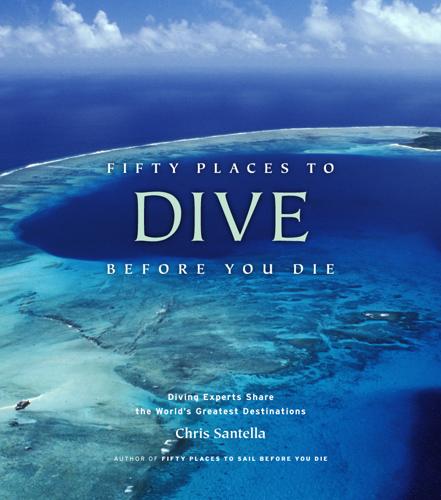
Fifty Places to Dive Before You Die
by
Chris Santella
Published 7 Sep 2011
I first dived there in 1997, and on the rare occasions I return, it’s wonderful to see that the coral is as pristine as it was then and the marine life is just as abundant, too.” Layang Layang (pronounced “lie-young lie-young”) is a smallish coral atoll that lies 200 miles northwest of the tip of Borneo in the South China Sea, off the Malaysian province of Sabah. It’s one of the 600 islands that make up the Spratly chain. Layang Layang (which means “Swallows Reef” in Malay) was originally a series of thirteen interconnected coral reefs; the island, as it’s experienced today, is largely the creation of the Malaysian government, which connected two reefs with extensive deposits of sand.
…
Jason is also an accomplished underwater photographer and his images have appeared in numerous books, magazines, and brochures; he was the driving force behind Scubazoo’s first coffee-table book Sipadan, Mabul, and Kapalai: Sabah’s Underwater Treasure, and more recently project managed their latest coffee-table book, Reef. He has done over 3,000 dives. * * * SIMON ENDERBY graduated from Aberdeen University with a B.Sc. (Hons.) degree in marine zoology. He was a leading figure in the first scientific research expedition to Pulau Layang Layang, Malaysia, in the South China Sea. Having worked with the Sea Mammal Research Unit and British Antarctic Survey in the UK, he returned to Malaysia in 1997 to survey the entire coast and coral reefs of Sabah and to run a turtle research program. Simon joined Scubazoo (www.scubazoo.com) in early 1998 and has been involved in many of Scubazoo’s broadcast television filming projects.
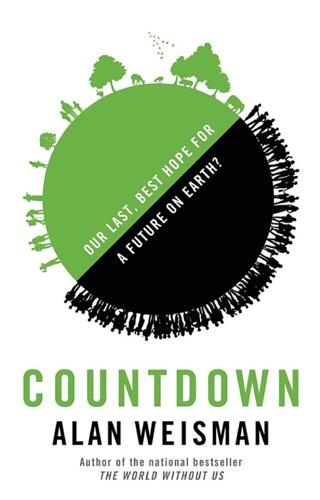
Countdown: Our Last, Best Hope for a Future on Earth?
by
Alan Weisman
Published 23 Sep 2013
“I tell them that without pandas, then without tigers, next it will be fish that disappear. Then crops. Then everything. Then people.” On the final day, the scientists take Gretchen to China’s smallest and southernmost province. About the size of Taiwan, Hainan Island sits nineteen miles off the mainland in the South China Sea. As the only part of China that dips into the tropics, over the past two decades Hainan has been discovered by luxury hotel chains and developers, who are converting its southern shore into China’s Oahu, with Manhattan prices. Their destination is the central highlands, where the number of rubber plantations has doubled due to China’s explosive growth of automobile ownership and demand for tires, threatening the rainforests of one of Asia’s biologically richest islands.
…
But as they exit the preserve and descend, pristine clarity vanishes. All the rivers are running bloodred with eroded soil. Sheets of mud pouring through the rubber and pepper plantations wash across the highway. When they finally reach the airport on the island’s northern shore, Hainan’s rivers have burst their banks and the South China Sea is filling with red silt. They’re able to fly out, but the following day, a typhoon that has already cost defoliated Vietnam millions of tons of topsoil hits Hainan full force. Before it passes, 135,000 people have to be evacuated. On Hainan Island, or anywhere else, for that matter, the three axes on which the InVest program turns—land and sea use, climate, and demography—may ultimately hinge on the third.
…
Rain is increasing, storms are strengthening, and supposedly their sinking town will one day slip beneath Manila Bay, preceded by Manila itself. The Dutch ambassador has already advised the Philippines to dike the bay, the finest harbor in Southeast Asia. But where will money come from for that? The typhoon that drowned China’s Hainan Island has moved east across the South China Sea: weaker but still plenty wet, it’s overhead, soaking Luzon, the Philippines’ biggest island. Beneath Roland’s second-story window, the street is a swirling gray backwater. Beyond it, traffic in this megalopolis of 25.5 million2 flows imperceptibly, like a species of tropical glacier. Occasionally, chunks break free and surge forward, then jam into other chunks and stop in axle-high water.

New Laws of Robotics: Defending Human Expertise in the Age of AI
by
Frank Pasquale
Published 14 May 2020
Even in the 1980s, white supremacist terrorists dreamed of provoking an American nuclear war with Russia as a way to end emerging multiculturalism and to install their own genocidal regime.37 To such madmen, civilization-destroying nuclear winter was a small price to pay for racial purity. More prosaically, growing tensions in the Middle East, the South China Sea, Kashmir, and Ukraine give powers like the United States, Russia, India, Pakistan, and China ample opportunities to incrementally escalate the deployment of surveillance and armed drones on air, land, and sea. The knife edge between offensive and defensive capabilities intensifies the danger.
…
(Spielberg), 8 Aibo, 79 AirBnB, 183 Alaska, 184 Alexa, 81, 121 algorithms: accountability / responsibility for potential harm done by, 11–12, 19, 40, 49, 92, 98–101, 105, 114, 115–118, 197–198, 204; bias, inaccuracy, and unjustness of, 20–21, 38, 87, 92–100, 105–107, 113, 115–116, 212; in art creation, 218, 219; in education, 67, 75, 85; and Facebook, 73, 181, 225; free speech for, 109–110; and Google, 181, 225; and high-freqency trading, 11, 20, 155; in hiring, 66, 119; inadequacy of, in certain human endeavors, 23–28, 35; in law enforcement, 121, 123, 126; in lending, 131; and management, 227–229; in military settings, 145, 147, 155–156, 157, 158, 168; and non-standardizable judgments, 104; optimizing ad revenue and “engagement” in online media, 29–30, 89, 92; and reason, 222; rise in studies of, 224; and scheduling of workers, 176–177; for self-driving cars, 21–22; and smart machines mimicking humans, 7; in social credit systems, 138; and YouTube, 72 alt-right, 95 Amazon, 76, 104, 155, 165, 287–288n42; Rekognition (software), 125 American Civil Liberties Union (ACLU), 125 Andrejevic, Mark, 91, 302–303n29 anti-Semitism, 95 Aoun, Joseph, 173 Apple’s App Store, 45 apps, 4, 15, 34, 57, 88, 134, 227; therapy, for mental health, 45–49, 57–58, 187 Arendt, Hannah, 77, 258n56 Arkin, Bill, 127 Arkin, Ronald, 149, 158 arms control agreements, 157, 162 arms races, 17, 31, 142–144, 146, 162, 163, 165, 167, 168, 170, 189, 198, 202, 206–207, 225, 230; for online media attention, 91, 101, 118; and the third new law of robotics, 9–11, 91, 101, 136, 171, 217 Arnold, Zachary, 292n84 Article 36, 156 artificial intelligence (AI): in education, 60–88; evaluative, 119–144; as governed by the new laws of robotics, 3–12; in health care, 33–59; in the military, 145–169; in online media, 89–118; and political economy, 170–198; as reflected in the arts and culture, 199–231 Arunanondchai, Korakrit, 220 Asaro, Peter, 151–152 Asia: Central, US presence in,168; values of, toward technology, 54–55. See also South China Sea; specific countries Asimov, Isaac, 2, 7, 233nn4–6. See also laws of robotics, Asimov’s assembly lines, 14, 26, 83, 189–190. See also manufacturing Atkins v. Virgina, 288n48 Australia, 58, 248n51, 257n45 authoritarianism, 91, 93, 94, 117, 126, 127, 161, 164, 166 autocompletes, 98–99 automation.
…
F., 67–68 Skynet, 151 Slaughterbots, 147 Smith, Bryant, 21 smart cities, 121 Snowden, Edward, 128, 165 Snower, Dennis, 224 social credit systems (SCSs), 10–11, 136–139, 141 social media, 117; bot speech on, 164; and California’s “Online Eraser” law, 74; in China, 60–61; and content moderating, 91; destructive content on, 115–116; laws to govern, 110; and lending, 144; nudity on, 104. See also online media; specific social media sites social robots, 49–56 Social Science Research Council, 125 soldiers, robotic. See military: and killer robots Solingen, Etel, 163–164 South China Sea, 154 South Korea, 15, 54, 79, 159 Sox (digital companion), 50 Sri Lanka, 92 Stark, Luke, 126–127 Star Wars. See Strategic Defensive Initiative Star Wars, 50, 229 Steichen, Edward, 308n82 STEM (science, technology, engineering, and medicine), 173 stereotypes. See racism; sexism Stevens, Wallace, 220 Steyerl, Hito, 219 Stiglitz, Joseph, 160 Strategic Defensive Initiative (SDI), 9 student debt, 87, 134–135, 279n58 subsidiarity, 176 substitutive AI / robotics, 6, 31, 52, 55, 123, 172, 200, 202, 206, 211, 221 Sudan, 149 surveillance, 6, 8, 58, 121–123, 135, 159, 166–167; in China, 61, 160, 167; and arms races, 31, 136, 167; in education, 62, 72, 73–77, 83–85; and encryption / decryption, 10; in Europe, 5; and facial recognition, 125, 129; in finance, 135–136; and the military (including drones), 151–154, 164–166, 168; mobile, 15; public health, 11; in the workplace, 131 The Syllabus, 100 Syria, 167 Taiwan, 55, 159, 160, 163–164 Taliban, 160 Tamagotchi, 80 TaskRabbit, 84 tax(es), 10, 27, 53, 193; carbon, 185; and deflation, 26, 188–189; for education, 25, 62, 188; inversions, 228; and military technology, 158; and modern monetary theory, 193–194; policy, revitalizing, 172, 179–183; and the uninsured, 43; and universal basic income, 184 Tay (Microsoft chatbot), 12, 219 Taylor, Charles, 224, 308nn83–84 Taylor, Frederick, 83; and Taylorism, 67, 83, 139 Tcherneva, Pavlina, 186 teaching.

Shadow of the Silk Road
by
Colin Thubron
Published 1 Jan 2006
For twenty-two miles its ramparts enclosed nearly two million inhabitants, and immured them again in a nest of inner walls and gates, as ward after ward piled up around a vast chessboard of avenues. The nine-mile walls of today’s Xian trace merely those of Changan’s inner city. On one side it sucked in tribute by canals stretching to the South China Sea; on the other it stood as a lodestar at the eastern end of the Silk Road, where the Tang empire stretched to the Pamirs. Its aristocracy survive in the damp murals of their tombs pockmarking the Wei valley. Along the underground walls their women walk in décolleté bodices and silk gowns, chatting together or playing with pet cicadas.
…
Arab and Persian blood made his Hui people more handsome than the Chinese, he laughed. But his teeth were blackened pillars on shrunken gums, and he was running to fat. As early as the seventh century these traders had arrived along the Silk Road while their Islam was young, or filtered in through the ports of the South China Sea. But through intermarriage, whatever the man said, they had mostly become indistinguishable from those around them. Perhaps only a cyclical history of revolt and suppression, and the Chinese label ‘Hui’, had persuaded them that they were a nation. Sixty thousand strong in Xian now, they remained avid traders, and Arabic words still littered their talk.
…
Lhasa Li Bai Li Peng Lijian Linxia Living Buddha of Labrang Living Buddha of Tianshui Lop desert Lou Guan Tai Louis, St, King of France Lucan Macartney, George Magi Mahdi see Twelfth Imam/the Mahdi Mahmoud (builder) Mahmoud of Gazni, sultan Mahmud Kashgari, tomb of Mahmuda (Uzbek woman) Maitreya (Buddha of the Future) Maimana Maimundiz Malekshah, sultan Mamelukes Manas (Kyrgyz national hero) Manas air base Manchus Mangnai Manicheism Mansur (student) Mao Zedong Maracanda Maragheh Mardin Margilan Masihi, Artur (church caretaker) Massoud, Ahmed Shah Matisi temples Matthew, St Mazar-e-Sharif Mazinan Mecca Médecins Sans Frontières Medina Mediterranean Merv Meshed Mesopotamia Mevlevi sect Mexme, St Miandasht Mianeh Ming dynasty Mingzhao (daughter of Hu Ji) Mir-i-Arab, Bukhara Mir Sayyid Ali miscegenation Mobin (driver) Moguls Mohammad Jahi Mombasa Mongolia Inner Mongols Moscow Mouli (teacher) Mount Demavend Mount Qiao Mount Sipylus Muhammad, Prophet Mujahidin-e Khalq murals, Chinese Buddhist Sogdian Muslims see Islam/Muslims Namangan Namangani (guerrilla chief) Naqshbandi sect Naryn Naryn river Nasir ad-din Tusi National Minority People’s University (Lanzhou) nationalism and identity NATO assistance force Navoi Navoi, Alisher Nazira (caretaker) Nepal Nestorians Nestorius, patriarch of Constantinople Nishapur Niya Nizam al-Mulk Northern Alliance Nurana (Kyrgyz girl) Nuwa (goddess) Oljeitu, sultan mausoleum of Omar, caliph Omar, Mullah Omar Khayyám Rubáiyát grave of One Child policy Orontes river Orumiyeh (town) Orumiyeh lake Osh Osman (taxi-driver) Ostrovsky, Nikolai Oxus river see Amu Darya/Oxus river Pahlavi shahs Pakistan Pakistanis Palestine Palmyra Pamir mountains Panchen Lama paper Paris Paropamisus mountains Parthia Parthians Pasargadae Pashtuns Pass to the West Paul, St Pax Mongolica Persia Persian Gulf Persians Peter (Sinologist’s agent) Peter, St Petrovsky, Nikolai Philip of Montfort Philippe le Bel pilgrimage Piyada, Hajji Place of Drumbeats Pliny Polo, Marco Polo brothers Pompey Portuguese, the Prester John printing Production and Construction Corps, Xinjiang Pure Land of the Amithaba Qadamgah al Qaeda Qajar Qala-i-Jangi Qazvin Qezelabad Qianlong, emperor Qiao, Mount Qilian mountains Qin dynasty Qin Shi Huangdi, emperor terracotta army tomb Qing dynasty Qinghai Qinling mountains Qizil Uzun, gorge of Queen Mother of the West Qum Qumrabat Padshahim Qusam ibn Abbas Rabia Balkh Rawak Raymond of Tripoli Red Guards Revolutionary Guard Rey Richthofen, Friedrich von Romans Rome Roxana (wife of Alexander the Great) Rukn-ad-din Rushdie, Salman Ruslan (Kyrgyz) Russia Russian Orthodox Church Samarkand Russians Rustam (hero) Safavid, dynasty Saladin, sultan Samarkand Sanjar, sultan Sanliurfa Sarnath SARS Sassanian dynasty Saudi Arabia Seleucia Pierea Seleucus I Seljuks Seneca Seres Serica Shaanxi museum Shaanxi province Shah Rud valley Shah Rukh Shah-i-zinda (grave of Qusam ibn Abbas), Samarkand Shahi Shahnama Shalamov, Varlam Shams Kilaya Shandong Shaybanid dynasty Shebergan Shen Congwen Shirin river Shutur Khan Siberia Sichuan silk in Buddhism discovery dissemination in Islam among the Mongols manufacture in Persia qualities Roman view of origins secret betrayal subverting Roman economy superfine uses Silk House constellation Silk Road Antioch at western end of Changan at eastern end of decline of humbler traffic interconnectedness letters travelling along lingua franca of spread of inventions along spread of musical instruments along trade along Sipylus, Mount Sirnak Sogdians Song-kul lake South China Sea Soviet Union/USSR Spain Sri Lanka Stalin, Joseph Stark, Freya Stein, Aurel stirrups Sufis see also Mevlevi, Naqshbandi Sui dynasty Sultaniya Sun Yatsen Sung dynasty Sunni Sussmayr massif Suzhou Syr Darya (ancient Jaxartes) river Syria Syrians Tabriz Tahir (BBC worker) Taizong, emperor Tajikistan Tajiks Takht-i-Pul Taklamakan desert Talas battle of (AD 751) Talas river Talas valley Taliban Tamerlane the Great tomb Tang dynasty and Changan Tangshan Tanintanin mountains Tao Te Ching Taoism Tarim basin Tartars Tash Rabat Tashkent Taurus mountains Tazhong Tehran Termez terracotta army Tethys Sea Tian Shan mountains Tiananmen Square, Beijing massacre Tianshui Living Buddha of Tibet Tigris river Timurids Titus, emperor Tocharians Tochtor (Kyrgyz) Toktogul lake reservoir Torugart pass Turcomans Turkestan Turkey journey in Turkic peoples ‘Turkish Islamic Republic of East Turkestan’ Turkmen desert Turkmenistan Turks Tus Tusi, Nasir ad-din Twelfth Imam/the Mahdi Uighurs Ukrainians Ulug Beg, prince Unai Enye (goddess) United Nations (UN) Assistance Mission, Mazar-e- Sharif United States of America Urumqi University Ushmurvan river Ustkurgan Uzbekistan journey in Uzbeks Vahid (Iranian emigrant) Vakhuman, king of Samarkand Vatican ‘Vegetable Lamb’ Vespasian, emperor Virgin Mary Visigoths Wahabis/Wahabism Wang, Abbot Wang Zhonghu Warner, Langdon Wei valley Wei river West, the time line Western Market, Changan Western music White Jade river, Khotan World Trade Center Wudi, emperor Xian Xinjiang Xuanzang, monk Xuanzong, emperor Yacub Beg Yalda Yangtze river Yarkand Yellow Emperor grave-mound of Yellow Hat sect Yellow River Yenisei river Ying (Luo Ying) Yongchang Youshashan Yu (professor) Yuan dynasty Zahir Shah, king Zanjan Zelim (Zelim Khan) (artist) Zerafshan river Zhangye Zhelaizhai Zhukov, Marshal Zoroaster Zoroastrianism About the Author COLIN THUBRON is an acknowledged master of travel writing.
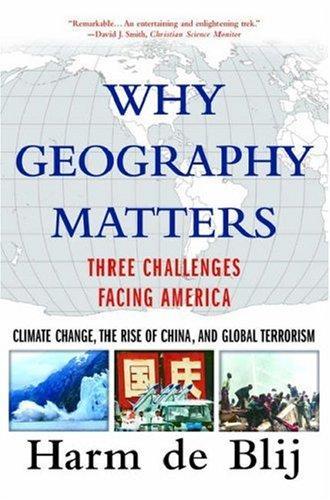
Why geography matters: three challenges facing America : climate change, the rise of China, and global terrorism
by
Harm J. De Blij
Published 15 Nov 2007
We have already taken note of Taiwan, northeast India, and other actual and latent claims; there is also the question of Mongolia, a part of China during Qing times and now experiencing a strong resurgence of Chinese influence, hitherto in the economic arena but potentially in additional contexts as well. In offshore waters, China is contesting with Japan, Vietnam, the Philippines, Malaysia, and Indonesia the ownership of islands whose acquisition would extend Chinese jurisdiction over vast expanses of the South China Sea. In short, China's territorial drive is far from over. While many countries have territorial issues with neighbors, these tend to take on greater significance when the claimant is already a giant. More to the point is China's role in competition with the United States for influence and power in the western Pacific from Japan to Australia and from the Philippines to Myanmar.
…
America's military presence in the Philippines until 1991, abandoned when Mount Pi-natobo's giant eruption destroyed its air and sea bases on Luzon Island even 146 WHY GEOGRAPHY MATTERS as the Philippine Senate was weighing continuation of the United States presence, dissuaded China from a greater aggressiveness in its now-renounced claims to all of the South China Sea. And Washington's close relationship with Singapore has been another part of this geopolitical framework. In this new century, however, the picture is changing. Late in 2004, President G. W. Bush announced plans to withdraw United States military forces from overseas bases including those in Japan.
…
Over the longer term, China's economic and geopolitical challenge will be more difficult to accommodate, and the American role in East Asia will undoubtedly have to change. China has unresolved issues with Japan ranging from Japan's failure to acknowledge the atrocities it committed in China during its wartime occupation to disputes over islands and waters in the South China Sea. These issues have remained relatively subdued because of the constitutional restrictions placed on Japan's military and because the United States has kept armed forces based in Japan. But there are signs that Japan will loosen the constraints on its military power, largely because of security concerns arising from North Korea's nuclear ambitions and maritime incursions, and the American government is contemplating a reduction if not elimination of its military presence in Japan.
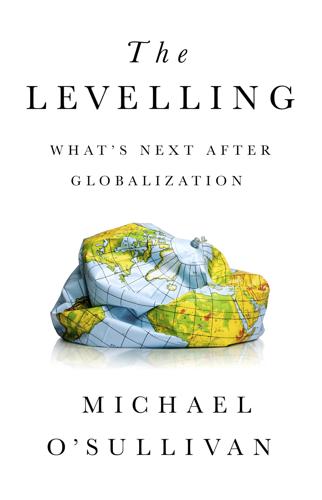
The Levelling: What’s Next After Globalization
by
Michael O’sullivan
Published 28 May 2019
One dangerous scenario is that we witness the outright end of globalization in much the same manner as the first period of globalization collapsed in 1913, as I outlined earlier. This scenario is a favorite of commentators because it allows them to write about bloody end-of-the-world calamities. This is, thankfully, a low-probability outcome, and with apologies to the many armchair admirals in the commentariat who, for instance, talk willfully of a conflict in the South China Sea, I suggest that a full-scale sea battle between China and the United States is unlikely. Instead, the evolution of a new world order—a fully multipolar world composed of three (perhaps four, depending on how India develops) large regions that are distinct in the workings of their economies, laws, cultures, and security networks—is manifestly underway.
…
One area where China does forcefully express its power is in trade relations, where it uses its size and influence in a manifest way on its Asian neighbors (stretching to Australia). The challenge for China is to use soft power to win over neighbors and to stealthily create regional integration so that it oversees the South China Sea while confounding those who believe in what Harvard professor Graham Allison has named the “Thucydides’s Trap.”19 Thucydides was an Athenian general who turned historian after an unsuccessful battle. In his famous History of the Peloponnesian War, he recounts the fifth-century-BC wars between Athens and Sparta.
…
The One Belt, One Road plan ingeniously extends China’s influence across Asia, through the Middle East, and up through eastern Europe (China has established a trade and investment project, “16 + 1,” with sixteen eastern European states, including the Baltic states, the Czech Republic, Hungary, Romania, Serbia, and others) without explicitly compromising the sovereignty of the many countries this project will traverse.28 Ducking the Dreadnought Like many large countries before it, China has also shown a tendency to dial pressure up on regional trade partners and then dialing it back down once agreement is in sight. One looming test for China is how it reacts to the hostile treatment of Chinese communities in populous Muslim countries like Indonesia. It is this kind of problem—rather than South China Sea naval battles conjuring up the likes of Dreadnought or USS New Jersey—that will be one of the key tests of Chinese foreign policy. The second part of the Chinese puzzle relates to the inner machinations of the Communist Party. Since Xi Jinping became president of China and general secretary of the Communist Party, party members have been more disciplined with regard to divulging the party’s inner workings and internal intrigues (such as concerning the sudden political demise of Bo Xilai, a charismatic Chinese politician who was considered a strong candidate for the top Politburo Standing Committee until, intriguingly, he and his wife were jailed for the murder of a British businessman).

The Wires of War: Technology and the Global Struggle for Power
by
Jacob Helberg
Published 11 Oct 2021
As historian Hal Brands and Jake Sullivan, now President Biden’s National Security Advisor, have argued, “the Soviet Union was never a serious rival for global economic leadership; it never had the ability, or the sophistication, to shape global norms and institutions in the way that Beijing may be able to do.”13 Today, however, we face in China a rising superpower with the ability to exert its influence from the artificial islands in the South China Sea to the boardrooms of Silicon Valley. Moreover—as illustrated by revelations of the wide-ranging “SolarWinds” Russian intrusion into U.S. government systems in 202014—there is the continued threat of Moscow’s machinations, different from the days of the Soviet Union, but still immensely disruptive.
…
“The new principles of war,” they wrote, entailed “using all means, including armed force or non-armed force, military and non-military, and lethal and non-lethal means to compel the enemy to accept one’s interests.”94 It was a recognition, as Trump’s national security advisor H. R. McMaster would later put it, that “there are two ways to fight the United States: asymmetrically and stupid.”95 In 2001, after a diplomatic flare-up involving the collision of an American reconnaissance aircraft and a Chinese jet over the South China Sea, American hackers vandalized a series of Chinese websites. Chinese hackers retaliated with an attack that took down the White House website and defaced other government websites with messages like “Beat down Imperialism of American [sic]! Attack anti-Chinese arrogance!” The New York Times dubbed it the “First World Hacker War,” yet it was only the smallest taste of what was to come.96 The same year, Chinese president Jiang Zemin declared that the Internet had become a “political, ideological, and cultural battlefield.”97 By 2008—the same year that Beijing tried to promote itself to the world as a responsible rising power by hosting the Summer Olympics—hackers from the People’s Liberation Army infiltrated the networks of defense contractor Lockheed Martin, stealing plans for the F-35 fighter jet.98 In a troubling preview of 2016, Chinese operatives penetrated the presidential campaigns of both John McCain and Barack Obama, apparently looking for information on their views on China.99 A year later, Google discovered Chinese hackers in the company’s own networks.
…
Crucially, the Chinese military has begun transitioning from GPS to Beidou. “It would make sense for them to have their own military system,” notes Andrew Dempster, director of the Australian Centre for Space Engineering Research at the University of New South Wales. “Because if there was a conflict in the South China Sea over these islands, GPS could be denied to them.”88 China has also dangled access to Beidou as an incentive for countries like Pakistan to migrate away from American alternatives. It’s all part of what Chinese officials have called a “space-based Silk Road.”89 In the vacuum of the cosmos, China’s back-end dominance quietly grows.

Aftershocks: Pandemic Politics and the End of the Old International Order
by
Colin Kahl
and
Thomas Wright
Published 23 Aug 2021
-led liberal order might even lead to gradual political reform within China and other autocratic countries.37 As the past decade has shown, these expectations were shattered by what actually took place. Under Xi Jinping and Vladimir Putin, China and Russia diverged from American and European concepts of international order. China sought territorial revisions in the South China Sea and East China Sea, while Russia intervened in Ukraine, as part of broader efforts to carve out zones of military, political, and economic dominance. Beijing and Moscow also became more vocal and assertive in articulating an alternative order organized around the sovereign right of leaders to act as they wish within their borders and spheres of influence.
…
Japan’s decision was denounced by U.S. and Hong Kong officials.45 The Diamond Princess was the first of many cruise ships to find itself stranded at sea thanks to a little-known loophole in international law: onboard a ship, passengers are beyond national borders, and governments can refuse entry if they have a contagious disease. Another cruise ship, the Westerdam, crisscrossed the South China Sea during this period, having been denied entry to Japan, the Philippines, and Thailand. Eventually it was allowed to dock in Cambodia, where it was personally greeted by the prime minister—a move praised by the WHO as an act of international solidarity (even though masks were not worn as the passengers were welcomed onshore and social distancing was not observed).
…
Putin has sought to influence referendums and elections in the United Kingdom, the United States, France, and elsewhere, with the aim of empowering movements and leaders skeptical of the transatlantic alliance. And Russia’s vast oil and gas resources have been leveraged to coerce governments and buy influence in both eastern and western Europe.39 Under Xi Jinping, China has sought to become the preeminent power in Asia—flexing its muscles in the South China Sea, in the East China Sea, and across the Taiwan Strait—at the expense of the United States and its regional allies. China’s Belt and Road Initiative (which involves seventy countries), new international economic institutions such as the Asian Infrastructure Investment Bank, and new multilateral agreements such as the fifteen-nation Regional Comprehensive Economic Partnership are all illustrative of Beijing’s assertive pursuit of global influence.
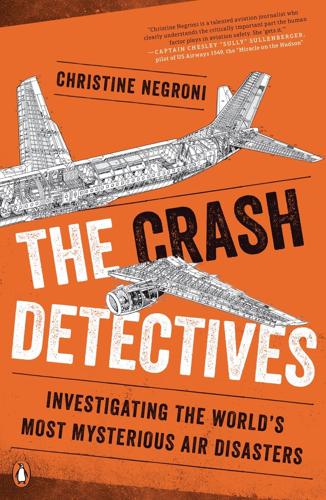
The Crash Detectives: Investigating the World's Most Mysterious Air Disasters
by
Christine Negroni
Published 26 Sep 2016
What was never reported is that this questionable altitude information caused a controversy among those reviewing the tapes, because some civilian radar specialists thought it indicated that the plane had been hit by a missile. This dominated the discussion for several days, with the Malaysian Air Force arguing against the theory. What settled it, according to the participant who told me about it, was the lack of wreckage in the South China Sea. “The search was going on in that area, the last place the airplane was seen, but they weren’t finding anything,” this person said. “If it had been shot down you would have found pieces of stuff, but there was no evidence to back up that theory, so we came to a consensus that’s not what happened.”
…
The FMS has many functions, including allowing the crew to send text messages to the airline’s operations desk. We know no messages were sent. Yet in an emergency, the FMS stores navigational information for the closest airports, so that in seconds the pilots can select a destination and head there. From where the 777 was flying, between the Gulf of Thailand and the South China Sea, if Fariq turned the plane around, the divert airports would include Penang and Langkawi, according to pilots who fly in the region. These choices would have appeared on the screen in a list, waiting for the pilot to select one of them. Who knows how much actual thinking Fariq was able to accomplish, but for some reason he selected Penang, Malaysia’s third-busiest airport, with a ten-thousand-foot runway.

Worth Dying For: The Power and Politics of Flags
by
Tim Marshall
Published 21 Sep 2016
It is visible around the world in far-flung places such as the Democratic Republic of Congo, from which China (and others) extracts precious metals, in Angola, where it built a highway to get the metals to port, and in Gwadar, Pakistan, where a port and highway are being built to ship goods up into China, thus avoiding the narrow and de facto American-controlled Malacca Straits between Malaysia and Indonesia. The symbol of the Middle Kingdom has now been seen in nearly every kingdom, republic and territory in the world, reinforcing its rapid expansion and growing influence over the past half-century. It also flies above the artificial islands China has built in the South China Sea, which Beijing says now constitute sovereign Chinese territory. The neighbours – including Vietnam, Taiwan and the Philippines – are not convinced. Neither is the US navy, which ensures that the Stars and Stripes is seen fluttering above its warships, which pass close enough to the islands to make the point.
…
K. 121 Russia 61, 63–65, 69, 82, 87–90, 149, 150, 249 Russo-Japanese War 169 Russo-Turkish war 233 see also Soviet Union; tricolour, Russian Rwanda 187 S Saarland 62 Sabrata 118 Saddam Hussein 115 Sagan, Carl 72 Saladin 114 Saltire (Scottish) 38, 39, 41 Samarkand 100, 150 San Francisco 246 São Paulo 219 Sarajevo 92–93 Saud, Abdul-Aziz bin 102–104 Saudi Arabia 92, 101, 103, 104, 105, 106, 126 Savoy 80 House of 77 Scandinavia 78–83 Scotland 37–41, 53–56 Second World War 4, 13, 69, 74, 77, 85, 86, 164, 165, 170, 171, 178, 238, 242, 249 Senegal 183 Senussi dynasty 18 Seoul 168 Serbia 2–4, 90–92 Seychelles 188 shahada 104, 106, 126, 135, 136, 152 Shakespeare, William 33, 37 Shanghai 160, 162 Shepperson, George 181 Shintoism 169 Siberia 64 Sikhism 153, 155 Singapore 170 Sino-Japanese War 169 skull and crossbones 227–230 Slovakia 83, 90 Slovenia 90 Smith, Dr Whitney 208, 258 Solomon, King 113, 177 Somalia 131, 227, 229 Somme, Battle of the 44 South Africa 48, 182, 191–194 South China Sea 163 South Korea 164, 165, 167, 168, 170 Southern Cross see Dixie flag Soviet Union 86, 87, 89, 160, 165, 234 collapse of 148, 150 see also hammer and sickle; Red Flag; Russia Spain 2, 58–59, 78, 85, 202, 203, 207, 209 see also Catalonian independence movement St Petersburg 86 star and crescent 153–154 Stars and Stripes 1–2, 4, 6, 8, 9–32, 47, 154, 163, 172, 186, 212–214, 241, 246 Stockholm 248 Stormont 53 Strasbourg 62 Suárez, Leysi 215 Sudan 44 Sun Tzu 158 swastika classic symbol 72, 74 Nazi 6, 71–74, 170–171 Swaziland 184 Sweden 30, 78, 80–82, 85 Switzerland 80, 83, 224–225, 238 Sykes, Mark 100 Sykes-Picot Agreement 102 Syria 27, 99, 101, 106, 113–115, 120, 130, 132, 133, 152 see also Civil War, Syrian T Taegukgi 164 Taft, President 19 Taiwan 13, 134, 163–164 Tajikistan 105, 148, 151 Taliban 152–153 Tamerlane 150 Tamil Tigers 232 Tannenberg, Battle of 70 Taoism 233 Tea Party 16 Tehran 110, 112, 116 embassy hostage crisis 15 Tennessee 21 Tertitskiy, Fyodor 165 Texas 28, 31, 32, 242 Thessalonica 91 Thomas, Rear Admiral 48 Thomson, Charles 18 Tibet 161–162 Tiranga 154–157 Titicaca, Lake 204 Togolese Republic 183 Tongzhi, Emperor 159 Topelius, Zachris 82 Trafalgar, Battle of 44 Transoxiana 150 Transpadane Republic 76–77 Trasnsjordan 103 Tricolor, French 67, 69, 71, 81 tricolour Bolivian 196, 198, 204 Dutch 85–86, 191, 192, 235 Ethiopian 177–178, 181–183 German 70–71, 74–75, 170 Iranian 109–110, 112, 120 Iraqi 106, 114–115 Irish 54 Italian 76–78, 205 Mexican (Bandera de México) 205–208 Russian 86, 89 Uzbek 150–151 Venezuelan 5, 202, 203 Tripoli 118–119 Tripolitania 118 Trump, Donald 30 tulip 110–112 Tunisia 76, 109, 118–119, 247 Turkey 40, 60, 61, 63, 64, 85, 92, 107, 108, 109, 114, 127, 149, 152, 236, 238 Russo-Turkish war 233 Turkmenistan 105, 148–149, 150 Tuvalu 46 U UAE (United Arab Emirates) 100 Uganda 125, 186 Uighur 161 UK 29, 30, 39, 43, 45–48, 50–54, 56, 61, 80, 140, 188, 219, 228, 235, 247, 249 Ukraine 89 Umayyad dynasty 100, 111 UN (United Nations) 4, 50, 62, 91–92, 93, 116, 149, 182, 224–225, 245, 246, 248–252 see also League of Nations Union Jack 6, 18, 33–56, 217 United Arab Republic 113 Ur 147 Urals 64, 90 Uruguay 217–218 USA 1, 13–18, 20, 23–32, 47–49, 71, 115, 116, 127, 131, 156, 165, 178–180, 182, 199, 209, 210, 212–214, 217, 219, 236, 241–243, 249 Federal Republic of Central America 209–211 Flag Acts 17–18 Revolution 200 War of Independence 17, 18 see also Stars and Stripes United Provinces of Central America, flag of 209 see also Latin America Uzbekistan 117, 148, 150, 152 see also tricolour, Uzbek V Valdemar II, King 79 Venezuela 201, 202 see also tricolour, Venezuelan Vermont 18 Versailles, Treaty of 102 Vichy regime 69 Victor Emmanuel II 77 Vienna 108 Vietnam 23, 162, 163 War 15, 28 Vikings 66 Vishnu (god) 73 W Wahhabism 102–103, 105–106, 126 Walden, Sidney 243–244 Wales 38–40, 56 Warhol, Andy 14 Warsaw Pact 89 Washington 213–214 Waterford 54 Waterloo, Battle of 44 Weimar Republic 70, 71, 73, 74 West Bank 132, 136, 137, 238 Westendorp, Carlos 93 White, Charles Mowbray 180 White Ensign flag 51 white flag 231–232 William of Orange 53, 85 William the Conqueror 66 Wiphala 197, 204–205 X Xi Jinping 162 Y Yemen 100, 101, 120 Yugoslavia 90–92 Z Zambia 186 Zapata, Emiliano 203 Zeng Liansong 159–162 Zimbabwe see Rhodesia Zionism 116–117 Zurich 192 First published 2016 by Elliott and Thompson Limited 27 John Street London WC1N 2BX www.eandtbooks.com epub: 978-1-78396-228-0 MOBI: 978-1-78396-229-7 Copyright © Tim Marshall 2016 The Author has asserted his right under the Copyright, Designs and Patents Act, 1988, to be identified as Author of this Work.
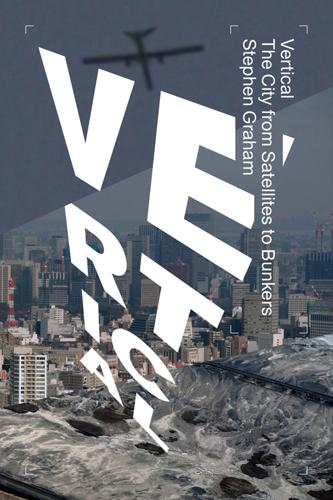
Vertical: The City From Satellites to Bunkers
by
Stephen Graham
Published 8 Nov 2016
The criminalised poor abandoned outside their walls may once have served as sufficient justification for their flight and fortification – but now they have the very real threat of climate change as well.’47 The case of Eko Atlantic shows that the world’s real estate and reclamation industries increasingly sell the manufacturing of land as a miraculous solution to problems of congestion, population growth and urban development. In a final important example of the politics of dredging material up from the seabed to make land, China’s terraforming of a string of ‘fake’ islands in the Spratly Archipelago in the South China Sea since December 2013 demonstrates that ‘reclaiming’ land through dredging can also work to bolster major national geopolitical claims to subsea resources and maritime and air space in contested zones. By July 2015, 810 hectares (2,000 acres) of land had been created through China’s terraforming programme in a remote but strategically vital area fully 500 miles from mainland China.48 Crucially, by being ‘habitable’ to humans – unlike the atolls and reefs at their root – these new islands can be the formal basis for China’s sovereignty claims at the UN in the hotly contested South China Sea.
…
By July 2015, 810 hectares (2,000 acres) of land had been created through China’s terraforming programme in a remote but strategically vital area fully 500 miles from mainland China.48 Crucially, by being ‘habitable’ to humans – unlike the atolls and reefs at their root – these new islands can be the formal basis for China’s sovereignty claims at the UN in the hotly contested South China Sea. Moreover, in a strategy similar to that which allowed the US military to ‘island hop’ across the Pacific in World War II, these islands are now being surmounted by three brand-new military-length runways as a means to allow China to project its military power both vertically and horizontally. The ecological impacts of these terraforming projects are often catastrophic.
…
J., 106–7 Singapore, 144–6, 189–90, 201, 242–3, 257–8, 260, 296–8, 297, 380 Singer, Marc, 352, 364 Sitrin, Marina, 22 Situationist International, 360 Situationists, 319 Ski-Dubai, 266 Sky Train, 230–1 Slavick, Elin O’Hara, 62–3 Sloterdijk, Peter, 3n4, 7–8, 29, 247, 254, 261–2, 269, 273 Smith, Christopher, 333 Smith, Harold, 346 Smith, Mark, 344 Smith, T. Dan, 224, 225n16 Smithsonian Air and Space Museum, 60–1 Smithsonian Institution, 59–60 Smudge Studio, 286–7 Solis, Julia, 364 Solman, Dario, 25 Somalia, 73 South Africa, 382, 384–6 South Bank, 203 South China Sea, 304 South Dakota, 344 Southwark, 203 Space Needle, 138 ‘Spaceship Earth’ (Fuller), 24 Spain, 140, 316 Spectacle Island, 288 Spoor, Richard, 386 Spratly Archipelago, 304 Squibb Building, 155 Sri Lanka, 46 Stahl, Roger, 47 Stallybrass, Peter, 325 ‘Star Wars’ Strategic Defense Initiative, 41 Staten Island, 310, 311 Steadman, Ian, 204 Stern, Robert, 196 Steyerl, Hito, 2n2, 10–2 St Louis, Missouri, 185 Strategic Data Services group, 355 Stroli, Dani, 87 Sudjic, Deyan, 160–1 Sugarloaf Mountain, 126 Sullivan, Louis, 154 Sunni, 46–7 Sweden, 287–8 Switzerland, 355, 358n56 Sydney, Australia, 177, 218 Syria, xiv, 46, 169 Taipei Financial Center, 141 Taiwan, 141 Taliban, 111, 172, 351 Tampines, 298 Tarhunah, 346 Tatton-Brown, William and Aileen, 222–4 ‘Taurus’, 36 TauTona, 382, 385 Taylor-Foster, James, 160 Techwood project, 185 Teich, Andy, 110 Tel Rumeida, 295–6 Tenochtitlan, 285 Terminal High Altitude Area Defense (THAAD) system, xiv Terranova, Charissa, 227 Teufelsberg, 281, 282, 283, 288 Thailand, 231, 257–8, 301 Thames, River, 97, 167, 288 Things to Come (film), 138 13th Arrondissement, 159–60 ThyssenKrupp AG, 131 Tijuana, 349 Titan II Missile, 358 Tokyo, 59, 94, 130, 140, 192, 221, 296–7 Tora Bora, 342 Toronto, Canada, 146, 175, 177–8, 191n39, 194n48, 318, 378–9 Torre David, 120–2, 127 Toshiba, 141 Toth, Jennifer, 352–3 Tower Hamlets, 212 Tower of Babel, 174–5 Transparent Earth, 344 Treichler, Michael, 21 Trellick Tower, 205 Trenchard, Hugh, 66, 66n40 Tripoli, 61 Turkey, 276, 316 Twin Towers, 310, 311 UE movement, 362n65 Uganda, 378 UK, 57, 225, 259, 272, 288, 314. see also specific locations Ulan Bator, 334 Um Lugar ao Sol (‘A Place in the Sun’) (documentary), 214 Underneath New York (Granick), 278 Under the Dome (film), 255 Underworld (DeLilllo), 356 UN Human Rights Council, 75n27 UN Institute for Disarmament Research (UNIDIR), 41 Union Carbide, 257 United Arab Emirates (UAE), xiii, 160, 164, 270–2, 374, 377, 380n43 United Nations, 346 United States, 34, 57, 66n40, 83, 143, 229–30, 258–9, 262–3, 274, 290. see also specific locations United States Space Command, 39 United Way, 146 ‘Universal Corrective Map of the World’ (McArthur), 20–1 Unmanned Aerial Vehicle (Shadow UAV), 69 Up on the Roof (MacLean), 215 Urals, 343 Urban Theory Lab (Harvard University), 8 US Air Force, 56, 62–3, 69, 71, 341–2 US–Canada border, 349, 351 US Congress, 351 US Department of Defense, 342 US Department of Homeland Security, 84, 85, 87, 89, 363 US Department of Justice, 87, 90 US GeoEye-1, 31 US Geological Survey, 379 US–Mexico border, 84, 85, 351, 363 US National Reconnaissance Office (NRO), 33 US National Security Agency, 281–2 US Navy, 343 US RAND, 31 Utopia in Trial (Coleman), 184 Vaal Reefs Mine, 384 Vale, 375 Valjean, Jean, 327–8 Van Alen, William, 155 Vancouver, 175, 177, 192–5, 201, 243, 318, 380 Vanity Fair, 177 van Vuuren, Detlef, 262 Varnelis, Kazys, 158 Veltmeyer, Henry, 367 Vendrame, Giuditta, 257, 269 Venezuela, 119–22 Venice, 370 Viet Cong, 274, 351 Vietnam, 61, 274, 298 Vietnam War, 114 Ville Contemporaine, 181 Ville Radieuse (‘Radiant City’), 64 Virgil, 19 Virgin Galactic, 218 Virginia, 289 Virilio, Paul, 3n4, 30–1, 156, 341 Volic, Ademir, 314 Wahabist ideology, 172 Waldorf Astoria, 143, 155 Walker, A.
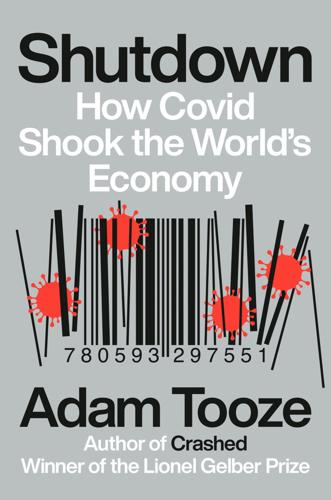
Shutdown: How COVID Shook the World's Economy
by
Adam Tooze
Published 15 Nov 2021
The Obama administration made its “pivot to Asia” in 2011.65 In December 2017 the United States issued its new National Security Strategy that for the first time designated the Indo-Pacific as the decisive arena of great power competition.66 In March 2019, the EU issued a strategy document to the same effect.67 In 2020 the French and German foreign offices followed suit.68 The UK, meanwhile, performed an extraordinary about-face, from celebrating a new “golden era” of Sino-UK relations in 2015 to deploying an aircraft carrier to the South China Sea.69 The military logic was familiar. All great powers are rivals, or at least so the “realist” logic goes. In the case of China, there was the added factor of ideology. In 2021 the CCP did something its Soviet counterpart never got to do: it celebrated its centenary. Beijing made no secret of its adherence to an ideological heritage that ran by way of Marx and Engels to Lenin, Stalin, and Mao.
…
South Korea, Japan, Taiwan, and Vietnam had centuries of history that testified to China’s strategic heft. No more than American bankers, European industrialists, or Arab oil producers could they escape the gravitational force of China’s giant growth machine, but they had immediate reason to be concerned about China’s aggressive new stance on the South China Sea and its bullying attitude toward weaker trading partners. China’s new scale could not be reversed. If it were to be, it would be an economic, a social, and likely a political disaster. The question was how to contain, institutionalize, and frame the new balance of power. One option had been the negotiations for the Trans-Pacific Partnership (TPP), a giant regional trade and investment treaty that excluded China and was pushed by the Obama administration as a “de facto China containment alliance.”63 This had the backing of Japan, Canada, Mexico, and several Latin American states.
…
See also migration and mobility Regional Comprehensive Economic Partnership (RCEP), 207–8, 209, 296 remittances, 103, 161, 251 remote work, 98–99, 117 Renzi, Matteo, 284 repo market (repurchase market), 114–17, 121–22, 148, 165, 179 Republican Party, 20–21, 89, 219, 221–22, 225–27, 229, 269–70, 290, 299 Reserve Bank of Australia, 126 retail industry, 101 Rieder, Rick, 124 Rio de Janeiro, Brazil, 86–87 Romania, 104 Roosevelt, Franklin Delano, 20 Ross, Wilbur, 68 Rotary International, 32, 33 Russia: arms sales to Turkey, 267; and Chinese pandemic aid, 197; and development lending programs, 264; and early responses to pandemic, 11, 82–83; and emerging market debt crises, 159, 163, 165; financial crisis of 1998, 156; and lessons of 2020, 295; oil and gas resources, 18; and oil price war, 79–80; and vaccine development, 247–49; and WHO funding, 33 Ryan, Mike, 69 Sagasti, Francisco, 248 Salvini, Matteo, 285 Sanders, Bernie, 11, 21, 146, 201, 219, 224, 227, 270–71, 273, 284, 288, 291, 299 SARS-CoV-2 virus: characterization of, 4; “flattening the curve” efforts, 41–42, 75, 233, 250; historical perspective on, 27; infectivity of SARS-CoV-2, 51; mortality rates, 28, 36–37, 37–41, 169, 171; mutation/variants, 17, 44–46, 250, 266, 285; and second wave of pandemic, 223, 292; and social distancing measures, 10, 43–44, 45, 74–75, 80, 83–85, 89, 96, 107, 220, 233, 289 SARS epidemic (2003), 3–4, 34, 46, 52–53, 56, 62, 66–67, 238 Saudi Arabia, 33, 71, 79–80, 267, 295 Schäuble, Wolfgang, 134 Schnabel, Isabel, 180 Scholz, Olaf, 134, 185 Schumer, Chuck, 12, 272 Secondary Market Corporate Credit Facility (SMCCF), 127 semiconductor industry, 211–12 September 11, 2001, terrorist attacks, 46 Serum Institute, 237, 246, 251 service sector, 100–101 sex workers, 98 Shanghai, 57, 59–60, 274 Shanghai Accord, 291 Shanghai Stock Exchange, 55 Shingrix vaccine, 236 shipping industry, 106, 274 short-time working, 103–4, 137 Siberia, 189 Singapore, 206 Sino-American relations, 50 Sinopharm, 248 Sinovac, 248–49 smallpox, 30 Snyder, Timothy, 228 social contract, 11, 16, 131, 137, 141, 149–50 Social Democratic Party of Germany, 184–85 social distancing, 10, 43–45, 74–75, 80, 83–85, 89, 96, 107, 220, 233, 289 social safety net, 20, 135–36, 298 Solomon, David, 228 Songwe, Vera, 261, 262 Sonnefeld, Jeffrey, 228 South Africa: budget consolidation, 268; and debt relief programs, 251, 266; and early responses to pandemic, 88; and emerging market debt crises, 157–58, 166; and fiscal responses to pandemic, 132; and global vaccine rollout, 242, 243–44, 245; safari industry shutdown, 102; and scope of 2020 challenges, 12; and spread of pandemic, 233; and virus variants, 250 South African Reserve Bank, 266 South Asia, 103 South China Sea, 18, 206 South Korea: and China’s growing influence, 205; and climate agenda, 194; and early responses to pandemic, 66, 71, 73–74, 74–75, 78, 90; and emerging market debt crises, 165; and financial market turmoil, 125; and fiscal responses to pandemic, 133, 140; and global market stabilization efforts, 122; and global spread of Covid, 80; and history of epidemic diseases, 47; and testing technology, 74, 75; and Trump’s pandemic rhetoric, 77; and WHO funding, 33 Soviet Union, 30.
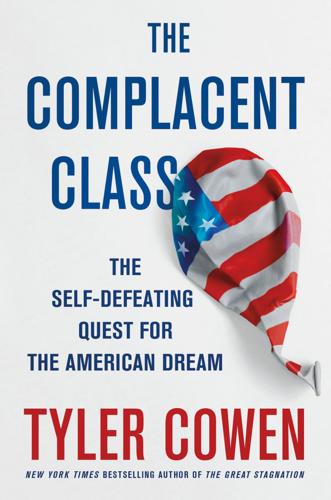
The Complacent Class: The Self-Defeating Quest for the American Dream
by
Tyler Cowen
Published 27 Feb 2017
Nonetheless, a problem will arise as more and more funds are preallocated and locked into preordained uses. At some point this country will face an immediate crisis, and there won’t quite be the resources, or more fundamentally the flexibility, to handle it. Imagine, for instance, military crises in the Baltics and the South China Sea at the same time. To resolve such a messy situation, America probably would need more resources, more cooperation across government, and more public support for involvement than we currently have. Of course, that is just an example. I don’t know what this crisis will be or when it will come.
…
THE RETURN OF INSTABILITY AT EVERY LEVEL, INCLUDING THE GLOBAL As we look to the global arena now, more than fifteen years into the new millennium, a lot of the optimism from the 1990s has vanished. Much of the Middle East has been destroyed, Russia has invaded Ukraine and broken down the old international order, China is newly assertive in the South China Sea, and terrorism is a major news theme in many parts of the world. Europe seems unable to deal with its refugee problem in comparison to the rather smoothly handled Yugoslavian refugee crisis of the 1990s. Both Russia and China seem to be less free, and to be resorting to more censorship, than ten or fifteen years ago.
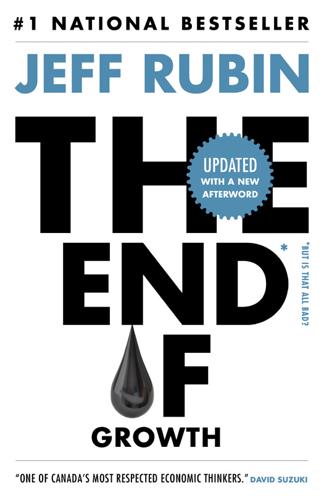
The End of Growth
by
Jeff Rubin
Published 2 Sep 2013
The Philippines, Singapore, Indonesia, Malaysia, Cambodia, Thailand and Vietnam are all running into problems with China and its territorial claims to most of the oil- and gas-rich South China Sea. China’s years of practicing a good-neighbor policy appear to be coming to an end. It’s getting more aggressive in pressing its rights, recently sending an unmanned submarine to plant a flag on the ocean floor of the South China Sea to act as a symbol of its military capability and regional dominance. China reportedly planned to call the Varyag the Shi Lang, after a 17th-century admiral who conquered Taiwan—a not so subtle nod to its plans for the craft.
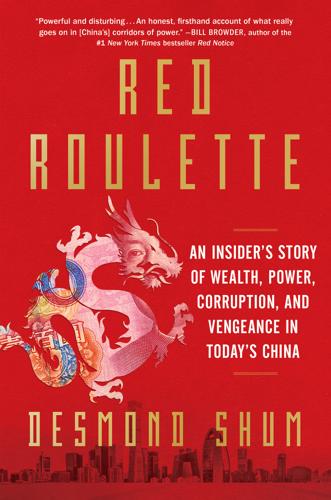
Red Roulette: An Insider's Story of Wealth, Power, Corruption, and Vengeance in Today's China
by
Desmond Shum
Published 6 Sep 2021
The Great Recession that rocked the US economy in 2008 helped convince Communist officials that China’s system was superior and gave them the self-confidence to become more assertive on the global stage. The US Navy had suddenly woken up to the fact that China was building islands out of nothing in the South China Sea and began to push back, further galvanizing an already strong anti-American sentiment within the Party. But to me the most convincing argument for the Party’s dictatorial lurch remains the nature of the Chinese Communist Party. The Party has an almost animal instinct toward repression and control.
…
W., 42, 93 Carlyle Group, 93 Carnegie, Dale, 63 Chen Liangyu, 202 Chen Shui-bian, 170 Chen Tonghai, 197 Chen Weida, 197 Chen Xi, 183–87, 252, 253, 259 Chen Xitong, 56–57 Chen Yun, 239–40 Chen Zuo’er, 247 Chiang Kai-shek, 6, 46, 240 China airport construction boom, 137 average height for men in, 27 capitalism and entrepreneurship in, 50, 169–70, 171, 180, 182, 189, 192, 194, 196, 197, 201, 282, 283 CCP control of all non-Communist elements in society, 205, 208 censorship in, 237 charities in, 182 Christianity in, 71, 182 “common good” fantasy of, 282–83 concept of “face,” 28, 109–10, 212 constitution of, 2 consumption boom, 2000s, 161 consumer goods in, 57 crackdown on Western ideas, 195–97 “Crazy rich Asians” in, 161 democracy and, 86–87, 94, 169–70, 189, 194, 283 Deng and reforms, 18, 45, 55, 170, 216, 251, 283 doing business in, 46, 47, 112–13, 194 (see also Shum, Desmond) economic growth, 45, 51, 55–57, 113, 124, 171–72 economic system of state control, 132, 141 emigration from, mid-1990s, 59–60 exporting its system overseas, 282 extralegal kidnappings in, 2, 254–55, 280, 281 financial crisis of 2008 and, 195 first generation of wealthy, 218 first private research institute, 182 five “black categories,” 5, 11, 170 foreign relations and, 189, 194, 254 Gang of Four, 18, 52 Great Leap Forward, 273 guanxi (connections), importance of, 46, 74, 120, 121, 139, 149–50, 155, 164–65, 181, 204, 217, 247, 271 Gu Mu and economic reforms, 272 Heineken beer and Marlboro cigarettes, sales of, 46 hotels, popularity of, 228 indefinite detention (shuanggui), 281 influence peddling and, 164 intellectual property theft in, 62 Internet and broadband in, 49, 51 islands in South China Sea and, 197 jewelry start-ups in, 89 Jiang’s policy on capitalists, 170 laws as ambiguous, 150, 258 Leninist system of total societal control, 281–82 Li Peng and economic slowdown, 45 medical system, 153–56 military-industrial complex, 185 mobile phones in, 60 modernization of, 77, 169–70, 188 moral vacuum in, 158 motorcycle production, 48 the “New China,” 3, 6, 49, 180 nouveau riche in, 158, 161 one-child policy, 154 Overseas Chinese Affairs, 19–20 parenting philosophy in, 15 as patriarchal society, 3, 64, 103, 173, 246 “patriotic overseas Chinese” as source for foreign currency, 9 politics as the key to riches, 215 pollution in, 188 privatization in, 174 pro-democracy protests in 1989, 272 real estate business, 56, 123–24, 216 relatives overseas, as stigma, 5 secrecy and fear in, 120 shock-and-awe hospitality of, 48 southern clans, diaspora of, 8 Special Economic Zones, 201 sports bureaucracy, 16 state-owned banks, 224 state-owned businesses, 126–27, 142, 171–72, 174, 192, 195, 199, 223 state-run work unit system, 56 state-subsidies of exports, 134 status symbols, 60, 114–15 stock markets of, 240 the “system” and, 95, 274, 282 tariff revenues, 46, 133 tax system, 197 theory of zhongxue wei ti, xixue wei yong, 77 tuhuangdi or dirt emperor, 128, 193 universities run by the CCP, 183 US-China relations, 32, 182 Western businesses in, pretense of ignorance and, 47 Western private equity investment in, 45, 51, 56, 57, 91, 101 woman’s average age to marry, 69 women and power in, 173 women’s repression in, 71 WTO and, 57, 134 Xi Jinping’s repressive rule, 251–55 See also Chinese Communist Party China Central Television, 124 China Democratic League, 52 China Duty Free Group, 126–27 China Mineral and Gem Corp., 89 China National Petroleum Corp., 8 China Ocean Shipping Company (COSCO), 75, 110, 165 China Telecom, 172 ChinaVest, 44–54, 60, 134 Chinese Academy of Social Sciences, 189 Chinese Communist Party (CCP), 2, 7, 53, 57 ability to drink and, 128 anti-American stance, 197, 237–38 battle against Western ideas, 195–96, 253 Beijing vs.
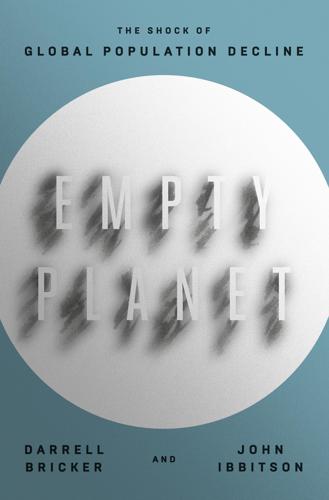
Empty Planet: The Shock of Global Population Decline
by
Darrell Bricker
and
John Ibbitson
Published 5 Feb 2019
There were only a few thousand humans left, maybe fewer, clinging to the shores of southern Africa, on the brink of oblivion.5 The catastrophic eruption of Mount Toba in Sumatra 70,000-odd years ago—there’s been nothing its equal since—spewed 2,800 cubic kilometers of ash into the atmosphere, spreading from the Arabian Sea in the west to the South China Sea in the east, and giving the earth the equivalent of six years of nuclear winter. Toba “is considered by some scientists to be the most catastrophic event the human species has ever endured.” 6Homo sapiens was already in trouble; although we had mastered tools and fire during our 130,000-year history to that point, the earth was in a cooling cycle that had wiped out much of the food supply.
…
Together with its tottering Austro-Hungarian ally, Germany dragged the world into the first of two cataclysmic wars, the greatest folly and tragedy of modern times. Will the Chinese be similarly tempted? It could be something that puts Taiwan firmly in its place, or that lets everyone know the South China Sea is mare nostrum. A quick little war. The boys will be home by Chinese New Year. That doesn’t have to happen. China could evolve peacefully into a mature global power, managing its demographic challenges with restraint. And if the other hot spots—North Korea, Iran, and who-knows-where-next—manage to avoid provoking war, then the world could enter a new era of peace: a geriatric peace.
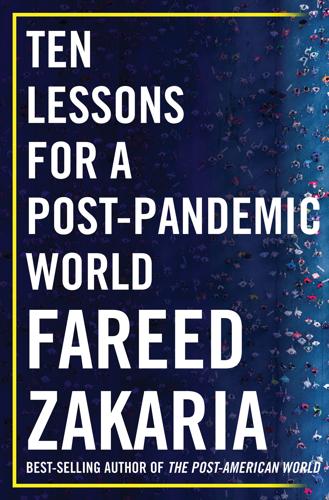
Ten Lessons for a Post-Pandemic World
by
Fareed Zakaria
Published 5 Oct 2020
Looking back, will future generations say that the most profound consequence of Covid-19 was the start of the Second Cold War? The shift in Sino-US relations has taken place in both capitals. Under President Xi Jinping, who came to power in 2012, Beijing has become far more assertive internationally, from grabbing Indian territory to asserting maritime claims in the South China Sea. It has imposed greater control over Hong Kong and sought more deference from countries that receive Chinese foreign aid and loans—while pressuring nations, firms, and global organizations to accept China’s position on Taiwan and other issues. The Chinese foreign ministry has become more belligerent with its new “Wolf Warrior diplomacy,” an approach that gets its name from a Chinese action-movie franchise that shows China’s military flexing its muscle around the world.
…
Beijing has tightened its grip on Hong Kong, too, imposing a draconian “national security” law on the autonomous territory in July 2020. China’s foreign policy has also become more ambitious under Xi, from its pursuit of leadership roles in UN agencies—where it now outnumbers the US four-to-one—to the vast Belt and Road Initiative, to the construction of islands in the South China Sea. The country’s growing belligerence marks a break with its previous passivity, captured by Deng Xiaoping’s adage “Hide your strength, bide your time.” The military buildup, in particular, suggests that China is executing a long-term plan. But what would be an acceptable level of influence for China, given its economic weight in the world?
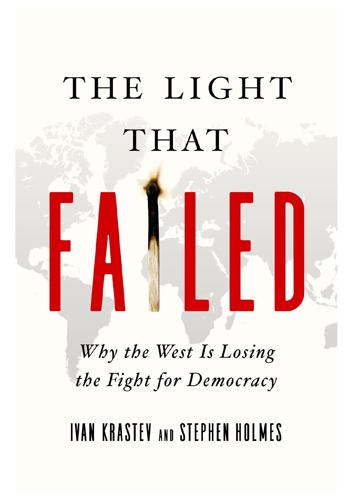
The Light That Failed: A Reckoning
by
Ivan Krastev
and
Stephen Holmes
Published 31 Oct 2019
He consistently gave, and still gives, absolute priority to commercial competition over national-security threats. Unlike the Republican Party’s now silenced national-security hawks, he is in sync with 21st-century American public opinion, where kitchen-table issues preoccupy voters more than a few terrorists in East Africa or a few artificial islands in the South China Sea. Trump does not see the transformation of America’s former authoritarian and militaristic enemies into peaceful capitalist democracies as a victory for American foreign policy. Rather than being ‘the sincerest form of flattery that mediocrity can pay to greatness’, as Oscar Wilde claimed, he sees German-style imitation as a con game that undermines America’s economy.
…
To say that the rise of China marks the end of the Age of Imitation is to say that there will be no return to a global ideological confrontation between two great powers each imposing its social and political model on a group of vassal states and trying to persuade peoples everywhere to adopt its own goals, objectives and vision of mankind’s future. There is no reason to believe that Xi’s China will be a particularly benign actor internationally. Its immediate neighbours, many of whom welcome a US naval presence in the South China Sea, justifiably suspect that its economic projection of power may at some point become much more coercive and military. The coming confrontation between China and the US will no doubt reshape the international order in important and dangerous ways. But it remains misleading to see ‘a new economic Cold War’21 as a rerun of the original, ideology-obsessed Cold War.
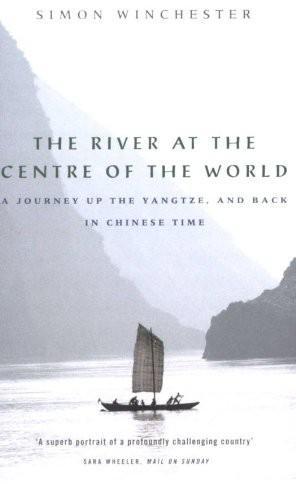
The River at the Centre of the World
by
Simon Winchester
Published 1 Jan 1996
Successive governments had stated flatly that the islands were historically and by geographical logic Chinese, and any official maps you buy of China inside China show a curved dotted line extending from Shanghai south and returning north to a point near Hainan, and encompassing every atoll and reef and skerry in the South China Sea. All, says China, are Chinese. In recent years Beijing has stated these claims rather more robustly, and shortly before my arrival at Woosung the Chinese Navy had installed a detachment of the Chinese Army, who would build a small base on one of the rocks. Now, as I arrived in Shanghai, the Chinese government was publicly defying anyone to try to move it.
…
Compounding the strangeness of the topography, they were also very, very close – making this one of the best-drained parts of the world, with rivers shearing away like railway lines from a city terminus. First there was the Yangtze, heading south to Shigu and – but for the intervention of Cloud Mountain – the Gulf of Tonkin; then, a mere fifty miles to the west, was the upper part of the Mekong, which drained through Laos and Cambodia before entering the South China Sea near Saigon; and thirty miles farther west was the Salween, a lesser-known river that watered the Shan States of upper Burma, and flowed into the Andaman Sea by the town of Moulmein, a place made famous only in a poem by Kipling, the one about the Burma girl a-settin' by the old Moulmein pagoda.
…
See Plant, Cornell Pu Ping, 312 Pu Yi, 21, 130, 206, 211 Public Security Bureau, 28, 304, 330, 372 Putonghua (common speech), 26 Qamdo, 389, 393, 395, 397 Qemo Ho Lake, 351, 352–3 Qian Shan Po, 277 Qianlong, Emperor, 155 Qiatou, 346, 356 Qin dynasty, 158 Qing dynasty, 15, 95, 121, 143, 174, 209, 276, 360, 375, 376, 379 Qingdao, 220 Qinghai province, 33, 245, 333, 343, 374, 393 Qiyang, 143 Qumar stream, 351 Qutang Gorge, 271 Rabe, John, 133 Rafting expeditions, 353–9 Railway Protection Movement, 207, 209 Railways, 57–61, 129, 205–10, 370 Rainfall, 151–53, 158 Ransomes and Rapier, 59 Rape of Nanking, 131, 134 Rapids, 305–6, 345–9, 357 Red Army, 306, 313–14 Red Basin, 225, 265, 294, 295, 375 Red Guards, 201, 275, 340, 383 Red River, 3, 366, 367 Red tea, 180 Regal China Company, 258 Renmin Wenbao, 169 Retention basins, 158 Rice industry, 184 Riding the Dragon's Back (Bangs & Kallen), 412–13 River of Golden Sand, 295, 299, 350, 352, 353, 358 River pilots, 36 River to Heaven, 345, 350–52, 353 Rock, Joseph, 127, 302, 332–34, 338, 340, 412 Rocks 271 Rolls-Royce cars, 136–7 Rose Island, 107 Russell & Co., 177 Rustomjee, Heerjeebhoy, 177 Sailing Through China (Theroux), 408 Salween River, 364, 373, 393 Sampans (small boats), 47, 300, 306 Sand Pebbles, The (McKenna), 286, 410 Sandouping, 229, 231, 232–3, 245 Sanxia, 169 Satellite communications, 309–10 Savage, John L, 227, 229 Schistosomes, 195 Science and Civilisation in China (Needham), 410 Second Opium War, 204 Seeds of Change (Hobhouse), 412 Sexual morals, 145–6, 320, 332, 334–5, 378 Sexually transmitted diseases, 334–5 Shadwell, Charles, 50 Shamanism, 329, 367, 406 Shanghai Club, 36, 75, 84 Shanghai Down Express, 12 Shashi, 244 Shen-nung, Emperor, 363 Shennong Stream, 289, 290, 291 Shenyang, 216 Shigatse, 401 Shigu, 3–4, 20, 359, 362, 365, 373 Shimantan Dam, 240 Ship locks, 255–6 Shipai, 232 Shippee, David, 354, 358 Shippee, Margit, 355 Shipwrecks, 44–5 Shun, Emperor, 363 Shutung (ship), 269 Sichuan Basin, 225, 237, 375 Sichuan Corporation for International Cultural Development, 371 Sichuan province, 213, 226, 295, 297, 313, 314, 371, 377 Signal stations, 272–3,299–300 Sikhs, 72, 76 Sikkim 383 Silk industry, 123, 283 Silk Road, 313 Single Pebble, A (Hersey), 230, 254, 408 Singsong girls, 139–40 Sixteen Points for the Cultural Revolution, 201 Smedley, Agnes, 215 Snowmelts, 151, 153, 158 Soochow Creek, 72 Sourcewaters, 349–53, 404–6 South China Sea, 54 South Manchurian Railway, 129 Space programme, 309–10 Sperling, E., 134 Spratly Islands, 53 Standard Guide Book to Shanghai, 412 Star TV, 309 Steepness, 344, 349 Stilwell, ‘Vinegar Joe’, 287 Su, Mr, 67–9 Subways, 81 Suez Canal, 179 Sui dynasty, 100 Suicides, 319–20, 332 Suifu, 295 Sun Yat-sen, 51, 125, 211, 215, 225, 228 Sun Ziming, 330 Sung dynasty, 100 Swimmers, 194–203 ‘Swimming' (poem), 218, 231 Szechuan province, 284 Taco Bell, 213 Tactical Pilot Charts (TPCs), 30–31, 409 Taipan (company chief), 63, 65, 75, 86, 89 Taiping Rebellion, 121n, 134n, 142 Taipings, 121 Taipingxi, 232 Tang dynasty, 100, 114, 254, 330 Tang, Mr, 370–71, 374, 396, 397, 400 Tanggula Range, 398, 399, 405 Tanggula township, 402–3 Tannu-Tuva, 381 Taoists, 224, 330, 338–9, 341 Taotai (city official) 597183 TCBY store, 212–13 Tea clippers, 175, 205 Tea industry, 166–7, 170, 173–86, 380–81 Tea-making process, 181–2 Tectonics, 367 Telegraph cable, 58n Television, 309 Tempe, Arizona, 116 Ten thousand li Yangtze (painting), 10, 14–23 Tennyson, Alfred Lord, 48 Theacea plants, 174 Theroux, Paul, 408 Thistle and the Jade, The (Keswick), 412 Three Gorges, 25, 26, 29, 97, 225, 226n, 228, 235, 243–4, 266, 287–9, 345, 366 Three Gorges Dam, 19, 164, 169, 219, 223, 225, 226–46, 249–53, 255, 257–62, 276–7, 371 Three Gorges Hotel, 247–8 Three Gorges Project Corporation, 249, 259 Through the Yangtze Gorges or, Trade and Travel in Western China (Little), 411 Tiananmen Square, 235, 239, 379 Tianjin, 131 Tibet, 322, 356, 369–70, 373–6, 379–407 Tibetan foothills, 303 Tibetan people, 278–9, 322–3, 325, 383–91 Tibetan Plateau, 150, 225, 295, 345, 351, 382, 396, 406 Tides, 124–5, 160 Tientsin, 95 Tiger Leaping Gorge, 327, 330, 346–9, 356, 366 Tokyo War Crimes Tribunal, 132, 134 Tolley, Admiral Kemp, 410–11 Tongtian He, 345, 350–52, 354 Topographical maps, 30–31 Trackers, 267, 268, 277, 279, 289–90 Travel Survival Guide to China, 409 Treaty of Nanking, 142–5, 270 Trobriand Islanders, 334 Tsampa (Tibetan food), 380, 396 Tsingtao beer, 220, 311 Tuotuo stream, 322, 340–41, 374 Tuotuoheyan, 403, 405 Tuotuoheyan bridge, 404, 406–7 U.S.
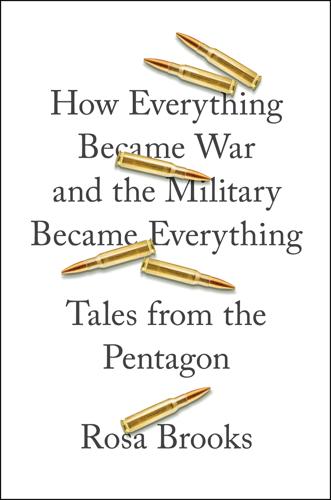
How Everything Became War and the Military Became Everything: Tales From the Pentagon
by
Rosa Brooks
Published 8 Aug 2016
Elizabeth Huff; rev. by Priscilla and Richard Roberts, “The First Barbary War,” Monticello, 2011, www.monticello.org/site/research-and-collections/first-barbary-war#footnote10_trdpc84. 18. Sarah Schoenberger, “Piracy in the South China Sea: Petty Theft in Indonesia, Kidnapped Ships in Malaysia,” Asia-Pacific, Global Analysis, Center for International Maritime Security, September 6, 2014, http://cimsec.org/piracy-south-china-sea-petty-theft-indonesia-kidnapped-ships-malaysia/12899. Chapter 2: Wanna Go to Gitmo? 1. Agreement Between the United States and Cuba for the Lease of Lands for Coaling and Naval Stations, February 23, 1903, http://avalon.law.yale.edu/20th_century/dip_cuba002.asp. 2.
…
In 1815, however, the United States launched another successful offensive against the Barbary States. This time, the pirates were vanquished—until piracy off the coast of Africa accelerated again in the twenty-first century. Piracy had never fully disappeared from the world’s shipping channels, of course, and the Navy has fought pirates from the Caribbean to the South China Sea over the last two centuries. The nature of piracy has changed significantly since America’s first foreign military adventure, however. Fearsome as the Barbary pirates were, they operated largely under the control of the Barbary States, making diplomacy a viable adjunct or alternative to war.

More: The 10,000-Year Rise of the World Economy
by
Philip Coggan
Published 6 Feb 2020
Singapore’s deep-water harbour is one reason why Sir Stamford Raffles chose it as a base for British trading in 1819; another reason is its strategic location at the south-eastern end of the Strait of Malacca, between the Malay Peninsula and Sumatra. Any boat wanting to travel from the Indian Ocean to the South China Sea needs to go through the strait. Today the port is the second-busiest in the world and Singapore is one of the planet’s most prosperous nations, thanks to its position at the heart of Asian trade and finance. Shipping containers are so uniform in appearance that it is difficult to tell what is inside them.
…
In the last 50 years, more and more nations have made the breakthrough out of poverty, starting with Asian “tigers” like South Korea and Taiwan, and moving on to the giants of China and India. Economic power is shifting away from Europe and North America, where it resided for the last three centuries, and back to Asia. This is a return to “normal” in some ways, since the Middle East, the Indian Ocean and the South China Sea were for a long time the heart of the global trading system. Many economic changes that have led to long-term prosperity faced short-term opposition. Change means that some tasks must stop so that others may start, and that creates losers as well as winners. In the short term, the complaints of the losers may dominate the discussion.
…
(Indeed, in the terminology of the current Chinese government’s Belt and Road initiative, the sea route to Africa and the Mediterranean is the road element.)13 The overland route was vulnerable to disruption by raiders and suffered a decline after around 750CE before reviving again at the time of the Mongol empire. Shipwrecks in the South China Sea have shown vast cargoes of pottery, with 55,000 pieces in one wreck and 500,000 in another. Such cargoes were far too bulky to have been carried by pack animals. One of the most remarkable finds in recent years was the Belitung shipwreck, found off the coast of Indonesia. This Arab dhow was on the way back from China in the ninth century CE and contained the largest ever hoard of Tang dynasty artefacts.

Army of None: Autonomous Weapons and the Future of War
by
Paul Scharre
Published 23 Apr 2018
Militaries regularly interact in tense situations that have the potential for conflict, even in peacetime. In recent years, the U.S. military has jockeyed for position with Russian warplanes in Syria and the Black Sea, Iranian fast boats in the Straits of Hormuz, and Chinese ships and air defenses in the South China Sea. Periods of brinksmanship, where nations flex their militaries to assert dominance but without actually firing weapons, are common in international relations. Sometimes tensions escalate to full-blown crises in which war appears imminent, such as the 1962 Cuban Missile Crisis. In such situations, even the tiniest incident can trigger war.
…
This same action could be perceived very differently in contested areas, however, such as the Senkaku Islands, where both countries assert sovereignty. In such situations, a country whose drone was shot down might feel compelled to escalate in order to back up their territorial claim. Hints of these incidents have already begun. In December 2016, China seized a small underwater robot drone the United States was operating in the South China Sea. China quickly returned it after U.S. protests, but other incidents might not be resolved so easily. All of these complications are manageable if autonomous systems do what humans expect them to do. Robots may raise new challenges in war, but humans can navigate these hurdles, so long as the automation is an accurate reflection of human intent.
…
(Rossumovi Univerzální Roboti) (play), 234 Russell, Stuart, 68, 71, 72, 116, 118, 356 Russia cyberattacks by, 213 ground combat robots, 5, 102, 111–17 lack of public policy on autonomous weapons, 118 Platform-M, 111–14 robotized military units, 6 Soviet era, see Cold War; Soviet Union tolerance for casualties and fratricide, 172 Trident missile false alarm (1995), 173–74 Uran-9 ground combat robot, 114–16 U.S. military and, 207 Vikhr robot tank, 115–16 Wolf-2, 114 Rutter, Brad, 146 Rwanda, 288 SAC (Strategic Air Command), 307 safety (reliability) and Aegis combat system, 162–67 of autonomous weapons, 161–79 nuclear weapons and near-miss accidents, 173–75 and USS Vincennes incident, 169–70 SAG (surface action group), 64 Sagan, Scott, 174–75 Salty Dog 501/502 (X-47B experimental drone), 60–62 Samsung SGR-A1 robot, 5, 104–5, 118, 303–4 SAR (synthetic aperture radar), 86 Sarao, Navinder Singh, 206 satellites, 300–301 saturation bombing, 281 Saudi Arabia, 213 Savitsky, Valentin, 311 SAW (Squad Automatic Weapon), 37–38 Schelling, Thomas, 298, 305, 315, 341, 348 Schuette, Larry, 100–101 Scott, Ridley, 234 Seabed Treaty (1971), 301 Sea Hunter, 78–79 sear, 190 Securities and Exchange Commission (SEC), 206 Sedol, Lee, 126, 150 self-driving cars, 28, 31–32, 147, 217, 277 Selva, Paul, 8, 293–94 semiautonomous weapon systems, 29, 29f, 44, 44f, 326f Brimstone missile as, 107–8 DoD policy, 89 fully autonomous vs., 48f human intervention in, 147 Senkaku Islands incident, 208–9 Sensor Fuzed Weapon (SFW), 51–52, 326 sentry robots, 5, 102, 104–5, 112–13, 118, 303–4 SGR-A1 sentry robot, 5, 104–5, 118, 303–4 Shadow drone, 209 Shattuck, Lawrence, 308 Shelley, Mary, 234 Sherman, William Tecumseh, 274, 296 Shield AI, 122–24 shot detection system, 113–14 Siemens Step 7 software, 214 Singapore, 103 Skinner, B. F., 39 Skynet (fictitious weapon system), 26–28, 52–53, 134, 233–34, 360–61 SMArt 155 artillery shell, 343 “smart” weapons, 38–40; see also precision-guided munitions Somme, Battle of the, 38 sonar, 85 Sorcerer’s Apprentice (animated short), 148–49 South China Sea, 209 South Korea, 5, 102, 104–5, 260, 303–4, 356 sovereignty, drones and, 208 Soviet Union, 1–2, 76, 313–14; see also Cold War S&P 500, 199, 204 space shuttle, 154, 382n SpaceX, 154 Spark hobby drone, 115 Sparrow, Rob, 259 spear phishing attacks, 224 speed, 199–210 autonomous weapons and, 207–10 and crisis stability, 304–5 in cyberwarfare, 229–30 and limits of centaur warfighting, 325–26 online price wars, 205 in stock trading, 200–204, 206–7 spoofing attacks, 182–83, 183f, 186, 206 Sputnik, 76, 80 Squad Automatic Weapon (SAW), 37–38 stability, 297–318 autonomous weapons and, 302–3 autonomous weapons’ potential to inflame crises, 317–18 benefits of autonomous weapons in crises, 311–14 and debate over autonomous weapons bans, 351–52 and nuclear weapons, 298–302 psychology of crisis decision-making, 306–11 and removal of human fail-safe, 305–6 speed and, 304–5 stability-instability paradox and mad robot theory, 314–16 strategic, 297–302 Stark, USS, 169 Star Wars, 134 “Star Wars” missile defense shield, 309–10 stationary armed sentry robots, 104–5 stealth drones, 56, 61–62, 209, 354 stigmergy, 21 stock market algorithmic trading, 200–201, 203–4, 206–7, 210, 229, 244, 387n E-mini price manipulation incident, 206 “Flash Crash,” 199–201, 203–4 Knight Capital Group incident, 201–2 Strategic Air Command (SAC), 307 strategic corporal problem, 309 Strategic Defense Initiative, 1, 309–10 strategic stability, 297–302 Strategic Stability (Colby), 299 Strategy of Conflict (Schelling), 341 Stuxnet worm, 213–16, 223, 224 Submarine Safety (SUBSAFE) program, 161–62 submarine warfare, 101 suffering, unnecessary, 257–58 Sullivan, Paul, 162 Sun Tzu, 229 Superintelligence (Bostrom), 237 supervised autonomous weapon systems, 29, 45–46, 45f, 193, 329f CODE, 72–76, 117, 253, 327–28 human intervention in, 147 surface action group (SAG), 64 surrender, false, 259–60 surveillance drones for, 13–14 FLA and, 68–71 swarming by autonomous weapons, 11–13 CODE program, 72–76 command-and-control models, 20f and evolution of autonomy, 17–23 FLA and, 71 of U.S. ships by Iran, 22, 107 synthetic aperture radar (SAR), 86 Syria, 7, 331 system failure, Three Mile Island as, 151 T-14 Armata tank, 116 Tacit Rainbow, 49 Tactical Technology Office (TTO), 79–83 Tactical Tomahawk Land Attack Cruise Missile (TLAM-E), 55, 368n tactics, techniques, and procedures (TTP), 41 Taliban, 3, 253 tanks, robotic, 115–16 Taranis drone, 108–11 targeting ATR, 76, 84–88 autonomous, 116, 123–24, 187 DIY drones and, 123–24 by human-assisted automated weapons, 98 by sentry robots, 112–13 of weapons instead of people, 261 target location error, 98 Target Recognition and Adaption in Contested Environments (TRACE), 84–88, 128 targets, cooperative/non-cooperative, 84–85 task, as dimension of autonomy, 28 TASM, See Tomahawk Anti-Ship Missile TensorFlow, 128–29 Terminator (film series) and autonomous weapon debates, 264 fate in, 360–61 good Terminators in, 295 self-aware robots in, 27 Skynet, 26–28, 52–53, 134, 233–34, 360–61 “Terminator Conundrum,” 8 terrorism, 93, 134 Tesla Model S crash, 147 Tetris, 239 thermostats, programmable, 30–31, 33–34 Third Offset Strategy, 59, 82, 93 Thomas Jefferson High School (TJ), 130–33 Three Laws of Robotics (Asimov), 26–27, 134 Three Mile Island nuclear accident, 151–53, 156 Thresher, USS, 161 tightly coupled systems, 152 TJ (Thomas Jefferson High School), 130–33 Tomahawk Anti-Ship Missile (TASM), 49, 49f, 53–54, 368n Tomahawk Land Attack Cruise Missile (TLAM-E), 55, 368n Tornado GR4A fighter jet incident, 138–40, 176 torpedoes, 39–40 torture, 280 total war, 274, 296, 341 Tousley, Bradford, 80–84, 149, 210, 223–24 TRACE (Target Recognition and Adaption in Contested Environments), 84–88, 128 training, limitations of, 177 transparency and crisis management, 328–29 in description of weapons research, 111 in treaty verification regimes, 344–45, 352–53 treaties, arms control, see arms control Trebek, Alex, 146 Trident II (D5) ballistic missile, 173 Trophy system, 92 trust in Aegis combat system, 168 in automation, see automation bias and cybersecurity, 246 and dangers of autonomous weapons, 192, 194 and deployment of autonomous systems, 83 and need to understand system’s capabilities and limitations, 149–50 Tseng, Brandon, 122, 123, 133 Tseng, Ryan, 122 TTO (Tactical Technology Office), 79–83 TTP (tactics, techniques, and procedures), 41 Turing, Alan, 236 Turing test, 236 Tutsis, 288 Twain, Mark, 35–36 Twitter, 185, 224 U-2 surveillance plane, 307, 310–11 UAV (uninhabited aerial vehicle), 104 UCAV (uninhabited combat aerial vehicle), 62 unguided weapons, 38–39 UNIDIR (UN Institute for Disarmament Research), 150–51 uninhabited aerial vehicle (UAV), 104 uninhabited combat aerial vehicle (UCAV), 62 United Kingdom (UK) autonomous weapons policy, 118 Brimstone missile, 105–8, 117, 326, 353 stance on fully autonomous weapons, 110–11 Taranis drone, 108–11 transparency in description of weapons research, 111 WWII aerial bombardments, 341–42 UK Joint Doctrine Note 2/11 (The UK Approach to Unmanned Aircraft Systems), 109 UN Convention on Certain Conventional Weapons (CCW), see Convention on Certain Conventional Weapons UN Institute for Disarmament Research (UNIDIR), 150–51 UN Security Council, 344 United Nations Special Rapporteur, 287 U.S.

Cold: Adventures in the World's Frozen Places
by
Bill Streever
Published 21 Jul 2009
But it could live almost anywhere, while these damselfish are condemned to the tropics. When I tire of listening to grunting damselfish, I stand in the water. Facing shore, I look at coconut palms growing just beyond white sand. Farther back, in the hills behind the beach, macaques play in jungle branches. I turn to watch the swells coming in from the South China Sea. They break on the reef face. A surge of water, the remains of a broken wave, advances across the shallows, then retreats, leaving white foam behind to slip slowly back. The sun hangs low on the horizon. At this latitude, sunset comes quickly. I can almost see the sun move as it sinks into the sea.
…
Globally, El Niño has come to refer to those years when the Christmas currents are unusually strong. The currents strengthen when trade winds blowing to the west weaken and unusual volumes of warm water reach Peru and Ecuador. Global weather patterns respond. It rains in California. Australia dries out, and bush fires burn out of control. Gulf of Mexico hurricanes become less prevalent. South China Sea typhoons become more prevalent. Corals die in the Pacific Ocean. People catch marlin off the coast of Washington State. With El Niño, cold, clear high-pressure air stalls between Alaska and Seattle. The pressure ridge forces warm winds forming along the Aleutian Islands to swing north, toward Anchorage.

War for Eternity: Inside Bannon's Far-Right Circle of Global Power Brokers
by
Benjamin R. Teitelbaum
Published 14 May 2020
For Steve, the message gave him license to forage further, to admit aloud to himself that the Bible as a blueprint for life was incomplete, and that a fuller spirituality even in the Christian tradition would require venturing beyond. At least, that was his tacit justification as he dove into the Upanishads or Aldous Huxley’s Perennial Philosophy. And the effort wasn’t all about reading, either. Steve renewed his practice of meditation while on the destroyer. The stress of the responsibilities of patrolling the South China Sea was enough to make moments of calm and stillness brought by meditation palliative and essential. His method was basic, a distillation of what he had learned in college: he found a sitting position—nothing fancy—closed his eyes mostly, dropped his chin, relaxed his shoulders, and centered his attention on calming his breaths.
…
As a naval officer, especially in this part of the world, you just couldn’t be talking about stuff like this. He knew what his superiors would think of him, and had on occasion laid awake at night playing hypothetical conversations in his head. He pictured his superior finding out: “Bannon’s doing fucking Zen meditation on a combatant? In the South China Sea? On picket duty? Put a mark in his fitness report. Drop his security clearance. There are nukes on this ship, and we’ve got a pollywog going native. Bannon’s a weirdo!” That would be devastating—being weird. If you’re weird in a wardroom, you’ll get a shitty fitness report. You get a shitty fitness report, and you start dropping down the hierarchy.

Southeast Asia on a Shoestring Travel Guide
by
Lonely Planet
Published 30 May 2012
Buddhist monks travelling by motorcycle taxi, Siem Reap BERNARD NAPTHINE/LONELY PLANET IMAGES © Elemental Forces The life-giving force of water has sculpted many Southeast Asian landscapes. The jungle-topped islands of the Malay peninsula are cradled by coral reefs that tame the ocean into azure pools. The languorous Vietnamese coastline greets the South China Sea from tip to tail, while inland there are karst mountains – evidence of long-vanished oceans. And the muddy Mekong River lopes through tightly knit mountains to flat rice baskets. The traditional ‘highways’ of Borneo are tannin-stained rivers that slice through the wilderness. And the volcanoes of Indonesia and the Philippines provide a glimpse into the earth’s blacksmithing core.
…
Kek Lok Si Temple, Penang JOHN BANAGAN / LONELY PLANET IMAGES © Kuching (Malaysia) 11 Borneo’s most sophisticated and stylish city (Click here) brings together an atmospheric old town, a romantic waterfront, fine cuisine for all budgets and chic nightspots that would be right at home in London. But the city’s biggest draw is what’s nearby: some of Sarawak’s finest natural sights that are easy to visit on day trips. You can spot orang-utans or search out a giant Rafflesia flower in the morning, or look for proboscis monkeys and wild crocs on a sundown cruise in the South China Sea. Finish off the evening by dining on fresh seafood or crunchy midin (jungle fern tips). PETER PTSCHELINZEW / LONELY PLANET IMAGES © Bagan (Myanmar) 12 More than 4000 Buddhist temples are scattered across the plains of Bagan (Click here), the site of the first Burmese kingdom and an architectural complement to the temples of Angkor.
…
Top of section Malaysia Includes » Kuala Lumpur Melaka Cameron Highlands Penang Pulau Langkawi Pulau Tioman Kuala Terengganu Pulau Perhentian Kota Bharu Taman Negara Malaysian Borneo Understand Malaysia Survival Guide Why Go? Malaysia is like two countries in one, cleaved in half by the South China Sea. The multicultural peninsula flaunts Malay, Chinese and Indian influences, while Borneo hosts a wild jungle of orang-utans, granite peaks and remote tribes. Throughout these two regions is an impressive variety of microcosms ranging from the space-age high-rises of Kuala Lumpur to the smiling longhouse villages of Sarawak.
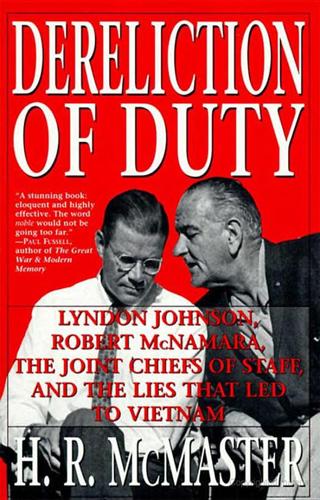
Dereliction of Duty: Johnson, McNamara, the Joint Chiefs of Staff, and the Lies That Led to Vietnam
by
H. R. McMaster
Published 7 May 1998
The initial strike occurred on August 4, the president got his congressional resolution on August 10, and on August 5 Secretary McNamara announced that the following military deployments were under way: transfer of an attack carrier group from the Pacific coast to the Western Pacific; movement of interceptor and fighter-bomber aircraft into South Vietnam [36 B-57’s and 12 F-102’s]; movement of fighter-bomber aircraft into Thailand; transfer of interceptor and fighter-bomber squadrons from the United States to advance bases in the Pacific; movement of an antisubmarine force into the South China Sea; the alerting and readying for movement of selected Army and Marine forces.4 It was unclear when Johnson would approve additional actions in support of the central recommendation of the May memorandum: the gradual application of additional military pressures on North Vietnam. Deliberations about Vietnam, conducted in the middle of a presidential campaign, solidified two critical assumptions: first, that the principal difficulty in South Vietnam stemmed from North Vietnam’s support for the Viet Cong; and second, that the gradual application of military and diplomatic pressures on the Hanoi government would persuade North Vietnam’s leaders to terminate that support.
…
While South Vietnamese generals occupied themselves principally with political intrigue, the Viet Cong were growing stronger, to a point where they controlled half of the countryside and one-quarter of the rural population. They had infiltrated the once-safe major cities and seemed poised to cut off the northern portion of South Vietnam by driving from their highland bases to the coastal provinces on the South China Sea. The pacification program that Westmoreland had hoped would secure the area around Saigon and serve as a model for the entire country had come to a standstill. The South Vietnamese armed forces were exclusively on the defensive and had suffered major defeats in spite of their superiority in numbers and equipment.
…
.”* It was apparent to Collins that “the US would get far more committed than it intended, and it was obvious from the civilian influence on the tactics and strategy that we were just going to nibble away at this Vietnamese problem.”2 On February 7, 1965, U.S. Navy aircraft carriers Ranger, Coral Sea, and Hancock were afloat in the South China Sea, waiting for orders to bomb North Vietnam. The Viet Cong attack on Pleiku provided the occasion to launch Flaming Dart I, the name for the reprisal strikes against military barracks in the southern portion of North Vietnam. Ranger would strike military barracks at Vit Thu Lu, while Coral Sea and Hancock would target a barracks facility at Dong Hoi.
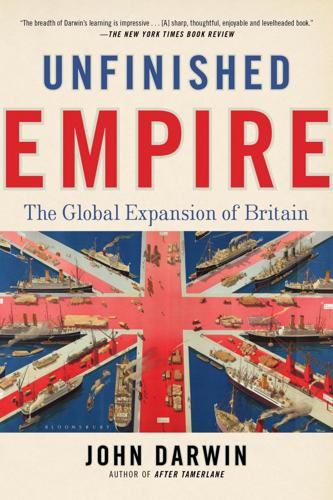
Unfinished Empire: The Global Expansion of Britain
by
John Darwin
Published 12 Feb 2013
In the ‘country trade’ – that is the traffic within Asia – an array of indigenous merchants plied routes that predated by centuries the arrival of European shipping. Arab and Swahili merchants in East Africa, Hadramis from Southern Arabia, Indians from Surat, Bugis from the Celebes, as well as Chinese, carried much of the trade of the Indian Ocean, the Bay of Bengal and the South China Sea.41 Of all these groups, it was the Armenians, with their headquarters at New Julfa in Safavid Isfahan, whose commercial success was most widely envied by Europeans. As we shall see, the English in Asia were anxious to link their own fortunes with those of this remarkable network. To make their way into this world, and snatch a profit from its trades, the English merchants had banded together into a common concern.
…
But it was Britain’s possession of India that made it a great Asian power, and for much of the nineteenth century, the Asian power. No other European state acquired an overseas territory on remotely this scale, or one which conferred such astonishing benefits. With India in their hands, the British had the means to exert their power across a huge swathe of the world from the Persian Gulf to the South China Sea, and even for a time into the Sea of Japan. This was partly because India supplied so many mercantile assets (Indian merchants as well as cotton and opium). But India’s unique value lay mainly in the fact that it gave the British an army. After the Mutiny, when the Indian army was shrunk, and the all-British garrison enlarged, two thirds of Britain’s regular forces (Indian and British) were paid for by the Indian taxpayer.
…
Mancall, Deadly Medicine: Indians and Alcohol in Early America (London, 1995), p. 14. 40. V. Lieberman, Strange Parallels: Southeast Asia in Global Context c. 800–1830 (Cambridge, 2003), vol. 1, pp. 277–82. 41. For a fascinating survey, D. Lombard and J. Aubin (eds.), Asian Merchants and Businessmen in the Indian Ocean and South China Sea (Delhi, 2000). 42. This is a tiny selection from that extraordinary lexicon of Anglo-Indian speech, H. Yule and A. C. Burnell (eds.), Hobson-Jobson: A Glossary of Colloquial Anglo-Indian Words and Phrases, first published in 1886. 43. For these ventures, W. Foster, England’s Quest of Eastern Trade (London, 1933). 44.

Sextant: A Young Man's Daring Sea Voyage and the Men Who ...
by
David Barrie
Published 12 May 2014
While the celestial navigator deploys almanac and sight-reduction tables to define and then solve the trigonometric problems arising from a sextant “sight,” the GPS user relies on computer algorithms in the receiver to perform analogous calculations—instantly, effortlessly, and automatically. I first encountered satellite navigation when I was sailing across the South China Sea from Hong Kong to Manila in April 1984. I was navigating with the sextant I had used going to and from the Azores three years earlier, though the experience of working out sights under a tropical sun that passed almost vertically overhead at noon was very different. Beyond the strong winds of the northeast monsoon we were becalmed off the coast of Luzon.
…
See also Slocum, Joshua Skyring, William, 201 Skyring Water, 202 “skyspaces,” 283–84 Slocum, Joshua, xviii, xix, 22, 57, 207, 227–38 small-boat voyages, xx Smalls Lighthouse, 219–20, 219n Solander, Daniel, 89 solar declination, 28, 58, 237 solar flares, 282–83 Solomon Islands, xvi–xvii, 121, 125, 133–34, 196–97n soundings, 4–5, 267 South America Pilot, 231 South Atlantic, 92 South China Sea, 280 South Georgia Island, 92, 242, 251, 255–59, 262 South Pacific, 90, 105 South Sandwich Islands, 92 South Seas, 87 southern continent debate, 87, 93 Southern Cross, 253 Southern Hemisphere, 168 Southern Ocean, 92–93, 240, 255 Spain, 85, 138–39, 147, 149–53 Spanish Armament, 138–39 “Spanish Ladies” (song), 33n spherical geometry, 69 Spice Islands, 194 spiritual significance of celestial navigation, 286–87 Spray, xviii, 207, 227–38 St.
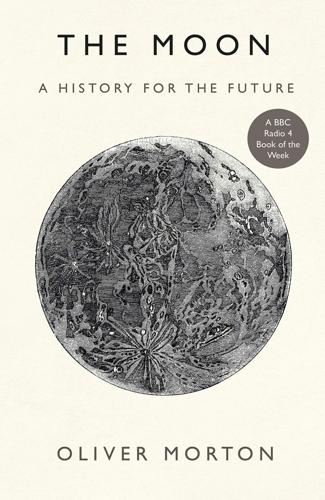
The Moon: A History for the Future
by
Oliver Morton
Published 1 May 2019
At the scale of national economies they hardly move the dial. Disputes over who has the right to go where in the South China Sea could escalate into a real concern very quickly; rights of passage across Shackleton Crater seem less likely to. But in this respect the Moon does not exist in a vacuum, responding only to the solar wind. The political climate on Earth—and thus, in the Anthropocene, the Earth’s own climate—will buffet it, shake it, reshape it. The way people treat each other in Shackleton Crater will depend on what happens in the South China Sea. The extent of any future development of the Moon will depend in part on what is found there, in part on ingenuity, in part on luck.

MegaThreats: Ten Dangerous Trends That Imperil Our Future, and How to Survive Them
by
Nouriel Roubini
Published 17 Oct 2022
Despite early promises to stay in its lane, China increasingly competes with the West. It has launched its own versions of the World Bank and the International Monetary Fund. It has kept American Big Tech firms out of the country, while nurturing homegrown giants. It has built new islands in the South China Sea and claimed territories that the West insists are in international waters. Yet Xi continues to proclaim that a rising power does not make aggression inevitable. Unlike the United States and its allies, China has not fought a war since 1979, apart from border skirmishes. Indeed, China has ample incentive to foster peace.
…
Alarmed that we lack the imagination to foresee events that will spiral into conflict, retired Admiral James Stavridis coauthored a novel with Elliot Ackerman that posits a full-scale war between the United States and China in 2034.44 For its part, China has claimed and militarized islands in the South China Sea despite assertions of peaceful intent, taunting Japan. Its planes regularly buzz Taiwanese airspace, risking a military incident. China’s intentions now reach to outer space. A hypersonic Long March rocket circled the earth in a recent test. “Such a system could, if deployed, circumvent US missile defences,” the Financial Times reported.

A Short Ride in the Jungle
by
Antonia Bolingbroke-Kent
Published 6 Apr 2014
And with that, the policeman prodded me on the knee and told me to be careful, before insisting on a photograph. Vietnam curves around the edge of the Indochinese landmass, scooping up her inland neighbours like the long middle finger of an aye-aye. Four hundred miles wide at its northern border with China, the bony finger prods south between Laos and Cambodia to the west and the South China Sea to the east. At its narrowest point, in Quang Binh province, it's a mere thirty miles wide. I would follow this finger south from Hanoi, riding four hundred miles through the northern provinces of Hoa Binh, Than Hoa, Nghe An, Ha Tinh and Quang Binh. From there I would turn west over the mountains into Laos.
…
Already she had travelled through Tibet, China, Burma, Thailand and Laos, changing names three times as she plunged south. In Tibet she started her journey as Dzachu – River of Rocks; in China she dropped a torrid 5,000 metres to become Lancang Jiang – the Turbulent River; in Thailand and Laos she was Mae Nam Khong – Mother of the Waters. And before disgorging herself into the South China Sea she would have two more incarnations; as the Khmer Tonle Tom – Great One; and lastly, Cuu Long – Nine Dragons – in Vietnam. Now, at the end of the dry season she was as at her calmest, but in a few months the monsoons would churn the Mekong into an unrecognisable boiling brown cauldron. Shortly, we rounded a sandbar and Don Det came into view.

Global Catastrophic Risks
by
Nick Bostrom
and
Milan M. Cirkovic
Published 2 Jul 2008
Recent information on the environmental effects of super-eruptions supports the exceptional climatic impact of the Toba eruption, with significant effects on the environment and human population. 10.2 Atmospheric im pact of a super-eruption The Toba eruption has been dated by various methods KfAr method at 73,500 ± 3500 yr B P (Chesner et al., 1991). The Toba ash layer occurs in deep-sea cores from the Indian Ocean and South China Sea ( Huang et al., 2001; Shultz et al. , 2002; Song et al., 2000) . The widespread ash layer has a dense rock equivalent volume (DRE) of approximately 800 km3 (Chesner et al. , 1991). The pyroclastic flow deposits on Sumatra have a volume ofapproximately 2000 km 3 DRE (Chesner et al., 1991; Rose and Chesner, 1 990) , for a total eruption volume of approximately 2800 km 3 ( D RE).
…
Volcanic dust probably has a relatively shorter residence time in the atmosphere (3-6 months) than soot (Turco et al., 1 990) and spreads from a point source, but volcanic dust is injected much higher into the stratosphere, and hence Toba ash could have had a wide global coverage despite its short lifetime. Evidence of the wide dispersal of the dust and ash from Toba can be seen from lake deposits in India, where the reworked Toba ash forms a layer up to 3 m thick, and from the widespread ash layer in the Indian Ocean and South China Sea (Acharya and Basu, 1993; Huang et al., 2001; Shane et al., 1995). Evidence for rapid and severe cooling from the direct effects of volcanic ash clouds comes from the aftermath ofthe 1815 Tambora eruption. Madras, India experienced a dramatic cooling during the last week of April 1815, a time when the relatively fresh ash and aerosol cloud from Tambora ( 10-1 1 April) would have been overhead.
…
The eruption clouds of individual historic eruptions have been too short-lived to drive lower tropospheric temperatures to their steady state values (Pollack et al. , 1993), but the apparently long-lasting Toba aerosols may mean that the temperature changes in the troposphere attained a larger fraction of their steady-state values. Huang et al. (2001) were able to correlate the Toba ash in the South China Sea with a 1 oc cooling of surface waters that lasted about 1000 years. Considering a somewhat smaller super-eruption, the Campanian eruption of approximately 37,000 cal yr BP in Italy (150 km 3 of magma discharged) was coincident with Late Pleistocene bio-cultural changes that occurred within and outside the Mediterranean region.
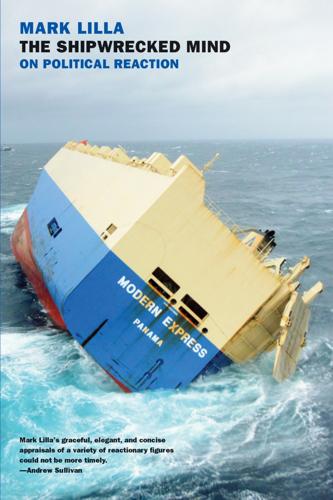
The Shipwrecked Mind: On Political Reaction
by
Mark Lilla
Published 19 Oct 2015
The theme of total emancipation, practiced in the present, in the enthusiasm of the absolute present, is always situated beyond Good and Evil. . . . Extreme violence is therefore the correlate of extreme enthusiasm, because it is in effect a question of the transvaluation of all values. . . . Morality is a residue of the old world. After many thousands of the victims of the Vietcong escaped on their rafts into the South China Sea in the mid-1970s, and millions (not hundreds of thousands) were butchered in Cambodia, the French romance with revolution seemed to end. During the following two decades the last surviving Maoists like Badiou lived in interior exile while the political debate revolved around human rights, multiculturalism, and neoliberalism.

The COVID-19 Catastrophe: What's Gone Wrong and How to Stop It Happening Again
by
Richard Horton
Published 31 May 2020
The common Western narrative about China is that, as the country’s economy has grown, so have its strategic political, economic and military ambitions. China, led by an authoritarian Chinese Communist Party, now represents a threat to Western leadership in the free world. The evidence is surely all too clear – China’s Belt and Road Initiative, its increasingly aggressive stance on Hong Kong and Taiwan, and its claims over islands in the South China Sea. China has to be contained. The Chinese perspective is very different. After a century of humiliation at the hands of a colonially minded West, China, proud of its 5,000-year-old civilisation, finally achieved independence in 1949. The country grew erratically and with terrifying mistakes under Mao Zedong, but he at least succeeded in establishing secure national borders.
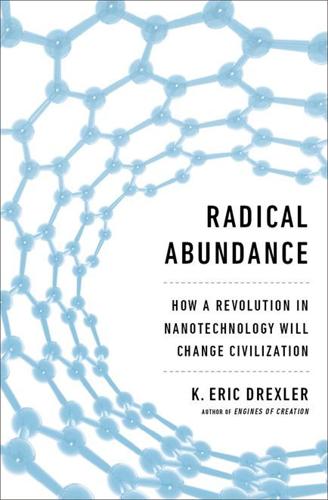
Radical Abundance: How a Revolution in Nanotechnology Will Change Civilization
by
K. Eric Drexler
Published 6 May 2013
Over recent decades the world has been sliding toward a seemingly inevitable collision between economic development and global limits. As nations expand industrial capacity, carbon emissions rise. Expectations of resource scarcity drive wars and preparations for war as tensions grow over water from rivers, metals from Africa, oil from the Middle East, and fresh oil fields beneath the South China Sea. Everywhere progress and growth are beginning to resemble zero-sum games. The familiar, expected future of scarcity and conflict looks bleak. These familiar expectations assume that the technology we use to produce things will remain little changed. But what if industrial production as we know it can be changed beyond recognition or replaced outright?
…
From hunting grounds to oilfields, control of territories and access to scarce resources have been critical to strength and survival. Today, however, we face the prospect of an era in which resource competition becomes comparatively unimportant. Today, resource competition continues to be a leading cause of international tension; conflict over control of the East and South China Seas, for example, is premised on the assumption that mid-twenty-first-century nations will still have an interest in undersea oilfields. Because the emergence of APM-level technologies will make most resource-centered concerns obsolete, plans for an unconventional future cannot count access to natural resources as vital or even substantial national interests.
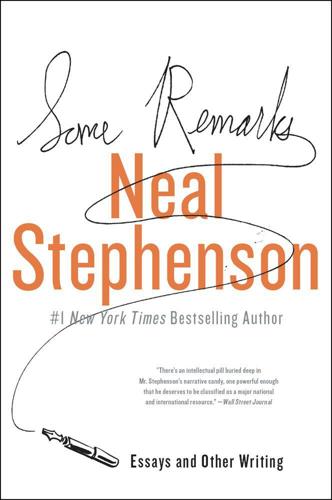
Some Remarks
by
Neal Stephenson
Published 6 Aug 2012
FLAG FACTS The FLAG system, that mother of all wires, starts at Porthcurno, England, and proceeds to Estepona, Spain; through the Strait of Gibraltar to Palermo, Sicily; across the Mediterranean to Alexandria and Port Said, Egypt; overland from those two cities to Suez, Egypt; down the Gulf of Suez and the Red Sea, with a potential branching unit to Jedda, Saudia Arabia; around the Arabian Peninsula to Dubai, site of the FLAG Network Operations Center; across the Indian Ocean to Bombay; around the tip of India and across the Bay of Bengal and the Andaman Sea to Ban Pak Bara, Thailand, with a branch down to Penang, Malaysia; overland across Thailand to Songkhla; up through the South China Sea to Lan Tao Island in Hong Kong; up the coast of China to a branch in the East China Sea where one fork goes to Shanghai and the other to Koje-do Island in Korea, and finally to two separate landings in Japan—Ninomiya and Miura, which are owned by rival carriers. Phone company people tend to think (and do business) in terms of circuits.
…
Alan “the ferang” Wall lives in Ban Hat Yai, the center of the FLAG operation in Thailand, cruising the cable routes a couple of times a week, materializing unpredictably in the heart of the tropical jungle in a perfectly tailored dark suit to inspect, among other things, FLAG’s chain of manhole-making villages. There were seven of these in existence during the summer of 1996, all lying along one of the two highways that run across the isthmus between the Andaman and the South China Seas. These highways, incidentally, are lined with utility poles carrying both power and communications wires. The tops of the poles are guarded by conical baskets about halfway up. The baskets prevent rats from scampering up the poles to chew away the tasty insulation on the wires and poisonous snakes from slithering up to sun themselves on the crossbars, a practice that has been known to cause morale problems among line workers.

The Secret Lives of Buildings: From the Ruins of the Parthenon to the Vegas Strip in Thirteen Stories
by
Edward Hollis
Published 10 Nov 2009
A week later, Adelson hands a beautiful woman down into a gondola. She smiles at him, and he chuckles a little, because it is Diana Ross who reclines on the cushion by his aging side. Their gondolier sings to them as he steers through the canals, and on the hour the deep bell of San Marco resounds in the night air. They scarcely notice the waves of the South China Sea lapping on the sands of the Cotai Strip outside. The Western Wall, Jerusalem In Which Nothing, and Everything, Has Changed THE ARCHITECTURE OF FAILED DIPLOMACY Scheme for Palestinian access to the Haram e-Sharif, prepared by Eyal Weizman and Rafi Segal (detail). INHERITANCE The last place whose secret life is recounted in this book is older by far than the Parthenon, and in some quarters much better known; but it makes an odd sort of tourist attraction.
…
Theodore, 43, 55, 57 Saladin, 295 Salford, 219 San Gimignano, 135 San Miguel de Allende, 83 Santa Fé, 127 Saville, Peter, 224 Saxony, 182 Scarpa, Carlo, 9 Schabowski, Günther, 243–44, 246 Scheerbart, Paul, 216 Schinkel, Karl Friedrich, 31–32, 169, 173–76, 179–81, 184–85 Scholl, Sophie, 31 Scotland, 25, 100 Scott, Fred, 9 Sebrok, Abbot, 115, 117–18 Segal, Rafi, 290 Seine, River, 198 Selim II, Sultan, 73 Serapis, 49 Serlo, Abbot, 109, 118–19 Severn, River, 107, 115 Seville, 129, 140 Sèvres, Treaty of, 76 Sex Pistols, 224, 229 Sforza, Francesco, 150 Shakespeare, William, 11 The Tempest, 7–8 Shanghai, 7, 263 Sharon, Ariel, 290 Sheba, 301 Sheffield, Park Hill estate, 218, 221 Sicily, 83 Sidney, Philip, 97 Siena, 150 Sigismund, Holy Roman Emperor, 151, 154 Silesia, 182 Sinai, 296 Sinan, 74–75, 294 Sinatra, Frank, 263 Singapore, 270 Six-Day War, 288 Skelmersdale, 218 Slany, 83 Society of Dilettanti, 28 Socrates, 18 Solomon, king of Israel, 65, 69, 295, 301 Sophocles, 18 Sophronius, Patriarch, 297 South China Sea, 277 Soviet Union, 181 see also Russia Spain, 68, 127–29, 143, 318 reconquista, 126–27, 133 Spanish Inquisition, 294 Sparta, 152, 165 Spree, River, 35 Sri Lanka (Ceylon), 15, 128 Stalin, Josef, 184 Staunton, Abbot, 111–12, 119 Stewart, Helen, 260, 262 Stone, Sally, 9 stories, 11–12 Stuart, James.
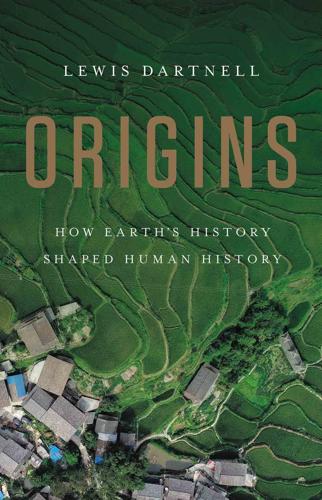
Origins: How Earth's History Shaped Human History
by
Lewis Dartnell
Published 13 May 2019
Routes from the Indian Ocean threaded through the narrow Strait of Malacca, others stretched down from the East China Sea, and also from the Moluccan Spice Islands in the east, all converging on trading ports on the Malay Peninsula or the islands of Java and Sumatra.38 By AD 1400, the port of Malacca on the south-east Malaysian peninsula had grown from a small fishing village to one of the largest centres of maritime trade in the world.39 It was strategically located roughly halfway along the 800-kilometre Strait of Malacca between the Malay Peninsula and the long island of Sumatra, at a point where the funnel-shaped strait narrows to just 60 kilometres wide. The Strait of Malacca was one of the most important waterways in the Eastern Hemisphere as it served as the crucial marine thoroughfare between the Indian Ocean and South China Sea.40 The port’s heaving markets burst with a huge diversity of trade goods: wool and glass from Venice, opium and incense from Arabia, porcelain and silks from China, and of course the spices from the Bandas and the Moluccas.41 Malacca was one of the most cosmopolitan places on Earth, its port a forest of masts where the dhows from the Indian Ocean berthed alongside the junks from China and the Spice Islands, and with a population larger than Lisbon speaking scores of different languages that could be heard over the din of the markets.42 It was the riches of this spice trade that provided the major draw for European navigators trying to find new sea routes to the east at the end of the fifteenth century.§ And when they arrived, they strove to dominate this expansive South East Asian trade network by capturing key features of the geography of the seas: naval chokepoints.
…
Index Abbasids 212 Aberdeen: granite 148, 151 Abu Dhabi: Sheikh Zayed Mosque 136 Abu Simbel, Egypt: Great Temple of Rameses II 132 Achaemenid Empire 202 Acheulean tools 17, 22 acid rain 142, 280 Aden 107 Aden, Gulf of 11 adobe bricks 131, 155 Aegean/Aegean Sea 99, 100, 117, 162 Aegospotami, Battle of (405 BC) 118 Afar region/triangle 11, 18 Afghanistan 183, 190, 194 Africa 11, 15, 21, 56, 98, 104, 105, 106, 139, 160, 218n, 219, 220, 267, 285 animals 88, 89 hominin migration from 22, 23, 45–6, 47, 52, 63 plants 67, 87 see East, North, South and West Africa African-Americans 125–6 Agassiz, Lake 60, 61–2 agriculture/farming 25, 26, 28, 52, 59, 61, 62, 63–5, 70–71, 87–8, 90, 130, 203, 205, 255, 256–7, 258, 280, 281, 285 and climate change 280 and oil 274 and population growth 70 tools and ploughs 76, 77, 165–6, 215n, 255, 268, 285, 286 see also cereal crops; fruit; legumes aircraft engines 175, 176 Akkadians 131 Akrotiri, Thera 163 Akshardham, Delhi 136 Alabama 125, 126 cotton plantations 125, 253–4 Alans 207 Alaska 48–9, 52, 195 Alborán microcontinent 218n Alborz Mountains 29–30 Alcáçovas, Treaty of (1479) 229, 230 Alexander the Great 101, 117n, 202 Alexandria 101, 187 Library 227 algae 138, 171, 261 Algeria 100 alpacas 76, 88, 89 Alps, the 32, 56, 58, 116, 135, 140, 154, 159, 163, 285 Altai Mountains 47, 196, 202 aluminium 174–5, 177, 182 aluminium silicates 266 Amazon 7, 63, 189 rainforest 223n, 275, 285 America(s) 55, 194n animals 88–9 discovery of 231, 237 human migration into 48–52 see also North America; South America; United States American Civil War 124, 126, 254 American War of Revolution (1775–83) 122 ammonites 138 Amnissos, Crete 162 amphibians 79, 262 Amsterdam: banking 97 Anatolia 131, 157, 165, 204, 205 Andes Mountains 32, 54, 66, 67, 74 angiosperms 40, 78, 79–82, 90, 141n Angkor Wat, Cambodia 129 animals, wild 13, 33–4, 49, 72, 83, 88–9, 66n domestication of 52, 59, 74–8, 88–90, 199 megafauna 53n see also mammals Antarctica 39, 40, 42, 43, 44, 53, 86, 104, 267, 277 antelopes 12, 83 ‘Anthropocene’ Age 3 antimony 175 APP mammals 82, 84, 85, 86 Appalachian Mountains 55, 124, 125, 267, 270 Aqaba, Gulf of 110n Arabia/Arabian Peninsula 11, 27, 28, 47, 53, 75, 104, 107, 108–9, 110, 115, 188, 191 camels 89 deserts 29, 190, 192, 215, 285 stone tools 52n Aragon, Spain 218 Aral Sea 105, 196 architecture 129–30, 131 American 134–5, 136 and n ancient Egyptian 132–3 British 134, 151–3, 154–5 Minoan 161, 162 Roman 136n, 162n Arctic, the 36, 38, 39, 40, 43, 64, 85 Arctic Ocean 60 Ardipithecus ramidus 13–15, 18 Argentina: pampas 196 artiodactyls 82–3, 84, 86, 144 Asia, South East 10, 75, 91, 119, 239 islands 111–15, 112–13 asphalt 273, 274 Assyrian Empire 27, 131, 202 asteroids 94, 143n, 168, 178n, 179 astronomy 194, 252n Athens 116, 117–18 Atlantic Ocean 43, 61, 62, 95, 96, 99, 104, 106, 122, 139, 218, 219–20, 222, 226, 227, 229–30, 231, 237, 238, 267 and Mediterranean 105, 106, 118 Atlantic Trade Triangle 246, 249, 250–51, 252–4 Atlas Mountains 105, 163, 267 Attila the Hun 207 aurochs 74 Australia 10, 42, 48, 52n, 54, 121, 252 and n, 267, 285 domesticable animals 88 rare earth metals 181 grasses 87 Australopithecus 14–15, 16 A. afarensis 14, 18 Avars 203 avocados 66n Awash river valley 13, 14, 18 Azores, the 218, 219, 220, 221, 222, 229, 230, 231 Aztec culture 28 Bab-el-Mandeb strait 47, 107, 108, 110, 119, 121 Babylon 71, 273 Babylonians 131 Bacan Islands 114 Baghdad 110, 190, 212 Bahamas, the 230 Bahrain 120 Baikonur Cosmodrome, Kazakhstan 197n Balaclava, Battle of (1854) 129 Banda Islands 111, 112–13, 114, 115 Banded Iron Formations (BIFs) 169–70, 173, 177, 179 Bank of England, London 134 banks and banking 97, 134 Barbarossa, Operation 215 Barbegal, France: waterwheels 257 barley 61, 65, 67, 117 basalt eruptions/flood basalt 141, 142, 143, 144, 145 basalt(ic) rocks 11, 141, 143, 145, 146, 160 Batavia (Jakarta), Indonesia 252 batteries, rechargeable 176, 180 bay (herb) 115n beans 66, 81 Beatles, the: ‘Lucy in the Sky with Diamonds’ 14n Bedouins 129 belemnites 138 Belgium 96, 269, 284 Belize 28 Bering land bridge/Strait 48, 49, 51, 52, 54, 89, 191 Bessemer Process 166–7 BIFs see Banded Iron Formations Big Bang 167 Biological Old Regime 258 bipedalism 14–15, 16 birds 33, 80, 219n, 263 bison 49, 214n bitumen 273 ‘Black Death’ (accumulation of shale) 279 Black Death (plague) 211–12 Black Sea 105, 106, 117, 118, 120, 185, 190, 196, 207, 278n ‘black smokers’ 159, 160, 163 blast furnaces 165, 211, 257, 259 Bojador, Cape 223–4, 225 bone china 149 Borneo 112 Bosphorus 196, 117, 118, 120 Boston, Massachusetts 56 Brahmaputra River 91 brassicas 81, 82 Brazil 181, 244n, 247n coffee plantations 252, 253, 254 Brazil Current 238, 239, 253 bricks 131, 139, 149, 152, 174, 255 adobe 131, 155 firebricks 131–2 Britain/England 56–9, 97 architecture 134, 152–3, 154–5 ceramics 149–50 coalfields/mines 259–60, 266, 269, 270–72, 271 corsairs 249 electricity 271n exploration 229, 231 geology 150–53, 151 Labour Party 270, 271, 271–2 maritime trade 107n, 245 railways 260 Roman coal mines 259 Royal Navy 58, 118, 119 steam engines 259–60 see also Industrial Revolution; London British Museum, London 134, 148 bromine 175 bronze/bronze artefacts 1578, 161, 165, 174 Bronze Age 99, 137, 156, 158, 160–61, 164, 174, 200n Brouwer, Captain Henrik 250–51 Brouwer Route 119n, 246, 250, 250–52 bubonic plague 211–12 Buckingham Palace, London 134 Buffalo, New York 55 Bukhara, Uzbekistan 190, 212 Bulgars 203, 204 Burgundians 207 Burma 92 Bush, President George W. 124 Bushveld Complex, South Africa 179–80 butane 276 Byblos 101n Byzantine Empire 205, 213 Cabot, John 231 cacti 80 calcium carbonate 41, 129, 133, 139, 140 Calicut, India 240 California 52n, 248 Cambodia 92 Cambrian Period 152, 153 camels 19, 49, 75, 76, 77, 83, 88, 89, 107, 187, 191–2, 193, 197 Bactrian camels 89, 191 dromedaries 89, 191 Canada 49, 60, 63, 89, 163, 179, 195, 267, 277 fur trade 195 canals 71, 74, 150 and n, 152, 187 Canary Current 237 Canary Islands 218–19, 220, 222, 223, 225, 227, 228, 229, 230 Cape Cod, Massachusetts 56 Cape of Good Hope 121, 225–6, 231, 250 Cape Town 252 Cape Verde Islands 218, 219, 220, 229, 239, 253n capitalism 96–7, 154, 270 caravans, merchant 81, 107, 110, 187, 188, 192–3, 194, 201, 211, 218 caravels 246 carbon 1, 85n, 157, 165, 166, 167, 175, 261, 263, 273, 275–6, 278, 279, 280, 281 carbon dioxide 10, 38, 40, 42, 44, 65, 84, 85 and n, 139, 142, 143, 144–5, 170, 171, 172, 261, 265, 275, 279–80, 281 and n, 287 Carboniferous Period 6, 78–9, 134, 151, 261–8 Caribbean, the 28, 52, 61, 230, 231, 237 sugar plantations 252, 253, 254 Carnegie, Andrew 270 Carolinas, the 124, 125 cotton plantations 253–4 Carpathian Mountains 163, 185, 196, 204 Carrara marble 135 cars/automobiles 174, 273 Carthage 100–1, 105n, 208 cartwheel hubs 130 Caspian Sea 105, 120, 196, 201, 207 cassava 131 Castile, Spain 217, 218 catalysts, chemical 178, 180 catalytic converters 178 cathedrals 127, 129, 134 Catholicism 185n cattle/cows 67, 74, 75, 76, 77, 82n, 83, 84n, 86–7, 88, 172n, 198, 198, 201 Caucasus 185, 196, 204, 207, 209, 215 cedars/cedarwood 73, 70, 101n, 131 cellulose 263, 264 cement 139, 140–41 ‘pozzolanic’ 162n Cenozoic cooling 9–10, 39–40, 81 Cenozoic era 42, 44, 90, 141n Central Steppe see Kazakh Steppe ceramics/pottery 131–2, 255 porcelain 112, 115, 149–50 cereal crops 65, 67–9, 70, 78, 80, 86–7, 90, 125, 287; see also grain(s) Cerne Abbas Giant, Dorset 137 Cerro Rico see Potosí Ceuta, Morocco 217–18 Ceylon see Sri Lanka chalk 132, 136–8, 139–40, 152 Channel Tunnel 137 charcoal 157, 161, 164, 166, 173n, 255, 269 chariots, war 76, 116n, 200n chert 17n, 156, 170 Chicago 55, 56, 135 chickens 74 Chile 54 chimpanzees 7, 14, 16, 46 China 28n, 182, 183–5, 186, 187, 190, 195, 206, 213, 214 agriculture 63, 65–6, 67, 77, 184 blast furnaces 165, 257 bronze 157 bubonic plague 211 canals 187 coal 258–9, 264 collar harnesses 77 compasses 169 exports 112, 115, 249 first humans 48, 52n, 53 ginkgo 79 Great Wall 203–4, 208 Homo erectus 23, 47 Mongols (Yuan dynasty) 209, 210, 212, 214 and oil 121 population 92, 186, 211, 284 porcelain 112, 115, 149 rare earth metals 177, 181 salt production 273 silk 112, 115, 187–8, 193n and South American silver 249 and steppe nomads 202–3 tea 112 and Tibet 91–3 waterwheels 165, 257 and Xiongnu 202, 206 china, bone 149 see also porcelain chokepoints, naval 98, 115, 118–19, 121, 217n, 273 Christianity 185n, 217 cinnamon 113, 114, 193, 241 civilisations, early 25–30, 26–7, 70–74, 90, 98–9, 132 Clarke, Arthur C. 94 clathrate ice 85–6 clay 130, 131–2, 152, 266 soils 154–5, 166 Cleopatra VII, of Egypt 101, 147 ‘Cleopatra’s Needles’ 147 Cleveland, Ohio 55 climate changes 2–3, 9–10, 11–12, 18–19, 21–5, 61, 63, 64, 70–71, 72, 84–5, 86, 143–4, 279–81; see also ice ages Clinton, Hillary 122 cloves 114, 115n, 241, 247 clubmosses 262 clunch 152 coal 78, 149, 258–60, 279 formation of 261–8, 267, 274, 280 politics of 269, 270, 270–72, 271 cobalt 159, 175 coccolithophores 138, 139, 140, 144 coccoliths 274, 275 cockroaches 262 cocoa 66n coconuts 81 Cocos Plate 28 cod 95, 97 coffee plantations, Brazilian 252, 253 coins 168n, 182 Coleridge, Samuel Taylor Kublai Khan 210 The Rime of the Ancient Mariner 97n, 234 Cologne Cathedral 127 Colombia: platinum 178n Colosseum, Rome 133 Columbian Exchange 113n Columbus, Christopher 52, 227–31, 236, 239, 241 comets 94, 143n, 178n compasses, navigation 118n, 169 concrete 56, 139, 140–41, 272 reinforced 130n, 167 Congo 7, 11 conifers 79, 130, 141, 195 Constantinople (Istanbul) 185n, 193n, 205, 207, 211, 213 cooking food 15, 17, 69, 131, 132 cooling, global see Cenozoic cooling; ice ages copper/copper ore 157, 158, 159, 160–62, 163–4, 174, 175, 179, 182, 201n smelting 131, 156, 157, 161 coppicing 256 coral/coral reefs 193, 252n, 280 Cordilleran ice sheet 49 coriander 115n Corinth 117 Coriolis effect 233, 235, 237 Cornwall Eden Project 150n granite 267n kaolin 149, 150n tin mines 158, 267n Corsica 208 Cotswolds, the 152 cotton 82, 112, 125, 126, 193, 252, 253–4, 255, 259, 263, 269 courgettes 66n cows see cattle Cretaceous Period 40, 42, 80, 123, 124, 137, 138, 139, 141n, 143n, 144, 145, 152, 178n, 274, 276–9, 278 Crete 99, 161–3 Crimean Peninsula 129 crocodiles 72, 85 crops 255 domestication of 52, 63–4, 65–9, 68–9 rotation 255 see also cereal crops; grain(s) Cuba 230 Cumans 203 Cumberland: coalfields 272 cumin 115n current sailing see sailing and navigation cyanobacteria 171, 173 Cyclades, the 99 Cyprus 99, 160 copper mining 158, 160–62, 163 Troodos Mountains 160, 163 Da Gama, Vasco 239–41, 244 Danube River/Valley 185 and n, 196, 204, 206, 207, 208 Dardanelles, the 117, 118, 120 ‘Dark Ages’ 219 Dartmoor 147, 151 dates (fruit) 81 Dead Sea 106, 110n Deccan Traps 143n deer 83 Delhi: Akshardham 136 Denisovan hominins 16, 23, 47, 50–51, 51, 53 deserts 1, 12, 29, 61, 72, 73, 80, 81, 89, 100, 107, 148n, 184, 189, 190–92, 195, 215–16, 232, 285 see also specific deserts Detroit, Michigan 55 Dias, Bartolomeu 225–7, 229, 239 diatoms 140, 171, 274 dinoflagellates 85, 274 dinosaurs 40, 80, 82, 141, 143n Diomede Islands 48 Djibouti 11, 18 DNA, hominins’ 45–7 Dogger Bank/Doggerland 95, 96, 97 dogs 74 doldrums, the 224, 234–5, 239 donkeys 76, 83, 88, 89, 192 Dover, Strait of 57, 59 dragonflies, giant 262–3, 265 Drake, Sir Francis 55, 249 Dublin: Leinster House 136n Durham: coalfields 272 Dutch East India Company 250 dysprosium 175 Dzungaria, China 197, 214 Dzungarian Gate, China–Kazakhstan border 189, 196–7, 203, 204 Eanes, Gil 223–4 Earth 282–3, 284, 286–7 circumference 227, 228 creation 94, 168 first circumnavigation 232, 248 magnetic field 169 orbit round the Sun 19, 21, 22, 24, 35, 36–9, 37 tilt 19, 35, 36–9, 37, 38, 44–5; see also Milankovitch cycles see also climate changes; tectonic plates earthenware pots 131, 149 earthquakes 8, 25, 28, 29, 30 East Africa 7–8, 10, 11, 12, 15, 16 climate 12, 18–25, 44 tectonic processes 10–13, 18–21, 24, 25, 30, 189 East African Rift 2n, 10–13, 17n, 18, 20, 20–25, 44, 108, 189, 287 East China Sea 114, 187 East India Company 222n East Indies 111 Eastern Desert 107, 133 Eastern Orthodox Church 185n Eastern Steppe 197 eccentricity cycle 19, 21, 22, 36, 37, 39 Ecuador: platinum 178n Edinburgh 151 Egypt/ancient Egypt 26, 28n, 64, 72–3, 100, 101, 107, 110, 119, 157, 184 buildings 132–3 pharaohs 72, 101, 127, 129, 147 pyramids 127–8, 129, 133, 138 sculpture 133, 147–8 electricity 156, 174, 271n, 272, 281, 282–3, 284, 286 electronic devices 157, 168, 175, 176, 178, 180, 181–2 elephants 33, 72, 256n Elgon, Mount 12 elm 130 Empire State Building, New York 134 Energy Return on Investment (EROI) index 274 English Channel 56, 57, 58–9, 134, 137 Eocene Epoch 129 equator, the 189, 232, 233, 234, 235, 238 equids 88–9, 197–8 Eratosthenes 227 Eridu 71 Eritrea 11 EROI index see Energy Return on Investment Erzgebirge Mountains: tin mines 158 ethane 276 Ethiopia 10, 11, 13, 14, 18, 28n, 72 Etna, Mount 117 Etruscans 27, 28 Euphrates, River 27, 65, 90, 107 Eurasia 9, 26, 27, 28, 39, 42, 47, 56, 77, 106, 143, 183, 194 climate 2, 48, 196–7 fauna and flora 49, 53n, 79, 87–90 warfare 76 Exeter Cathedral 134 Exploration, Age of 96, 216, 217, 246 extinctions, mass 40, 82, 85, 141, 142–3 and n, 144, 145, 178n factories (coastal forts) 253 farming see agriculture feldspar 148 Ferdinand II, of Aragon 227 ferns 78, 79, 262 Ferrel cells 235–6, 248 Fertile Crescent 63, 65, 66, 67, 158, 269 fertilisers, artificial 120, 178–9 feudalism 212 Finland 195, 286 fir trees 79, 130, 141 fire 15, 17, 69, 131–2, 173–4 firebricks 131–2 fish/fishing 95–6, 97, 275, 280 flax 82 flint 17n, 137, 139–40, 156, 164 Florida 237 flour 63, 68–9, 257 flowers see plants and flowers foraminifera/forams 85, 128–9, 133, 138, 139, 140, 144, 275 forests see rainforests; trees/forests fossils 13–14, 18, 40, 52n, 137–8, 141, 150n, 160 France 56, 57, 58, 185, 207, 208, 267, 269, 284 corsairs 249 fur trappers 195 maritime trade 245 waterwheels 257 wine regions 137 frankincense 192, 193 Franks 207, 208 frogs 85 fruit/fruit trees 78, 81 fungi 263, 264 fur trade 195 Galilee, Lake 110n gallium 176, 180 Ganges Basin 268 Ganges River 26, 66, 267 Gansu Corridor 184–5, 188, 203, 204 gas, natural 274, 276, 279, 280 Gaul 185, 207 Gazelles 61, 72, 275 genetic diversity 45–7 Genghis Khan 205, 209 Genoa/Genoese 99, 211, 212, 217, 227, 229 geological map, first 150 and n Germanic tribes 185n, 206–7, 208, 269 Germany 58, 59, 127, 185n, 208, 273, 284 Giant’s Causeway, Northern Ireland 143 Gibraltar 217n Strait of 99, 101, 106, 118, 158, 217 and n, 220 ginger 112–13, 114, 241 ginkgo 79 giraffes 83 Giza, Egypt: pyramids 127–8, 129, 133, 138 glaciation/glaciers 31, 32, 40, 54–7, 58, 60, 91, 146, 171–2, 184, 264–5 glass/glass-making/glassware 115, 132, 140, 193, 255 glazing pottery 131 globalisation 246 global warming 31, 38, 86, 281n; see also climate changes; greenhouse gases gneiss 133 Goa, India 245 goats 67, 74, 75, 77, 83, 88, 117 Gobi Desert 184, 185, 189, 191, 197 GOE see Great Oxidation Event gold 159, 168 and n, 174, 175, 178, 182, 192, 193, 218 Gona, Ethiopia 18 Gondwana 139, 264, 265, 267 gourds 66n grain(s) 63, 65, 65, 67–8, 73, 74, 116–18, 120, 166, 200, 205, 208, 257; see also cereal crops Grampian Mountains 148 Granada, Spain 218 and n granite 127–8, 132, 133, 145–8, 158, 267n grasses 67, 77, 80–81, 87–8, 90 grasslands 15, 77; see also savannah; steppes Great Hungarian Plain 196, 205 Great Indian Desert 29 Great Oxidation Event (GOE) 171–2, 173, 280n Great Pyramid, Giza 127–8, 129, 138 Great Sandy Desert, Australia 190 Great Wall of China 203–4, 208 Greece/ancient Greeks 27, 28, 73, 99, 100, 107, 110–11, 115–18, 135 armies 116n, 118 city-states 73, 116–17 Huns 207 greenhouse effect 10, 40, 42, 84–5, 142, 171 greenhouse gases 38, 40, 42, 44, 279–80 see also carbon dioxide; methane Greenland 32, 40, 96, 143 Grenville Mountains 153 Guatemala 28 guilds, medieval 212 Guinea, Gulf of 224, 239, 253 guinea fowl 74 guinea pigs: and scurvy 241n Gulf Stream 43, 61, 237, 238, 286 Gunflint Iron Formation 170n gunpowder 194, 200n, 211, 213 gymnosperms 79, 141 gyres, ocean 237, 238n, 247 Hadley cells 232–3, 235–6, 285 haematite 170 Haifa, Israel 101 Han dynasty (China) 93, 183, 184, 186, 187 and n, 190–91, 203–4 Harappan civilization 26–7, 64 Hawaii 107n, 222n helium 167, 180n Hellespont, the 117, 118, 120 hemp 82 Henry VII, of England 231 Herat, Afghanistan 190, 194 herbicides 120, 274 herbs 115n Herculaneum 162 Herodotus 73 hickory 130 hides/leather 75, 77, 88, 140, 193, 255 structures 130 Himalayas, the 9, 10, 11, 26, 32, 42, 48, 159, 184, 191, 195, 203, 242, 243, 268, 285 Hindu Kush 190, 203 hippopotamuses 33, 83n Hispaniola 230 Hitler, Adolf 215 Holland see Netherlands Holocene Epoch 32, 40, 42, 64–5 Homer: Iliad 200n hominins 7–8, 12–16, 22, 23, 30, 44, 53 bipedalism 14–15, 16 brains and intelligence 15, 16, 17, 19–20, 22, 24, 25 DNA 45–7 as hunters 15, 17 migration from Africa 22, 23, 45–6, 47, 52, 63 and see below Homo erectus 15–18, 22, 23, 47 Homo habilis 15, 16 Homo heidelbergensis 16 Homo neanderthalensis see Neanderthals Homo sapiens/humans 7, 8, 16, 22, 23, 25, 47, 49–54, 84 Hormuz, Strait of 107, 119, 120–21 ‘horse latitudes’ 235 horses 49, 75, 76, 77, 83, 86–7, 88, 89–90, 192, 197–200, 201–2, 205, 213, 214 Hudson Bay, Canada 49 Humboldt Current 247, 249 Hungary 185n, 202, 209 Huns 203, 204, 205, 206, 207, 208 hunter-gatherers 15, 61, 62, 63, 70, 74, 75, 80, 197 hydrogen 167, 175 hydrogen chloride 142 hydrogen sulphide 280 Iberian Peninsula 104, 105, 185, 208, 217 see also Portugal; Spain ice ages 19, 23, 24, 31–5, 34–5, 38–9, 44–5, 48–52, 53-60, 61, 64, 95, 172, 265 Little Ice Age 195n, 211 ichthyosaurs 133 igneous rocks 132, 179 incense 115, 192 India 9, 26, 27, 28n, 42, 48, 91, 92, 104, 110–11, 114, 188, 191, 202, 203, 213, 228, 244, 245, 267, 285 cotton 112, 193, 259, 269 eruption of Deccan Traps 143n exports 193 Mogul Empire 210n, 249 monsoons/monsoon winds 1, 10, 110, 242–4 population 284 rare earth metals 177 spices 112–13, 115, 218 Indian Ocean 10, 11, 29, 107, 108, 110, 111, 119, 187, 191, 226, 227, 229, 237, 238, 239–40, 243, 244, 245, 248, 252 Indiana limestone 134–5 indigo 193 indium 175, 176, 180, 181, 182 Indonesia 47, 48, 54, 121, 285 volcanic activity 111 Indonesian Seaway 10, 11 Indus River/Valley 26, 91, 107, 190, 268 civilisations 26–7, 66, 73, 90, 157 Industrial Revolution 5, 31, 78, 97, 125, 130n, 150, 152, 167, 254, 259–60, 266, 268, 269, 279, 286 insects 80, 262–3, 265 internal combustion engine 78, 273 Intertropical Convergence Zone (ITCZ) 234–5, 243 Iran 29–30, 48, 110, 120, 121, 190; see also Persia Iraq 48, 71, 120 iridium 177–8 iron 1, 92, 130n, 163, 164–5, 167, 168–9, 170, 174, 177, 178, 280n and Banded Iron Formations 169–70, 173, 177 cast 165 production 164–5, 183, 257, 259, 260, 266, 269, 270 tools and weapons 128, 165–6, 173, 174, 285 wrought 164–5, 166 see also steel Iron Age 156, 165, 167, 174 irrigation 65, 71, 73, 90, 92, 116, 200 Isabella, of Castile 226n, 227, 229, 230 Isfahan, Iran 190 Islam/Islamic culture/Muslims 110, 205, 212, 213, 217–18 and diet 83n Israel 52n, 101n, 163, 285 Istanbul see Constantinople Italy 105n, 133, 207, 208, 285 see also Rome ITCZ see Intertropical Convergence Zone jade 183 Jakarta, Indonesia 252 Janissaries 205 Japan/Japanese 121, 122n, 222n, 228, 245, 248 exports 112 landfill mining 182 Java 111, 114, 119n, 251, 252 Jefferson, President Thomas 136n, 147 Joao II, of Portugal 226, 229 Jordan valley 110n Judaism: and diet 83n Jupiter 36, 180n Jurassic Coast, England 137–8 Jurassic Period 133, 134, 274, 279 Kalahari Desert 190 Kalmuks 203 kaolin 148–9, 150n Karakorum, Mongolia 209, 211 Kazakh Steppe 196, 197n, 201 Kellingley, Yorkshire: coalmine 271 Kenya 10, 239 Kenya, Mount 12 kerosene 273 Khitans 202 Khufu, Pharaoh 127 Khwarezmids 212 Khyber Pass 190, 203, 204 Kilimajaro, Mount 12 Kirghiz, the 202 Kish 71 Knossos palace, Crete 161 Korea/South Korea 121, 184 Krakatoa, eruption of (1883) 111 Kublai Khan 210 Kunlun Mountains, China 191 Kuwait 120 Laetoli, Tanzania 14 lakes 20, 20, 21, 57, 72 ‘amplifier’ 20, 21, 22, 24, 44 meltwater 60 Lancashire: coalfields 272 landfill mining 182 ‘lanthanide’ elements 176 lanthanum 176–7 lapis lazuli 183 larches 79 Laurasia 139, 267 Laurentia 153 Laurentide ice sheet 49, 55–6 lava, volcanic 12–13, 24, 132, 141–2, 143, 144 lead 131, 159, 163, 168, 174 leather see hides Lebanon 101n, 131, 163, 285 Le Clerc, ‘Peg Leg’ 249 legumes 81 Lesser Antilles 230 Levant, the 23, 60, 61, 65, 73, 74 Lewis (Meriwether) and Clark (William) 55 Libya 100, 277 lignin 264 limestone 85n, 132, 144, 153, 257, 266 hot-spring 133 Indiana 134–5 nummulitic 127, 128–9, 132–3 oolitic 133–4 Tethyean 135–6 travertine 133 linen 193, 255, 263 lions 33–4 lithium 167, 180, 182 llamas 74, 76, 88, 89 loess soils 56, 65, 184 and n Lombards 207 London 135, 137, 152, 154–5, 272 Bank of England 134 British Museum 134, 148 Buckingham Palace 134 Cleopatra’s Needle 147 Great Fire (1666) 134 Marble Arch 135 One Canada Square 154–5 St Paul’s Cathedral 134 The Shard 154–5 Tower of London 134 Underground/Tube 155 Los Angeles 248 Getty Center 133 Lucy (hominin) 14, 18 lycopsids 262 Macau, China 245 mace 114, 115n Mackenzie River 60 Madeira 218, 220, 222, 229, 253n Magellan, Ferdinand 54, 247–8 Magellan Strait 54–5 magma 11, 20, 28, 111, 132, 142, 143, 145, 146, 148n, 158, 1 59, 179 Magna Carta 58 magnetic field, Earth’s 169 magnetite 170 magnets 175, 176, 180n Magyars 203, 204 Maison Carrée, Nîmes, France 136n maize 66, 67 Makian Island 114 Malabar Coast, India 114, 240 Malacca, Malaysia 114–15, 245 Strait of 114, 115, 119, 121, 249 Malay Peninsula 114–15, 245 Mali 10, 193 Malindi, Kenya 239 Mallorca 221 mammals 5, 7, 12, 40, 53n, 61, 75, 86–7, 88, 90, 141n, 144 APP 82–4 mammoths 31, 49, 66n Manchuria 197, 202 Mani Peninsula, Greece 135 Manila Cathedral 136 Manila Galleon Route 246, 248–9, 250, 250–51 Mao Zedong 91 map-making 194 marble 132, 135–6 Marble Arch, London 135 marine snow 275 marjoram 115n Marmara, Sea of 117 mastodons 66n mathematics 194 Mayan civilisation 28, 64 meat 17, 75, 77, 83n, 84, 90, 198, 199, 255 medicines 82, 114, 175, 178, 194 Mediterranean region/Sea 28, 98–106, 112, 116, 118, 135, 158, 160, 163, 185, 187, 246 Megara, Greece 117 Mekong River 91 Melanesia 47 Merv, Turkmenistan 190, 212 Mesoamerica 28, 63, 66, 67, 129 Mesopotamia 26, 27, 28, 65, 67, 70–71, 71, 72, 200, 202 bronze 157–8 civilisations 130–31, 132 Mesozoic Era 42, 141 metals/metalworking 74, 130 and n, 131, 156–7, 255 casting 157 smelting 131, 132, 156 see also specific metals metamorphic rocks 132 methane 40–41, 84, 85n, 171–2, 172n, 276, 280n methane clathrate 85–6 Mexican War of Independence (1810–21) 248 Mexico 28, 66, 74, 248 Gulf of 279 Michelangelo Buonnaroti: David 135 microchips 17n, 148n, 175–6 Mid-Atlantic Ridge 9, 160, 221 Middle East 47, 65, 81, 104, 119, 120, 197, 202, 209, 211, 215n` Middle Passage 253n Milankovitch cycles 19, 37, 37–9, 44, 60, 70, 281n Military Revolution 213 milk 75–6, 88, 90, 199, 255 millet 65, 57, 184 millstones 63, 68 Ming dynasty (China) 204, 212 Minoan civilisation 27–8, 99, 161–3 Linear A script 163n Mississippi River 55, 123, 124, 125 Missouri River 55 mitochondria 45 Mitochondrial Eve 45–6 mobile phones see smartphones Mogadishu, Somalia 240 Mogul Empire 210n, 249 Mojave Desert 191 Moluccas, the 112–13, 113, 114, 115, 247 and n Mongol Empire 202, 203, 204, 205, 206, 209–13, 214 Mongolia 47, 197, 209 monsoons 72, 114, 189–90, 192, 238–9, 285 winds 110, 192, 240–44, 243, 251 moraines 54, 55–6, 95 Morocco 217–18, 223, 267 mortar 132, 139, 140–41 Moscow 195 Moti Island 114 mountain ranges 8, 9, 26, 28, 91, 98, 99, 104–5, 139, 144, 146–7, 159–60, 267–8, 285; see also volcanoes and specific ranges Mousterian tools 17, 22 Mozambique 11, 239 mules 76, 77 Mumbai, India 107n Muslims see Islam Mycenaeans 163 myrrh 192 Nagasaki, Japan 245 Napoleon Bonaparte 58, 59, 222n Native Americans 47 Natufians 61, 62 Neanderthals 16, 17, 23–4, 47, 50–51, 51, 53, 164 Neoclassicism: in architecture 136n Neolithic era 63–5, 158, 198 Nepal 92 Netherlands 58, 96–7, 114n, 119 and n, 284 corsairs 249 and Japan 122n maritime trade 245, 250–52 windmills 257 Newfoundland 96, 231 New Guinea 10, 48, 63 agriculture 66, 67 New York 55, 56, 114n, 153–4 Chrysler Building 153 Cleopatra’s Needle 147 Empire State Building 134, 153 Rockefeller Center 153 skyscrapers 154, 155 United Nations building 134, 145 Yankee Stadium 134 New Zealand 32, 237 nickel 167, 168, 175, 179 Nile, River/Nile Valley 23, 65, 72–3, 90, 100, 101, 106, 127, 132, 133, 184, 185, 187, 285 Delta 102, 107 Nineveh 71 Nippur 71 nitrogen 170, 178–9 noble metals see platinum group metals nomadic tribes 200, 201–3, 204–5, 206, 286 see also pastoral nomads Noranda (mine), Canada 163 Norfolk: cottages 152 Norilsk, Russia: mines 179 Norse fishermen and seafarers 95, 96 North Africa 89, 110, 128, 129, 138, 206, 208, 211, 215 agriculture 63, 65 camel caravans 192–3 climate 72, 101 coastline 99, 100–2, 105, 185, 217n North America 32, 33, 39, 43, 44, 48, 49, 51, 60, 63, 64, 103–4, 139, 143 animals 53n, 197, 214n grasses 87 prairies 79, 196, 214n, 284 see also Canada; United States North Atlantic Garbage Patch 238n North Atlantic Gyre 238n North Atlantic Igneous Province 143 North Downs 137 North Pole 37, 38, 39, 40, 43, 44, 224 North Sea 57, 95, 96, 279, 286 Northumberland: coalfields 272 Norway 54, 286 nuclear fission/fusion 167–8, 169, 182n, 281 Nummulites/nummulitic limestone 128–9, 132–3 nutmeg 114, 114n, 115n, 241, 247 oats 67 Obama, President Barack 124 obsidian 17n, 140, 156 Oceania 47 oceans 5, 10, 41, 43, 85, 86, 94–5, 97–8 acidic 280 anoxic 142, 173, 278, 278–9 Banded Iron Formations 170, 171, 179 black smokers (hydrothermal vents) 159, 160 chokepoints 98, 115, 118–19, 121, 217n, 273 crust 8–9, 94, 104, 139, 142, 145–6, 159, 160, 163, 221 currents and current sailing 5, 41, 219–20, 222, 223–4, 226, 227, 230–31, 232, 244n, 246 doldrums 224, 234–5, 239 falling/lower levels 32, 34, 44, 45, 48, 49, 50, 53–4, 56–7, 89, 95, 125, 138–9 gyres 237, 238n, 247 and iron 173 and plankton 85, 144–5, 274–6 rising/higher levels 31, 33, 38, 40, 52, 54, 57, 60, 96, 97, 124–5, 129, 138, 221, 268, 277, 280 salt content 105–6 thermohaline circulation 61–2, 278 see also specific oceans and seas ochre 164 Ogodei Khan 209 Ohio River 55 oil 120–21, 262–3, 273–9, 280, 286, 287 ‘oil window’ 276 Oldowan tools 16–17, 18, 22 olive oil 257 Oman 131 onagers 89 One Thousand and One Nights 110 ooliths 133–4 oolitic limestone 134 ophiolites 160, 163, 201n opium 115 oregano 115n Organic Energy Economy 258 orogeny 267n Orpheus and Eurydice 135 osmium 177 ostriches 72 Ostrogoths 207, 208 Ottoman Turks 205, 213 oxen 75, 77, 200 Oxford University 134 oxygen 167, 170–74, 175, 265, 275, 278, 280 ozone layer 142 172 and n Pacific Ocean 10, 43, 111, 122, 191, 222n, 237, 247, 248 Pacific Trash Vortex 238n Pakistan 92, 284 Palaeocene–Eocene Thermal Maximum (PETM) 40, 84–6, 129, 143, 145, 279–80, 287 Palaeogene Period 42, 178n Palaeozoic Era 42, 141 Palestine 185 Palin, Sarah 48n palladium 175, 177, 179, 182n Pamir Mountains 189, 191 Panama Canal 55, 120 Panama Isthmus 43, 44, 49, 88, 89, 249 Pangea 87, 103, 104, 138, 139, 141, 143, 144, 201n, 262, 267, 267, 268, 276 Panthalassa 103n Pantheon, Rome 135, 162n paper/paper-making 79, 194, 263 Paris Arc de Triomphe du Carrousel 200n Cleopatra’s Needle 147 Parks, Rosa 126 pastoral nomads 77, 200, 201, 203, 213, 214, 286 horse-riding 201–2, 208, 213–14, 215 Patagonian Desert 190 Patagonian Ice Sheet 54 Patzinaks 203 ‘Pax Mongolica’ 210–11 Pearl Harbor 222n peat 261–2, 263, 265, 266, 268 Peloponnesian War (431–405 BC) 117–18, 120 Pentagon, Virginia 134 pepper/peppercorns 112–13, 114, 115n, 193, 241 peppers 81, 113n perissodactyls 82–3, 84, 86, 144 permafrost 33, 86, 91 Permian Period 42, 103, 138, 141, 142, 143, 179, 264 Persia 27, 117n, 187, 188–9, 202, 207 exports 131, 193 kerosene 273 mythology 200n Wall 207–8 windmills 257 Persian Gulf 70, 104, 107, 108, 110, 119 oil 120, 121, 279, 286 Peru 67, 278n, 286 pesticides 120, 274 PETM see Palaeocene–Eocene Thermal Maximum petroleum 178, 273 PGMs see platinum group metals pharaohs 72, 101, 127, 129, 147 pharmaceuticals 120, 178, 274 Pharos, island of 101 Philippines, the 248, 249 philosophies, spread of 194 Phoenicia/Phoenicians 99, 100, 101n, 107, 158, 163, 219, 237 photosynthesis 142, 171, 258, 261, 265, 274–5 phytoplankton 274–5 pig iron 165, 166, 177 pigs 74, 83, 88 pine trees 79, 130, 161 Pittsburgh, Pennsylvania 270 plague 211–12 plankton 85, 138, 140, 144, 145, 274–6, 278, 287 plants and flowers 78 angiosperms domestication of 52, 59, 62, 64, 65–7, 68, 81, 87, 214n gymnosperms see also cereal crops; crops; photosynthesis plastics 120, 150n, 175, 178, 238n, 274 plate tectonics see tectonics platinum 177, 178–9, 182 platinum group metals (PGMs) 168, 176, 177–8, 179–80, 182n pliosaurs 133 ploughs 76, 77, 165–6, 215n, 255, 268, 285, 286 Polar cells 235 Polaris 37, 224 Polo, Marco 258–9 Pompeii 162 Pontic–Caspian Steppe 196, 214 population growth 2, 22–3, 70, 72, 87, 117, 166, 255, 256, 257 porcelain 112, 115, 149–50, 249 Portland stone 134 ports 98, 100, 101, 105n, 115, 119, 194, 212 Portugal/Portuguese 193, 217–18, 219–20, 222, 229, 245, 247n sailors 119, 193, 223–7, 231, 234, 239–41, 244–5, 247–8 slavery/slave trade 218, 222, 253n Portuguese Route 249–50, 250–51 potatoes 66, 81, 82, 131 Potosí silver mines, Bolivia 248–9 pottery see ceramics precession 19, 21, 23, 36–7, 37, 44 primates 82, 84, 86, 144 printing 194 Pripet Marshes 204 promethium 176 propane 276 Protestantism 185n Ptolemy (geographer) 111, 226 pumpkins 66n pyramids 127–8, 129, 133, 138 Pyrenees Mountains 267 Qatar 120 Qin dynasty (China) 184, 203 Qing dynasty (China) 91, 195, 214 quartz 148 and n quartzite 17n Quaternary Period 31, 32, 34–5, 40, 42 quicklime 139 radiolarians 140, 275 railways 55, 56, 100, 150n, 152, 167, 260 rain-shadow effect 11, 190, 195, 214n rainfall 10, 11, 21, 64, 142, 189, 280 rainforests 7, 80, 190, 223n, 232, 275, 285 rare earth metals (REMs) 168, 176–7, 180, 181–2 Ravenscroft, George 140 Reconquista, the 217, 219 Red Sea 11, 104, 107, 108–10, 121, 133, 187, 192, 193 redwoods 79 Reformation, Protestant 185n religions 194 see also Christianity; Islam; Judaism REMs see rare earth metals reptiles 79, 82, 133 Rhine, River 57, 185, 206, 207, 208 rhinoceroses 33, 83 rhodium 177, 182n rice 65–6, 67, 69, 91 Rio Tinto mine, Spain 163 rivers 2, 41, 61, 70, 72, 90, 91–3, 92, 116, 144 see also specific rivers roads 2, 56, 74, 93, 100, 187, 273, 274 Roaring Forties 43, 237, 250, 251, 252 and n rock types 132; see also basalt(ic) rocks; shale rocks Rocky Mountains 55 Rodinia 153 Roman Empire/Romans 27, 28, 73, 99, 100–1, 110–11, 162, 183, 185–7, 190–91, 206–8, 210–11, 218 architecture 136n, 162n coalmines 259 metalworking 259 population 186 underfloor heating systems 259 waterwheel 257 Rome 185, 207, 208 Colosseum 133 Pantheon 135, 162n Trajan’s Column 135 root plants 81–2 rosemary 115n Rove Formation 170n Rub’ al-Khali Desert 191 rubber, synthetic 178 rubies 241 ruminants 83; see also cattle/cows Run, island of 114n Rushmore, Mount 147 Russia/Soviet Union 48–9, 195, 197n, 209, 213, 214 Hitler’s invasion 215 trade 120 wheatfields 214, 215n see also Siberia ruthenium 177, 182n Rwanda 28n rye 61, 52, 67 sabre-toothed tigers 31, 49 saffron 115n Sahara Desert 66, 72, 89, 189, 192–3, 217–18, 220, 223n Sahel, the 63, 66, 74 Sahul 48 sailing and navigation 118n, 169 current sailing (volta do mar) 219–20, 223–4, 226, 227, 230–31, 232, 244n in doldrums 224, 234–5, 239 see also oceans; ships; trade routes, maritime St Christopher, Gulf of 226 Saint Helena 221n St Lawrence River 55 St Paul’s Cathedral, London 134 Salisbury Plain 137 salt 105, 193, 273 Salween River 91 Samarkand, Uzbekistan 190, 194, 212 Sanchi Stupa, India 129 sand 148n sandstone 132, 151–2, 276 Nubian 132, 133 Santa Marta, Gulf of 225 Santa Vitória, Brazil 225 Santorini (Thera) 162–3 Sao Tomé 225 Sardinia 99, 208 Sargasso Sea 238n Saturn 181n Saudi Arabia 120–21 savannah 7–8, 12, 14, 24, 66, 189 Scandinavia 32, 57, 58, 95, 195 scandium 176 schist 153, 154 Scotland 54, 57, 58, 148, 150 screens, TV and smartphone 176, 181 scurvy 240 and n, 241 Scythians 202 seas see oceans seaweed 171, 238n sedimentary rocks 132 Sefidabeh, Iran 29 Serengeti Desert 33 Shah Jahan 249 shale rock 125, 170, 266, 276, 279 sheep 74, 75, 76, 77, 83, 86–7, 88, 117, 198, 199, 201, 209 ships/shipping 78, 95, 96, 98, 101n, 107–8, 117–21, 167, 193, 219, 228, 246 galleons 237, 246, 248–9 galleys 219 hammocks 230n masts 130 scurvy 240 and n, 241 slave ships 253–4 steamships 107n, 122n, 260 warships 119, 122n see also sailing and navigation Siberia 32, 47, 48, 52, 142, 185, 195, 201n, 267, 279, 286 Siberian Traps 141–2, 143, 179 Sicily 105n, 208 siderophile metals 168, 178 Sierra Nevada Mountains 218n silica/silicon/silicon dioxide 17n, 140, 146, 148n, 167, 168, 175, 178n silk 112, 115, 187 and n, 193n, 249, 255 Silk Road 110, 182, 186, 187–91, 193–4, 197, 203–4, 211, 215, 285 silver 159, 163, 168, 174, 175, 177, 182, 193, 248–9 Sinai/Sinai Peninsula 23, 47, 131 Sinai Desert 110, 192 sisal 82 skyscrapers 153, 154, 155, 167 slate 132, 152–3 slavery/slave trade 116n, 125–6, 205, 218, 222, 253–4, 269 sloths, ground 49 smartphones 168, 175, 176, 181–2 Smith, William 150n Snowball Earth 172 solar energy 67, 171, 255, 257–8, 281 solar wind 169 Somatic Energy Regime 258 Sonoran Desert 191 sorghum 66, 67 South Africa 11 Cape of Good Hope 121, 225–6, 231, 250 platinum group metals 179–80 rare earth metals 177 veld 196 South America 42, 43, 48, 49–50, 54, 89, 104, 139, 237, 267 slave trade 254 South China Sea 115 South Downs 137 Southern Cross 225 South Pole 42, 43, 44, 103, 265 Soviet Union see Russia soya beans 65 Spain/the Spanish 58, 59, 90, 118, 218 and n, 226n, 227, 229, 231, 247n, 267 explorers and navigators 119, 218n, 219, 231, 237, 245, 247, 248–9 galleons 246, 249 mines 163 Reconquista 217, 218 saffron 115n Visigoths 208 Sparta 117–18 Spice Islands 96, 240, 245, 247, 251 spice trade 112–15, 193, 211, 218, 241, 245, 249, 252 spiders 262 spore-forming plants 78–9 spruce trees 79 squash plants 66, 81, 214n Sri Lanka (Ceylon) 113, 221, 245n Staffordshire: coalfields 272 star fossils 138 stars 37, 118n, 148n, 167–8, 169, 224, 227, 240, 252n, 281 steam engines 78, 97, 149, 233, 254, 259–60, 273 steam-powered machinery 148 steamships 107n, 122n, 260 steel 130n, 166–7, 174, 255, 272 step pyramids, Mesoamerican 128 steppes 33, 61, 62, 77, 79, 89, 196–203, 198–9, 204, 208 nomads 200, 204–5, 206, 208, 213–14 stirrups 194 stock market, first 97 Stoke-on-Trent: potteries 149 Stonehenge, England 137 Strabo 111, 228 ‘subtropical highs’ 232, 233 Sudbury Basin, Canada 179 Suez, Gulf of 110n Suez Canal 107n, 120, 121 Suffolk: cottages 152 sugar plantations 222, 252, 253 Sugarloaf Mountain, Rio de Janeiro 147 sulphides 157, 159, 280 sulphur 1, 167, 259 sulphur dioxide 142 Sumatra 111, 112, 114, 115, 119n, 252 Sumerians 71, 131 Sun, the/sunlight 36, 41, 43, 44, 171, 232, 258, 281 Earth’s orbit round 19, 21, 22, 24, 35, 36–9, 37 proto- 9, 168 solar wind 169 ultraviolet radiation 142, 170, 172 and n see also solar energy Sunda Strait 119n, 252 Sundaland 48 sunflowers 214n supernovae 167 swamp forests 262–3, 265–6, 268, 274 Sweden 286 Syria 163, 285 Tabriz, Iran 30 taiga 79, 195, 196 Taj Mahal, Agra, India 249 Taklamakan Desert 185, 189–90, 191 Tambora, eruption of (1815) 111, 141n tantalum 175 Tanzania 10, 11, 14 tapirs 83 Tarim Basin, China 185, 189, 204 taro 66 Tasmania 48, 97 Taurus Mountains 74, 163 Teays River 55 tectonic plates 8–10, 11, 12–13, 18, 24, 25, 41, 43, 56, 88, 98–9, 102–3, 106, 111, 135, 145–6, 148n, 159, 160, 161–2, 190–91, 218n, 262, 266, 268 and convergent plate boundary 9 and early civilisations 25–30, 70 Tehran, Iran 29–30 Ternate Island 114 Tethyean limestone 135 Tethys Ocean/Sea 102–3, 103, 104, 104–5, 105, 129, 135, 136, 138, 160, 163, 218n, 267, 274, 276–7, 279, 285 textiles 259, 269; see also cotton; wool Thames, River/Thames Valley 57, 154 Thar Desert 191 thatch-roofed buildings 152 Thebes, Egypt: Luxor Temple 132 Thera (Santorini) 162–3 thermohaline circulation 61–2, 278 Thirty Years War (1618–48) 58 thrust faults 28–30 thyme 115n Tian Shan Mountains 191, 196 Tibet/Tibetan Plateau 10, 28n, 91–3, 92, 184, 185, 191, 242, 243, 285 Ticino, River 140 Tidore Island 114 Tigris, River 27, 65, 90, 107 timber 73, 79, 130, 255–6 timber-framed houses 152 Timbuktu, Mali 193 tin 158, 164, 175, 267n tipis 130 Tivoli, Italy: mineral springs 133 Toba, eruption of 111 tobacco 252, 254 toilets, Minoan 161 tomatoes 66, 81 tools 15, 16–17, 22, 24, 137, 140, 156 Acheulean 17, 22 agricultural 76, 165–6, see also ploughs bronze 157–8, 161, 164, 165 iron 165 Oldowan 16–17, 18, 22 steel 166–7 Tordesillas line 247n Toscanelli, Paolo dal Pozzo 228 Towers of Paine, Chile 147 trade routes 29, 30, 58, 76, 89, 110, 158, 185, 194, 203, 215 maritime 106–11, 108–9, 110, 112, 114–15, 118, 119–21, 194, 216, 218, 232, 247–54 see also Silk Road trade winds 73, 219, 220, 230, 233–4, 235, 237, 238, 243–4, 246, 247, 253 Trafalgar, Battle of (1805) 58, 118 travertine 133 trees/forests 12, 15, 33, 40, 44, 61, 78, 79, 80, 81, 85, 161, 189, 255, 258, 263–4 and coal formation 261–5 coppicing 256, 258, 259 swamp 262–3, 265, 266 see also rainforests; timber Triassic Period 141, 143 Troodos Mountains, Cyprus 160, 163 Trump, President Donald 122, 124 tsunamis 25, 163 tundra 31, 33, 53, 79, 195 tungsten 168 Tunisia 100, 105 Turkey 65, 70, 88 see also Ottoman Turks turkeys 74 Turkmenistan 190, 212 Uffington White Horse, Oxfordshire 137 Uighurs 202 Ukraine 120, 202 Umayyad Caliphate 217 ungulates 12, 82–4, 86–7, 90, 196, 200, 287 see also camels; cattle; hippopotamuses; horses; pigs; rhinoceroses; zebras etc United Arab Emirates 120 United Nations building, New York 134, 145 United States 55–6, 121, 122, 124–5, 262, 267 architecture 134–5, 136 ‘Black Belt’ 125–6 coal industry 279–70 cotton plantations 125, 252, 253–4 elections (2008, 2012, 2016) 122, 123, 124 forests 195 and Hawaii 107n, 222n Indiana limestone 134–5 and Japan 122n, 222n population 284 rare earth metals 181 slavery 125–6, 253–4 see also Alaska; North America Ur 71 Ural Mountains 163, 196, 200–1 and n, 267 uranium 168, 181n, 182n Uruk 71 Uzbekistan 190, 194, 212 Vandals 207, 208 Variscan Orogeny 267 Vega 37 vegetables 66 and n, 69, 78, 81–2, 131 Venezuela 231, 279 Venice 99, 115, 140, 211, 212, 217, 229 Vienna 209 Vietnam 92 Virginia Pentagon 134 State Capitol 136n tobacco plantations 254 University Library 136n Visigoths 207, 208 volcanoes/volcanic activity 8, 9, 12–13, 24, 25, 28, 43, 85–6, 98, 107, 111, 133, 141–2, 162 and n, 172, 173, 221n, 222, 277 Krakatoa 111 Mount Elgon 12 Mount Etna 117 Mount Kenya 12 Mount Kilimanjaro 12 Popocatepetl 28 Potosí (Cerro Rico) 177, 248n Tambora 111, 141n Thera 162–3 Vesuvius 162 wagons 76, 77, 200 Wales coal 266, 272 slate 152–3 warfare 57–8, 76, 98, 101, 116n, 117–18, 119, 122, 124, 126, 184, 200n, 217, 222n, 229, 245, 247n, 248, 254 nomadic tribes 201–3, 204–6, 213 see also gunpowder; weapons Washington, DC Capitol Building 136n Hoover Building 136n National Cathedral 134 Peace Monument 136 Treasury Building 136n White House 136n water buffalo 77 Waterloo, Battle of (1815) 222n waterwheels 68, 130, 165, 257, 259 wattle and daub 152 Weald–Artois anticline 56, 154 weapons 17, 137, 140, 156, 200n bronze 116n, 157–8, 164, 165 iron 165, 166 steel 166, 174 West Africa 66, 75, 242 coastline 193, 218, 223, 224, 253 Western Ghats, India 114 Western Steppe 196, 201 whales 83n, 95, 275 wheat 61, 65, 67, 87–8, 117, 184, 214, 215n, 286 White Cliffs of Dover 57, 137, 138, 145 White House, the 136n Wight, Isle of 137, 221 wigwams 130 wildebeest 33 windmills 68, 96, 130, 257 winds 5, 32, 56, 61, 99, 197, 216, 220, 223n, 232–3 and Coriolis effect 233, 235, 237 easterly trade winds 73, 219, 220, 230, 233–4, 235, 237, 238, 243–4, 246, 247, 253 monsoon 110, 192, 240–44, 243, 251 polar easterly 235, 238 solar 169 southwesterly/westerly 220, 226, 230, 236, 237, 238, 239, 244 wool 76, 77, 88, 90, 115, 201, 255, 259 Wren, Sir Christopher: St Paul’s Cathedral 134 writing/script Minoan 163n Phoenician 101n Sumerian 131 Xiongnu, the 202, 206; see also Huns Y-chromosome Adam 46 yams 66, 82 Yangtze River 28n, 65–6, 91, 184, 187 Yankee Stadium, New York 134 Yellow River/Valley 28n, 63, 65, 73, 90, 91, 184, 187 yew trees 79 Yorkshire 134, 152, 271, 272 Yosemite National Park, USA 147 Younger Dryas Event 61, 62, 64 yttrium 175, 176 Yuan dynasty (China) 91, 210, 212 yurts 130 Zagros Mountains 27, 71, 74, 104, 110 zebras 12, 83, 89 ziggurats 131 zinc 159, 163, 174 zooplankton 275
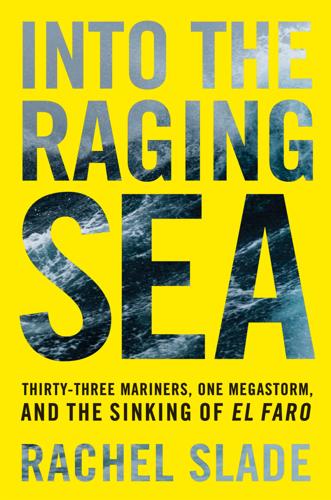
Into the Raging Sea
by
Rachel Slade
Published 4 Apr 2018
Hanjin, one of the world’s largest shipping companies, filed for bankruptcy in 2016, leaving seventy-eight of its laden ships wandering the oceans in search of ports that would unload their goods without guaranteed pay. Piracy also plagued the industry. Notorious waterways like the Malacca Strait (between Malaysia and Sumatra), the South China Sea, the Gulf of Aden (the entrance to the Red Sea), and both coasts of Africa teem with pirates looking for valuable cargo or, even better, officers to ransom. In late October 2017, six crew from a German container ship approaching a Nigerian port were reported kidnapped. In 2013, the World Bank estimated that the annual cost of piracy off the coast of Somalia ran somewhere around $18 billion.
…
See Hurricane Sandy San Juan, 9, 24, 144 San Salvador, 54, 130–33, 147, 148 Saviano, Roberto, 32–33 Scattoloni, Korinn, 64–65 Schorsch, Eugene, 86–87, 89–92, 95 Schwartz, Stuart, 45–46 scuttles, 127–29, 181, 189, 192, 296, 359 Seafarers International Union (SIU), 39, 256, 290–91 SeaLand, 89, 90, 92 seamen’s hospitals, 257 Sea of Storms (Schwartz), 45–46 search-and-rescue operation, 203–14, 215–27, 241–51 body from El Faro found, 249–50 coast guard informed of El Faro’s plight, 206–8 coast guard stories of, 204, 243–44 decision to implement, 241–46 delayed by hurricane conditions, 211, 219, 220, 245 emotional toll of coordinating, 205 inability to pinpoint El Faro’s position, 210–14 initial attempt, 245–47 for Minouche, 220–27 official end of announced, 266–67 remains of El Faro found, 249–51 risk assessment, 219, 242–43 Sea Star Lines, 94, 171, 289, 323 SENTRY, 315, 317, 318 September 11 terrorist attacks, 258–59 sexual harassment, 63, 67 Sherman Antitrust Act, 175 shipping, 135–45, 253–58 in colonial era, 135–38 corporal punishment abolished in, 253 costs of, 257 dangers of, 253–56 downsizing in, 257–58 importance of to modern world, 167–68, 170–71 inspections in, 260–62 peacetime casualties in, 260 profitability of, 255 rebellious seamen in, 138 regulation of, 138–45, 171–76 shipbuilding industry, 137 US north-south divided opened by, 136 Shultz, Steven, 18, 121–27, 147, 177–79, 188, 195, 286, 337 appearance of, 20 barometric pressure monitored by, 181, 186 concerns about lashings, 25–26 conversation with El Yunque chief mate, 101–2 Davidson’s discussions with, 19–22, 25–27, 104–5, 121–24, 129–32 Davidson supported by, 178–79, 186 difficulties managing crew, 124–25 family of, 26 flooding of ship and, 190, 192, 339–40, 341 Hamm comforted by, 189 increasing concern about Joaquin, 121–24, 126–27 Riehm’s discussion with, 29–30 “Sister’s Journey, The” (Loftfield), 294–95 SIU. See Seafarers International Union slavery, 136 Smith, Jamie, 361 SMS. See safety management system Somalia, 34 South Carolina, 21, 108, 203, 267–68 South China Sea, 34 South Street Seaport, 65 Soviet Union, 85 Spanish explorers, 44–46 Spanish galleon treasure, 23 SSAS alert message, 207–8, 213 St. Croix, 171 St. Johns Bar Pilot Association, 7 St. Johns River, 8, 9 steam engines, 150–52 Steinbeck, John, 36 Stephanos, Austin, 205 Stith, Kevin, 102 Stolzenberg, Eric, 313–18, 334 StormGeo, 357 Straits of Florida, 23–24, 103, 132 Sun Oil Company (later Sunoco), 83–84 Sun Shipbuilding and Dry Dock shipyard, 81–95, 277 author’s grandfather employed by, 84–85 discontinues operations, 95 employees cared for by, 83, 84 founding of, 83 historical marker for, 82 leveling of, 81 SUNY Maritime, 149 supercargo position, 137 survivalism, 168–70 Taíno, 44–45 tariffs, 138–39 Thomas, Paul, 262–63 Thompson, Ray, 116, 118, 119, 120 3-2-1 rule, 50–51 Thurmond, Strom, 144 Titanic (ship), 256, 267, 271, 277–78 Tocqueville, Alexis de, 254 TOTE, 15, 32–37, 57, 72, 207, 314 crewing manager of, 116–19 Davidson denied promotion in, 115–20, 299–300 Davidson hired by, 112 Davidson’s calls to emergency center, 3–4, 198–200, 305–6, 307 Davidson’s Erika detour and, 24, 75 Davidson’s return route alterations and, 74–77, 305–6 Davidson’s worries about job with, 24, 121, 130–33 downsizing in, 35, 117, 258, 321, 323–25 drug smuggling on ships of, 32–34, 35, 36, 37, 320 family notifications by, 229–32, 234, 236–37 financial goals and concerns of, 24, 34–35, 175 introduction of by Sun, 94 Jackson’s criticism of, 153–54 liability issue, 286–88 Marine Board hearings and, 286–97, 299–309, 319–29 maritime laws and, 171–76 official name of, 94 overtime cutbacks, 125 perceived lack of job security at, 97, 98–99, 102 price-fixing lawsuit, 175 report findings on, 356–60 Roth-Roffy confrontation and, 268, 327–29 service violations received by, 357 settlement with families, 288, 357 subsidiaries of, 286, 299–300 vessels and storm not tracked by, 77–78 TOTE Maritime Alaska, 286 TOTE Maritime Puerto Rico, 286, 299–300, 323 TOTE Services, 286, 299, 300, 324 TOTE Shipholdings, 299 trade, 87, 95 Transamerican Trailer Transport (TTT), 90, 93 treasure, sunken, 23 Tropical Depression Eleven, 48, 49–50, 217–18 Tropical Storm Erika, 24, 41, 75 Tropical Storm Joaquin, 19–27 detour around considered, 19–22 evolution from depression to, 49–50 forecasts/advisories on, 19–20, 49–50 speed of, 20 troposphere, 48 Trump, Donald, 125, 144–45 Turks, 20 TWA flight 800, 269 Typhoon Haiyan, 53 underwater communication cables, 30 unions, 39, 87–88, 141, 256–57, 290–91 University Corporation for Atmospheric Research, 354 unlicensed crew of El Faro, 20, 39–40, 117, 124–25, 285, 320 VDR.
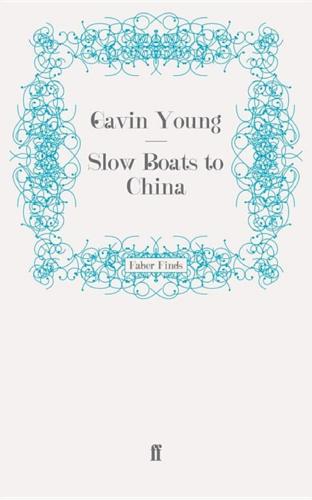
Slow Boats to China
by
Gavin Young
Published 24 Feb 1983
He pointed at my suede boots and said admiringly, ‘Shoes you number one.’ ‘I give them to you.’ Oh, no. You very big. Small, me.’ After a pause he looked up at me again. ‘Home America?’ ‘England.’ ‘Home me Nha Trang. You see Nha Trang?’ I hadn’t, up to then; I got to know it later, a small and beautiful city on the South China Sea. It has fine beaches, and in those days a French restaurant served fresh lobsters. ‘So much fishing in Nha Trang,’ the soldier said, smiling. I hadn’t met many Vietnamese at that time, and I looked at him with interest. Where the fine line of his Oriental cheekbones swept down to the rosebud mouth there was no hint of hair.
…
In 1841 a sultan of Brunei had rewarded the English adventurer James Brooke with the territory of Sarawak in return for his aid in putting down rebellious chiefs and fighting off, in his sailing ship, the Royalist – and sometimes in alliance with the ships of Captain George Keppel of the Royal Navy – the swarms of Sulu marauders. As the Perak rolled through the South China Sea towards Muara, the port of Brunei, Mr Boon, the white-thatched steward, scuttled on his bowlegs across my cabin like an albino crab, backwards, forwards, sideways, wielding a dustpan and brush. Looking for exercise, I staggered along the deck towards the stern. Two Chinese with bandannas around their heads were hammering rust off the rail.
…
I suppose they have to be, for what alternative is there but bodily harm and murder? Barker had a nice line in mock anxiety. He liked to sprinkle chilli sauce, so to speak, on the blander periods of shipboard existence. ‘I hope we can muddle through between here and Sandakan,’ he said glumly as we rocked out into the South China Sea, heading north-east. Why shouldn’t we? I wondered. I had discovered an unused bar and game room on the deck below my quarters in the owner’s cabin, a large though not luxurious room with a bunk, chest of drawers, and shower attached. Barker came into the game room, a relic of passenger days, a couple of hours after we’d sailed, and found me sitting at a low table with a writing pad in front of me.
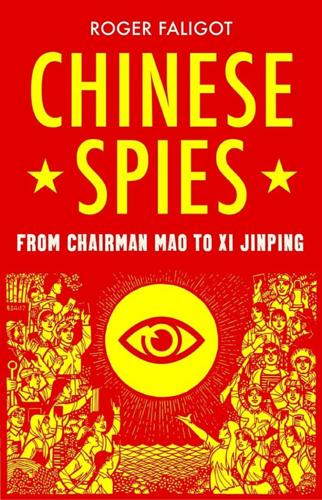
Chinese Spies: From Chairman Mao to Xi Jinping
by
Roger Faligot
Published 30 Jun 2019
It took place on 26 April 1999—the day after the Falun Gong demonstration—between 5.30am and 10.30pm. The central military command of the PLA in the Canton region found itself totally paralyzed following an attack by a computer virus. Communications were disrupted between this command centre—which oversees the South China Sea fleet as well as the units of the infamous 2nd Artillery—and the eighty-plus bases that it controls. While PLA computer scientists were struggling to fix the system, the leadership was torn between several hypotheses: was this a ramping up of Falun Gong aggression? Was the CIA behind it? Taiwan?
…
These PLA3 stations are organized according to their targets: the Chengdu station, for example, monitors Tibet and India, while the Shenyang station monitors Korea and Japan.12 The other sites are located in north-east China, near Jilemutu and Kinghathu Lake; on the south coast near Shanghai; and in the military districts of Fujian and Canton, which are constantly mobilized against Taiwan. There are also stations situated near Kunming (north of Vietnam and Myanmar), as well as in Lingshui, on the southern tip of Hainan Island in southern China. The Lingshui base expanded in 1995 to cover the South China Sea, the Philippines and Vietnam, which is also monitored by stations dotted all the way along the border. In the 1980s, further stations were set up on two small islands in the Paracelsus archipelago. In addition to the Kashi and Lop Nor stations, two more were established in Xinjiang: the Dingyuanchen base, focused on Russia and the primarily Muslim former Soviet republics, is distinct from the Changli base, near the provincial capital Ürümqi, which intercepts satellite communications.
…
Secondly, in April 2002, the Canton-based Xianyang 14 patrolled within Taiwan’s territorial waters. Finally, in July 2004, a Japanese P3-C aircraft spotted the oceanographic ship Nandiao 411 (“Song of the South”, a play on the double meaning t’iao or diao, both “to sing” and “to make intelligence”) in waters off Okinotorishima Island. This vessel, run by the South China Sea Fleet headquartered in Zhanjiang, Guangdong province, was seen sailing not far from the same island again in May 2005. But by the early 2000s, the PLA had succeeded in further expanding its eavesdropping capabilities far beyond this kind of regional coastal navigation. Spy ships in the South Pacific As we know, France is a particularly favoured target of Chinese intelligence, which is known to have operators in the DOM-TOM, the French overseas departments and territories.
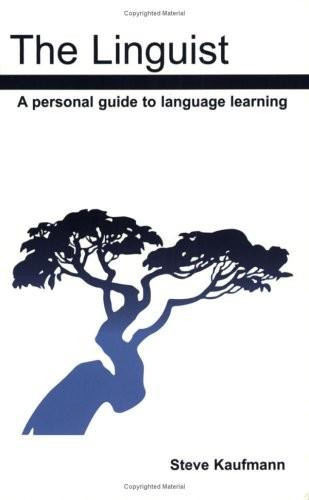
The Linguist: A Personal Guide to Language Learning
by
Steve Kaufmann
Published 15 Jan 2003
I never got tired of studying the skyline and the traffic on the water during this fifteen minute crossing. For the first months I lived on the Hong Kong side near Stanley and Repulse Bay. I had an unobstructed view of a romantic little bay where I could satisfy my desire for the exotic by studying the Chinese transport junks plying up and down the sparkling turquoise waters of the South China Sea. This relatively sparsely populated part of the Crown Colony had beaches, leafy semi-tropical vegetation and a large European population. It was like a resort. I was expected to live there and attend the Hong Kong University where all previous diplomatic language students had studied. But after a few months I chose to live and study on the more densely populated Kowloon side, and I enrolled at the Chinese University of Hong Kong.
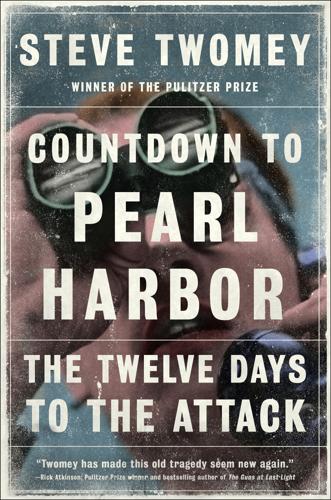
Countdown to Pearl Harbor: The Twelve Days to the Attack
by
Steve Twomey
Published 1 Nov 2016
Japan’s consul general in occupied Shanghai had told Tokyo “that all preparations are complete for taking over all physical property in China belonging to British, American and other enemy nationals.” The Imperial Navy, McCollum went on, had confiscated “many” Japanese merchant ships, refitting some of them as antiaircraft platforms, and all of its warships had now completed a “repair check up.” One newly organized task force was operating in the South China Sea, a second new one “in the Mandate Island area.” A picket line of surface ships and air patrols ran between the Marshall Islands and the Gilberts. Some twenty-four thousand “fully-equipped veteran” troops—his total differed from the War Department’s report to Roosevelt—had boarded transports, taking “a considerable number of tanks and trucks, quite a few of which were camouflaged green,” to blend with jungle terrain, which meant they were going south.
…
“BBs” were battleships, “CAs” cruisers, and “CVs” carriers. The Imperial Navy, like the US Navy, grouped ships of a kind into divisions or squadrons. A “CruDiv” was a cruiser division and a “Subron” was a submarine squadron. Under the geographic headings of “Baku-Takao” and “Hainan-Canton”—all places in, or on the shores of, the South China Sea—Layton placed more than eighty major Japanese warships. This reflected the grand advance south, in the direction of Malaya, the Dutch Indies, and the Philippines, that Stark’s warning had emphasized. Layton’s list declared that still more warships were in the waters of the Marshall Islands, still others already off French Indochina, still more near Japan, including most of the Imperial Navy’s battleships, which suggested they, at least, would play no part in the imminent scheme, whatever it was.

Espresso Tales
by
Alexander McCall Smith
Published 1 Jan 2005
Some of them became quite dependent on their anthropologists – rather like some people become rather dependent on their social workers.” “But of course it’s a bit late now, don’t you think?” said Dilly. “Today’s pirates must be rather elusive.” “There are more than you imagine,” said Domenica. “I gather that the South China Seas are riddled with them. And they’re becoming bolder and bolder. They even try to board tankers and ships like that. They’re very piratical.” The two friends were silent for a moment. There was a certain incongruity in discussing pirates in George Street. But Domenica had a further thought.
…
New Guinea was stale these days, and the headhunters were more concerned with human rights than they used to be … Besides, it was politically incorrect even to use the term headhunter. They were … what were they? Head re-locators? Or, by some lovely inversion, personnel recruiters? “I have an idea for you,” said Dilly. “What about pirates? What about a pioneering anthropological study of the life and customs of modern pirates in the South China Seas? You could live with them in their mangrove swamps and then sit in the back of their boats as they dash out to commit acts of piracy. Of course, you’d have to be completely detached. You could hardly join in. But you anthropologists know all about detachment and disinterested observation.” Domenica, who had been cradling her coffee cup in her hands as Dilly talked, now put it down on the table with a thud.
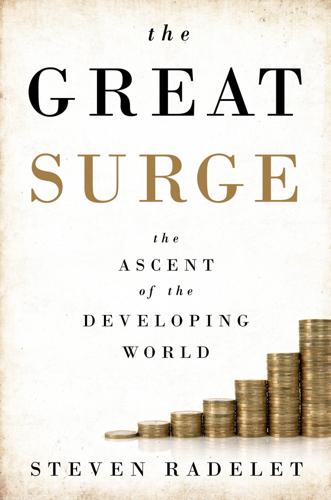
The Great Surge: The Ascent of the Developing World
by
Steven Radelet
Published 10 Nov 2015
Governments facing pressures from citizens unhappy with higher prices and reduced consumption cut back on investment, including on research into new technologies that might help solve some of the problems. Resources are plundered rather than managed properly. Tensions build and conflicts arise both within countries and across borders over competition for energy, food, and water supplies. Confrontations between China and neighboring countries over disputed areas of the South China Sea explode into military conflict, bringing the United States and Japan into the fray. Terrorism spreads and escalates into more sophisticated weapons targeting vulnerable populations in developing countries. Global economic growth slows dramatically, and income growth in developing countries comes to a halt and begins to decline in more countries than not.
…
At least twenty-one people were killed.14 Scores of Vietnamese ships squared off around the rig. China countered that the ships were interfering with its operations. Tensions remain extremely high. Further to the southwest, China and five other countries continue to clash over sovereignty of the Spratly Islands in the South China Sea; China, Indonesia, and Taiwan battle over a boundary near the Natuna Islands; China has several ongoing arguments with the Philippines about boundary waters; and its decades-old border dispute with India (which led to war in 1962) remains unsettled. For thirty years, Beijing followed Deng Xiaoping’s strategy of concentrating on building the economy, lying low on foreign policy, and staying out of the affairs of other countries.
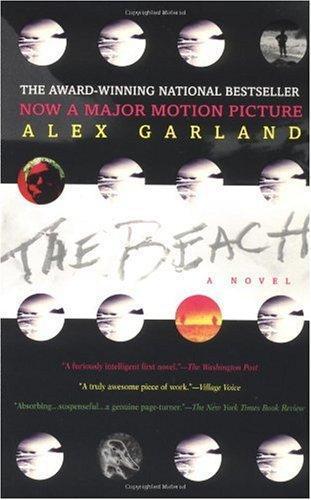
The Beach
by
Alex Garland
Published 1 Jan 1996
I loved their straightforward weirdness, the strange area they occupied between plant and animal life. I learnt an interesting thing about jellyfish from a Filipino guy. He was one of the only people my age on an island where I'd once stayed, so we became pals. We spent many happy weeks together playing Frisbee on the beach, then diving into the South China Sea. He taught me that if you pick up jellyfish with the palm of your hand, you don't get hurt — although then you had to be careful to scrub your hands, because if you rubbed your eyes or scratched your back the poison would lift off and sting like mad. We used to have jellyfish fights, hurling the tennis-ball-sized globs at each other.
…
The Embassy won't cover the cost of returning my body." "You… wanted to be buried." "I don't mind being incinerated, but if my parents won't come to collect me then I don't want to be sent. I'd rather have my ashes left out here." Mister Duck's voice began to crack. "A small ceremony, nothing fancy, and my ashes scattered into the South China Seas." Then he collapsed into uncontrollable sobbing. I pressed my face and hands against the netting. I wished I were in the room with him. "Hey, come on Mister Duck. It isn't so bad." He shook his head angrily, and through his sobbing I noticed he'd started to sing the theme song from M*A*S*H.
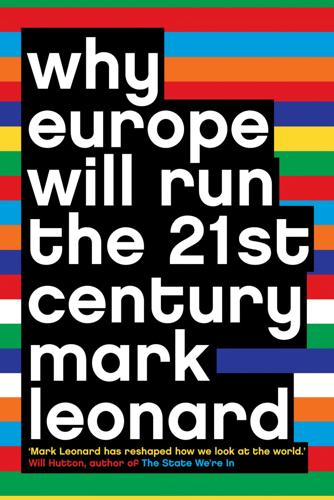
Why Europe Will Run the 21st Century
by
Mark Leonard
Published 4 Sep 2000
Certainly, the Chinese have gone to great lengths to communicate their desire for peace. In recent years, they have resolved virtually all land border disputes with their neighbours. They signed a non-aggression pact with ASEAN, which means that sovereignty disputes over flashpoints such as the South China Sea would be shelved indefinitely in the interest of joint economic development. They are working earnestly to help resolve the North Korean nuclear issue. Through means that include free trade agreements, the Chinese leadership also pledged to boost imports from, and economic aid to, ASEAN countries.6 They have conducted joint military exercises with Russia, Kyrgyzstan, India, and Pakistan to build trust with their neighbours.7 China is also trying hard to avoid a confrontation with the United States.

The Looting Machine: Warlords, Oligarchs, Corporations, Smugglers, and the Theft of Africa's Wealth
by
Tom Burgis
Published 24 Mar 2015
According to the US Treasury, which would put seven of his names on a sanctions list fifty-six years later, he was born on 28 February 1958.2 There is no authoritative version of Pa’s life, only fragments, some of them conflicting, many unverified. Some accounts place his birth in Guangdong, the Chinese province that abuts the South China Sea, possibly in the port city of Shantou. When he was still young his family relocated to Hong Kong, a short move but one that crossed the frontier between Mao Zedong’s People’s Republic of China and one of the last outposts of the British empire. From his start in Hong Kong, Pa travelled far and wide.
…
According to Queensway Group lawyers, by 2012 Sino Zim had given up its concession without exporting ‘a single carat’.42 But Sino Zim appears to have served another purpose: it formalized the Queensway Group’s business connection to the CIO. By 2009 the Queensway Group was increasingly using Singapore as a base for its worldwide operations. The companies at the apex of its corporate structure remained registered in Hong Kong, but the city-state across the South China Sea offered many of the same opportunities for corporate secrecy while also allowing the Queensway Group to advance its transition to a fully fledged multinational not tethered to its Chinese and African roots. On 12 June 2009, a few months after Operation No Return had torn through Marange, Sino Zim Development Pte, Ltd. was registered in Singapore.
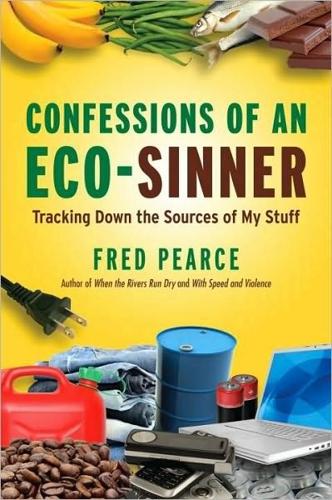
Confessions of an Eco-Sinner: Tracking Down the Sources of My Stuff
by
Fred Pearce
Published 30 Sep 2009
And judging by the maps drawn up by the municipal authorities, it too is scheduled for elimination. 16 Zhangjiagang: The World Capital of Rainforest Destruction ZHANGJIAGANG IS NOT far from Suzhou. It is a major port on the River Yangtze, and imports more tropical hardwood timber than any other port in the world. Day and night, the ships cross the South China Sea and come up the foggy channel of the Yangtze, past the mega-city of Shanghai and wharfs where Europe’s waste paper is imported, before unloading their cargoes of okoume from West Africa, or meranti from Borneo, or teak from Burma, or merbau from Indonesian Papua, or greenheart from Guyana, or bintangor from Papua New Guinea.
…
A company prospectus that I found on the Internet says: ‘Our group’s vessels are mainly engaged in the transportation of logs from the Solomon Islands, West Africa, Papua New Guinea and Southeast Asia to PRC [People’s Republic of China] and India.’ It said the company shipped $19 million worth of logs in 2005. It is not illegal to do this. Knowledge of illegal logging may be widespread, but guilt is hard to pin down. The paths taken by tropical timber, even in a simple journey across the South China Sea, can involve many layers of agents and a great deal of paperwork. But Poynton says he has special mistrust of the middlemen of Singapore and other ports along the route from the forests to China. There is, he says, a small island off the coast of the Malaysian Borneo province of Sabah where the local Chinese Chamber of Commerce is ‘notorious in the trade for issuing phoney certificates of origin for millions of cubic metres of stolen Indonesian wood, and possibly also from Papua New Guinea.
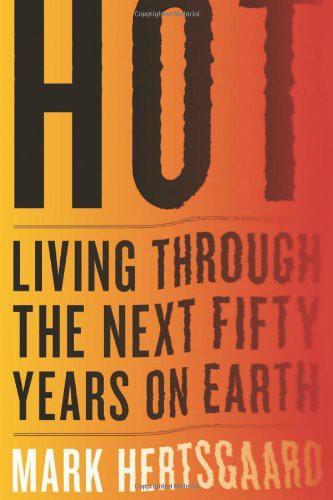
Hot: Living Through the Next Fifty Years on Earth
by
Mark Hertsgaard
Published 15 Jan 2011
We flashed across an expanse of flat, swampy land bisected by narrow canals, and seven minutes later we were at the airport. I wobbled off the train, still feeling the rush of traveling 269 miles an hour. I took an escalator upstairs and found myself facing a gigantic wall of glass that stretched the length of the terminal. The view beyond was of the airport runways and, just beyond them, the South China Sea, where a cargo ship steamed slowly past. My jaw dropped: the runways were at essentially the same elevation as the sea. It reminded me of the airports back in San Francisco and Oakland, only worse. It was bad enough that Shanghai's airport occupies low-lying ground that is as flat as a pool table (which made sense: Shanghai sits in the floodplain of one of the world's four mightiest rivers, the Yangtze).
…
"Since Liberation the government has given great importance to flood control," said Mao, whose eminence was underscored by the fact that the five other experts attending our interview said hardly a word the entire two hours. "The government built five hundred kilometers of dikes along the Yangtze and Huangpu rivers and the shore of the South China Sea." Mao said that the suburban areas of Shanghai, where the airport is located, had been given 1-in-100-years protection against floods. Most urban areas were given 1-in-200-years. But the urban area along the Huangpu River, the heart of Shanghai, boasted 1-in-1,000-years protection, according to Mao.
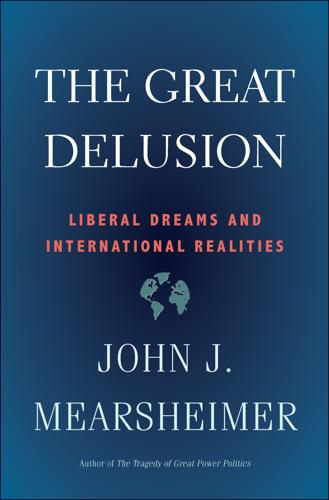
The Great Delusion: Liberal Dreams and International Realities
by
John J. Mearsheimer
Published 24 Sep 2018
Furthermore, nuclear weapons make it highly unlikely that contemporary great powers will fight a major conventional conflict like World War II. Wars between them are likely to be limited in both means and goals. It is hard to imagine, for example, that China and the United States would engage in an all-out conventional war in Asia; but it is not difficult to envision them fighting a limited conflict in the South China Sea or over Taiwan with the thought that the economic costs of such a war could be kept manageable. There is also abundant evidence that states at war with each other do not always break off economic relations. Sometimes they trade with the enemy in wartime because each side believes it benefits from the continued intercourse.
…
They add, “Trading with the enemy occurs during all-out wars fought for national independence or global dominance as well as during more limited military encounters.”51 In short, a country may fight a war against a rival with which it remains economically interdependent and not threaten its own prosperity.52 Finally, as Peter Liberman explains in his important book Does Conquest Pay?, sometimes it does.53 For example, if China fought and won a war for control of the South China Sea, it would end up owning the abundant natural resources on the sea floor that would surely help fuel Chinese economic growth. States occasionally start wars with the expectation that victory will bring economic and strategic benefits that outweigh the costs of undermining interdependence. The Primacy of Politics over Economics But even if one assumes significant costs of war between two economically interdependent states, war remains a real possibility.
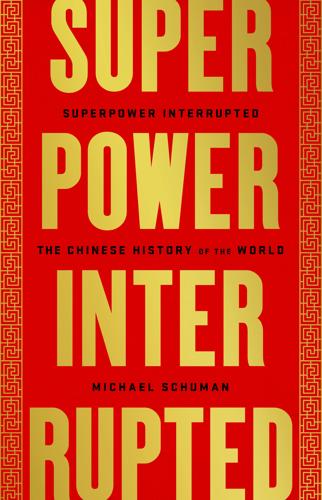
Superpower Interrupted: The Chinese History of the World
by
Michael Schuman
Published 8 Jun 2020
Most sensitive of all is the status of Taiwan, where the government formed by the Nationalists after their flight to the island in 1949 is as entrenched as ever. Beijing refuses to recognize that government and lashes out at anyone who dares call Taiwan an independent country. More recently, China has pressed claims to much of the South China Sea, a vital waterway for global commerce located to its southeast. China’s neighbors dispute this position, and the United States and other major powers don’t recognize it, either. But Beijing has fortified the area with military installations on man-made islands to assert Chinese sovereignty, and responds with hysterical fury to any challenge.
…
Xi’s speech from May 4, 2014, is reprinted in Xi, Governance of China. 18. Speech by Jiang, July 1, 1997. You can read it on the website of China’s Ministry of Foreign Affairs: https://www.fmprc.gov.cn/mfa_eng/wjdt_665385/zyjh_665391/t24924.shtml. 19. Tom Phillips, “China Attacks International Court After South China Sea Ruling,” The Guardian, July 13, 2016. 20. Xi’s speech of May 4, 2014. 21. Didi Kirsten Tatlow explores this idea in a paper from the Mercator Institute for China Studies, which you can find here: https://www.merics.org/en/china-monitor/cosmological-communism. 22. Tatlow. 23. Xi’s speech of May 4, 2014. 24.
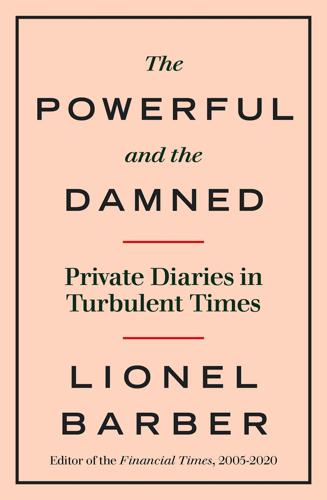
The Powerful and the Damned: Private Diaries in Turbulent Times
by
Lionel Barber
Published 5 Nov 2020
Senior US officials are visibly thrilled at the display of power against China on multiple fronts. These include trade tariffs as well as law enforcement at home and abroad against suspected spies and Beijing’s attempts to ‘turn’ Chinese academics working in the US. Measures also include a more robust posture in the (contested) South China Sea; cyber counter-measures against Chinese infractions; and the modernisation of the US nuclear arsenal. This is Cold War-style mobilisation. There is nervousness in some quarters about Trump’s aggressive approach. Some worry about the danger of sidelining allies; others fret about ‘recklessness’.
…
, Financial Times, 30 March 2018. 11 Sorrell defended his high compensation in an FT op-ed headlined ‘Mea Culpa – I act like the owner I am’, 5 June 2012. 12 Cambridge Analytica was the UK political consultancy that powered its voter analysis with unauthorised access to private Facebook data on 50 million people. The group, which worked for the Trump and Vote Leave campaigns, was backed by the American hedge fund billionaire and conservative activist Robert Mercer. 13 The Scarborough Shoal, located in the South China Sea close to the Philippines, is among China’s most ambitious claims to date in its drive to fortify remote islands and boost its territorial claims in strategic waters. 2019: Succession 1 Dominic Raab, Conservative MP for Esher and Walton, was a Brexiter hardliner who rose to be foreign secretary in the Johnson Cabinet. 2 Sonia Khan, treasury political adviser, worked for Hammond and his successor Sajid Javid until she was abruptly and publicly fired by Dominic Cummings, Boris Johnson’s top adviser, for disloyalty on Brexit.

Accessory to War: The Unspoken Alliance Between Astrophysics and the Military
by
Neil Degrasse Tyson
and
Avis Lang
Published 10 Sep 2018
Fragments of Indian teak appear in the ruins of the Sumerian city of Ur; Minoan craftsmen worked amber from the Baltic; Mycenean jars arrived at the palace of the pharaoh Akhenaten; Chinese silk was woven into the hair of Egyptian mummies; Sri Lankan cinnamon bark scented the women of Arabia; Zimbabwean gold crossed the Indian Ocean long before Europeans staked claims in southern Africa; Han Chinese rulers had such need of war horses that they imported the beasts both by land and by sea. Each year, freighters transported hundreds of tons of wheat, olive oil, marble, and herb-laden fish sauce to Athens, to Rome, to Alexandria. Local versions of fermented shrimp paste, a staple condiment in the cuisines of Southeast Asia, made their way across the South China Sea. A single merchant vessel wrecked in the first century BC near Albenga, on the Italian coast between Genoa and Monaco, held between 11,000 and 13,500 amphorae of wine.13 The Bronze Age made tin a prized commodity. Generally an alloy of copper and tin, bronze was a brilliant invention, a strong, corrosion-resistant material that could be cast at relatively low temperatures into weapons, ritual vessels, ornaments, statues, and tools.
…
A handful of recent European-drawn maps had begun to show the southern half of Africa, which Ptolemy had hinted, more than a millennium earlier, extended well below the equator. Plutarch knew Africa was circumnavigable, and Alexander the Great knew it could be reached by sea from the mouth of the Euphrates. But in the interim it had, so to speak, gone missing. By the end of the thirteenth century, a Venetian had escorted a Mongol princess from the South China Sea to the Persian Gulf, and a Genoese had built a castle in the Canary Islands. By the end of the fourteenth century, Arab and Indian traders had established themselves along the East African coast as far south as present-day Mozambique. At the beginning of the fifteenth century, a heavily armed fleet of more than three hundred Chinese vessels, commanded by the formidable eunuch admiral Zheng He and carrying nearly 28,000 soldiers and half a dozen astrologers, had sailed forth to impress and intimidate China’s southern neighbors by a lavish display of both Ming treasures and military might.32 Last but certainly not least from the perspective of Western Europe, the Portuguese had begun to sail the Atlantic far and wide.
…
Strategic Guideline of Active Defense” and “Force Development in Critical Security Domains,” in “Full Text: China’s Military Strategy,” China Daily, May 26, 2015, www.chinadaily.com.cn/china/2015-05/26/content_20820628.htm (accessed June 26, 2016). A Chinese defense “white paper” has been issued every two years since 1998 (Secretary of Defense, Military and Security Developments, 3). 7.A 2015 study found that in the context of any confrontation that might arise in or near the South China Sea, US and Chinese counterspace capabilities are now on a par. Eric Heginbotham et al., The U.S.–China Military Scorecard: Forces, Geography, and the Evolving Balance of Power 1996–2017 (Santa Monica, CA: RAND, 2015), 257–58. 8.The foreword to Counterspace Operations: Air Force Doctrine Document 2–2.1 (Aug. 2, 2004), the first US Air Force position paper wholly devoted to counterspace, states: “Counterspace operations have defensive and offensive elements, both of which depend on robust space situation awareness.
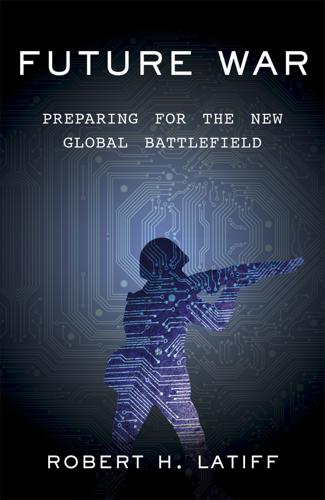
Future War: Preparing for the New Global Battlefield
by
Robert H. Latiff
Published 25 Sep 2017
Ours is a world of nuclear giants and ethical infants. —GENERAL OF THE ARMY OMAR N. BRADLEY, Armistice Day speech, November 1948 INTRODUCTION ON A SWELTERING AUGUST DAY, following weeks of heightened tensions with Russia over its actions in Ukraine and Syria, and harsh words between the United States and China over actions in the South China Sea, and as workers are preparing to depart the cool of their air-conditioned Manhattan office buildings for the gridlocked highways and subways, several large electric power plants along the East Coast simultaneously experience dramatic over-speed conditions in their large turbine motors. Plant operators are unable to stop the steam turbines, whose automatic control and data systems have been infected by sophisticated computer malware, and they catastrophically tear themselves apart, cutting power to large segments of the population and industries in the Northeast.

Modern China: A Very Short Introduction
by
Rana Mitter
Published 25 Feb 2016
In areas outside Asia, China’s preference is for remaining neutral but friendly, and to commit to few outright statements of policy: yet crises in the Middle East, the Korean peninsula, and Ukraine, and the scramble for mineral resources in Africa and energy resources around the globe may make it harder to claim a status as a world power without providing action or using influence. Meanwhile, Chinese actions in its own backyard in the early 2010s, in particular territorial and maritime claims in the East and South China Seas, have made some neighbouring countries wary of growing Chinese influence in the region, particularly as its defence budget soars (it was US$131 billion in 2014). Although Chinese behaviour in Asia veers between hard and soft tactics, it is still unclear whether Beijing has worked out a real strategy to increase its influence in the region through consensus rather than coercion.
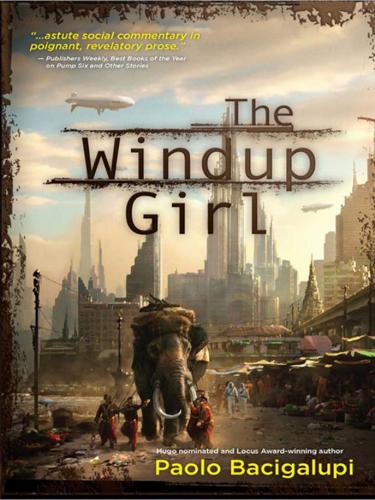
The Windup Girl
by
Paolo Bacigalupi
Published 15 Sep 2009
"And what do you want for this wondrous bit of technology?" Hock Seng readies himself. "A ship." The Dung Lord looks up, surprised. "Not money? Not jade? Not opium?" Hock Seng shakes his head. "A ship. A fast clipper. Mishimoto-designed. Registered and approved to transport cargo to the Kingdom and throughout the South China Sea. Under the protection of her Majesty the Queen. . ." He waits a beat. "And your patronage." "Ah. Clever yellow card." The Dung Lord smiles. "And I thought you were truly grateful." Hock Seng shrugs. "You are the only person who has the influence to provide such permits and guarantees." "The only one who can make a yellow card truly legitimate, you mean.
…
Slight and beautiful. An innocent trapped amongst warring animals. He turns from the window and goes to squat before the safe. Studies its dials and heavy locks, its combinations and levers. Expensive to manufacture something with so much steel. When he had his own company, when the Tri-Clipper ruled the South China Sea and the Indian Ocean, he had one like it in his offices, an heirloom, salvaged from an old bank when it lost liquidity, straight from the vault and carried into Three Prosperities Trading Company with the help of two megodonts. This one sits before him, taunting him. He must destroy it at its joints.
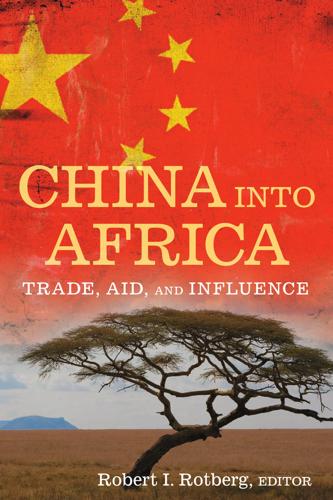
China into Africa: trade, aid, and influence
by
Robert I. Rotberg
Published 15 Nov 2008
It would focus its attention not just on the Pacific, but southward, along the sea lanes that convey vital commodities to China.103 The modern Chinese navy sent its first-ever naval fleet formation to Africa in 2000, with port calls in Tanzania and South Africa. Rear Admiral Huang Jiang, chief of the general staff of the South China Sea Fleet, joined the Shenzhen 167 guided missile destroyer, the Nancang 953 supply ship, and 480 officers and sailors during stops at Dar es Salaam and the Simonstown naval dock near Cape Town.104 The commander of the North China Sea Fleet, Ding Yiping, accompanied a guided missile destroyer, a supply ship, and 500 crew members on China’s first world cruise in 2002.
…
See Zimbabwe Shaba emergency (1977), 159 Richards Bay, South Africa, 150 Shalmon, Dan, 5 Rio Tinto (mining company), 151 Shanghai, China, 152 Roads, 255, 257, 264; FDI and, 104; in Shantou, China, 138–40 Zimbabwe, 261 Shanxi Province, China, 145 Rogue states, 113 Shanxi Tianli Enterprises Group, 145 Romeo-class submarines, 159 Shell Petroleum Development Corpora- Rumsfeld, Donald, 181 tion, 120, 278 Rupp, Stephanie, 16 Shen Dingli, 111 16-7561-4 index.qxd 9/16/08 4:25 PM Page 335 Index 335 Shengli, China, 110 100–01; military assistance and, 157, Shenzhen, China, 138–40 161, 165–66, 169–70; national secu- Shinn, David, 9–10 rity and, 155; naval strategy and, 180; Sichuan Telecommunications Company, opposition group outreach in, 239; 178 SEZs and, 147, 152; Standard Bank Sierra Leone, 27, 158, 161; peacekeeping of, 148; trade with, 51, 277–78; in, 177–78 weapons production and, 171; Silk Road, 116 Zimbabwe and, 174 Silkworm antiship missile, 159 South China Sea Fleet, 180 Simonstown, South Africa, 180 South Commission, 146 Singapore, 252 Southern African Development Com- Sino-Nigeria Business and Investment munity, 18, 144 Forum, 148 South Fujian Triangle Delta, 138 Sinopec-Sonangol International (SSI), South Korea, 95 120, 122; government management Sovereignty, 112, 217, 297, 307; human and, 114; rebel attacks against, 179; rights and, 253, 264; South Africa Unipec and, 121 and, 301; Sudan and, 305 Sino-South African Binational Com- Special Economic Zones (SEZs), 1, 6–7, mission, 169 52, 137–41, 151–53, 234; Benguela Sino-South African Defense Commit- railway and, 150–51; development tee, 169–70 and, 142–46; Egypt and, 149–50; Small arms and light weapons (SALW), Nigeria and, 147–48; Tanzam Rail- 175–76 way and, 146–47; Zambia and, 57 Small Arms Survey, 163 Special Preferential Tariff Treatment Socialism, 198, 202, 241, 287 program, 142 Somalia, 28, 298, 308; attacks against Spielberg, Steven, 12–13 Chinese in, 178; military assistance Sriram, Chandra Lekha, 14–15 and, 158–59, 183; stability-building Standard and Poor’s, 198 efforts in, 17; tripartite cooperation Standard Bank, 148 and, 205; U.S. military in, 303–04 State Department (U.S.), 307 Sonangal (Angolan national oil com- State-owned companies, 111–12, 114, pany), 119–20.
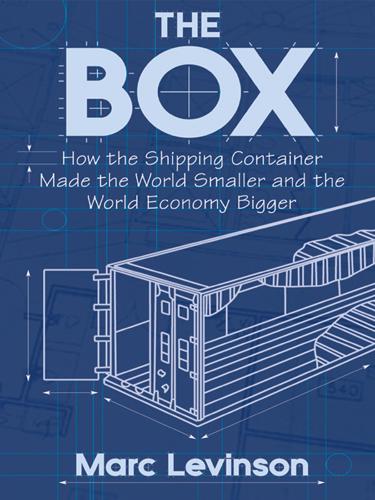
The Box: How the Shipping Container Made the World Smaller and the World Economy Bigger
by
Marc Levinson
Published 1 Jan 2006
Coastal ships with less than a five-meter draft could reach the dock, but the port was repeatedly thrown into chaos when they arrived without advance notice. Storms, common during the summer monsoon, could bring the intricate unloading process to a halt.3 The situation in Saigon was even worse. Vietnam’s only deepwater port, located on the Saigon River forty-five miles from the South China Sea, was a major bottleneck. Tonnage rose by half during 1965, and the port was simply overwhelmed. There were no cranes and few forklifts, leaving almost everything to be handled by muscle power. Ships carrying military cargoes, commercial cargoes, U.S. foreign aid, and food relief shipments competed for one of only ten berths.
…
Crane rails were installed on the deck, while Sea-Land assembled two cranes in the Philippines from a patchwork of parts. In June, two barges, loaded with the partially built cranes, trucks to haul containers, campers for workers to live in, and even a sewage disposal plant, were floated across the South China Sea from the Philippines to Cam Ranh Bay. Then the realities of construction in the middle of a war zone intervened. The Da Nang operation got under way on August 1, a few weeks late, as the first containership to serve Vietnam, the Bienville, arrived from Oakland and unloaded its 226 containers in fifteen hours.
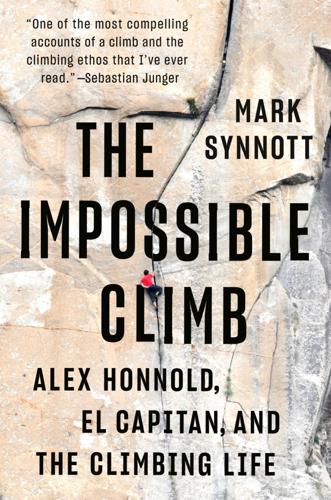
The Impossible Climb: Alex Honnold, El Capitan, and the Climbing Life
by
Mark Synnott
Published 5 Mar 2019
It was not the kind of place you ventured without a helmet. Below us, the gully dropped out of sight into a mist-filled cauldron. If we were canyoneers, we could have kept rappelling into the abyss. Six miles farther down the canyon and 10,000 feet below, the gully would eventually spill us into the South China Sea. At the time, only three parties had ever successfully negotiated the canyon, one of which barely survived. A few months after the Trango expedition, I found myself in a dusty base camp below a volcanic spire in northern Cameroon. Around the campfire one night, my two South African climbing partners regaled me with tales of a mysterious jungle canyon lined with titanic cliffs.
…
We had decided not to bring a stove, to save weight, so we dined on salami, cheese, and crackers, which we passed between the two ledges in a gallon-size Ziploc bag. For dessert we shared a block of caramel-filled milk chocolate. Off in the distance, past a row of pink and purple clouds that appeared to be marching across the South China Sea, I could see the hazy outline of a distant island. I wondered if I was looking at the Philippines. “Hey, Alex, what are you going to call your pitch?” asked Conrad, who was drawing a map of our route, what climbers call a topo, in a small yellow notebook. On a big-wall first ascent, it’s a custom to give names to significant pitches or features.

The Controlled Demolition of the American Empire
by
Jeff Berwick
and
Charlie Robinson
Published 14 Apr 2020
The Obama administration certainly seemed to think so with his announcement of a “pivot to Asia”, and the relocation of two-thirds of the American naval fleet to positions in close proximity to China as a response to their construction of airstrips in the South China Sea on the disputed Spratly Island chain.97 Why the Obama administration thought they were in any position to tell China what they can do in the South China Sea, not the South America Sea, is just another example of the arrogance of American foreign policy. If China was building airstrips on Catalina Island, 26 miles off the coast of Los Angeles, then a response would be warranted and expected.
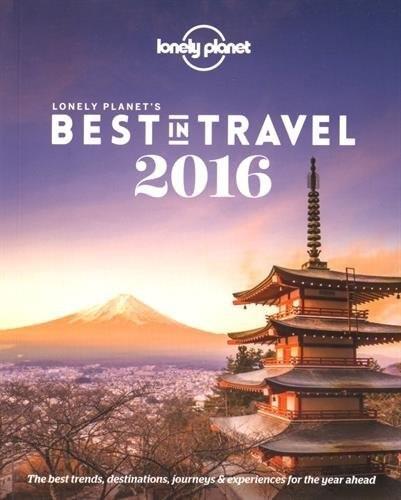
Lonely Planet's 2016 Best in Travel
by
Lonely Planet
Published 30 Sep 2015
They call this top-to-toe line the Reunification Express, because when it resumed service in 1976 – after years of US bombardment – it rumbled across a freshly reunited nation. And what a rumble, a 1726km journey from the frenetic streets of northern Hanoi to sizzling southern Ho Chi Minh City, via the shores of the South China Sea, the formerly country-dividing DMZ, historic Hué, sandy Nha Trang and untold numbers of rice paddies, water buffaloes and bucolic scenes. Hanoi–Ho Chi Minh City takes around 30 hours. Popular Hoi An is not on the railway; it’s 30km by bus from Danang station. • By Sarah Baxter Best Places to Test Your Survival Skills Can’t sit still while on holiday?
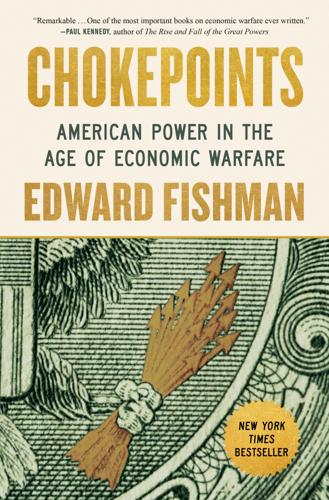
Chokepoints: American Power in the Age of Economic Warfare
by
Edward Fishman
Published 25 Feb 2025
Alliances were America’s biggest advantage over rivals and its strongest claim to global leadership. Now China’s power had grown so great that it was beginning to loosen those bonds. Unease was also spreading inside the Pentagon. China’s economic imperialism—plus its more assertive military activities, especially the construction of artificial militarized islands in the South China Sea—did not just endanger America’s alliances; it imperiled U.S. military dominance. China’s population was more than four times the size of America’s, and its economy was projected to become the world’s largest in a matter of years. In military contests, such quantity had a quality all its own. Secretary of Defense Ash Carter and his deputy, Bob Work, argued that the United States needed to gain a decisive technological edge over China to offset the country’s numerical advantages.
…
W., 17, 32 Bush, George W., 18, 37–39, 41, 42, 70, 72, 77, 87, 130, 139, 214, 237, 314, 417 Iran sanctions and, 59, 61, 63, 67–69, 79, 130–31 Iraq War and, 17, 42, 58, 130, 146, 147 Kerry’s debate with, 58, 59 Putin and, 146 ByteDance, 299–300 C CAATSA (Countering America’s Adversaries Through Sanctions Act), 248 Cafe Milano plot, 93, 94 CalPERS, 186 Cameron, David, 189 Carnegie Endowment for International Peace, 216–17, 221 Carter, Ash, 243 Carter, Jimmy, 32, 54–55 Cartin, Josh, 231 Caspian Pipeline Consortium, 356 Caterpillar, 149 Catz, Safra, 300 Center for Security and Emerging Technology (CSET), 392 Center for Strategic and International Studies, 245 CFIUS (Committee on Foreign Investment in the United States), 262 Chabad-Lubavitch, 71 Chang, Richard, 300 Charlie Hebdo, 205 Chechnya, 146 Chen, Stephen, 263 Cheney, Dick, 152 Chhabra, Tarun, 392 China, 4, 8, 23, 33, 76, 89, 142, 149, 169, 174, 227–31, 232–38, 239–46, 260, 279, 298, 313, 314, 398, 400, 401, 403, 405, 423–25 Africa and, 279 AIIB and, 242–43, 297 auto industry in, 408 Belt and Road Initiative in, 230–31, 242, 262, 271, 422–23 Biden and, 315, 318 in BRICS, 398–401, 399 Britain and, 227–28, 230–31, 295 central bank of, 404 COVID infections in, 288–89, 299, 384 dual circulation economic strategy of, 295 economic imperialism of, 230, 241–43, 294 economy of, 235–37, 243, 248, 302 EU and, 271, 305–6 financial crisis of 2008 and, 239–40, 242 Hong Kong and, 283, 295, 299 Huawei in, see Huawei India and, 404–5 integration into global economy as road to democracy in, 235–38, 298 intellectual property theft by, 232, 234, 236, 237, 244, 252, 253, 254, 263–64, 270, 272, 299, 418 Iran and, 78, 79, 87, 90, 95, 99–102, 104–5, 111, 117–18, 126, 132, 133, 413 Japan and, 240, 273, 392–95 Jiangxi province in, 273–74, 274 Long March in, 273 “Made in China 2025” initiative of, 244–45, 263, 268, 271 military-civil fusion in, 244, 300–301 National Day in, 261 North Korea and, 43, 44, 249, 250 oil and, 359, 361 Pelosi on, 285–86 population of, 243 rare-earth processing in, 240, 273–74, 274, 408–9 renminbi currency of, 20, 21, 195, 220, 232, 293, 403–6, 412, 418 rise of, 235 Russia and, 194, 195, 217, 220, 248, 293, 331, 331, 361, 396, 406, 412 Russia sanctions and, 365, 366 SARS outbreak in, 288 Senkaku Islands and, 240 South China Sea and, 243 surveillance in, 241, 242, 279, 404–5, 422 Taiwan and, 263, 278, 282, 394, 411, 414–16 tech industry in, 241–42, 244–45, 251–53, 258, 269–72, 299, 302, 391–96, 407–8, 418–20 Tiananmen Square massacre in, 155, 235, 237 TikTok and, 299–300 Trump and, 227–30, 232–33, 247–53, 256, 261, 286, 298, 302, 378; see also China, sanctions and export controls against; China-U.S. economic relationship UN and, 78 Unreliable Entity List of, 274–75, 302 Uyghurs in, 241 in WTO, 236–27, 244, 248, 252, 254, 269, 270 China, sanctions and export controls against, 264, 298–306, 326, 391–96, 400, 407–8, 411, 416, 419, 420, 422 FDPRs in, xvii, 281–82, 290–91, 292–96, 299, 301, 303, 326, 391, 392, 394, 411 on Fujian Jinhua, 263–65, 269, 275–76, 278 on Huawei, 262, 266–72, 273–78, 279–84, 285–91, 292–97, 299, 300, 304–6, 315, 321, 326, 340, 392, 400, 402, 410, 411, 419 on TikTok, 299–300 on ZTE, 255–60, 262, 264, 267, 268, 275–78, 299, 302–3 China Construction Bank, 239 China Mobile, 301 China National Offshore Oil Corporation (CNOOC), 301 China National Petroleum Corporation, 87 China Telecom, 239 China-U.S. economic relationship, 229–30, 236–38, 247–53, 261, 274, 276, 280, 298–99, 302, 304, 392, 408–9, 410, 419 Trade Act Section 301 in, 252–53, 254, 261, 271 trade deal negotiations in, 250, 258, 266, 270–72, 276–77, 299 trade war and tariffs in, 232–33, 243–46, 251–53, 255, 261–62, 266, 268, 272, 274, 290, 298, 392 U.S. trade deficit in, 33, 232, 250, 252, 268, 290, 299, 299 Chinese Communist Party (CCP), 228, 230, 233, 235, 236, 240–42, 244, 245, 251, 255, 263, 271, 274, 283, 306, 398, 407 Huawei and, 279–80, 418 Long March of, 273 TikTok and, 300 CHIPS (Clearing House Interbank Payments System), xvii, 22, 33, 403 CHIPS and Science Act, 394 Chirac, Jacques, 78 chokepoints, 6, 19, 132, 353, 366, 396, 397, 406, 420, 425 breaking of, 402–9 clean-energy industry as, 408–409 creation of, 6, 425 defined, 3 maritime insurance and shipping as, 366, 376 oil field technology as, 177 tech sector as, 6, 231, 260, 303, 393 U.S. capital markets as, 176 U.S. dollar and financial infrastructure as, xix, 6, 34, 62 CIA (Central Intelligence Agency), 18, 42, 45, 131, 160, 222, 313, 420 CIPS (Cross-Border Interbank Payment System), 293 CISADA (Comprehensive Iran Sanctions, Accountability, and Divestment Act), xvii, 79–81, 82–87, 89, 90, 97, 132 Cisco, 234 Citibank, 5, 85, 405 Civil War, 146 clean-energy technology, 395, 408 Clean Network, 288, 295 climate change, 238, 421 Clinton, Bill, 32, 34, 35, 39, 56, 69, 71, 87, 100, 146, 166–67, 236, 244 Clinton, Hillary, 96, 101, 115, 116, 152, 221–23 CNOOC (China National Offshore Oil Corporation), 301 CoCom (Coordinating Committee for Multilateral Export Controls), 281 Cohen, David, xiii, 313, 364 Iran sanctions and, 53, 70–71, 89, 91, 95–97, 97, 99, 105–6, 107, 118, 131, 132, 143, 303 Russia sanctions and, 162, 163, 164, 172 Cohn, Gary, 230, 249, 251 Cold War, 5, 17, 23, 32, 35, 39, 54, 145–46, 221, 235, 280, 281, 298, 304, 317, 420, 424 color revolutions, 147–49, 150 Commerce Department, U.S., 177, 243, 245, 257, 258, 264–65, 269, 270, 276–78, 279–81, 290–91, 292, 293, 296, 299, 301–3, 340, 391, 394, 420 Entity List of, xvii, 264, 269, 270, 274, 275, 276, 277, 285, 301, 392 Communism, 43, 139, 235 computer chips, see semiconductors computing, 31, 243, 395 Confucius, 261 Conoco, 56, 79, 159 Constantinople, 1–3 Conte, Giuseppe, 271 Continental System, 14, 16 Corcyra, 13 Corinth, 13 Cornyn, John, 262 correspondent banks and correspondent accounts, xvii, 21, 62, 80, 85, 340, 402 Cotton, Tom, 125 COVID-19 pandemic, 288–89, 299, 302, 313, 315, 318, 324, 325, 329, 369, 384, 392, 398, 400, 403, 404 Creditanstalt, 65, 66 Credit Suisse, 85–86, 134, 296 Crimea, 1, 140, 162 Russia’s annexation of, 140–41, 143, 144, 156, 157–64, 171, 187, 190, 193, 197, 199, 201, 203, 212, 219–21, 223, 224, 293, 309, 315, 316, 321, 343, 411, 416, 417 Crimean War, 3 Cryan, John, 134 cryptocurrencies, 402–5, 418 Cuba, 8, 91 Cui Tiankai, 261 currencies, 25–26, 398, 405–7, 412 conversions and exchange rates of, 21, 25, 27, 28, 196, 198–99, 423 digital (cryptocurrencies), 402–5, 418 dollar, see dollar, U.S.
…
Petersburg International Economic Forum, 210, 211 Sakhalin-1 project, 190 Sakhalin-2 project, 374 Samsung, 234, 263, 275, 290, 296 sanctions, 5, 7, 22–23, 41, 85, 90, 91, 130–31, 143, 404, 410, 416, 417, 422 backfill and, 79, 87, 159 banks and, 22, 39, 62, 66–67, 85–86, 89–92, 95, 99, 110, 124, 133, 134, 172, 181, 186, 256–57, 264, 267, 303, 311, 333, 334, 336, 337, 339–40, 343, 344, 346, 365, 415 Biden administration’s review of, 314–15 blocking, xvii, 62, 65, 67, 69, 95, 172, 175, 204, 259, 264, 270, 326, 334, 336, 339–40, 343, 346, 357, 363, 500n cooperation among states in, 14 Countering America’s Adversaries Through Sanctions Act, 248 dollar’s dominance and, 34 G7 and, 169 IEEPA and, xviii, 38, 54, 300, 314 League of Nations and, 15 Lew on, 216–17, 304, 315 multilateral, 169 novel uses of, 421–22 overuse of, 8, 217, 315, 421 secondary, xix, 87, 282, 375–76 technocrats and, 53, 131, 303 Trump administration policies on, 313–15 UN and, 63, 67, 169 U.S. leadership position and, 217, 220 violations of, 22, 62, 66, 67, 85–86, 110, 124, 186, 256, 264, 267, see also economic warfare Sanders, Bernie, 222 SARS, 288 S&P, 199 Sarkozy, Nicolas, 74–76, 78, 94 Saudi Arabia, 28, 29, 31, 54, 93, 197–98, 359, 383, 406, 413 Iran and, 102, 103, 325, 396 oil in, 102, 103, 325, 359, 383, 387, 406 petrodollars and, 29–30, 33, 398 Saund, Dalip Singh, 361 Sberbank, 174, 175, 185, 186, 189, 192, 199, 203, 333, 334, 339, 340, 351, 363 Schelling, Thomas, 5 Scholz, Olaf, 326, 332–33, 332, 336–37, 340, 355 Schröder, Gerhard, 78 Schumer, Chuck, 91 SDN List (Specially Designated Nationals and Blocked Persons List), xix, 39 Sechin, Igor, 190, 196, 355 secondary sanctions, xvii, xviii, xix, 56, 57, 61, 69, 79, 80, 83–86, 87, 100, 101, 125–27, 132–33, 159, 282, 305, 322, 364, 364, 375–76, Section 301, Trade Act of 1974, 252–53, 254, 261, 271 security, 401, 423–25 Seibert, Bjoern, xiv, 311–12, 322, 327–29, 328, 334, 344, 346, 347, 348, 369, 386, 412, 415 Semiconductor Industry Association, 245, 276, 279 Semiconductor Manufacturing International Corporation (SMIC), 300–301, 407 semiconductors (computer chips), 6, 233, 234, 244–45, 256–57, 259, 262–64, 268, 275, 277, 278, 280–82, 292, 295, 296, 300–301, 303, 393, 395, 422 black market in, 391 China’s industry in, 391–96, 407–8 EUV technology and, 301, 393, 394 in Russian weapons, 380 Russia sanctions and, 326, 333, 340 Senate, U.S., 96, 104, 115, 321 Senkaku Islands, 240 September 11 terrorist attacks, 6, 35, 36–39, 44, 160, 320 Serbia, 37–38 Setser, Brad, 175 Sevastopol, 141, 144, 145, 157, 162 Shell, 86, 177, 211, 356 Sherman, Brad, 79 Sherman, Wendy, 96, 97, 102, 120, 313, 330 shipping containers, 31, 33 Shultz, George, 165 Shuvalov, Igor, 195 Siemens, 177, 212 Sikorski, Radek, 185 Silicon Valley, 231, 244–45, 262, 264, 287, 329, 392, 402, 419, 422 Siluanov, Anton, 171, 210 Simferopol, 141 Simões, António, 134, 135 Simon, William, 29, 30, 31, 33 Singh, Daleep, xiv–xv, 172–76, 181, 200, 202, 218, 309–12, 311, 313, 322–23, 324–26, 328, 330, 333–34, 339–40, 343–49, 350, 359, 361–62, 363–64, 369, 370, 374, 412, 415, 420 Sinopec, 105 SK Hynix, 263, 296 Skripal, Sergei and Yulia, 259 Skycom, 267 Slovakia, 168, 210, 211 SMIC (Semiconductor Manufacturing International Corporation), 300–301, 407 Smith, Adam, 20 Smith, John, 134, 134 SMP Bank, 175 Snowden, Edward, 287 SolarWinds, 315 South Africa, in BRICS, 398–401, 399 South Asia, 54 South China Sea, 243 South Korea, 33, 92, 99, 100, 278, 296, 359, 392, 406–7 South Sudan, 218 Soviet republics, former, 145, 423 color revolutions in, 147–49, 150 Soviet Union, 16, 55, 140, 141, 144, 151, 157, 161, 169, 203, 259, 280, 380, 424 Afghan war with, 68 collapse of, 5, 16, 32, 34, 37, 140, 144, 145, 147, 148, 235, 318 see also Cold War Spain, 14, 126 Spalding, Robert, 255–56 Sparta, 1, 9, 13, 14 Spavor, Michael, 268 SPFS, 195, 220, 343 SPR (Strategic Petroleum Reserve), 359–60, 384 Sprint, 256 Sri Lanka, 80 Standard Chartered, 67, 134 State Department, U.S., 22, 57, 139, 140, 142–43, 152, 154, 160, 172, 222, 224, 248, 259, 287, 305, 313, 420 Bureau of Energy Resources, U.S.

Lifestyle Entrepreneur: Live Your Dreams, Ignite Your Passions and Run Your Business From Anywhere in the World
by
Jesse Krieger
Published 2 Jun 2014
CASE STUDY: TAIWAN Business Chinese at National Taiwan University Street Cycling & Business Networking in Asia The late summer sun illuminated Guanyin Mountain on the horizon and glowed upon each ripple in the river, which snaked along the outskirts of Taipei all the way to the mouth of the South China Sea. A tropical storm blew through yesterday afternoon leaving behind clear skies and a light mist lingering on the mangroves and foliage lining the Danshui river. After six weeks in a Business Chinese program at National Taiwan University and nearly 1,000 kilometers of cycling in and around Taipei, this was my final ride before returning home the next day.
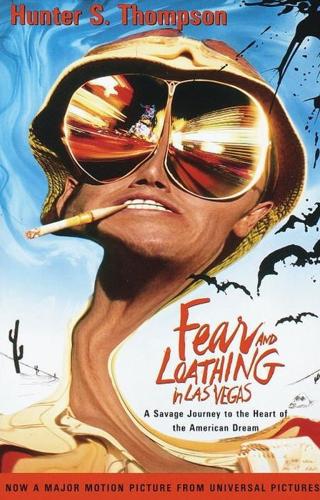
Fear and Loathing in Las Vegas
by
Hunter S. Thompson
and
Ralph Steadman
Published 31 Dec 1970
This crippled, loping walk that once made me a reject from the Naval ROTC? Indeed. This man will never be able to walk straight. Captain! Because one leg is longer than the other.… Not much. Three eighths of an inch or so, which counted out to about two-eighths more than the Captain could tolerate. So we parted company. He accepted a command in the South China Sea, and I became a Doctor of Gonzo Journalism … and many years later, killing time in the Las Vegas airport this terrible morning, I picked up a newspaper and saw where the Captain had fucked up very badly: SHIP COMMANDER BUTCHERED BY NATIVES AFTER “ACCIDENTAL” ASSAULT ON GUAM (AOP)—Aboard the U.S.S.
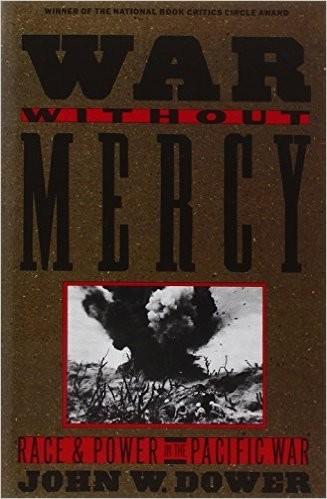
War Without Mercy: PACIFIC WAR
by
John Dower
Published 11 Apr 1986
These two British warships were dispatched to Singapore in the fall of 1941 upon Churchill’s insistence that this meager show of sea power, combined with the U.S. military presence in the Philippines, would deter Japan from advancing to the south. Two days after the Japanese called this feeble bluff by attacking Pearl Harbor and the Philippines, they sank the two great vessels in the South China Sea with astonishing ease, losing only three planes in the process. Coupled with the destruction of the U.S. fleet at Pearl Harbor, this cleared the Pacific of the last force of capital ships that might have interfered with Japan’s naval operations. In his memoirs, Churchill described this as his greatest shock of the war, and the remarkable notebook of Cecil Brown–who had been invited to sail aboard the doomed Repulse—pointedly captured the last moments of British wishful thinking concerning Japanese incompetence.
…
The superman came from land, sea, and air, as well as from the nightmares of the Westerners. He also came from lay pulpits in Washington and London, where public figures sought to cover their blunders and gird their people for a long struggle. Pearl Harbor, Manila, the British battleships at the bottom of the South China Sea–all attested to the exceptional competence of the Japanese Navy and its air arm. Singapore, Bataan, and Japan’s knifelike thrust into Burma revealed an extraordinarily potent Imperial Army. The catastrophe of the two warships alone, on the second day of the war, the British history of these events records, “led to a belief in the invincibility of Japanese air power, a belief which was given strength by the ease with which the enemy outmatched the obsolescent Allied aircraft.
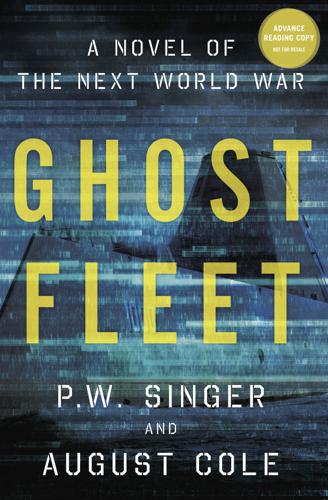
Ghost Fleet: A Novel of the Next World War
by
P. W. Singer
and
August Cole
Published 28 Jun 2015
A new map of global energy reserves appeared on the screen. Simmons stepped closer to the crew and continued. “The captain hit the key change to focus on. The scramble for new energy resources, heightening regional tensions here, here, and here, are sparking a series of border clashes around the world. The fact that the South China Sea oil fields were disappointments put new pressure on the Directorate. The hunt goes on,” said Jamie. “The oilers are the Directorate’s way of showing that their interest in this is now global.” A screen shot of a smoking mine in South Africa replaced the map. “That’s the Spiker mine, near South Africa’s border with Mozambique.
…
Even though they no longer need the foreign energy resources they once reached out and grasped, we must still endure their interference in our interests in Transjordan, Venezuela, Sudan, the Emirates, and the former Indonesia. “We most recently experienced this in our waters to the east, where they interfered in matters that are far from them, but close to us.” The map zoomed down to the South China Sea, and an image appeared of a U.S. Navy LCS warship escorting a Philippine coast guard vessel that had been damaged in the Red Line skirmishes right after the Dhahran bombing. “As you will recall, we debated then how to respond to their navy interposing itself into a regional matter, daring us to act.
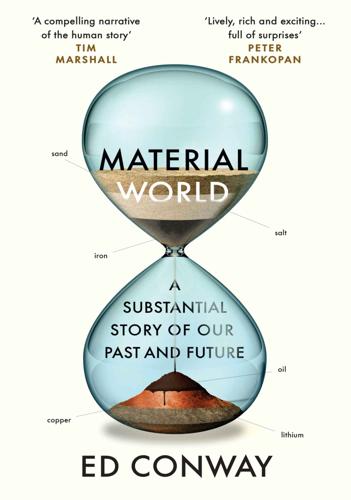
Material World: A Substantial Story of Our Past and Future
by
Ed Conway
Published 15 Jun 2023
The bigger those territorial waters are, the bigger the area a country can fish and drill and mine for offshore resources. Then there are the military consequences. Between 2006 and 2010 China reclaimed an average of 270 square miles a year on its coastline. Its dredging and land reclamation activities across islands in the South China Sea more recently are of such a scale that one US admiral referred to them as representing a ‘Great Wall of Sand’. The Spratly Islands, a disputed archipelago variously claimed by China, Taiwan, Malaysia and a handful of other Asian nations, were once just reefs inhabited mostly by birds. Today they have been expanded and covered with concrete runways and military bases.1 As the world confronts climate change and rising sea levels, the race to procure the right kind of sand to spray and compact into barriers and flood defences will accelerate.
…
Old sunken battleships are a particularly popular source. Some of the steel from wreckages of German ships scuttled at Scapa Flow in the First World War is believed to have been removed and forged into medical equipment. And there is a roaring trade in metal piracy from old warships, especially in the South China Sea.18 Australia’s HMAS Perth , sunk in Banten Bay off the northwest tip of the Indonesian island of Java in 1942, has had 60 per cent of its hull stolen by illegal scavengers. Something similar has happened to the wrecks of the HMS Repulse and HMS Prince of Wales , off the coast of Malaysia, and Japanese cargo ships near Borneo.

The River of Lost Footsteps
by
Thant Myint-U
Published 14 Apr 2006
He did this not simply because of a love of conquest. Shipping across the warm waters of the Indian Ocean was becoming commonplace as sailors slowly mastered the monsoon currents and as economic expansion in both the East and West made long-distance trade ever more profitable. From Ceylon and South India to the South China Sea the most direct route took ships first to the Tenasserim coast and then through the Straits of Malacca. For Aniruddha and his court, capturing these seaports and profiting from global business must have been an attractive proposition. He took Thaton, a principality along the coast, and then fought his way all the way down to the Malay Peninsula.
…
He changed into a longyi and then took the train unnoticed to Rangoon. He made contact with his old colleagues. Within weeks, in small batches and with the help of Suzuki’s secret agents in Rangoon, Aung San and his new select team traveled by sea to the Japanese-controlled island of Hainan, in the South China Sea. There were thirty in all—the Thirty Comrades—and they would soon be immortalized in nationalist mythology. Aung San at twenty-five was one of the three oldest. He took Teza meaning “Fire” as his nom de guerre. The other two took the names Setkya (A Magic Weapon) and Ne Win (the Bright Sun).
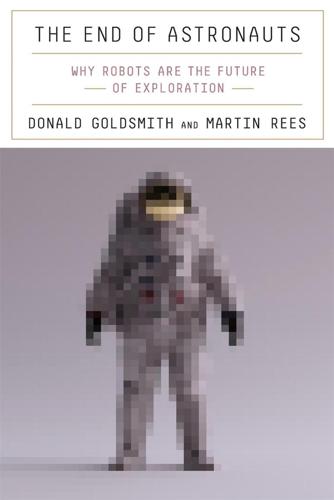
The End of Astronauts: Why Robots Are the Future of Exploration
by
Donald Goldsmith
and
Martin Rees
Published 18 Apr 2022
Pamela Melroy, who flew on three space shuttle missions, one as commander, and served on President Biden’s transition team, commented in 2021 that “trying to exclude [China] I think is a failing strategy … it’s very important that we engage.” On the other hand, Melroy also noted that China’s activities in the South China Sea created the apprehension that their efforts in space represent a “play for resources,” in essence echoing the remarks by China’s Ye Peijian in 2015.11 THE EUROPEAN SPACE AGENCY For decades, the now twenty-two-member European Space Agency has played key roles in exploring the solar system, from its workhouse Ariane rockets to its design and construction of crucial components of probes such as the Cassini-Huygens mission to Saturn.
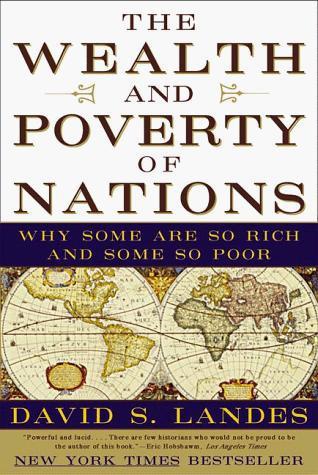
The Wealth and Poverty of Nations: Why Some Are So Rich and Some So Poor
by
David S. Landes
Published 14 Sep 1999
The Chinese had learned the secret of gunpowder before the Europeans, but the Europeans had better guns and greater firepower, especially at a distance. The Chinese had bigger ships, but the Europeans were better navigators. If we compare the two sides around 1400, the Chinese might have come out on top, at least in the Indian Ocean or South China Sea. (Even a strong animal has trouble defeating his weaker prey close to home.) But fifty years later, even in Asian waters, the Europeans would have run circles around the Chinese vessels. Of course, the Chinese might have learned by experience and eventually met the Europeans with comparable weapons and ships.
…
The Portuguese looked for choice places of strategic import, key points controlling key passages—Malindi and Mombasa on the African coast (jump-off points for voyages to India), Ormuz at the mouth of the Persian Gulf, Malacca (between Sumatra and Malaysia, on the strait connecting the Indian Ocean and Gulf of Ceylon to the South China Sea and the Spice Islands), Macao near the mouth of the Pearl River (entry to southeast China). They wanted Aden (access to the Red Sea), but could never take it. The most important base of all was Goa, pearl of the Malabar coast—entrepôt for pepper, port of entry for Arabian horses into South India (the climate made it impracticable to breed horses locally), defended by sea and, on the landward side, by a channel stocked with crocodiles.
…
* The first Portuguese to arrive in India were misled by native idolatry into thinking that Hinduism was an exotic form of Christianity. * They also explored the east coast of Asia as far north as Kamchatka, but there too decided to abstain. (Once you’ve seen an ice floe, you’ve seen ’cm all.) * The Yellow and South China seas have always been a notorious nursery of pirates. Witness the terrible fate of many of the so-called boat people fleeing Vietnam in recent years. * Columbus himself made a point of spreading the news. After his return to Spain in March 1493, his letter of discovery was printed thirteen times—once in Spanish, nine times in Latin, three times in Italian.
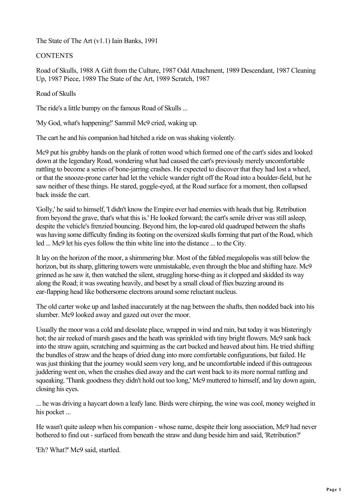
The State of the Art
by
Iain M. Banks
Published 15 Sep 1997
Li walked purposefully to the head of the middle table, tramped on an empty seat at its head and strode onto the table top, clumping down the brightly polished surface between the glittering place settings (the cutlery had been borrowed from a locked and forgotten storeroom in a palace on a lake in India; it hadn't been used for fifty years, and would be returned, cleaned, the next day ... as would the dinner service itself, borrowed for the night from the Sultan of Brunei - without his permission), past the starched white napkins (from the Titanic; they'd be cleaned too and put back on the floor of the Atlantic), in the midst of the glittering glassware (Edinburgh Crystal, removed for a few hours from packing cases stowed deep in Page 87 the hold of a freighter in the South China Sea, bound for Yokohama) and the candelabra (from a cache of loot lying under a lake near Kiev, sunk there by retreating Nazis judging from the sacks; also due to be replaced after their bizarre orbital excursion) until he stood in the centre of the middle table, maybe two metres from where I, Roghres and Ghemada sat.

Neutrino Hunters: The Thrilling Chase for a Ghostly Particle to Unlock the Secrets of the Universe
by
Ray Jayawardhana
Published 10 Dec 2013
The starring role of neutrinos in a great many sagas unfolding across physics, cosmology, and astronomy explains why scientists make considerable efforts to trap these minuscule particles. Over the past two decades, they have built ever more sophisticated neutrino experiments dotting the globe. From a deep nickel mine in Ontario to a freeway tunnel crossing a mountain in central Italy, and from a nuclear waste site in New Mexico to a bay on the South China Sea, neutrino hunters are chasing their quarry. The most impressive of their traps remains IceCube, the world’s biggest neutrino telescope, built at a cost of over $270 million. Its completion is a long-held dream come true for its visionary director, Francis Halzen. Growing up in Belgium, Halzen hoped to become a schoolteacher, but at university he got interested in physics, and he never looked back.
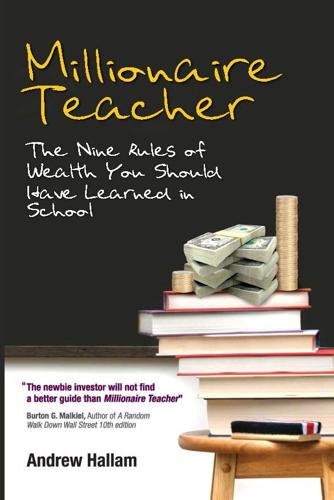
Millionaire Teacher: The Nine Rules of Wealth You Should Have Learned in School
by
Andrew Hallam
Published 1 Nov 2011
Walk up to an educated person and ask them to imagine that one of their forefathers bought $1 worth of gold in 1801. Then ask what they think it would be worth in 2011. Their eyes might widen at the thought of the great things they could buy today if they sold that gold. They might imagine buying a yacht or Gulfstream jet, or their own island in the South China Sea. Then break their bubble with the revelation in Figure 8.1. Selling that gold would give them enough money to fill the gas tank of a minivan. Figure 8.1 Gold vs. U.S. Stocks (1801–2011) One dollar invested in gold in 1801 would only be worth about $73 by 2011. How about $1 invested in the U.S. stock market?
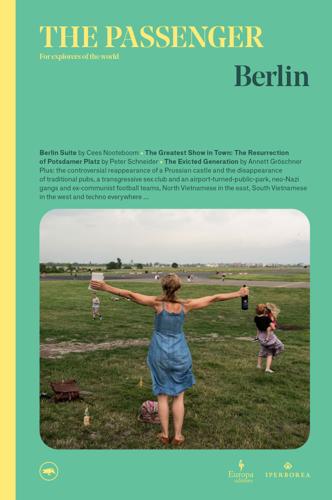
The Passenger: Berlin
by
The Passenger
Published 8 Jun 2021
Hearing about the numbers of people stranded in overcrowded boats as they attempted to flee, exposed to the elements and under threat of attack by pirates, one West German couple, Christel and Rupert Neudeck, founded a charitable organisation to assist them. Funded by donations, their ship Cap Anamur took teams of volunteer technicians, doctors and nurses to rescue some ten thousand Vietnamese in the South China Sea between 1979 and 1986. What better migrants then, to look after our loved ones: once again, Germany is actively recruiting Vietnamese to the country. To compensate for the chronic shortage in professional caregivers – a low-paid sector – for Germany’s large ageing population, a programme has been established to train nurses from Vietnam to provide geriatric care in Germany.
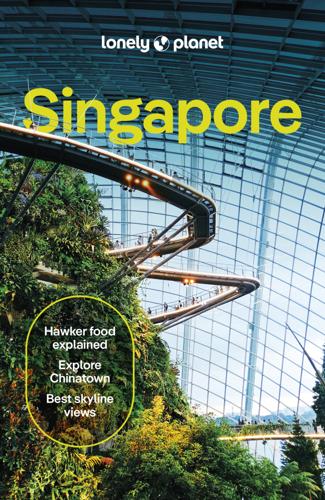
Lonely Planet Singapore
by
Lonely Planet
Published 14 May 2024
The 165m-high Singapore Flyer (singaporeflyer.com) was the ‘World’s Biggest Observation Wheel’ until Las Vegas’ High Roller stole its title in 2014. But the Flyer still serves up million-dollar views from its location on the Marina Promenade. On a clear day, the 30-minute ride will let you gawk at the Colonial District, the CBD and Marina Bay, and out to the South China Sea. The 28 air-conditioned capsules can hold 28 passengers each, so you’ll rarely have to wait in line. Or enjoy a four-course dinner in the privacy of your own capsule with the Sky Dining experience. Singapore Flyer | ESB Professional/shutterstock © BEST MARINA BAY SANDS ATTRACTIONS Rain Oculus A 22m-wide acrylic bowl collects the rainwater that fills the canal inside the mall in this eco-friendly installation.
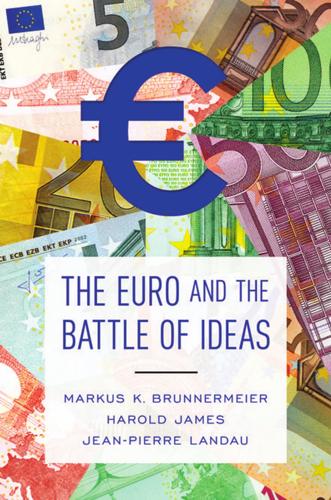
The Euro and the Battle of Ideas
by
Markus K. Brunnermeier
,
Harold James
and
Jean-Pierre Landau
Published 3 Aug 2016
Then the Chinese president Xi Jinping came on a state visit to London, which was crowned with a controversial deal to buy Chinese nuclear power plants. At the same time, Cameron followed a much softer line than the United States on issues such as China’s human rights record or its push into the South China Sea. Xi took up Osborne’s language and referred to his “visionary and strategic” hosts. Britain was looking for a new global role, in which new partners would step into the places of the economically and politically challenged older industrial countries.40 British isolation in Europe increased as a consequence of a referendum on EU membership promised by Cameron: the aim was fundamentally to defang the euroskeptic UKIP party, which threatened to perform very well in elections to the European Parliament scheduled for June 2014.
…
At the beginning of 2013, Luxembourg’s prime minister Jean-Claude Juncker was widely ridiculed for evoking the shades of 1913 and Europe’s last prewar year of peace as a warning of the dangers of the escalation of national animosities and rivalries within Europe. One year later, he looked prophetic. By 2014, as the security situation in the South China Sea deteriorated, Japanese prime minister Shinzo Abe cast China as the equivalent to Kaiser Wilhelm’s Germany; and the outbreak of fighting in Eastern Ukraine, as well as in Iraq and in Gaza, was a sharp reminder of the dangers of conflict escalation. The escalation of conflict in Syria in the summer of 2015 prompted a large flow of refugees into Europe and divided Europeans in a new east-west split, with Eastern Europeans worrying about the cultural impact of Muslim refugees and attempting to limit the inflow.
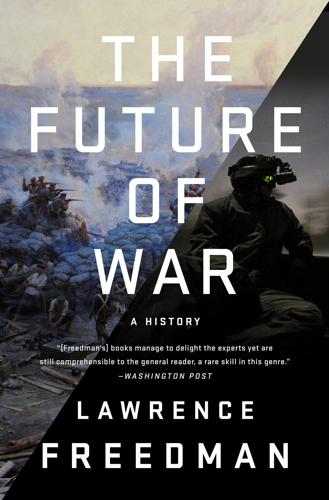
The Future of War
by
Lawrence Freedman
Published 9 Oct 2017
‘On the current trajectory’, Allison warned, ‘war between the US and China in the decades ahead is not just possible, but much more likely than currently recognized’. It was not, however, ‘inevitable’. 28 China would soon overtake the United States in economic, and then potentially, military power. Huntington was invoked to explain the clash of cultures between the two. There were also the real points of tension over Taiwan, the South China Sea, North Korea, and trade, from which Allison could generate plausible scenarios for conflict. Allison’s ‘big idea’ was to frame this moment as part of a recurring historical pattern, when predominant powers saw their positions threatened. This he called the ‘Thucydides Trap’, referring to the Greek historian’s famous explanation for the Peloponnesian War: ‘It was the rise of Athens and the fear that it instilled in Sparta that made war inevitable’.
…
A declining US unwillingness and/or slipping capacity to serve as a global security provider would be a key factor contributing to instability, particularly in Asia and the Middle East.38 The next document, published a few weeks after the 2016 election, was bleaker than those that had gone before. Since 2012 there had been Russian interventions in Ukraine and Syria and growing tensions over Chinese assertiveness in the South China Sea. It noted the mood of ‘anti-immigrant and xenophobic sentiment’ in the core Western democracies. Nationalism was being employed in countries where ‘leaders seek to consolidate political control by eliminating domestic political alternatives while painting international relations in existential terms’.
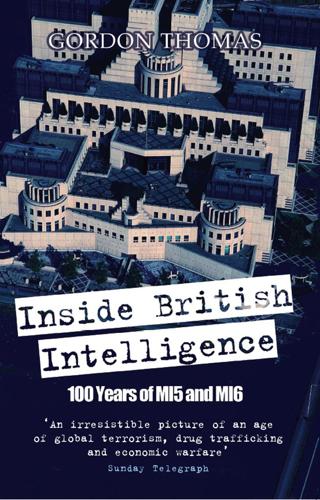
Inside British Intelligence
by
Gordon Thomas
The Trident—one of four in the fleet which is based in Faslane on Scotland’s Clyde—continued to track the freighter until it suddenly hurried back to its home port in late May 2008. A month later MI6 analysts had once more involved GCHQ in confirming that China had built a major naval base deep inside caverns on the South China Sea island of Hainan. Using high-resolution satellite images, the analysts decided the base could contain up to twenty of the latest C94 Jin-Class submarines, each equipped with antisatellite missiles and nuclear-tipped rockets. Knocking out the satellites would effectively leave Taiwan, Japan, and other countries around the Pacific Rim without a key warning system.
…
The Trident on patrol off Africa joined the U.S. Pacific Fleet to help establish a clear image of what was happening inside the secret base. Naval intelligence officers in London and Washington confirmed that the discovery of the base would present “a significant challenge to U.S. naval dominance and protection to countries ringing the South China Sea.” The base, a.k.a. Yulin, was sited at Sanya on the southern tip of Hainan Island. The island came to the attention of Western intelligence in April 2001, when a U.S. EP-3 spy plane trying to test the island’s electronic defenses was forced to land there by Chinese fighters, one of which crashed in the sea, killing the pilot.
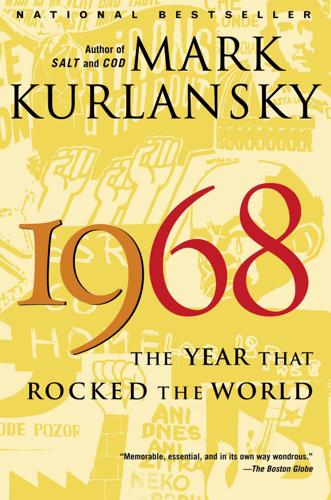
1968: The Year That Rocked the World
by
Mark Kurlansky
Published 30 Dec 2003
This did not approach the 33,000 dead in three years of fighting in Korea. But for the first time the total casualties, including wounded, was higher in Vietnam than in Korea. On March 16 the 23rd Infantry Division, the so-called Americal Division, was fighting in central Vietnam along the murky brown South China Sea in the village of Son My, where they slaughtered close to five hundred unarmed civilians that day. Much of the killing was in one hamlet called My Lai, but the action took place throughout the area. Elderly people, women, young boys and girls, and babies were systematically shot while some of the troops refused to participate.
…
On June 23 the Vietnam War edged out the American Revolution as the longest-running war in American history, having lasted 2,376 days since the first support troops were sent in 1961. On June 27 the Viet Cong, attacking nearby American and South Vietnamese forces, either accidentally or intentionally set fire to the nearby fishing village of Sontra along the South China Sea, killing eighty-eight civilians and wounding more than one hundred. In the United States on the same day, David Dellinger, head of the National Mobilization Committee to End the War in Vietnam, said that one hundred organizations were working together to organize a series of demonstrations urging an end to the war, all scheduled to take place in Chicago that summer during the Democratic National Convention.

Dawn of the Code War: America's Battle Against Russia, China, and the Rising Global Cyber Threat
by
John P. Carlin
and
Garrett M. Graff
Published 15 Oct 2018
“Mafiaboy isn’t the innocent child who pointed out that the Emperor has no clothes; he’s one of many guilty children who pointed it out by throwing things at the Emperor’s privates—a more serious offense.”90 That April, just a couple months into the new administration of George W. Bush and years before I was paying any attention to China—my nose was buried deep in the Institute of Global Prosperity tax fraud case at the time—a US Air Force EP-3 spy plane collided over the South China Sea with a Chinese fighter jet. The American plane, technically known as an ARIES II signals intelligence aircraft, had been on a routine six-hour mission from its base in Japan, monitoring electronic transmissions, when two Chinese fighters began harassing it about 70 miles away from the island of Hainan.
…
We believed that all of the strategies thus far hadn’t changed anything—and we couldn’t keep up the status quo. Lisa Monaco, at the White House, and I, at the Justice Department, thought that in a large, complicated, sprawling relationship such as the one between the United States and China—one that spanned trade, climate change, defense, human rights, North Korea, the South China Sea, allies and adversaries around the world, and so many more issues—there would always be one reason or another to claim that “now’s not the right time” to charge China with hacking US companies. We believed strongly just the opposite: we should carve out criminal activities from the larger relationship—that anytime an adversary violated a norm we wanted to defend, we should charge that case publicly.
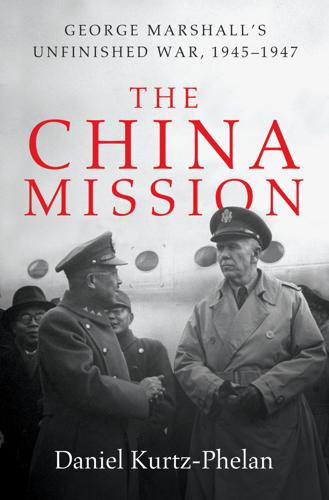
The China Mission: George Marshall's Unfinished War, 1945-1947
by
Daniel Kurtz-Phelan
Published 9 Apr 2018
Chiang had ordered attacks on remaining pockets of Communist strength. He had troops massing to take Yenan (despite promises to the contrary to Marshall, who no longer placed much stock in such promises anyway). He had even started extending his writ beyond Chinese shores, preparing to send decommissioned American Navy ships to seize islands in the South China Sea, based on a map of an expansive U-shaped claim to the contested waters drawn up by his officials. He was confident: total victory was within reach, and it was time for a last burst of action. “You can sometimes win a great victory by a very dashing action,” Marshall would say. “But often, or most frequently, the very dashing action exposes you to a very fatal result if it is not successful.”
…
Journal of American–East Asian Relations 4 (Fall 1995): 249−278. _______. Useful Adversaries: Grand Strategy, Domestic Mobilization, and Sino-American Conflict, 1947−1958. Princeton, NJ: Princeton University Press, 1996. Chung, Christopher P. C. “Drawing the U-Shaped Line: China’s Claim in the South China Sea, 1946–1974.” Modern China 42 (January 2016): 38–72. Coffman, Edward M. “The American 15th Infantry Regiment in China, 1912−1938: A Vignette in Social History.” Journal of Military History 58 (January 1994): 57−74. Cohen, Warren I. America’s Response to China: A History of Sino-American Relations. 4th edition.
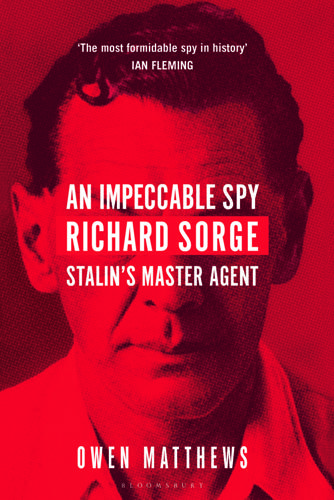
An Impeccable Spy: Richard Sorge, Stalin’s Master Agent
by
Owen Matthews
Published 21 Mar 2019
It was a risk to send them all together, explained Basov to Centre, but such was the urgency of their assignment that he did not want to risk waiting two or three weeks for the next transport. The Fourth Department team had an agreeable voyage. Rather too much so, as it turned out. At a boozy New Year’s Eve party somewhere in the South China Sea, Ulanovsky had got drunk with a group of friendly Britishers. ‘Kirschner’ had introduced himself as a representative of the Schelder-Consortium – and later, as the bonhomie flowed, confided to his new friends his plans to sell arms to the lucrative Chinese market. Unfortunately for Ulanovsky – and unbeknown to him, as they were better at holding their tongues when drunk than he – his Hogmanay companions were British officers from the Criminal Investigation Department of the Shanghai Municipal Police, returning to China after leave.
…
Furthermore, the attack should be ‘sudden’ and supported by Germany, who would ‘assist Japan indirectly by taking the offensive in the Atlantic during the period and by thus drawing British forces there’.43 The Germans’ simple realisation that Singapore was impregnable from the sea but almost undefended from the land was a brilliant piece of creative tactical thinking. However, despite the cleverness of the plan, Ott’s campaign to persuade the Japanese to attack Singapore ran into a snag almost from the outset – a complication of the Germans’ own making and the fruit of a fateful naval engagement in the South China Sea. At around 7 a.m. on 11 November 1940, the British Blue Funnel cargo liner SS Automedon was spotted by a German surface raider about 340 kilometres miles north-west of Sumatra. The Automedon was carrying crated aircraft, motor cars, spare parts, liquor, cigarettes, and food and was bound for Penang, Singapore, Hong Kong and Shanghai.
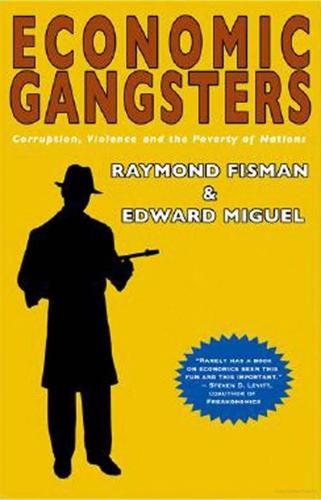
Economic Gangsters: Corruption, Violence, and the Poverty of Nations
by
Raymond Fisman
and
Edward Miguel
Published 14 Apr 2008
If the criminal mind, like Capone’s, really is very close to the self-serving ideal in our models, then economic analysis can be a useful tool in figuring out how to combat corruption and other forms of lawbreaking. There’s good reason to believe that the characters that populate this book—from the despotic warlords of subSaharan Africa to the smugglers of the South China Sea— do indeed obey the logical laws of economics. To understand why, it’s useful to think about what keeps you from cheating a little on your taxes, or slipping out of a restaurant without paying the bill. It’s in part a fear of the legal consequences if you get caught. But the punishment of tax cheats is rare and usually light, and you could stiff a waiter his tip without risking any legal penalties (although you may not be welcome back at that particular restaurant).
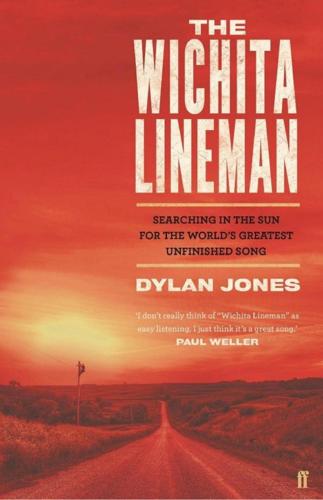
The Wichita Lineman: Searching in the Sun for the World's Greatest Unfinished Song
by
Dylan Jones
Published 29 Jul 2019
‘I’m not a writer, I’m really a “song doctor”,’ Campbell once said. ‘If I hear a good song that I like, I’ll change lines and chord progressions, and make it my own.’ Unsurprisingly, ‘Galveston’ became especially beloved by members of the armed services. According to Webb, the sailors aboard two US Navy warships stationed in the South China Sea, USS Galveston and USS Wichita, used to stage mock musical battles on the open seas using his songs. As it awaited refuelling, the Galveston would play ‘Galveston’ over its PA to the approaching Wichita, which responded by blasting ‘Wichita Lineman’. (Four decades later, R.E.M. would release a response song called ‘Houston’.)
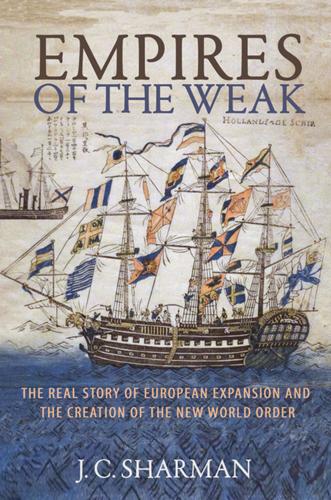
Empires of the Weak: The Real Story of European Expansion and the Creation of the New World Order
by
Jason Sharman
Published 5 Feb 2019
Furthermore, these empires were largely indifferent to maritime trade as a product of cultural inclination, and the fact that their fiscal base was very much land-based.115 The same applied even to archipelagic Japan.116 A Ceylonese king expressed a common sentiment in his judgment that “whilst the Christians would be Lords of the sea, he would be Lord of the land.”117 There was a similar complementarity of interest between the Mughals and Portuguese: “there developed a reciprocal relationship between two empires, one of the land and one of the sea, based on mutual advantage.”118 Both sides realized that the Mughals were by the more powerful member of the partnership.119 In explaining the position of the Estado da India, Albuquerque wrote to his king that “if Portugal should suffer a reverse at sea, your Indian possessions have not power to hold out a day longer than Kings of the land choose to suffer it.”120 Thus in general, “Europeans scrambled to find a place on the fringes of Asian orders.”121 While Portuguese naval prowess was certainly more than a myth, it ran up against significant checks and defeats: the defensive victories of the Ottomans and the Ming in the Red Sea and South China Sea, the ability of the Acehenese to break the Portuguese maritime spice monopoly, and from 1650 the Omanis beating the Portuguese at their own game of naval predation. Asian powers demonstrated considerable powers of naval power projection, with the Omani expeditions to the Swahili Coast, Ottoman missions to India, the earlier Ming Indian Ocean fleets of the 1400s, and the massive Japanese invasions of Korea in the 1590s all being on a much larger scale than any equivalent European efforts.
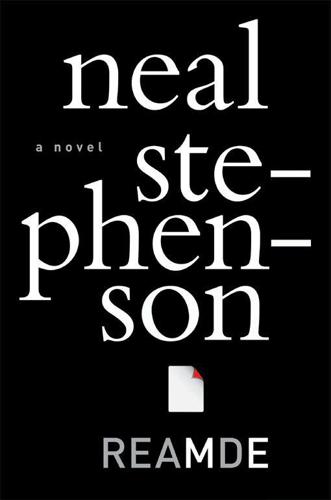
Reamde
by
Neal Stephenson
Published 19 Sep 2011
For backing up against the top of the slope was a jumbled skyline of low houses that, as they now realized, was simply the other side of the island’s one and only town. They had gone halfway around the island and were now looking at the town’s back, huddling against the incoming weather from the South China Sea. They pulled the boat up onto the beach, which was littered with garbage of a more seaborne nature, and left it among some half-dissolved boulders where it might be slightly less conspicuous. Csongor sat down nearby in the shade of a rock, shading himself under the parasol, and waited, hoping that Marlon would get back soon and that no one would come to ask him what business he had here.
…
As best he could make out from the charts and the GPS, they would reach the island group at something like four o’clock this afternoon. Assuming, that is, that they did not run out of fuel along the way. THE JET CONTINUED to follow what seemed to Zula like an unremarkable flight plan: slowly gaining altitude, following a straight course that took it away from the Chinese mainland and southward over the South China Sea. Some mountains poked their heads over the eastern horizon, and she guessed that these must be on Taiwan; but they rapidly fell away aft. She could not make up her mind whether to open the door or remain cloistered back here. A strong instinct told her simply to hole up in the dark and private cocoon of Ivanov’s cabin.
…
Zula had not tried turning it on yet, because she didn’t like TV, but now it occurred to her that she was being foolish. So she turned it on and was presented with a menu of offerings including an onboard DVD player, a selection of video games, and “MAP.” She chose the latter and was presented with a map of the South China Sea, apparently generated by exactly the same software that was used aboard commercial airliners, since the typefaces and the style of the presentation were familiar to anyone who had ever taken a long-haul airline flight. The place of origin had been programmed in as Xiamen, and the destination was Sanya Phoenix International Airport, which was at the southern tip of a huge elliptical island, comparable in size to Taiwan, that lay off China’s southern coast.
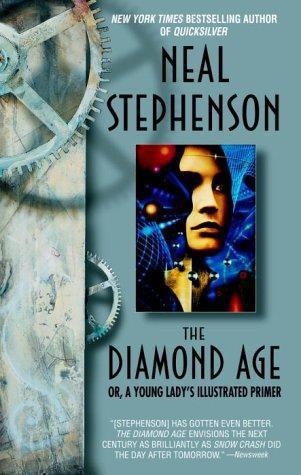
The Diamond Age
by
Neal Stephenson
Published 2 May 2000
Source Victoria's air intakes erupted from the summit of the Royal Ecological Conservatory like a spray of hundred-meter-long calla lilies. Below, the analogy was perfected by an inverted tree of rootlike plumbing that spread fractally through the diamondoid bedrock of New Chusan, terminating in the warm water of the South China Sea as numberless capillaries arranged in a belt around the smartcoral reef, several dozen nieters beneath the surface. One big huge pipe gulping up seawater would have done roughly the same thing, just as the lilies could have been replaced by one howling maw, birds and litter whacking into a bloody grid somewhere before they could gum up the works.
…
At nine o'clock they stepped into the passageway, locked the door, and followed the sound of the big band to Æther's grand ballroom, where the dancing was just getting underway. The floor of the ballroom was a slab of transpicuous diamond. The lights were low. They seemed to float above the glittering moonlit surface of the Pacific as they did the waltz, minuet, Lindy, and electric slide into the night. Sunrise found the three airships hovering over the South China Sea, no land visible. The ocean was relatively shallow here, but only Hackworth and a few other engineers knew that. The Hackworths had a passable view from their stateroom window, but John woke up early and staked out a place on the diamond floor of the ballroom, ordered an espresso and a Times from a waiter, and passed the time pleasantly while Gwen and Fiona got themselves ready for the day.
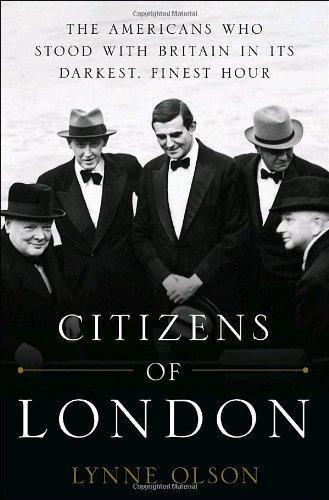
Citizens of London: The Americans Who Stood With Britain in Its Darkest, Finest Hour
by
Lynne Olson
Published 2 Feb 2010
Vanquished earlier by the Germans in France, Greece, and Crete, they now lost their empire in the Far East and the Pacific to the Japanese, suffering, as they did so, some of their most humiliating military defeats in history. On December 9, two of Britain’s biggest and best fighting ships—the battleship Prince of Wales, on which Churchill had traveled to his Placentia Bay meeting with Roosevelt, and the battle cruiser Repulse—were sunk by Japanese warplanes in the South China Sea, off the coast of Malaya. More than 650 men lost their lives. “In my whole experience,” Churchill said, “I do not remember any naval blow so heavy or so painful.” On Christmas Day, Hong Kong fell, followed by Singapore, Burma, and Malaya. “We seem to lose a new bit of the Empire almost every day,” Brooke wrote glumly to a friend, “and are faced with one nightmare situation after another.”
…
All these duties were a signal honor for the CBS broadcaster, but he was happy with none of them. The assignment he coveted was to cover the invasion. For the last four years, he had done little actual war reporting, staying behind in the backwater of London and envying his correspondents who were on the front lines, from Tunisia to the South China Sea. For a man who hated sitting behind a desk, such inaction was torture. The night before Charles Collingwood left for North Africa in 1942, he and Murrow went out drinking. As they stumbled back to Murrow’s apartment in the blackout, both more than a little drunk, Murrow kicked over a garbage can and shouted, “By God, I envy you for going off!
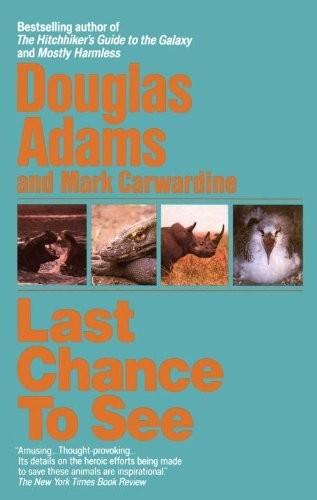
Last Chance to See
by
Douglas Adams
and
Mark Carwardine
Published 1 Jan 1990
“Right,” said Mark, when the three of us found some dinner that night in a tourist restaurant with plastic flowers and Muzak and paper umbrellas in the drinks, “here’s the picture. We have to get a goat.” “Here?” asked Gaynor. “No. In Labuan Bajo. Labuan Bajo is on the island of Flores and is the nearest port to Komodo. It’s a crossing of about twenty-two miles across some of the most treacherous seas in the East. This is where the South China Sea meets the Indian Ocean, and it’s riddled with crosscurrents, riptides, and whirlpools. It’s very dangerous and could take anything up to twenty hours.” “With a goat?” I asked. “A dead goat.” I toyed with my food. “It’s best,” continued Mark, “if the goat has been dead for about three days, so it’s got a good smell going.
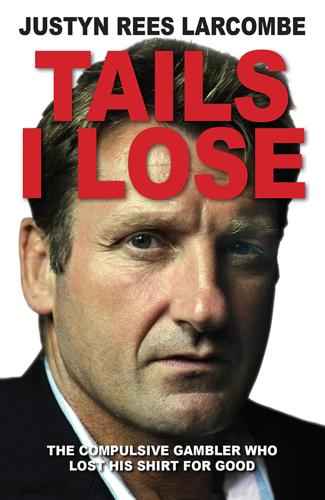
Tails I Lose: The Compulsive Gambler Who Lost His Shirt for Good
by
Justyn Rees
Published 25 Jun 2014
However, we improvised and showed the Chinese how battle-ready we were by conducting an unarmed combat demonstration and abseiling out of a helicopter. Then, just as we were about to take up our station just out of sight of the land, the worst happened. Our engines suffered complete mechanical failure, leaving us bobbing up and down on the South China Sea. Had we been needed, we would have been completely unable to respond. We had an immediate meeting on the officers’ deck and decided not to tell the men. There might have been a mutiny! Our engagement must have been quite hard on poor Emma. Having returned from Hong Kong, I spent the next six months back at Sandhurst attending the Junior Division of Staff College.
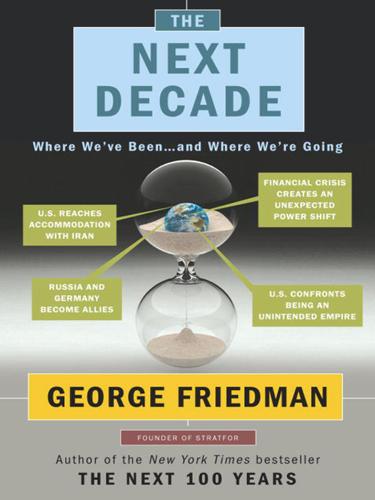
The Next Decade: Where We've Been . . . And Where We're Going
by
George Friedman
Published 25 Jan 2011
Brazil’s Trade Relations The only challenge that Brazil could pose to the United States would be if its economic expansion continued enough for it to develop sufficient air and naval power to dominate the Atlantic between its coast and West Africa, a region not heavily patrolled by the United States, unlike the Indian Ocean or South China Sea. This would not happen in the next decade, but as Brazilian wage rates rise, the geographical factors are such that Brazilian investments in Africa might carry lower transportation costs than investments in other parts of Latin America. Thus there would be advantages for Brazil in developing relations with sub-Saharan countries, particularly Angola, which, like Brazil, is Portuguese-speaking.
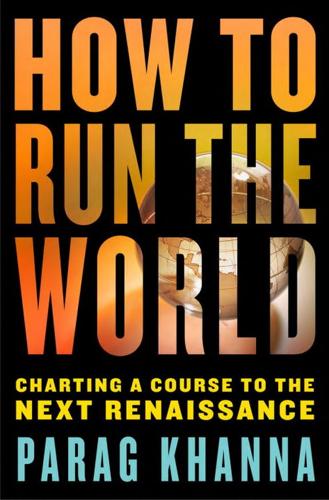
How to Run the World: Charting a Course to the Next Renaissance
by
Parag Khanna
Published 11 Jan 2011
With the rise of Asian economies, most of the world’s container and tanker traffic crisscrosses the Indian Ocean from the Mideast to the Pacific Rim, passing through the narrow choke points of the Bab el-Mandeb Strait connecting the Red Sea to the Gulf of Aden, the Strait of Hormuz connecting the Persian Gulf to the Gulf of Oman, or the Strait of Malacca, which connects the Indian Ocean to the South China Sea. Land and sea are not unconnected spaces—they give way to and shape each other. From Somalia to Aceh in Indonesia, whenever instability has risen on land, so, too, has piracy at sea. Most of the world is covered by oceans that are mostly controlled by no one. The eighteenth century was not only a pivotal period of global capitalist expansion and colonialism, but also an age of piracy from the English Channel to the Straits of Malacca.

Immortality, Inc.
by
Chip Walter
Published 7 Jan 2020
Yet three years later, he found himself standing on China Beach in Vietnam, naked as a mole rat, contemplating suicide. * * * — DEATH BY SWIMMING was the plan. Venter had just departed the corrugated, festering Quonset hut where he had been coexisting with his fellow recruits and corpsmen at the Da Nang naval hospital, and walked down to the beach. There he stripped naked and gazed at the South China Sea. Swimming seemed an easy, sensible way to go. The water was right there, and if he was good at one thing, it was swimming. Why not go out doing something he enjoyed, and then, when the exhaustion set in, slip into the black water’s deep embrace? Venter had been contemplating suicide for a while.
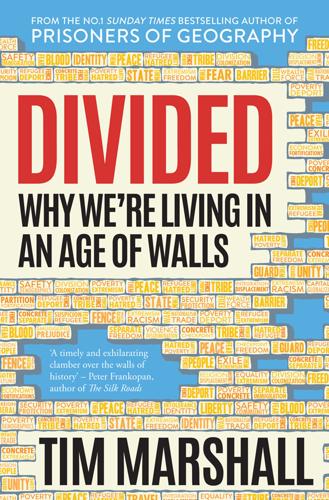
Divided: Why We're Living in an Age of Walls
by
Tim Marshall
Published 8 Mar 2018
is ‘Whatever time Beijing says it is.’ This central rule has long been the case, but the twenty-first-century emperor has a luxury few of his precursors enjoyed. He can survey his empire from the air – not just the area encompassed by the Himalayas, to the Sea of Japan and the Gobi Desert, down to the South China Sea, but now the economic empire spanning the globe. Xi is good at quietly projecting his power. He travels more than many of his predecessors. He flies to the world’s capitals, confident in the united economic power of the new China, but en route to the airport he will be reminded of how careful Chinese leaders must always be to ensure that the centre holds.
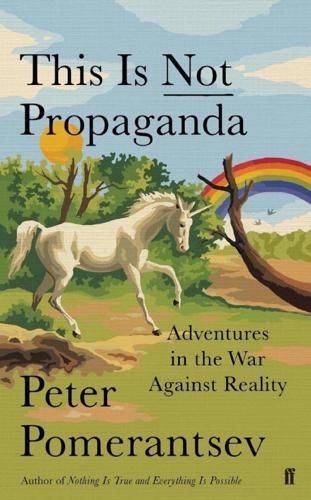
This Is Not Propaganda: Adventures in the War Against Reality
by
Peter Pomerantsev
Published 29 Jul 2019
There’s the vast international broadcaster, CGTN; the social media trolls who taunt politicians in neighbouring Taiwan; the pressure exerted on foreign academics who investigate the country.3 A 2013 Pentagon paper reviewing China’s doctrine of ‘Three Warfares’ (economic, media and legal) concluded that it showed ‘twenty-first-century warfare guided by a new and vital dimension: namely the belief that whose story wins may be more important than whose army wins’.4 This had been exhibited in the South China Sea, where China had annexed vast maritime spaces by first building artificial islands and then claiming the surrounding waters as its own, all without firing a shot. But what, I thought as I moved through the immaculate, ambitious airport, created as a symbol of China’s emerging strength for the 2008 Beijing Olympics, were all these techniques there to buttress?
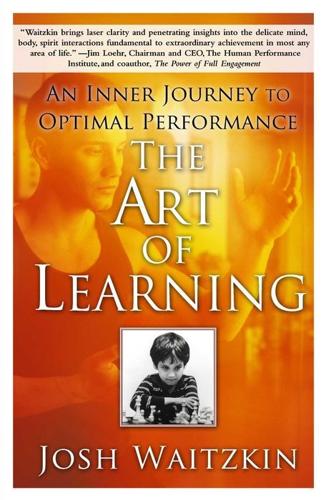
Art of Learning
by
Josh Waitzkin
Published 7 May 2007
When a martial artist is described as having a “deep root” the parallel is to a tree—it feels as if his or her body is extended into the earth. CHAPTER 20 TAIWAN 2004 Chung Hwa Cup Tai Chi Chuan World Championships Taipei, December 2–5, 2004 Clouds moved fast, dark and grey, the rain coming in gusts and then tapering off as Typhoon Nanmadol surged over the South China Sea. I’ve always loved storms; now these fierce winds made me electric. It was Thursday evening, forty hours from battle, and I stood at the peak of Elephant Mountain looking down on an Old Taoist Temple, the city of Taipei spread out below. The smell of incense wafted up from the temple shrine, smoke swirling in the building winds.
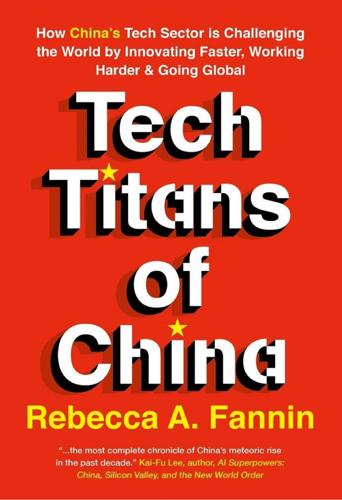
Tech Titans of China: How China's Tech Sector Is Challenging the World by Innovating Faster, Working Harder, and Going Global
by
Rebecca Fannin
Published 2 Sep 2019
A host of issues could put the brakes on what fuels Chinese startups: curbs on China venture capital in US tech startups and a higher bar for Chinese companies to go public in the United States and use that capital to scale up in China. Geopolitical issues loom large. Nationalization or breakups of China’s tech titans. Military conflicts over pending trouble spots in the South China Sea and China’s claim to Taiwan. Poorly implemented state-backed reforms on a local level. Growing criticism over China-styled colonialism, such as using loans to gain control over strategic locations, notably the Sri Lanka port and surrounding land. It’s conceivable that China could roll back the capitalistic reforms ushered in by Chinese leader Deng Xiaoping in the late 1970s to return to Chairman Mao’s drab communism of several decades ago.
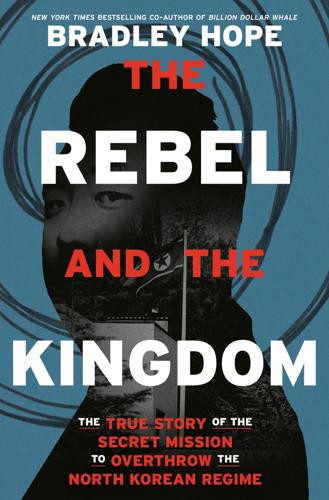
The Rebel and the Kingdom: The True Story of the Secret Mission to Overthrow the North Korean Regime
by
Bradley Hope
Published 1 Nov 2022
That brutality was about to be reinforced on the world stage in shocking form. 10 PRUNING THE FAMILY TREE Death is the solution to all problems. No man—no problem. —JOSEPH STALIN LANGKAWI, MALAYSIA FEBRUARY 2017 In early February, Kim Jong-nam packed his bags and boarded a plane in Macau for the almost four-hour flight over the South China Sea to Kuala Lumpur. Since his exile from North Korea, Kim Jong-nam, once considered the front-runner to succeed his father, Kim Jong-il, as North Korea’s leader, had been living in Macau, China’s over-the-top answer to Las Vegas. In Macau, he had adopted a lifestyle that suited his dissolute surroundings.
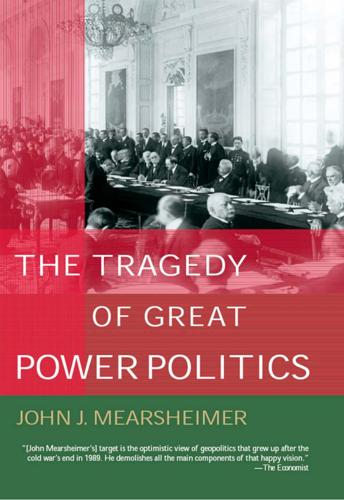
The Tragedy of Great Power Politics
by
John J. Mearsheimer
Published 1 Jan 2001
It shares borders, a number of which are still disputed, with thirteen different states. China fought over territory with India in 1962, the Soviet Union in 1969, and Vietnam in 1979. All of these borders are still contested. China also claims ownership of Taiwan, the Senkaku/Diaoyutai Islands, and various island groups in the South China Sea, many of which it does not now control.38 Furthermore, China tends to view both Japan and the United States as potential enemies. Chinese leaders maintain a deep-seated fear that Japan will become militaristic again, like it was before 1945. They also worry that the United States is bent on preventing China from becoming the dominant great power in Northeast Asia.
…
Also see Alastair Iain Johnston, Cultural Realism: Strategic Culture and Grand Strategy in Chinese History (Princeton, NJ: Princeton University Press, 1995); and Andrew J. Nathan and Robert S. Ross, The Great Wall and the Empty Fortress: China’s Search for Security (New York: Norton, 1997). 38. Mark J. Valencia, China and the South China Sea Disputes, Adelphi Paper No. 298 (London: International Institute for Strategic Studies, October 1995). 39. Yu Bin, “Containment by Stealth: Chinese Views of and Policies toward America’s Alliances with Japan and Korea after the Cold War,” discussion paper (Stanford, CA: Asia/Pacific Research Center, Stanford University, September 1999), p. 5.
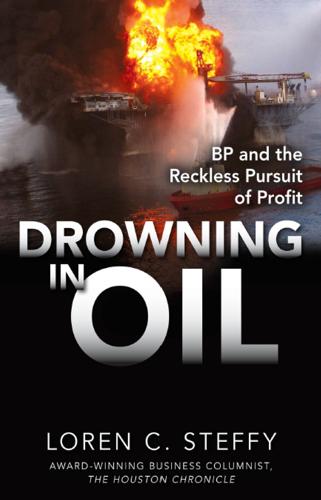
Drowning in Oil: BP & the Reckless Pursuit of Profit
by
Loren C. Steffy
Published 5 Nov 2010
He looked more comfortable in opencollared shirts than in suits, which seemed to hang off him as if they were a little too big. He had joined Amoco in 1979 and moved to BP after it acquired Amoco in 1998. Like Hayward and Browne before him, Dudley had been shuffled around the world by BP, with postings in the United States, Great Britain, the South China Sea, and Moscow. He became one of Browne’s trusted inner circle, a turtle. After two years in Russia, Dudley technically left BP to become chief executive of TNK-BP, a joint venture between the company and a Russian concern controlled by a group of wealthy oligarchs. John Browne had been angling for a way to push BP into Russia since soon after the fall of the Berlin Wall.
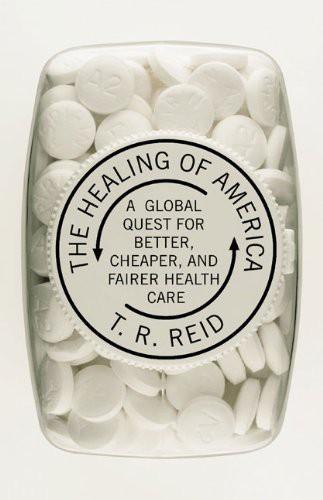
The Healing of America: A Global Quest for Better, Cheaper, and Fairer Health Care
by
T. R. Reid
Published 15 Aug 2009
That’s why seriously rich people all over the world tend to board their private jets and race to some famous American clinic when they face a medical emergency. That’s why, when I visited a sparkling new state-of-the-art hospital in Singapore, the sign outside said the facility was run by Duke University Medical School. The government of Singapore—an island nation floating off the Malay Peninsula in the South China Sea, about as far from North Carolina as you can get—decided that the best possible place to find medical expertise was in Durham, North Carolina, USA. But the sad fact is, we’ve squandered this treasure. We’ve wasted our shining medical assets because of a health care payment system—or, more precisely, a crazy quilt of several overlapping and often conflicting systems—that prevents millions from receiving the treatment they need and that undermines the quality of care for millions more.
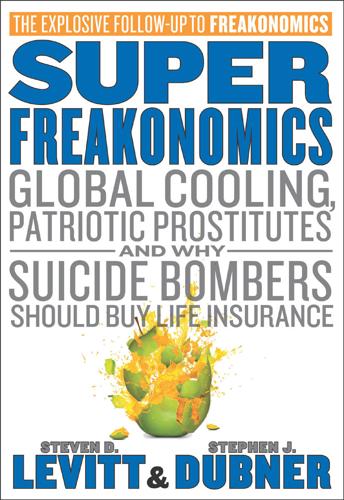
SuperFreakonomics
by
Steven D. Levitt
and
Stephen J. Dubner
Published 19 Oct 2009
The process is low-impact, non-polluting, and slow: a molecule of warm surface water would take about three hours to be flushed out the bottom of the plastic cylinder. Now imagine deploying these floats en masse in the patches of ocean where hurricanes grow. Nathan envisions “a picket fence” of them between Cuba and the Yucatán and another skein off the southeastern seaboard of the United States. They’d also be valuable in the South China Sea and in the Coral Sea off the coast of Australia. How many would be needed? Depending on their size, a few thousand floats might be able to stop hurricanes in the Caribbean and the Gulf of Mexico. A simple throwaway version of this contraption could be built for roughly $100 apiece, although the larger costs would come in towing and anchoring the floats.
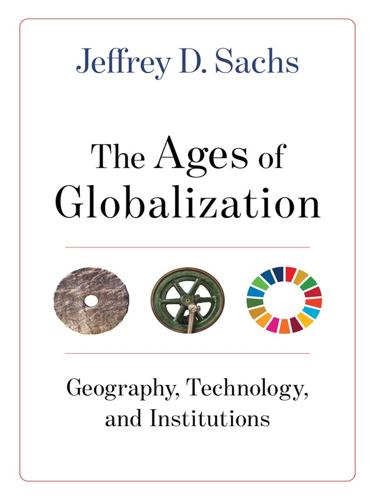
The Ages of Globalization
by
Jeffrey D. Sachs
Published 2 Jun 2020
The famed seven voyages of Admiral Zheng He during the early Ming Dynasty, in the first three decades of the fifteenth century, are justly remembered hundreds of years later as remarkable naval accomplishments of China.1 These voyages of enormous fleets sailed from China to Southeast Asia, through the South China Sea and the Malacca Pass, around Java and Sumatra, into the Indian Ocean, and all the way to East Africa, Arabia, the coasts of India, and back to China. The route of the fourth voyage, 1413–15, is shown in figure 6.1. 6.1 Zheng He’s Fourth Voyage, 1413–1415 These great voyages were a triumph of naval technology, a remarkable demonstration of China’s grandeur, and an act of Chinese statecraft.
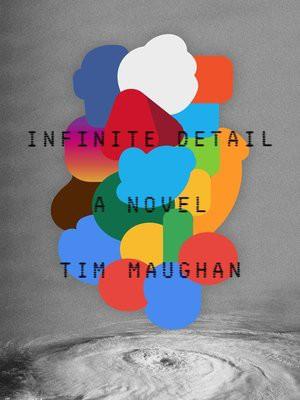
Infinite Detail
by
Tim Maughan
Published 1 Apr 2019
It looks to Rush like an act of victory and defiance; like news footage of freshly liberated citizens climbing to the top of statues of their now-fallen dictators, to deface their heads and celebrate their liberty in that brief moment of joy before worrying what will happen next. “Haha! It’s Chris! The crazy fuck!” Simon yells and waves excitedly back. “Chris! CHRIS!” Rush shakes his head, but gets why they’re so excited. Despite spending the last couple of weeks skirting around the mega-ports of the South China Sea, they’d never managed to come into harbor anywhere. You can’t just dock a huge fucking container ship like the Dymaxion by the shore and walk off—and perhaps unsurprisingly most of the suitable berths at the ports were filled with abandoned ships. Apart from the Zodiac crew, who went ahead and scouted out the ports in their little inflatable speedboat, nobody from the Dymaxion had set foot on Chinese soil as yet on this trip.
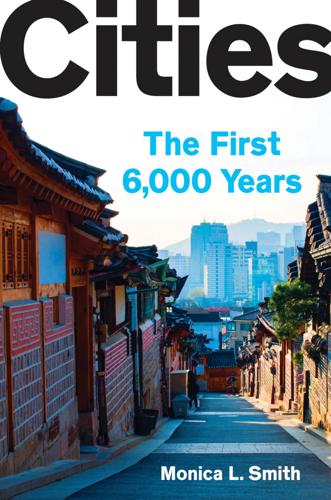
Cities: The First 6,000 Years
by
Monica L. Smith
Published 31 Mar 2019
,” in Land of Sunshine: An Environmental History of Metropolitan Los Angeles, eds. William Deverell and Greg Hise (Pittsburgh: University of Pittsburgh Press, 2005), 115–34n14. And it certainly didn’t diminish: Gungwu Wang, “The Nanhai Trade: A Study of the Early History of Chinese Trade in the South China Sea,” Journal of the Malayan Branch of the Royal Asiatic Society 31, no. 2 (1958): 3–135; John F. Robertson, “The Social and Economic Organization of Ancient Mesopotamian Temples,” in Sasson, Civilizations of the Ancient Near East, 446. The Spanish chroniclers who arrived: Bruce H. Dahlin et al., “In Search of an Ancient Maya Market,” Latin American Antiquity 18, no. 4 (2007): 363–84.

New Dark Age: Technology and the End of the Future
by
James Bridle
Published 18 Jun 2018
Gray zone warfare is characterised by unconventional tactics, including cyberattacks, propaganda and political warfare, economic coercion and sabotage, and sponsorship of armed proxy fighters, all shrouded in a cloud of misinformation and deception.43 Russia’s use of ‘little green men’ in the invasion of eastern Ukraine and Crimea, China’s expansion in the South China Sea, and Iran and Saudi Arabia’s proxy war in Syria all point to an evolution of warfare defined by ambiguity and uncertainty. Nobody is clear as to who is fighting who; everything is deniable. Just as the US military is one of the most advanced planners for the realities of climate change, so the military planners at West Point and the General Staff Academy are at the forefront of recognising the cloudy realities of the new dark age.
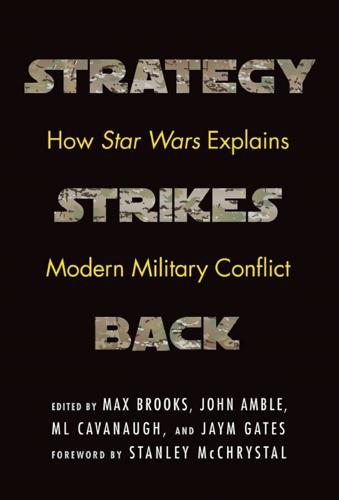
Strategy Strikes Back: How Star Wars Explains Modern Military Conflict
by
Max Brooks
,
John Amble
,
M. L. Cavanaugh
and
Jaym Gates
Published 14 May 2018
Even if that is the analogy the filmmakers want us to draw, it is not fully paralleled by the Rebels at Endor. The U.S. pilots at Midway were all naval aviators—not hybrid hotshots like General Lando Calrissian, who appeared at the last moment to lead the attack. A much closer analogy would be what the Chinese appear to be doing in the South China Sea, where fishing vessels are crewed with un-uniformed members of the maritime militia and the coast guard may be coordinating or supporting the militia’s actions (with even higher levels possibly involved in the planning process as well).3 Suffice it to say, we might cheer for the on-screen General Calrissian, but hybrid warriors like him are one of the chief concerns for real-world naval officers today, who have to consider whether, for example, fishing ships are simple merchants or maritime militias.
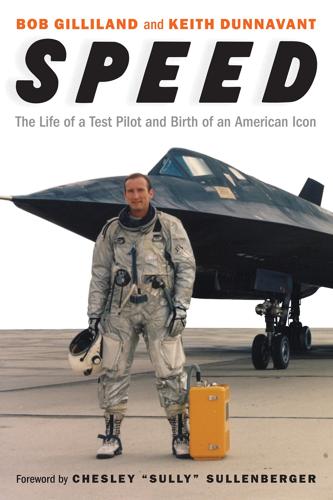
Speed
by
Bob Gilliland
and
Keith Dunnavant
Oxcart would not be declassified until the 1990s, leaving the short list of pilots who tested the A-12 (including Walter Ray, who died during a crash over Utah in 1967) and the six men who flew operational missions in Black Shield (including Jack Weeks, who died when his plane disappeared over the South China Sea in 1968, as well as Frank Murray, Jack Layton, Ken Collins, Dennis Sullivan, and Mele Vojvodich) as uncelebrated as the various other covert operatives of the Cold War. President Johnson became the second of seven presidents to live up to Eisenhower’s private commitment not to overfly the Soviet Union, but the Blackbirds played a large role in the Vietnam War.
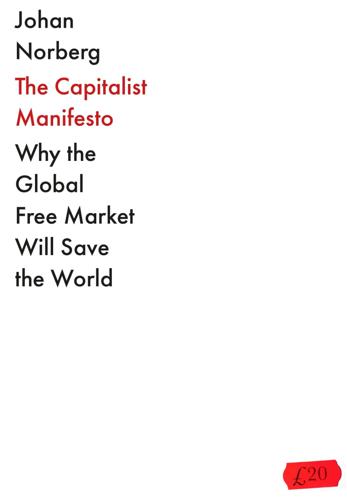
The Capitalist Manifesto
by
Johan Norberg
Published 14 Jun 2023
Since becoming General Secretary in 2012, Xi Jinping has concentrated power on himself and recreated an almost Maoist political model. Hong Kong’s freedoms have been shattered and colossal camps in Xinjiang for forced labour and brainwashing have been erected. China is testing its neighbours’ borders in the South China Sea daily and is constantly threatening Taiwan with a military invasion. Where previously there was room for differing views as long as the party’s right to govern was not questioned, censorship has now become more aggressive and all-encompassing. Dissidents are even kidnapped on foreign soil. The Chinese will no longer ‘seek truth from facts’, as Deng Xiaoping urged them to.
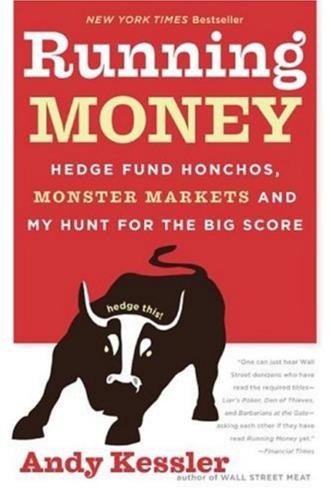
Running Money
by
Andy Kessler
Published 4 Jun 2007
If Sony wants to sell you a big honker, 60-inch diagonal comb filter DLP or LCOS cable-ready TV for practically no profit, should we stop them? We should instead encourage them. They go to the dark edges of western China, seeking out cheap labor to grow the tubes or assemble the flat panels and then move them to assembly plants all around the South China Sea. Why? Because it keeps Sony employees fully employed. Now you know why they bought a studio in Hollywood: anything to add value. But if you and me buying that Sony or Sharp TV means Japanese children can buy Kentucky Fried Chicken and go to Jim Carrey’s next movie, and upgrade Windows 98 to Windows ME to Windows XP, so be it.

The Age of Stagnation: Why Perpetual Growth Is Unattainable and the Global Economy Is in Peril
by
Satyajit Das
Published 9 Feb 2016
Feted as an economic superpower, China increasingly seeks commensurate political influence. Relying on the nine-dash line, a U-shaped series of markings on a map published in the then Republic of China on December 1, 1947, it is in dispute with the Philippines, Brunei, Malaysia, Taiwan, and Vietnam over claims to large parts of the South China Sea and its mineral resources, including oil. There are also territorial disputes between China, South Korea, and Japan over parts of the Yellow Sea and the Sea of Japan. Japan's extensive economic investments and interests in China, including its export markets, have been damaged by the disputes.

Insane Mode: How Elon Musk's Tesla Sparked an Electric Revolution to End the Age of Oil
by
Hamish McKenzie
Published 30 Sep 2017
The oil industry may be the most lucrative the world has ever known, and the idea that still-scarce electric cars pose a serious imminent threat to it might seem fanciful. The industry is worth trillions of dollars a year. The production, supply, and distribution of oil is the subject and cause of much geopolitical instability, and it has been central to conflicts on every continent, from the Middle East to Sudan and the South China Sea. While it continues to be fought over, and while the burning of oil continues to warm the Earth’s atmosphere in an unsustainable way, it’s also important to acknowledge that oil, like salt, has been essential to the vitality of modern society. The United States of America as we know it would scarcely hold together without an abundant supply of gasoline to fuel the cars and trucks that connect its highly dispersed towns, cities, and agricultural areas.
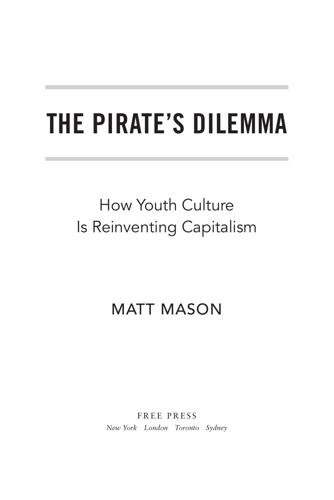
The Pirate's Dilemma: How Youth Culture Is Reinventing Capitalism
by
Matt Mason
If we twist the dial in the other direction, we also would hear pirates working for peace, such as activists who underpinned the draft resistance movement taking to the airwaves in 1970s Australia. We might pick up a new breed of offshore pirates opposed to the Chinese government's oppressive regime, operating throughout the 1990s from the South China Sea and the Formosa Strait, while another fleet was busy broadcasting peace to the Middle East off the coast of Israel. If we were to tune out far enough, we would hear the collective buzz of more than two thousand pirate stations that have been operating in the shantytowns of Argentina since 1986, and countless others transmitting from Brazil, Haiti, Mexico City, El Salvador, and across South America.
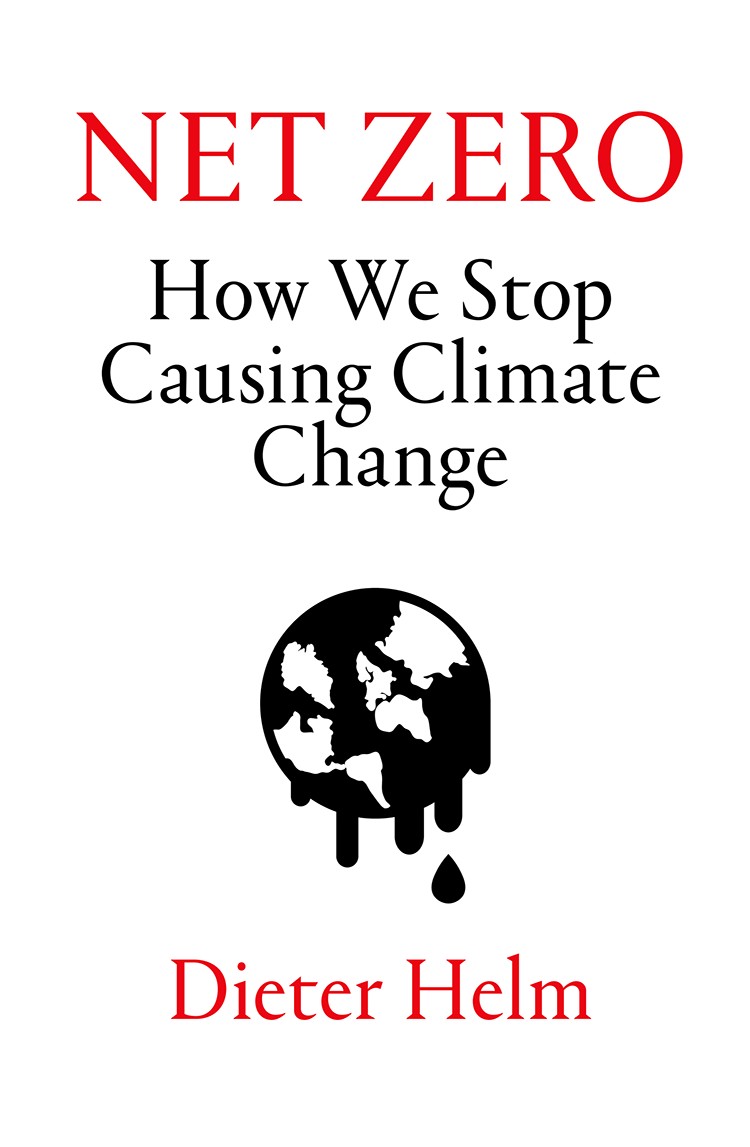
Net Zero: How We Stop Causing Climate Change
by
Dieter Helm
Published 2 Sep 2020
Those who thought that politics would treat foreigners as of equal moral status to residents, and that religious strife and conflict would become a thing of the past, should explain why religion and ethnic origins remain so potent in Europe and the US, and especially explain the heightened tensions between Saudi Arabia’s Sunnis and Iran’s Shias and their allies. The old threat of serious global conflicts has not gone away. The US and China may well come to blows over Taiwan and the South China Sea, and Ukraine looks like a powder keg placed on the fissure between Russia and the EU. Climate change will impact on these nationalistic concerns, but it will not make them go away, and they will not be put aside for the greater good of tackling global warming. Nationalism is the context within which global warming has to be tackled.
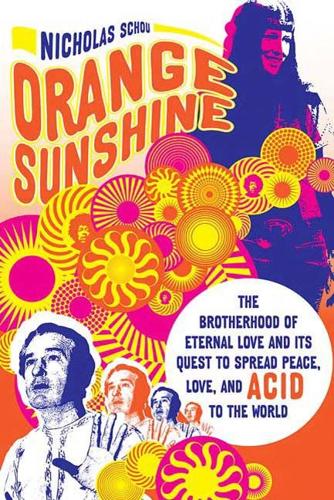
Orange Sunshine: The Brotherhood of Eternal Love and Its Quest to Spread Peace, Love, and Acid to the World
by
Nicholas Schou
Published 16 Mar 2010
The following morning, Ackerly volunteered for the air force, then the army and marines, but was rejected each time because of his criminal record. Just when he thought his only option was more jail time, the navy accepted him. “I got busted for getting in a fight and fucking a girl on the beach. They said, ‘Fucking and fighting? You came to the right place, buddy.’” After joining the navy, Ackerly sailed to the South China Sea, where he served as a navigator on the Mauna Koa, an ammunition ship. For three years, he stockpiled ammunition in the Philippines and after the war started in Vietnam, he sailed to the Tonkin Gulf. Ackerly never saw any actual combat, other than the random fight with his shipmates and the time he crossed paths with a group of marines in Cam Ranh Bay, who jumped him and left him bloodied, with two black eyes.

China: A History
by
John Keay
Published 5 Oct 2009
These two provinces therefore lie respectively north and south of the great lakes and so, roughly, north and south of the Yangzi itself. South again, and completing this spine of ‘core’ China come Guangdong and Guangxi. Guang means something like ‘enlarged (southern) territory’. These two once ‘enlarged’ provinces in the extreme south thus lie respectively east (-dong) and west (-xi) of one another. Beyond them in the South China Sea, the island province of Hainan is the country’s southernmost extremity. Returning north towards the Shandong peninsula by way of the coast, the provinces of Fujian, Zhejiang and Jiangsu plus adjacent Jiangxi and Anhui are smaller, and their names are not so obviously derived from compass bearings.
…
It represents in miniature the layout of his palace, with public rooms to the fore (banqueting hall in the east wing, treasure store in the west wing) and private apartments to the rear (including a chamber for those servants who accompanied him in death and another for concubines similarly ‘honoured’). Both Han and native Yue productions figure among the furnishings, along with African ivory, frankincense from southern Arabia and a circular silver bowl with lid that could be Persian. Then as now, the wealth of Panyu/Guangzhou stemmed from its Pearl River frontage on the South China Sea. Backed by the Nanling mountains, Nanyue seemed to have eluded Han ambitions and to be enjoying the perks of its balmy climate spiced with whatever foreign fancies came its way. The Yue people are thought to have been Malayo-Polynesian rather than Mongoloid like the Xia Chinese. In northern China they were invariably deplored for their alien customs (e.g. banana leaves for plates) as much as for their steamy hillsides and malarial swamps.

Memoirs of an Addicted Brain: A Neuroscientist Examines His Former Life on Drugs
by
Marc Lewis Phd
Published 5 Mar 2013
I never knew quite what. The following day was our last. We were finally approaching the backbone of the Malay Peninsula, a ridge that ran continuously from the top to the bottom of the country, with smaller ridges radiating out on both sides, tumbling down toward the Malacca Strait in the west and the South China Sea in the east. Here at the summit were the Cameron Highlands, a paradise of cool breezes blowing across hilltops at least a thousand metres above sea level. The hills were covered with tea—miles and miles of minty green shrubs—interspersed by occasional clusters of giant trees, each with its retinue of primary growth.
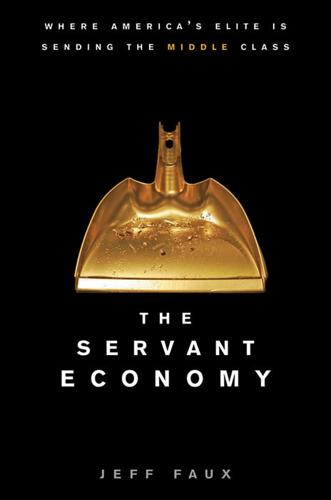
Servant Economy: Where America's Elite Is Sending the Middle Class
by
Jeff Faux
Published 16 May 2012
In 1996, when the Chinese tried to influence a Taiwanese election with threatening ballistic missile exercises, President Clinton sent two aircraft carriers to Taiwan, and the Chinese were silenced. After that experience, the Chinese government committed itself to the buildup of a world-class navy, adding new surface warships, nuclear launch submarines, and long-range coastal ballistic missile installations to cover the South China Sea. With no aircraft carriers the Chinese began reconditioning one that they bought from the Russians and started to build one of their own from scratch. In 2011, China launched its eighth navigation satellite and was planning twenty more. The Chinese military budget is still a small fraction of U.S. military spending.
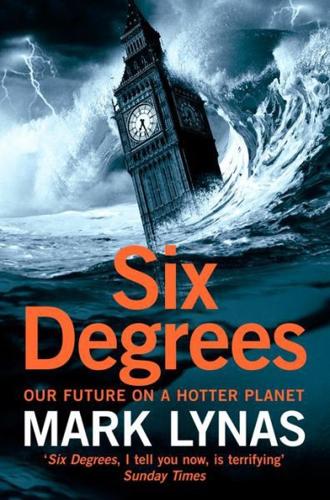
Six Degrees: Our Future on a Hotter Planet
by
Mark Lynas
Published 1 Apr 2008
, Climatic Change, 68,269-79 p. 66 tropical coral reefs: Webster, J., et al., 2004: ‘Drowning of the-150 m reef off Hawaii: A casualty of global meltwate pulse 1A?’, Geology, 32, 3, 249-52 p. 66 submerging: Kienast, M., et al., 2003: ‘Synchroneity of meltwater pulse 1A and the Bolling warming: New evidence from the South China Sea’, Geology, 31,1, 67-70 p. 66 ‘explosively rapid’: Hansen, J., 2005: A slippery slope: H( much global warming constitutes “dangerous anthropogei interference”?', Climatic Change, 68,269-79 p. 66 2.7°C: Gregory, J., Huybrechts, P., and Raper, S., 2004: ‘Threatened loss of the Greenland ice sheet’, Nature, 428, 616 p. 66 2.2 times: Chylek, P., and Lohmann, U., 2005: ‘Ratio of the Greenland to global temperature change: Comparison to observations and climate modelling results’, Geophysical Research Letters, 32, L14705 p. 67 6 cm a year: Johannessen, O., et al., 2005: ‘Recent ice-shet growth in the interior of Greenland’, Science, 310, 1013-1 p. 67 offset rising sea levels: Bugnion, V., and Stone, P., 2002: ‘Snowpack model estimates of the mass balance of the Greenland ice sheet and its changes over the twenty-first century’, Climate Dynamics, 20, 87-106 p. 67 ‘thinning like mad’: Schiermeier, Q., 2004: A rising tide', Nature, 428, 114-15 p. 68 thinner ice cap: Parizek, B., and Alley, R., 2004: ‘Implications of increased Greenland surface melt under global-warming scenarios: ice-sheet simulations’, Quaternary Science Reviews, 23,1013-27 p. 68 Jakobshavn Isbrae: Joughin, I., et al., 2004: ‘Large fluctuations in speed on Greenland's Jakobshavn Isbrae glacier’, Nature, 432, 608-10 p. 68 ice flow speeded up: Howat, I., et al., 2005: ‘Rapid retreat and acceleration of Helheim Glacier, east Greenland’, Geophysical Research Letters, 32, L22502 p. 69 Kangerdlugssuaq Glacier: Luckman, A., et al., 2006: ‘Rapid and synchronous ice-dynamic changes in East Greenland’, Geophysical Research Letters, 33, L03503 p. 69 doubled the rate: Ibid.
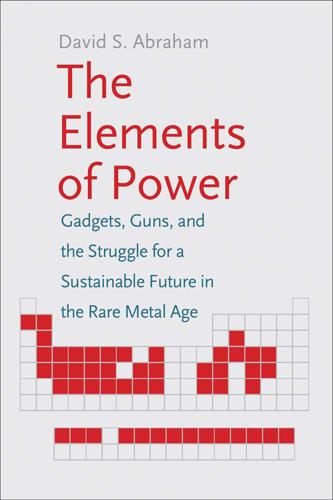
The Elements of Power: Gadgets, Guns, and the Struggle for a Sustainable Future in the Rare Metal Age
by
David S. Abraham
Published 27 Oct 2015
They had no idea that they would change the way we live and also drive up the demand for germanium more than twentyfold in less than a decade.29 Although the U.S. military is reducing its use of germanium in thermal imaging equipment as its wars end, a potential conflict is spurring new demand. Rising tensions between China and its neighbors, most notably Japan, over territorial ambitions in the South China Sea, are currently leading the demand for germanium. In early 2014, a Chinese-based infrared supplier commented that infrared orders from the national defense sector had increased markedly over the year. Military budgets in the region have in some cases doubled or nearly tripled over the past ten years, and in 2014 China increased spending by another 12.2 percent.
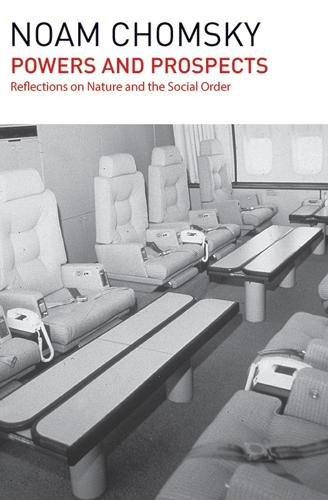
Powers and Prospects
by
Noam Chomsky
Published 16 Sep 2015
In his treatise on Australian Foreign Policy, Foreign Minister Evans offers the Timor Gap Treaty as ‘an example of a non-military solution to a problem that historically has often led to conflict’, a model for the world to follow. Pretty impressive. More recently, he has suggested it ‘as a model to resolve a dispute in the South China Sea over the Spratly Islands’. This pursuit of non-violence perhaps falls under what Evans calls ‘good international citizenship’, which ‘demands no less than acting to help secure universal adherence to universal rights’ and pursuit of ‘purposes beyond ourselves’. Pragmatic guidelines do not suffice.40 It should be noted that neither legal nor moral considerations are affected by the 1995 decision of the World Court not to consider the merits of the issue on the procedural grounds that Indonesia rejects its jurisdiction, while reaffirming that ‘the territory of East Timor remains a non-self-governing territory and its people has the right to self-determination for these reasons’.
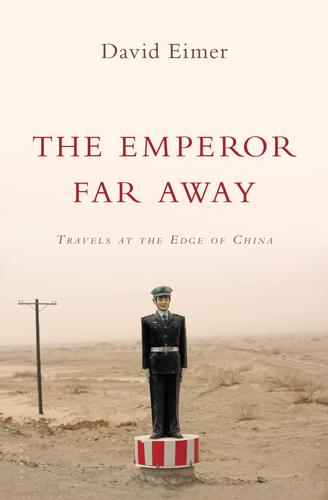
The Emperor Far Away: Travels at the Edge of China
by
David Eimer
Published 13 Aug 2014
Rising in Tibet, the Mekong runs south for 4,300 kilometres, first through Yunnan and then acting as the border between Myanmar’s Shan State and Laos, before it arrives at a junction where the frontiers of Thailand, Laos and Myanmar meet. From there, it changes course, veering east and then south again to flow through Laos and into Cambodia and Vietnam, where it empties into the South China Sea. Long before there were roads in Banna, the Mekong was the means by which its peoples moved around; travelling by water was easier than hacking your way through the jungle. The Mekong was the lifeblood for the minorities. It was both a source of food and the means by which they traded with the rest of South-east Asia, exchanging cotton, tea, salt and opium for betel nut, silver and pepper.

The Big Nine: How the Tech Titans and Their Thinking Machines Could Warp Humanity
by
Amy Webb
Published 5 Mar 2019
And it’s decimated global rosewood forests and led to the extinction of the Mukula tree, a slow-growing species in central Africa that, for a time, was harvested to make red-colored end tables and chairs with intricate carvings. No foreign power—not the United States, Japan, South Korea, or the European Union—had enough political or economic clout to stop China from extending its special economic trading zones far out into the South China Sea, East China Sea, and Yellow Sea. Nearly half of all global trade must pass through one of those zones, and every single ship that goes by must pay the Chinese government a hefty tax. China observers say that Beijing missed its 2025 target to become the world’s AI powerhouse, even if it has taken control of certain physical world resources.
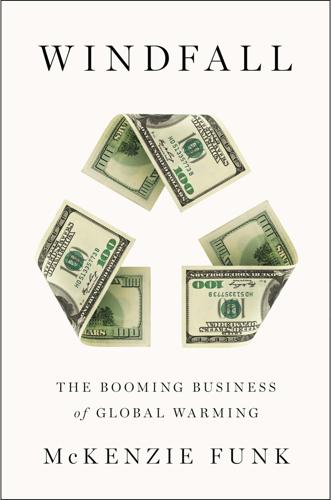
Windfall: The Booming Business of Global Warming
by
Mckenzie Funk
Published 22 Jan 2014
She was a small woman in a beautiful orange shalwar, towing a young son. “Bangladesh?” the officer asked. She nodded. His smile faded. • • • LIKE ALL ELSE related to climate change, sea-level rise is not the same across the globe—not uniform, certainly not equal. An extra inch in the North Sea does not necessarily translate to an extra inch in the South China Sea or Sea of Cortez or Bay of Bengal. Satellite measurements cited in the IPCC’s 2007 report show two parts of two oceans—the western Pacific and the eastern Indian—rising more quickly than any others, while measurements taken along the lengthy Indian coastline show that some areas, including West Bengal, adjacent to Bangladesh, are more quickly losing ground.

The Sirens' Call: How Attention Became the World's Most Endangered Resource
by
Chris Hayes
Published 28 Jan 2025
That signal amidst the noise is the main reason you see in news coverage the intense clustering that we’ve come to call the news cycle, the alchemical process by which a story becomes the focus of the entire media and then fades away as quickly as it came. Back in 2014, there was very little news that would reliably generate much in the way of cable news ratings. We were in a severe slump. And then, in March of that year, a Malaysian Airlines flight from Kuala Lumpur to Beijing went missing over the South China Sea. No one had any idea what happened to it and no immediate wreckage was visible. The plane had disappeared. The sheer lack of information about just what had happened turned the missing plane into a ratings sensation. Nielsen numbers are a blunt measurement, but you can see clear as day when something is popping, and everyone in cable news saw that the plane grabbed audiences’ attention and held it.

The Impossible City: A Hong Kong Memoir
by
Karen Cheung
Published 15 Feb 2022
After class I watch Japanese anime cartoons on the 4:00 p.m. children’s show on TVB, licking artificial orange powder off my fingers from the two-dollar packets of cheesy ring snacks. My aunt and I play slot machines with fake coins at the local game arcade, and trade the tickets for plush toys that are knockoff Disney cartoon characters. I stare out the window at Ma On Shan into a body of water connected to the South China Sea. I speak on the phone with a faraway mother who is desperate for my love, who wants to get to know me. My father makes plans to move to Farm Road near To Kwa Wan so we can be closer to the family home. Every Saturday we eat at a fish ball noodle place that also serves Cantonese casseroles and stir-fries, a typical Hong Kong restaurant that makes you wash your own cutlery.
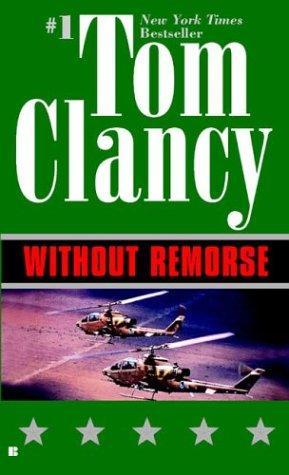
Without Remorse
by
Tom Clancy
Published 2 Jan 1993
If you want an explanation, it's probably that Robertson was a new kid, and he was nervous - second combat mission - and probably he thought he saw something, and probably he jinked too hard, but they were the trail element and nobody saw it. Hell, Dutch, we saw that sort of thing happen, too.' Maxwell nodded. 'What else?' 'An A-6 got shredded north of Haiphong - SAM - but they got it back to the boat all right. Pilot and B/N both get DFCs for that,' Podulski reported. 'Otherwise a quiet day in the South China Sea. Nothing much in the Atlantic. Eastern Med, picking up some signs the Syrians are getting frisky with their new MiGs, but that's not our problem yet. We have that meeting with Grumman tomorrow, and then it's off to The Hill to talk with our worthy public servants about the F-14 program.' 'How do you like the numbers on the new fighter?'
…
We'll see you're not disturbed.' Which was a better deal than that accorded the technicians aboard from the National Security Agency. Kelly headed forward to the last real rest he'd have for the next three days - if things went according to plan. He was asleep before the submarine dived back under the waters of the South China Sea. 'This is interesting,' the Major said. He dropped the translation on the desk of his immediate superior, another major, but this one was on the Lieutenant Colonel's list. 'I've heard about this place. GRU is running the operation - trying to, I mean. Our fraternal socialist allies are not cooperating very well.
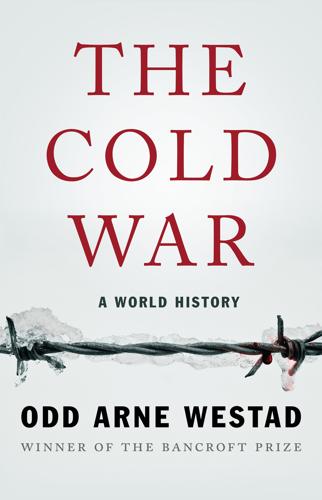
The Cold War: A World History
by
Odd Arne Westad
Published 4 Sep 2017
But for the Koreans themselves the war was a national catastrophe, leaving scars that have not yet healed and miseries that have not yet gone away. 7 Eastern Spheres From the 1940s to the 1960s one alternative world covered the globe from the Arctic through the center of Europe to the Adriatic, and from there through the Caucasus and central Asia to Korea and the city of Vladivostok on the Pacific Ocean. That city’s name, meaning “the conqueror of the east,” now symbolized Communist victory in a very large part of Eurasia. But the Communist world did not stop there. From Vladivostok it moved south, through China, the most populous country on earth, to end off the shores of Vietnam, in the South China Sea. What is remarkable about this world is how it was connected. It was not just a security alliance, such as NATO was for the north Atlantic states. It was an integrationist political and economic project, built on a common understanding of how the world worked and how it ought to be changed. It based itself on the teachings of Marx and Lenin, and on the practices that had developed in the Soviet Union under Stalin.
…
He told his advisers he was “all for doing what we can in Laos,” but he was very cautious about introducing US ground troops, hoping to force the Communists into a political settlement by threatening a US intervention.6 As part of this strategy, the White House authorized a CIA covert operations program for Laos, which concentrated on the Chinese border areas. Kennedy also dispatched the US Seventh Fleet to the South China Sea and placed combat troops in Okinawa on alert. Later he sent US troops to Thailand. Kennedy saw himself as threatening war in order to achieve peace, a policy of brinkmanship that he would also use in more serious conflicts during his presidency. In Laos, JFK’s carrot and stick approach worked, at least for a while.
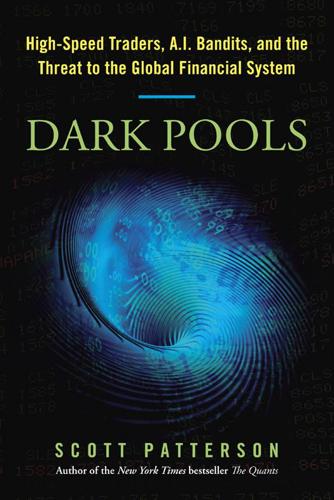
Dark Pools: The Rise of the Machine Traders and the Rigging of the U.S. Stock Market
by
Scott Patterson
Published 11 Jun 2012
Wissner-Gross and Freer provided a map dotted with optimal hubs all along the earth’s surface. Many of the hubs lay in the oceans, leading to the fanciful notion that particularly ambitious high-frequency trading outfits would plant themselves in the middle of the Atlantic or the Mediterranean or the South China Sea and get the jump on competitors using floating micro-islands populated by small communities of elite pattern-recognition programmers overseeing the hyperfast flow of data through their superservers. Better yet: unmanned pods of densely packed microprocessors overseen by next-generation AI Bots processing billions of orders streaming out of other unmanned AI pods positioned optimally around the world, the silent beams of high-frequency orders shifting trillions across the earth’s oceans at light speeds, all automated, beyond the scope of humans to remotely grasp the nature of the transactions.

Adapt: Why Success Always Starts With Failure
by
Tim Harford
Published 1 Jun 2011
According to Mallaby, Lübeck represented ‘a formula for creating order out of chaos and prosperity amid backwardness’ in the Middle Ages. It is just such a formula that Paul Romer is now promoting. There is plenty of evidence that charter cities could work in today’s world. There’s Singapore, long a successful independent city state off the coast of Malaysia; Hong Kong, for many years a British enclave on the South China Sea; more recently, Shenzhen, thirty years ago a fishing village not far from Hong Kong, now a city to rival Hong Kong itself after being designated China’s first ‘special economic zone’. Beyond South-East Asia, Dubai has proved – property bubble notwithstanding – that one can build a successful city anywhere.
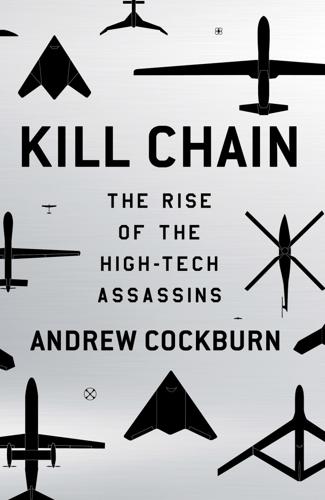
Kill Chain: The Rise of the High-Tech Assassins
by
Andrew Cockburn
Published 10 Mar 2015
Thus while Ramstein Air Force Base in Germany hosted “EUR-1,” relaying communications and video feeds between the United States and its drones operating in the Middle East and Central Asia, the Pentagon was spending millions of dollars constructing a new site, EUR-2, in Italy to handle expanding drone operations in Africa. PAC-1 at Kadena Air Force Base in Japan dealt with the drones flying over east Asia, while yet another new site, PAC-2, was planned for somewhere in the Pacific to focus on drone flights over the South China Sea. As General Votel liked to emphasize, the threat could be “anywhere on the planet.” Most of the drones linked to this system would be General Atomics Reapers. As of 2014 the air force planned to have 346 of these in service by 2021, of which more than 80 would likely be under CIA control. As the proliferating bases across Africa made clear, Reapers targeting lightly armed tribesmen and insurgents still had a promising future.
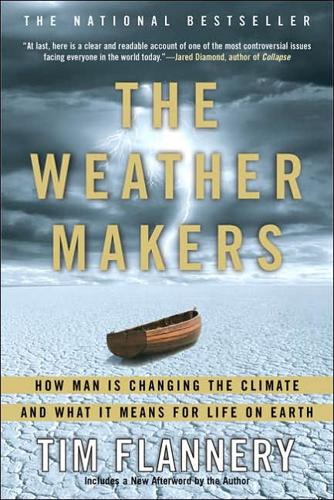
The Weather Makers: How Man Is Changing the Climate and What It Means for Life on Earth
by
Tim Flannery
Published 10 Jan 2001
For every 10°C increase in its temperature, the amount of water vapour that the air can hold doubles; thus air at 30°C can hold four times as much ‘hurricane fuel’ as air at 10°C.3 Perhaps the most marked change in hurricanes since around 1950—when global warming began to be felt—is a change in their tracks. One of the best-documented examples of this comes from eastern Asia. The frequency of typhoons ravaging the East China and Philippine seas has decreased since 1976, but the number in the South China Sea has increased.4 Farther westward, in the Arabian Sea and in the Bay of Bengal, there have been fewer typhoons, which is good news for the millions living near sea level in these regions. Another very marked change has been noted at high latitudes in the Southern Hemisphere, where there has been a dramatic decrease in the number of cyclones occurring over the sub-Antarctic Ocean south of latitude 40, but a modest increase in the Antarctic Ocean.5 Although the time frame of the change is short, the last couple of decades have also seen intense low pressure systems develop between 30° and 40°S in parts of the Southern Hemisphere, with one extraordinary low-pressure system approaching cyclone intensity in February 2005.

Don't Be Evil: How Big Tech Betrayed Its Founding Principles--And All of US
by
Rana Foroohar
Published 5 Nov 2019
“As China continues to pursue the objectives laid out in Made in China 2025 and actively distorts the economic playing field in favor of their national champions, Western businesses will also likely need to re-evaluate their confidence in the long-term China business case.” Already, many companies are doing just that, rethinking supply chains that run through the South China Sea, moving production out of China to places like Vietnam and Mexico, and considering how political risk and conflict between the two powers may affect their businesses. Translation: We are likely at the biggest geopolitical turning point since the Second World War. Big Tech will be at the center of it.
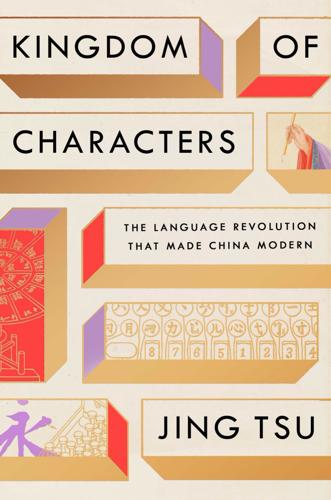
Kingdom of Characters: The Language Revolution That Made China Modern
by
Jing Tsu
Published 18 Jan 2022
Worn and unwashed, Wang Zhao was, in fact, only disguised as a monk. He was using a pseudonym, and when asked about his journey he’d reply that he had just arrived from the remote outpost of Taiwan. The island was distant enough from the locals’ knowledge to be a credible cover. For centuries pirates had gathered on the island while trolling the South China Sea. Hiding in the crevices of its jagged landscape, they shared the mountainous no-man’s-land with indigenous headhunting tribes and political castaways. Then Japan seized it as its first colony in 1895, after an easy victory over China in the First Sino-Japanese War. It was a haven for uninvited guests, safe beyond the reaches of Chinese law.
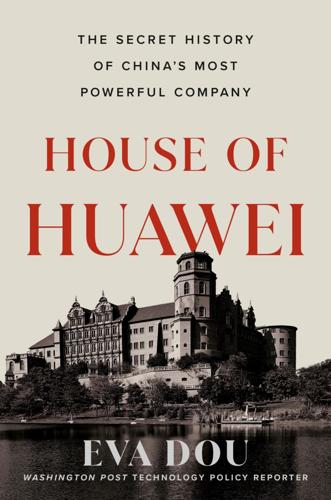
House of Huawei: The Secret History of China's Most Powerful Company
by
Eva Dou
Published 14 Jan 2025
A growing number of them were getting the opportunity to study abroad, and they came back fluent in foreign languages and with the latest in technical training. Ren was assigned a job at a company called South Sea Oil Shenzhen Development Service Co.[11] This was a subsidiary of the state-owned enterprise South Sea Oil Corporation, which was building a modern harbor in Shenzhen’s Shekou district to support offshore oil-drilling projects in the South China Sea. Ren’s subsidiary was tasked with the construction of peripheral facilities, including manufacturing zones, shopping centers, and modern apartment complexes.[12] Housing was badly lacking. Meng Wanzhou later recalled her parents living in a “thatched hut” during this time: “When it was raining heavily outside, it would be raining lightly inside; when the neighbors spoke, you could hear everything clearly.”[13] Ren’s tenure at the company was short and undistinguished—little is known about what exactly his role was there, and there are no apparent local press records of his work, in contrast to the laudatory clippings from his time as a military engineer.
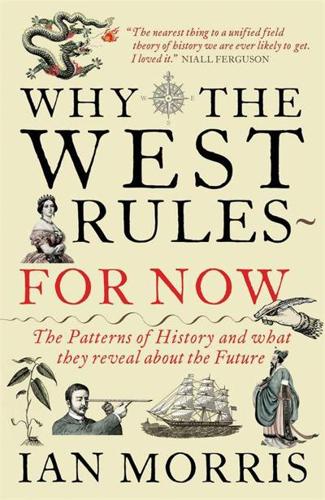
Why the West Rules--For Now: The Patterns of History, and What They Reveal About the Future
by
Ian Morris
Published 11 Oct 2010
All we can say with confidence is that Manchurian foragers were living in large villages and growing millet by at least 5000 BCE. Rice was being cultivated far up the Yangzi Valley by 4000, on Taiwan and around Hong Kong by 3000, and in Thailand and Vietnam by 2000. By then it was also spreading down the Malay Peninsula and across the South China Sea to the Philippines and Borneo (Figure 2.8). Just like the Western agricultural expansion, the Eastern version also hit some bumps. Phytoliths show that rice was known in Korea by 4400 BCE and millet by 3600, the latter reaching Japan by 2600, but prehistoric Koreans and Japanese largely ignored these novelties for the next two thousand years.
…
Maps made it as inevitable as things get—as inevitable, say, as when farmers replaced hunter-gatherers or states replaced villages—that the daredevil sailors of the Atlantic fringe would find the Americas sooner rather than later, and certainly sooner than the equally daredevil sailors of the South China Sea. And once that happened, the consequences were largely predetermined too. European germs, weapons, and institutions were so much more powerful than Native American ones that indigenous populations and states simply collapsed. Had Montezuma or Cortés made other choices, the first conquistadors might well have died on the blood-soaked altars of Tenochtitlán, their hearts hacked from their screaming bodies and offered to the gods, but there would have been more conquistadors right behind them, bringing more smallpox, cannons, and plantations.
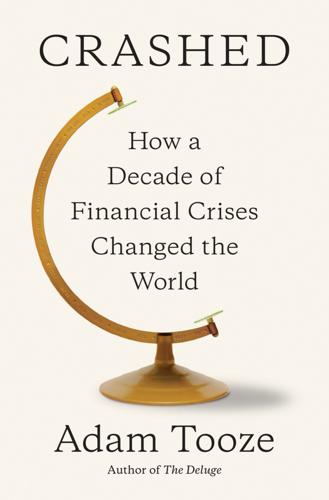
Crashed: How a Decade of Financial Crises Changed the World
by
Adam Tooze
Published 31 Jul 2018
It had no particular reason to prefer Putin. But in the spring of 2014 in the East Asian arena, tensions between Japan and China were rising to a dangerous level. Washington gave notice that it meant to stand behind its strategic pivot. It would not countenance China’s assertion of rights in the South China Sea. But for America to take a strong line in Asia while at the same time confronting Russia in Europe had its price. It offered Russia an opportunity and Putin seized it. In the spring of 2014, as the seriousness of Russia’s confrontation with the West became clear, the Moscow leadership resolved on a strategic approach to China.83 China would provide Russia with support against the West.
…
In the spring of 2014, as the seriousness of Russia’s confrontation with the West became clear, the Moscow leadership resolved on a strategic approach to China.83 China would provide Russia with support against the West. If the United States and the EU were determined to oppose Russia in economic terms, it would find markets in China and sources of capital in Shanghai and Hong Kong. China, for its part facing resistance in the South China Sea, could build a Eurasian land route via Russia and Central Europe. The EU had shown no interest in joining America’s “de facto containment alliance” in Asia. Russia would provide the bridge. A start was made in May 2014 with the signing of a $400 billion, thirty-year Sino-Russian gas deal.84 Though the strategic logic was strong, in practice, Moscow found that doing business with China was fraught with difficulty.
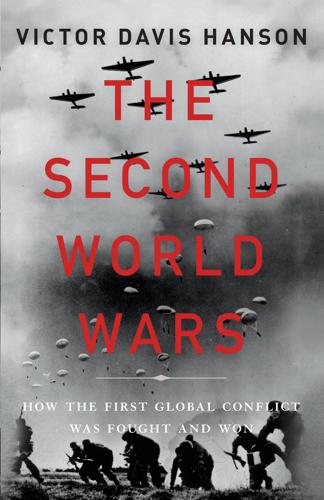
The Second World Wars: How the First Global Conflict Was Fought and Won
by
Victor Davis Hanson
Published 16 Oct 2017
A small but well-built fleet of surface ships and a growing armada of submarines, coupled with the Italian navy, might tie down the British fleet in particular key strategic landscapes, choking off sea-lanes to Britain, and complemented by the threat that Japan might eventually siphon off Allied ships to the Pacific. Meanwhile, Hitler would hold on to a huge continental empire from the Volga to the Atlantic, without much need of imported resources. In the contemporary example of a much weaker Chinese navy seeking to deny the much stronger American navy freedom of action at key choke points in the South China Sea, so the small (and hypothetical) German counterforce would negate the ability of Allied warships in the Atlantic to profit fully from naval superiority on the surface.16 Hitler remembered that although the U-boat fleet had failed at just such a strategy in World War I, it nonetheless had terrified the British.
…
The fear of such a postwar accounting led many like Adolf Hitler, Joseph Goebbels, and Heinrich Himmler to commit suicide rather than face postwar reckoning and hanging. The Axis Big Three—Hitler, Tojo, and Mussolini—all died violently as a result of their defeat. Allied leaders passed away peacefully of old age and infirmity. Successful democracies replaced Axis dictatorships. Germany, Japan, and Italy became model global citizens. Central Europe and the South China Sea for over a half century were no longer to be the powder kegs of war. Another world war was averted. More long-term, utopian goals were only half realized. Nuclear weapons, the NATO alliance, and the fear of mutually assured destruction during the Cold War more likely prevented World War III than did the moral censure of the war-born United Nations.
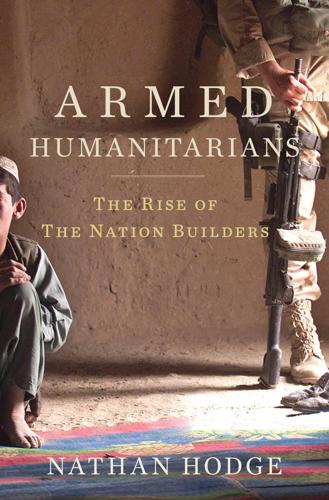
Armed Humanitarians
by
Nathan Hodge
Published 1 Sep 2011
He pointed to the map to show Thompson the progress of the South Vietnamese government’s accelerated pacification campaign, how much territory the government controlled, and how much was in the hands of the Communists. The government controlled pretty much everything between the north–south highway and the South China Sea; to the west of the highway, things were also reasonably secure; a bit further inland, security was a bit more tenuous. Out toward the mountains was pretty much Indian country. Thompson stopped Morris for a moment. “What time of day are you talking about?” he asked. “During the day,” Morris replied.
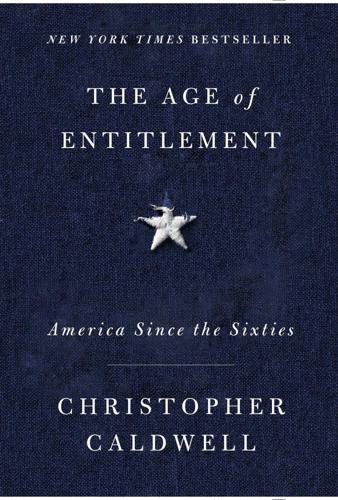
The Age of Entitlement: America Since the Sixties
by
Christopher Caldwell
Published 21 Jan 2020
Since each took the same approach to an intractable reality, success in one was a warrant for success in the other. Johnson frequently described the war as a New Deal–style project and even launched a Mekong River Redevelopment Commission to industrialize, as far as possible, the vast, ramifying waterway that entered the South China Sea south of Saigon. “I want to leave the footprints of America in Vietnam,” he said. “I want them to say, ‘When the Americans come, this is what they leave—schools, not long cigars.’ We’re going to turn the Mekong into a Tennessee Valley.” White House counsel Clark Clifford saw “a pattern for a kind of life that the people of all Southeast Asia can begin to enjoy . . .
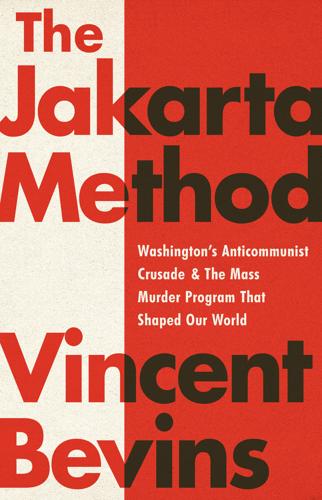
The Jakarta Method: Washington's Anticommunist Crusade and the Mass Murder Program That Shaped Our World
by
Vincent Bevins
Published 18 May 2020
He continued, “The savage Indonesian reactionaries will ultimately face the harsh judgment of history.”28 The Cultural Revolution was built around the idea that hidden bourgeois elements could infiltrate and threaten a left-wing movement. The events in Indonesia in 1965–66 served as self-evident justification for this narrative. Just weeks previously, the world’s largest unarmed communist party had held considerable influence in the huge country across the South China Sea. Mao and Zhou Enlai had encouraged the Indonesian leftists to arm the people.29 It did not. Then overnight, hidden right-wing elements emerged to kill them all and turn a left-leaning anti-imperialist nation into an ally of Washington. It would be the perfect propaganda tale to invent, if it were not all true.
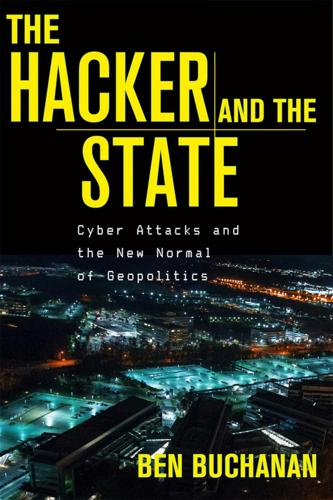
The Hacker and the State: Cyber Attacks and the New Normal of Geopolitics
by
Ben Buchanan
Published 25 Feb 2020
In one sense, the 2015 and 2016 cases could represent the realization of a scenario long imagined: that a state might try to use cyber attacks on critical infrastructure to threaten an adversary and compel a change in its behavior. For decades, cyber-caused blackouts showed up only in fiction and in speculative scholarship. Some scenarios suggested that China might use a blackout to signal strength during a crisis in the South China Sea, for example, while others worried that Russia would cause one as a sign of increasing aggression against the United States.29 In each of those hypothetical cases, the severity of the blackout ranged from moderate to extreme, but the intent behind it was always unambiguous. Yet, after decades of waiting, when the first and second cyber-caused blackouts did occur, not only was the damage far less than prophesized, but the operations also failed to convey much nuance.
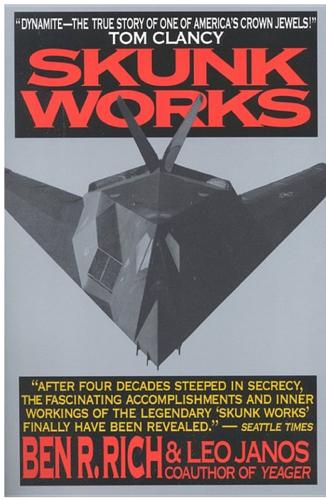
Skunk Works: A Personal Memoir of My Years of Lockheed
by
Ben R. Rich
and
Leo Janos
Published 1 Jan 1994
The Air Force supplied two specially equipped H Model B-52s, an eight-engine mothership that would carry a drone under each wing on a sixteen-and-a-half-hour, seven-thousand-nautical-mile flight, from Beale Air Force Base in central California to a launch point west of the Philippines, over the South China Sea. The drone’s mission was to overfly China. It would launch from forty thousand feet and fire its solid-propellant booster rocket for eighty-seven seconds, soaring it to eighty thousand feet at Mach 3.3 plus, before falling away. The drone’s guidance system would direct its three-thousand-mile journey.
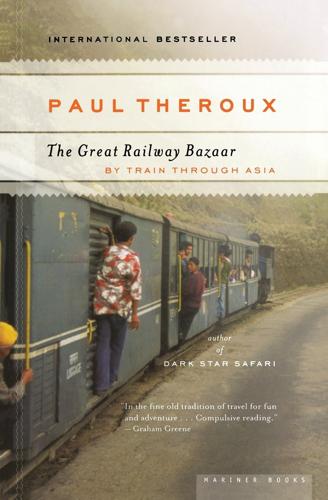
The Great Railway Bazaar
by
Paul Theroux
Published 1 Jan 1975
There are poisoned rice fields between straggling fingers of the Mekong Delta and there are hundreds of blond and fuzzy-haired children, but in a generation even these unusual features will change. Chapter Twenty-Five THE HUE-DANANG PASSENGER TRAIN FROM THE AIR, the grey unreflecting water of the South China Sea looked ice cold, there were round Buddhist graves all through the marshes, and the royal city of Hue lay half-buried in drifts of snow. But this was wet sand, not snow, and those circular graves were bomb craters. Hue had a bizarre appearance. There had been plenty of barbed wire on the barricades but little war damage in Saigon; in Bien Hoa there were bombed-out houses; in Can Tho stories of ambushes and a hospital full of casualties.
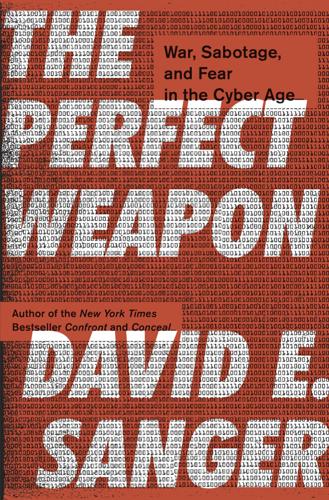
The Perfect Weapon: War, Sabotage, and Fear in the Cyber Age
by
David E. Sanger
Published 18 Jun 2018
It bore no resemblance to the more familiar conflicts of past decades: No one was arguing over the fate of Taiwan, or bombarding the tiny islands of Quemoy and Matsu, as Mao did in 1958, prompting the United States to reinforce its Seventh Fleet and consider whether it was worth going to war. For while China was still interested in staking its territorial claims—starting in the South China Sea—and keeping America at bay, it understood the keys to reemerging as a global power after a centuries-long hiatus: artificial intelligence, space technology, communications, and the crunching of big data. And of course, outmaneuvering its only real challenger, the United States. Yet in Washington, three American presidents—Clinton, Bush, and Obama—had struggled to define exactly what China was in relation to the United States: A potential adversary?
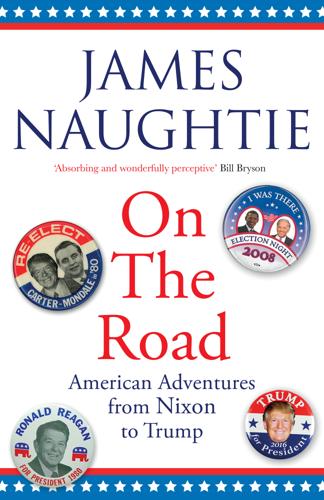
On the Road: Adventures From Nixon to Trump
by
James Naughtie
Published 1 Apr 2020
This is the time to stand up and be counted. The next generation is going to ask us what we did at the time that country really needed us. But it’s impossible, of course, to understand Trump by talking to his critics. They may tear apart his policy platform, accuse him of dangerous warmongering in the South China Sea or the Persian Gulf, assail him on his ‘hoax’ rhetoric on climate change – Brown says California is ‘burning up’ and it’s bound to get so much worse that no president can avoid a confrontation with reality – but they know well that the 2016 result was no fluke. Whatever their criticisms of the Clinton campaign, their anger at the Comey intervention, they’re aware of the depth of the feeling that Trump was able to tap and which still runs strong.
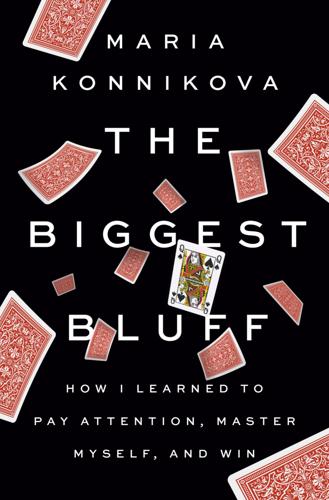
The Biggest Bluff: How I Learned to Pay Attention, Master Myself, and Win
by
Maria Konnikova
Published 22 Jun 2020
Macau is my way of metabolizing the feeling of being lucky. It is my confrontation. It’s fitting that in order to get to Cotai, you must go through a profound displacement, not only in space but in time. One of the longest nonstop flights in the world, from New York to Hong Kong, followed by an hour-long ferry ride over the South China Sea to old Macau, followed by yet another trip over the island and to its new gambling home on Cotai. The City of Dreams, a large, stand-alone complex of hotels, restaurants, and entertainment venues, seems like an odd, almost alien-looking Vegas. There are all the same hotels and landmarks, but with a Martian quality.

Careless People: A Cautionary Tale of Power, Greed, and Lost Idealism
by
Sarah Wynn-Williams
Published 11 Mar 2025
How an innocuous snippet of code can break a robust system. How technology can behave in ways that the humans in charge could never expect. How technology can create unexpected harms. That’s one thing when it’s a social media platform that serves over three billion people. And quite another when it’s second-strike capability in the South China Sea. That is, the automated ability to launch a devastating nuclear retaliation after absorbing a disarming first strike. We live in an era when intelligent weapons can autonomously identify and kill human targets without human input. * * * Before this hot war, there is a cold battle over AI already being fought.

The Coming Wave: Technology, Power, and the Twenty-First Century's Greatest Dilemma
by
Mustafa Suleyman
Published 4 Sep 2023
If someone was to pressure those choke points, well, the implication was clear. Xi’s fears came to pass on October 7, 2022. America declared war on China, attacking one of those choke points. This didn’t involve missiles shooting over the Taiwan Strait. There wasn’t a naval blockade of the South China Sea or marines storming the Fujian coastline. It came instead from an unlikely source: the Commerce Department. The shots fired were export controls on advanced semiconductors, the chips that underwrite computing and so artificial intelligence. The new export controls have made it illegal for U.S. companies to sell high-performance computing chips to China and for any company to share the tools to manufacture these chips, or provide the know-how to repair existing chips.

The Everything Blueprint: The Microchip Design That Changed the World
by
James Ashton
Published 11 May 2023
But as it headed towards the Indonesian part of Borneo and then turned north to skirt the eastern edge of the Philippines, all eyes were on it. FlightRadar24, a flight-tracking website, registered 2.9 million viewers during its journey, making it one of the most closely tracked flights of all time. And most of those that logged on knew precisely why the pilot had chosen to avoid the most logical, direct route over the South China Sea. Emerging into the night, an elderly woman dressed in a smart pink trouser suit and face mask grasped both handrails as she gingerly descended into the melee on the runway. There, Nancy Pelosi, the Speaker of the US House of Representatives and her country’s second-most powerful politician, was greeted by Taiwan’s foreign minister, Joseph Wu, and the US representative in Taiwan, Sandra Oudkirk.
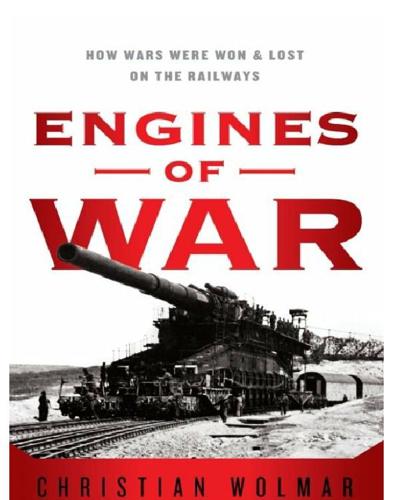
Engines of War: How Wars Were Won & Lost on the Railways
by
Christian Wolmar
Published 1 Nov 2011
Unfit men just collapse if they are sent up.’26 All that on just seven ounces of rice per day, often with no vegetables, let alone meat. When the line opened in October 1943, it was a vital part of the Japanese line of communication because the Burma front had become a key supply route when the Japanese lost control of the South China Sea. It would not be until the following year that the Allies re-established a foothold in Burma and the capture of the Myitkynia station allowed them to use the railway to advance towards the Japanese. According to Ernest Carter, the lack of roads meant that many cars and lorries were adapted for railway use: ‘As soon as they came on the line, American engineers fitted flanged wheels to a couple of army jeeps and put them at each end of half a dozen wagons to form a push-pull train.’27 He even reports that one of the commanders of the British forces, General Francis Festing, was seen to be driving his own jeep along the track ahead of his men.
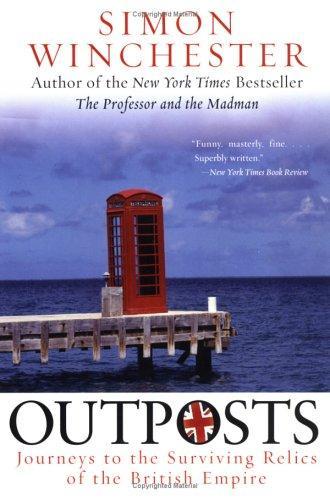
Outposts: Journeys to the Surviving Relics of the British Empire
by
Simon Winchester
Published 31 Dec 1985
The approach to Kai Tak airfield is unforgettable—though not at first: the plane usually contrives to come in from the western side of the colony, and the last few miles of the journey are over the brown and undistinguished hills of Kwangtung province of Southern China, and the muddy estuary of the Pearl River. (The British have been this way, evidently: even the airline maps show the southernmost point of China, just off to the starboard side, was once called Cape Bastion, and there is a Macclesfield Bank and a Money Island out in the South China Sea, barely visible from five miles up.) But then the sea begins to swarm with shipping. Big freighters can be seen lumbering northwards, contained in channels between a clutch of tiny, tree-covered islets. Red and white hydrofoils scurry to and fro leaving trails of white foam, and stately ferry boats plough across the straits.
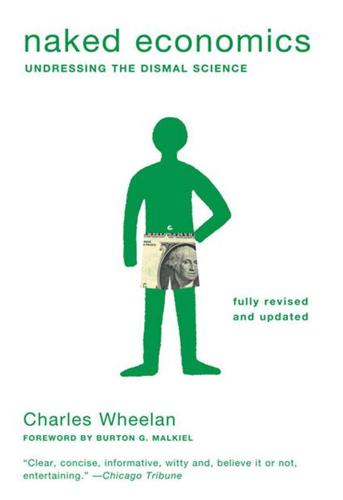
Naked Economics: Undressing the Dismal Science (Fully Revised and Updated)
by
Charles Wheelan
Published 18 Apr 2010
A bad draw—the tree that falls in an electrical storm and crushes your home—could be devastating. Thus, most of us are willing to pay a predictable amount—even one that is more than we expect to get back—in order to protect ourselves against the unpredictable. Almost anything can be insured. Are you worried about pirates? You should be, if you ship goods through the South China Sea or the Malacca Strait. As The Economist explains, “Pirates still prey on ships and sailors. And far from being jolly sorts with wooden legs and eye patches, today’s pirates are nasty fellows with rocket-propelled grenades and speedboats.” There were 266 acts of piracy (or attempts) reported to the International Maritime Organization in 2005.
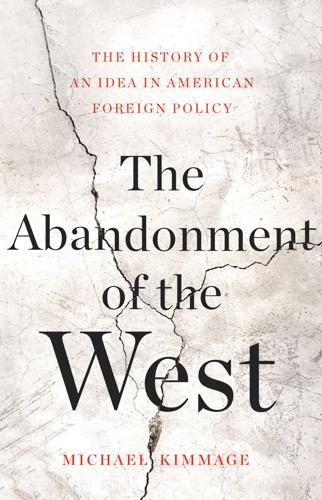
The Abandonment of the West
by
Michael Kimmage
Published 21 Apr 2020
China has an economy on target to being the largest of the twenty-first century, and China practices a step-by-step, year-by-year economic statecraft that is the envy of Europe and the United States. China is not out to topple the West: the economic interdependence is too great, as are the military risks. But to challenge the West in the South China Sea and wherever else the West might impede Chinese expansion is, for China, a historical-political pleasure. Russia is likewise attempting to contain the West. In Putin’s assessment, the American-led order in Europe and the Middle East has been bad for Russia: since the Iraq War of 2003, the United States has pursued a reckless global strategy of regime change and fostered a liberal international disorder, Putin has many times argued.
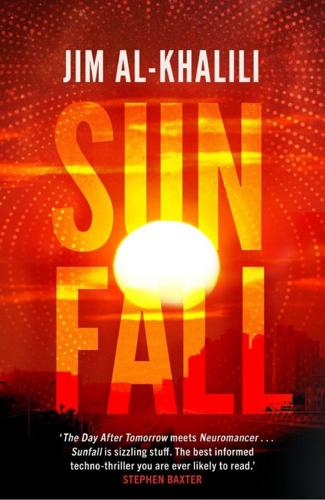
Sunfall
by
Jim Al-Khalili
Published 17 Apr 2019
‘What is this first test designed to check?’ ‘Ah,’ replied the Peruvian enthusiastically, ‘if all goes to plan, a pulse of heavy neutralinos fired from Fermilab will be sent here to see if the magnets can do their job. Of course, with just the one beam, it should travel straight through the Earth to the other side, coming out in the South China Sea.’ Qiang nodded vigorously. ‘Of course. And that’s where Darklab will be waiting!’ he shouted. Sarah now remembered why he was so excited. His institute in China had been developing a mini dark-matter accelerator for the past five years and he’d been heavily involved in getting it funded. Now it seemed that it would play its part in the latest test of the Odin Project.
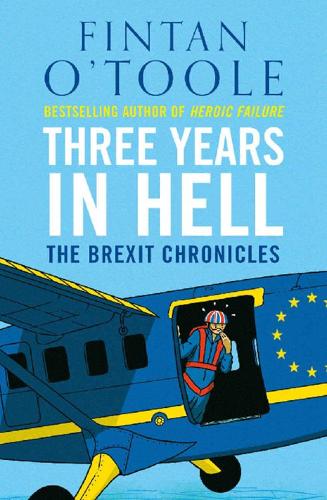
Three Years in Hell: The Brexit Chronicles
by
Fintan O'Toole
Published 5 Mar 2020
They were waving blue passports with proper British insignia as they passed unimpeded through foreign airports to be greeted with renewed respect and affection by the friendly natives who had always longed for their return. They were sailing their new aircraft carrier, the Queen Elizabeth II, into the South China Seas (as the witless defence secretary Gavin Williamson promised) to remind everyone who is in charge. (I cannot remember whether it was De Selby or Williamson who said: ‘Brexit has brought us to a great moment in our history. A moment when we must strengthen our global presence, enhance our lethality and increase our mass.’)
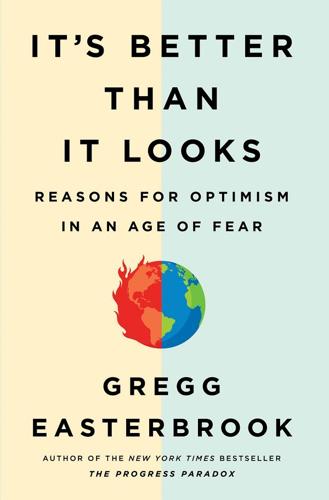
It's Better Than It Looks: Reasons for Optimism in an Age of Fear
by
Gregg Easterbrook
Published 20 Feb 2018
Consider Asia, which for more than a century was in continuous conflagration, with a seeming knockout tournament of colonial oppression, invasions, and counterinvasions in China, Indonesia, and the several nations of Southeast Asia by England, France, Germany, Japan, Russia, and the United States. Today, beyond the Demilitarized Zone between the Koreas, Asia is largely free of armed conflict. What’s the difference? Colonialism in Asia has ended. Tensions remain, including in the South China Sea. But tensions are a lot better than air strikes. The one-sixth of the world’s population still plagued by war lives in a band stretching from Nigeria across sub-Saharan Africa through the Middle East to Afghanistan and Pakistan, plus the southeastern corner of the Balkans. These are the places where colonialism has not ended and where feudalism, a stepchild of colonialism, still obtains.
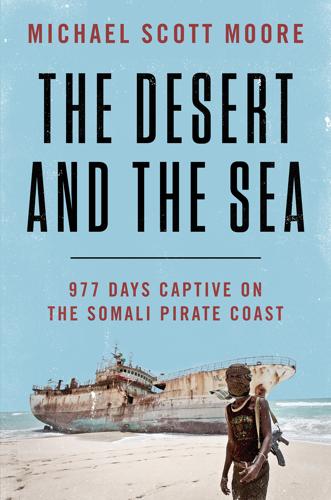
The Desert and the Sea: 977 Days Captive on the Somali Pirate Coast
by
Michael Scott Moore
Published 23 Jul 2018
The Naham 3 had valid labor contracts, but some crewmen still felt hoodwinked by their terms of employment. A Singaporean staffing agency called Step Up Marine Enterprise had recruited the Filipinos. “When I signed up, I didn’t know I would have to fish near Africa,” Tony said. He thought it would be a boat in the South China Sea. His recruiter had offered a good wage and an impressive plane ticket to Singapore to finalize the contract. The Step Up office, though, turned out to be a cramped room in a flashing Chinatown mall known as the People’s Park Centre. The agents there said Tony would have to fly to Mauritius, an island off Africa that he had never heard of, to board a long-distance industrial vessel and fish the Indian Ocean.
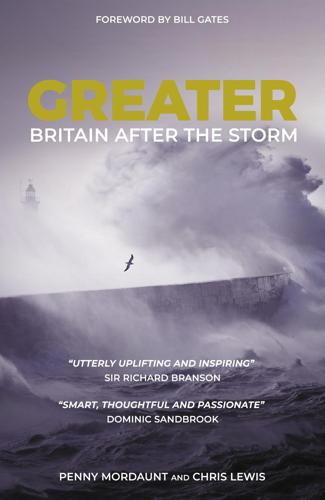
Greater: Britain After the Storm
by
Penny Mordaunt
and
Chris Lewis
Published 19 May 2021
China is emerging from Covid as one of the stronger nations. China just wants to be like us Simply not true. China looks upon the dissent and turmoil caused by Western democracies and is horrified at the lack of planning and the waste. The hawks in China are weak This is the notion that China just wants to be friendly. Its action in the South China Sea shows this to be questionable. If Pillsbury is wrong, democracy is safe. If he’s right, it’s about to face another global challenge. WHAT THE DEMOCRACIES CAN LEARN FROM CHINA Pillsbury believes that Beijing is pursuing a systematic campaign of anti-Americanism and the rewriting of history books that depict America and Britain as nations that tried to destroy China.
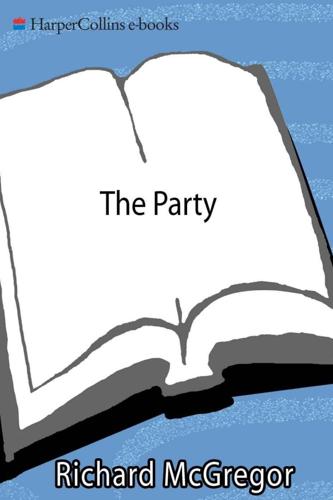
The Party: The Secret World of China's Communist Rulers
by
Richard McGregor
Published 8 Jun 2010
‘That’s why, on Taiwan and issues of sovereignty, the government gets people’s support. The government tells you, we do not insist on sovereignty in the east China Sea [with Japan], because that brings favourable economic development. We do not protest against the Philippines [in a territorial dispute in the South China Sea], because that favours economic development. We allow Taiwan to have sovereignty, in favour of our own economic development. ‘The party leaders realize that they don’t have a dominant ideology they can use to run the country any more. For them, there is no core social value. At this moment, the sole, dominant ideology shared by the government and the people is money worship.’
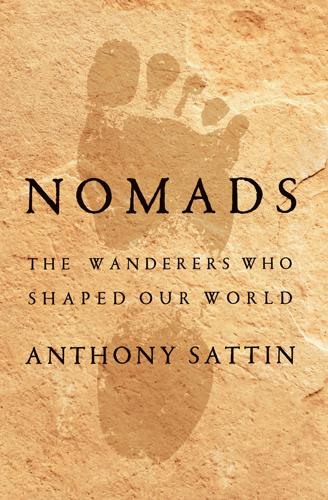
Nomads: The Wanderers Who Shaped Our World
by
Anthony Sattin
Published 25 May 2022
The Han had always believed that China was the civilised world, that those who lived beyond the borders were abandoned by heaven, so there had been no reason for them to stray beyond their wall. Now they were prepared to go west. When Modu wrote to Dowager Empress Lü suggesting that the Xiongnu and Han become trading partners, the Han Empire stretched from the Korean peninsula and the Yellow Sea in the north, to the South China Sea near what is now Hanoi in Vietnam. The Roman Republic, with the conclusion of the Third Macedonian War in 168 BCE, included much of Italy, Spain, Sicily, Sardinia and Corsica as well as Illyria, the Dalmatian coast and Macedonia, where they had just brought to an end the dynasty founded by Alexander the Great’s general Antigonus.

Fortune's Bazaar: the Making of Hong Kong: The Making of Hong Kong
by
Vaudine England
Published 16 May 2023
“Intimate Interactions: Eurasian Family Histories in Colonial Penang,” Modern Asian Studies 46, no. 2 (2012): 303–29. Wang Gungwu. China and the Overseas (Singapore: Times Academic Press, 1991). ———. Community and Nation: China, Southeast Asia and Australia (St. Leonards, NSW, Australia: Allen and Unwin, 1992). ———. The Nanhai Trade: The Early History of Chinese Trade in the South China Sea (Singapore: Eastern Universities Press, 2003). ———. The Eurasian Core and Its Edges: Dialogues with Wang Gungwu on the History of the World (Singapore: Institute of Southeast Asian Studies, 2014). Ward, Robert S. Asia for the Asiatics? (Chicago: University of Chicago Press, 1945). Warres-Smith, D.
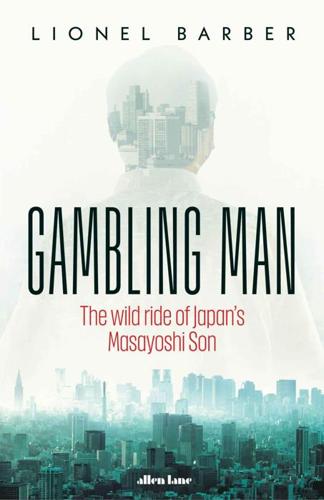
Gambling Man
by
Lionel Barber
Published 3 Oct 2024
Once market sentiment shifted, Masa and SoftBank were highly indebted, highly leveraged and dangerously exposed. The geopolitical context had shifted too. Donald Trump’s ‘America First’ foreign policy had rapidly escalated into across-the-board confrontation with China. Trump accused Beijing of cyber-espionage, theft of intellectual property, Iran sanctions-busting and military adventurism in the South China Sea and against Taiwan. Democrats and Republicans were united in the belief that America had been taken for a ride. Despite the see-saw markets, the Covid-induced crisis and the huge losses at Northstar, SoftBank was still the largest technology investor in the world. Vision Fund 1 had deployed almost $100bn of capital, Vision Fund 2 had more than $30bn to spend, and the Latin American Fund had $5bn to invest in companies in the region.
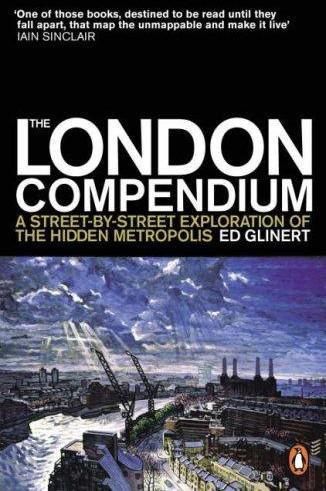
The London Compendium
by
Ed Glinert
Published 30 Jun 2004
Beneath the building, the authorities laid a number of telephone lines linked to the Central Telegraph Exchange at Moorgate which monitored calls made to and from every foreign embassy in London. HQS Wellington The Honourable Company of Master Mariners’ floating livery hall was built at Devonport in 1934 and used in the South China Sea during the Second World War. CITY OF LONDON, EC4, EC3 Two griffins saved in 1963 from the demolished Coal Exchange on Lower Thames Street mark the western riverside boundary of the City of London, the ancient heart of London. Middle Temple Garden The gardens of the Middle Temple Inn of Court.
…
It was the only street in the miles of East London that I traversed day and night that inspired me with any real fear – East of Aldgate, Horace Thorogood (1935) Until the mid twentieth century Penny-fields was the centre of London’s Chinatown for those from Shanghai and Ningpo, its menacing atmosphere and record of violence giving rise to the legend that any white girl naïve enough to visit the area alone would be grabbed by a sinister Oriental, injected with an opiate, and taken to a boat on the Thames bound for the South China Seas and the white slave trade. The street was lined with cafés and gambling dens, regularly raided by police, where Chinese men played Fan Tan, a game in which a cup of haricot beans is covered and bets are placed on how many beans will remain after the contents have been divided into four, and Puk-a-Pu, or Plucking Pigeons, a game played on a sheet marked with Chinese characters.
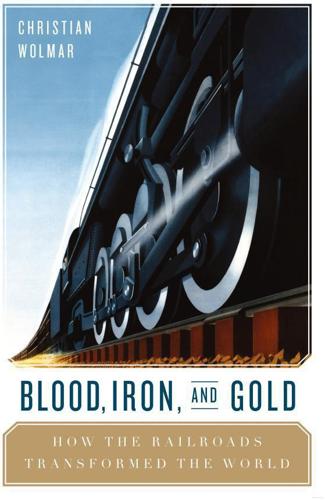
Blood, Iron, and Gold: How the Railways Transformed the World
by
Christian Wolmar
Published 1 Mar 2010
The death rate was particularly high in the final three months as the Japanese were desperate to complete the work and the starving men were forced to do hard manual labour around the clock with reports of some being forced to work for sixty-two out of seventy-two hours. When opened, the line immediately formed a vital part of the Japanese war effort as the Burma front became a critical supply line when they lost control of the South China Sea. After the war, the Burma railway soon fell into disuse and was abandoned, with a small section being reopened in 1957 by the Thai government. In more modern conflicts, the railways no longer have much of a role since other forms of transport have taken over. After the Second World War, however, there was one last theatre, the Korean War, in which the railways played a vital part.

The Fry Chronicles: An Autobiography
by
Stephen Fry
Published 27 Sep 2010
After half an hour’s chugging through choppy waters he was dropped off on an island. Nothing. He thought he had been (almost literally) shanghaied. After what seemed an eternity another junk phutted its way to the jetty. ‘Chou Lai?’ called the skipper, and once more my friend hopped aboard. An hour followed in which he ploughed deeper through the South China Sea, beginning to fear for his life. At last he was deposited on yet another island, but this time there was at least a restaurant, strung with lights and vibrating with music. Chou Lai himself came forward, a bonhomous fellow with an eyepatch that completed the superbly Condradian feel of my friend’s adventure.
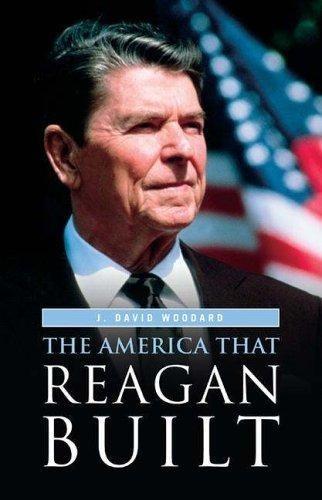
The America That Reagan Built
by
J. David Woodard
Published 15 Mar 2006
For a change, the immediate foreign policy challenge was not in the Middle East, but with China. Three months after taking office, Bush announced plans to sell eight diesel-powered submarines to Taiwan. The move infuriated Beijing. So, relations were at a low in April when a Navy surveillance plane collided with a Chinese fighter jet over the South China Sea.29 The plane had to make an emergency landing, and its twenty-four crew members were detained. The crisis challenged the long-standing good relations the Bush family had with leaders of the country, and for a time it appeared that negotiations were at an impasse. Finally, quiet diplomacy won out, and a major crisis was avoided.
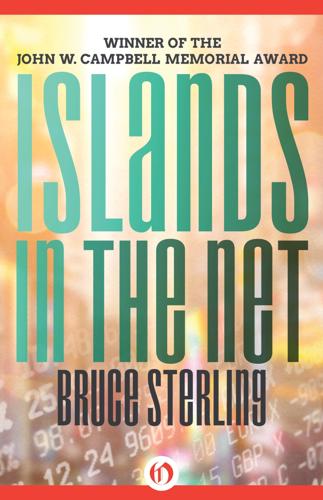
Islands in the Net
by
Bruce Sterling
Published 31 May 1988
They had barricaded the streets, their bamboo rickshaws laden with stolen sacks of cement and rubber and coffee beans. They were defying the curfew, the government’s sudden and draconic declaration of martial law, which lay over Singapore like a blanket of lead. The streets were the army’s now. And the skies, too.… Tall monsoon clouds over the morning South China Sea, a glamorous tropic gleam like puffed gray silk. Against the clouds, the dragonfly cutouts of police helicopters. At first, the Anti-Labourites had claimed, as before, that they were “observing for civil rights.” But as more and more of them had gathered during the night of the fourteenth, the pretense had faded.
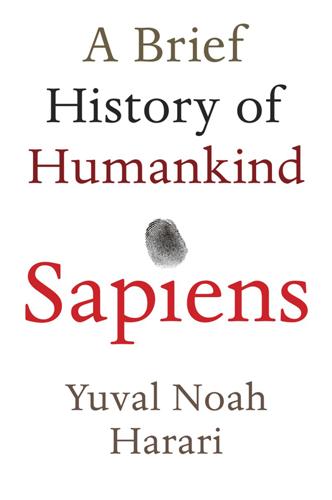
Sapiens: A Brief History of Humankind
by
Yuval Noah Harari
Published 1 Jan 2011
Here, at one of that era’s major crossroads between east and west, north and south, the unification of humankind was an everyday fact. The same process could be observed at work when Kublai Khan’s army mustered to invade Japan in 1281. Mongol cavalrymen in skins and furs rubbed shoulders with Chinese foot soldiers in bamboo hats, drunken Korean auxiliaries picked fights with tattooed sailors from the South China Sea, engineers from Central Asia listened with dropping jaws to the tall tales of European adventurers, and all obeyed the command of a single emperor. Meanwhile, around the holy Ka’aba in Mecca, human unification was proceeding by other means. Had you been a pilgrim to Mecca, circling Islam’s holiest shrine in the year 1300, you might have found yourself in the company of a party from Mesopotamia, their robes floating in the wind, their eyes blazing with ecstasy, and their mouths repeating one after the other the ninety-nine names of God.
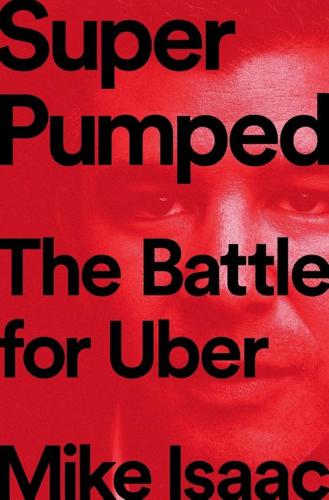
Super Pumped: The Battle for Uber
by
Mike Isaac
Published 2 Sep 2019
Pham, who was responsible for dealing with the fraud, wasn’t a stranger to tough situations. Born in Vietnam in 1967, Pham was thrown into conflict as young as twelve years old, as his mother piled him and his brother into a rickety wooden fishing boat, sailing out amid the rough waters of the South China Sea to escape the violence of the ’79 Sino-Vietnamese War. Pham weathered deadly storms, was robbed by Thai pirates, and felt lucky to land at a refugee camp in Indonesia, even though he was soon shuttled off to an island for other Southeast Asian immigrants that lacked basic sanitation. After finally making it to the United States, Pham shared a small, roach-infested apartment in Maryland with another family while his mother worked multiple jobs to support them.
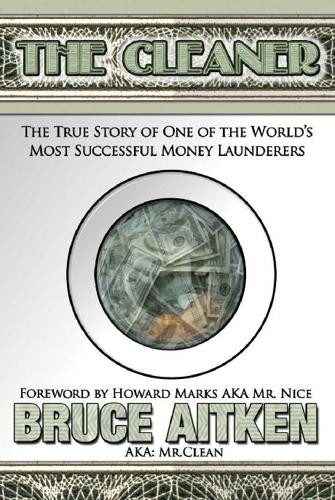
The Cleaner: The True Story of One of the World's Most Successful Money Launderers
by
Bruce Aitken
Published 2 Mar 2017
There you were with incoming rockets blasting all around: Step 1, Call the village chief and ask for permission to bomb the piss out of the Viet Cong; Step 2, Permission granted several hours later; Step 3, Send up the Phantom jets and bomb the hell out of the mountain; Step 4, Kill the plants and the trees. The field hospital was busy that day. It could have been much worse except, fortunately, most of the rockets overshot the base and landed in the South China Sea, a small fact overlooked or unknown as reported by the Wall Street Journal. On the morning I arrived in Chu Lai, I met the AMEX staff member I was to replace. He was a fellow from South Carolina named Harold, and I was to move into his porta-camp, the little housing units provided by the company for the staff.
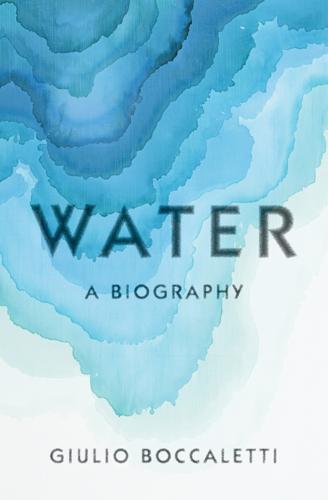
Water: A Biography
by
Giulio Boccaletti
Published 13 Sep 2021
During the winter phase, a large high-pressure system over Siberia pushes cold air southward, replacing tropical storms, drying and cooling north China. The cold air then crashes into the Tibetan Plateau and into the moist warm air of the southeast, generating winter storms and cold surges over the South China Sea. The cycle repeats. The distribution of rain and winds associated with the monsoon was at the heart of the development of early Chinese society. The story of China began in the north, where the hydrology of the Yellow River was controlled by this monsoon. Neolithic communities began settling in the mid-basin around the middle of the fifth millennium BCE, supported by a mix of low-intensity farming, grazing, and foraging.
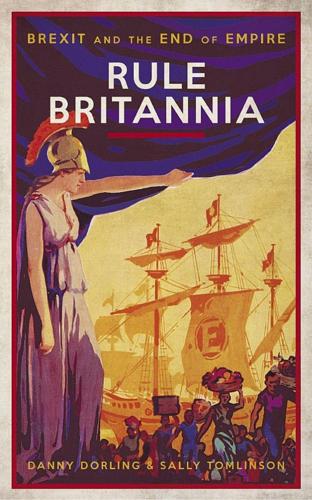
Rule Britannia: Brexit and the End of Empire
by
Danny Dorling
and
Sally Tomlinson
Published 15 Jan 2019
Russia under President Putin is eyeing up possible expansion of territory again, and ‘took back’ Crimea recently. The USA is another empire slowly losing its power and now either contemplating some desperate actions abroad in North Korea, or pretending to be friends with its dodgy leader, while also supporting proxy wars in Syria and the Yemen. In contrast, confident China only worries about its local South China Sea. But even the most patriotic in China are not planning to claim that China is ‘Great’, as some in Britain are so frequently tempted to do. Many people in China have been quietly watching and learning from the follies of Western powers. They have had long enough to do so. HEINEKEN REACHES THE PARTS OTHER MAPS CANNOT REACH In 1992, Freddy Heineken, the Dutch beer magnate, proposed a new map of Europe, a Europe of the regions.

People, Power, and Profits: Progressive Capitalism for an Age of Discontent
by
Joseph E. Stiglitz
Published 22 Apr 2019
Moreover, the fraction of China’s exports that are actually “made in China” is much smaller than for US exports, so a dollar decrease in China’s exports has a much smaller impact on its economy than a dollar decrease in US exports has on the US economy.33 China also begins this trade war with its people more united behind its government; the US begins this trade war with large fractions, perhaps a majority, opposed.34 And finally, there are many other economic and noneconomic actions that China could take, from squeezing American firms operating in China to acting more aggressively in the South China Sea. Of course, everyone is likely to be the loser in the end, with the negative repercussions of protectionism extending far beyond direct economic channels. We need international cooperation on many fronts besides trade. For example, we need South Korea’s and China’s help in dealing with North Korea; we need Europe’s help in dealing with Russia.

Operation Chaos: The Vietnam Deserters Who Fought the CIA, the Brainwashers, and Themselves
by
Matthew Sweet
Published 13 Feb 2018
The only violence he had witnessed in Indochina had been inflicted upon potatoes. * * * VIETNAM WAS THE place the bodies were buried or flown back from, the place where the bombs fell and the air burned. But the Vietnam conflict raged far beyond the borders of a former French colony on the South China Sea. It was an undeclared world war, fought between the representatives of two opposing ideologies to spare them the agony of adding Moscow, Peking, and Washington to a list that had begun with Hiroshima and Nagasaki. Nothing about it was clean or uncomplicated. In 1954, the Geneva Accords split Vietnam into two zones, the Communist north, administered from Hanoi by the revolutionary leader Ho Chi Minh, and the non-Communist south, ruled from Saigon by a succession of Western-backed leaders, who were advised—and sometimes hired and fired—by the hidden hand of the Central Intelligence Agency.

England: Seven Myths That Changed a Country – and How to Set Them Straight
by
Tom Baldwin
and
Marc Stears
Published 24 Apr 2024
The problem was that its military might was concentrated in bases resembling ‘a vast archipelago strewn around the world’ on islands such as Gibraltar and Malta in the Mediterranean; St Helena and Ascension in the Atlantic; Jamaica, Trinidad and Bermuda in the Caribbean. There were the naval outposts of Singapore and Hong Kong in the South China Sea, as well as Perth, Adelaide, Melbourne, Sydney and Wellington in the Pacific.70 A foreign observer at the time concluded that Britain was an ‘artificial’ power whose colonies were held together only ‘through the threads of the fleet … threads that could all be broken or cut’.71 Even at Global Britain’s zenith in the nineteenth century, trade with its imperial possessions was still less than that with its closest neighbours in Europe.72 And all those maps coloured pinkish-red only served to conceal how loose was the empire’s grip on the interior of the lands it nominally possessed.73 As for Plymouth itself, the days when the likes of Drake would sail into the Sound in a ship laden with looted Spanish gold did not last much beyond the sixteenth century.
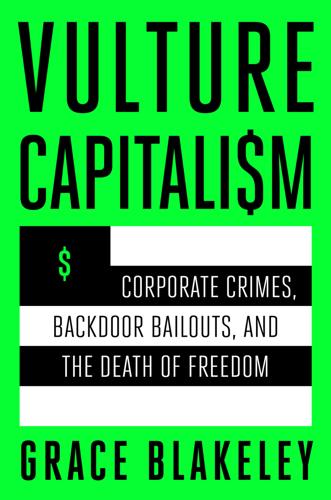
Vulture Capitalism: Corporate Crimes, Backdoor Bailouts, and the Death of Freedom
by
Grace Blakeley
Published 11 Mar 2024
In 2010 the company acquired China’s richest soccer club—Guangzhou FC—and ten years later started construction on the world’s biggest soccer stadium in Guangzhou, at a cost of $1.7 billion.140 It built an agribusiness venture that has invested in more than a hundred pig farms across rural China.141 It launched a bottled water named Evergrande Spring and hired Jackie Chan in its marketing efforts.142 It recently constructed a chain of islands in the South China Sea, which host theme parks, museums, and a variety of other entertainment complexes, and which cost $12.7 billion to construct.143 Many of these investments and acquisitions were financed through debt, and, in a crowded market, Evergrande quickly became China’s most indebted property developer.144 The company started to plug the gaping holes in its finances by selling wealth management products to Chinese consumers through its financial arm, promising returns of more than 11 percent.145 Many Chinese customers, unable to invest abroad, were attracted by the high returns promised by Evergrande, though as the Financial Times reported in September 2021, executives later admitted that “the products were too high risk for ordinary retail investors and should not have been offered to them.”146 In fact, Evergrande had been selling investors shares in shell companies and using the money to finance its day-to-day operations, before using cash from new investors to pay off existing ones.
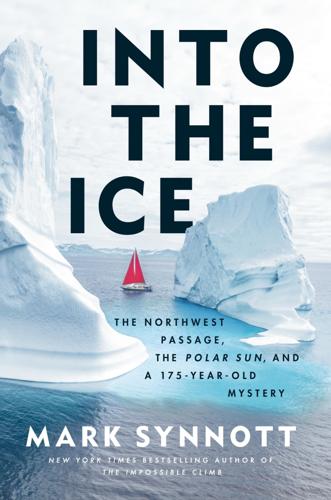
Into the Ice: The Northwest Passage, the Polar Sun, and a 175-Year-Old Mystery
by
Mark Synnott
Published 14 Apr 2025
For two months, Franklin and the rest of the crew survived on a tiny sand spit, nine hundred feet long by fifty feet wide, subsisting on stores they had scavenged from the ship before it went down. When they were finally rescued, Franklin sailed to Canton (Guangzhou) in China, where he bummed a ride back to England with an East India Company merchant vessel, the Earl Camden. While the Earl Camden was sailing in convoy with other company vessels in the South China Sea, it was attacked by a squadron of French warships. The lightly armed Earl Camden was heavily outgunned, but the crewmen fought back so vigorously that they succeeded in repelling the French. The captain, Nathaniel Dance, later praised Franklin, writing that he “should find it difficult…to name anyone who for zeal and alacrity of service and for general good conduct could advance a stronger claim to approbation and reward.”
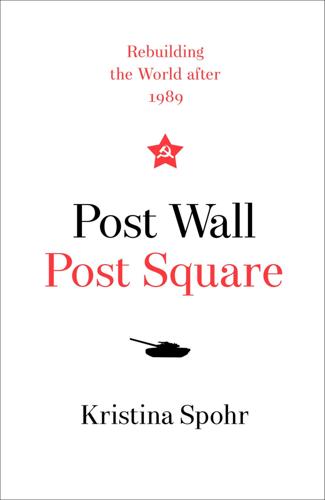
Post Wall: Rebuilding the World After 1989
by
Kristina Spohr
Published 23 Sep 2019
Their lodestar was not Bush’s vision of a new world order, but the national interests of the Central Kingdom as defined by the CCP, bolstering its security, prosperity and great-power status. These interests were asserted with vigour in 1992 – landing troops at key points on the tiny uninhabited Spratly archipelago in the South China Sea to advance Beijing’s territorial claims some 1,000 miles south of the nearest populated Chinese island of Hainan. Not only did the PRC set up ‘sovereignty posts’ on the reefs claimed also by Vietnam, to show that China was taking control of these strategically significant but highly disputed waters – through which passes over half the world’s trade and most of the fuel for Japan, Taiwan and Korea – they signed oil-exploration contracts with a US company on this stretch of the seabed.
…
Putin’s adventurism in Crimea, Ukraine and Syria and his geostrategic project to control the Arctic were flanked by campaigns to manipulate the inner life of liberal democracies through social media – all to regain what he considered Russia’s rightful status as a great power and its legitimate hold over the Eurasian sphere. More significant though less visibly provocative was Xi Jinping’s single-minded translation of China’s demographic and economic power into military might, elbowing out challengers in the South China Sea and embarking on a grandiose project to make China a global superpower by 2050.[23] Dubbed, with innocuous opacity, ‘One Belt, One Road’,[24] this policy was coyly presented as Chinese ‘multilateralism’.[25] Here were two powers engaged in competitive triangularity, focusing for the moment on unsettling the global leadership of the United States with their talk of multipolarity and polycentrism.[26] The seeds of this fundamental geopolitical revision were already present in the early post-Wall, post-Square era.[27] America and its Western partners were slow to appreciate this.
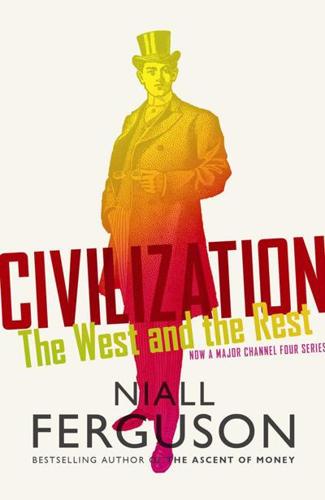
Civilization: The West and the Rest
by
Niall Ferguson
Published 28 Feb 2011
And investment abroad justifies China’s ambitious plans for naval expansion. In the words of Rear Admiral Zhang Huachen, Deputy Commander of the East Sea Fleet: ‘With the expansion of the country’s economic interests, the navy wants to better protect the country’s transportation routes and the safety of our major sea-lanes.’52 The South China Sea is increasingly regarded as a ‘core national interest’ and deep-water ports are projected in Pakistan – in the former Omani enclave of Gwadar – as well as in Burma and Sri Lanka. This is a very different maritime model from Admiral Zheng He’s (see Chapter 1). It comes straight from the playbook of the Victorian Royal Navy.
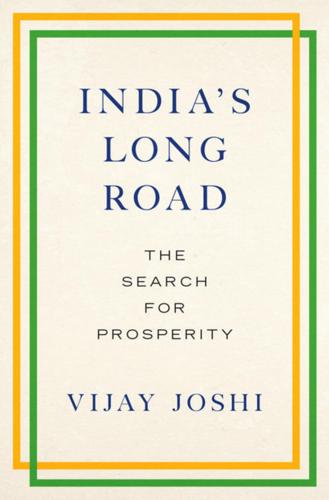
India's Long Road
by
Vijay Joshi
Published 21 Feb 2017
With Pakistan, it is clearly essential to keep trying to reach an accord, while remaining prepared to repel any attempt at armed aggression. On balance, China is the bigger problem. Despite protestations of aiming for a ‘peaceful rise’, it seems determined to establish its dominance not merely in the South China Sea but also over the Indian Ocean. To this end, it has established a network of military and commercial facilities and ports (the so-called ‘string of pearls’) that, in effect, encircle India’s coastline.13 Furthermore, China has plans to build overland transport routes to India’s north and north-west and east: for example, a road linking Sinkiang with Karachi and Gwadar, all the way across disputed mountainous territory that India claims; a railway line from Lhasa, the capital of Tibet, to Kathmandu, the capital of Nepal; and a road linking China and Burma.
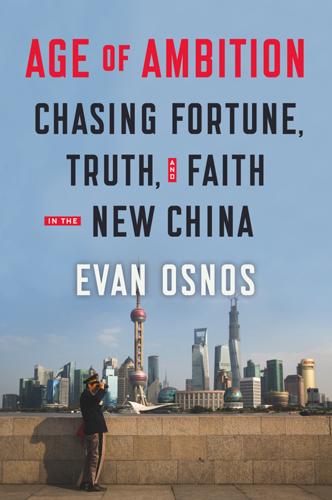
Age of Ambition: Chasing Fortune, Truth, and Faith in the New China
by
Evan Osnos
Published 12 May 2014
A fifty-year-old former barber named Siu Yun Ping found that it stirred his appetite for risk. In the summer of 2007 he began making regular visits from his village in Hong Kong to the city of Macau, the only Chinese territory where it is legal to gamble in a casino. Macau sits on a horn of rocky coastline where the Pearl River washes into the South China Sea. It’s about a third the size of Manhattan, covering a tropical peninsula and a pair of islands that look, on a map, like crumbs flaking off the mainland. Chairman Mao banned gambling in China long ago, but it endures in Macau because of a historical wrinkle: for nearly five hundred years, the city was a Portuguese colony, and when it returned to Chinese control, in 1999, it was entitled to retain some of the flamboyantly libertine traditions that led W.

Data and Goliath: The Hidden Battles to Collect Your Data and Control Your World
by
Bruce Schneier
Published 2 Mar 2015
If we can provide law enforcement people with new ways to investigate crime, they’ll stop demanding that security be subverted for their benefit. Geopolitical conflicts aren’t going away, and foreign intelligence is a singular tool to navigate these incidents. As I write this in the late summer of 2014, Russia is amassing forces against Ukraine, China is bullying Japan and Korea in the South China Sea, Uighur terrorists are killing Han Chinese, Israel is attacking Gaza, Qatar and Turkey are helping Gaza defend itself, Afghanistan is a chaotic mess, Libya is in decline, Egypt is back to a dictatorship, Iran’s nuclear program might be resuming, Ebola is sweeping West Africa, North Korea is testing new missiles, Syria is killing its own people, and much of Iraq is controlled by a nominally Islamic extremist organization known as ISIS.
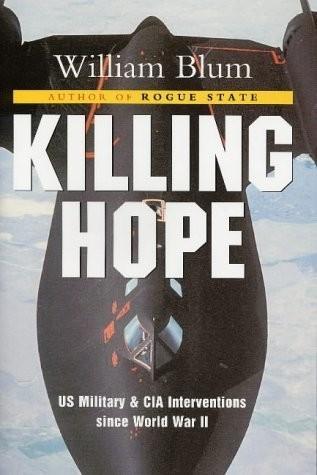
Killing Hope: Us Military and Cia Interventions Since World War 2
by
William Blum
Published 15 Jan 2003
Nevertheless, a plane carrying eight members of the Chinese delegation, a Vietnamese, and two European journalists to the Bandung Conference crashed under mysterious circumstances. The Chinese government claimed that it was an act of sabotage carried out by the US and Taiwan, a misfired effort to murder Chou En-lai. The chartered Air India plane had taken off from Hong Kong on 11 April 1955 and crashed in the South China Sea. Chou En-lai was scheduled to be on another chartered Air India flight a day or two later. The Chinese government, citing what it said were press reports from the Times of India, stated that the crash was caused by two time bombs apparently placed aboard the plane in Hong Kong. A clockwork mechanism was later recovered from the wrecked airliner and the Hong Kong police called it a case of "carefully planned mass murder".
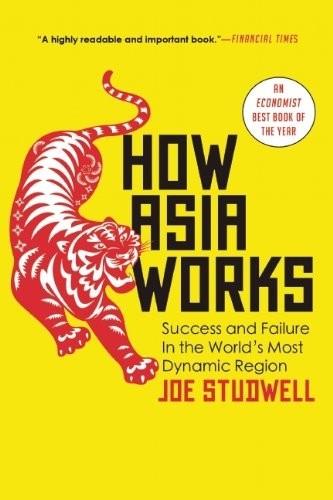
How Asia Works
by
Joe Studwell
Published 1 Jul 2013
Back on the Karak expressway, the miles of large-scale oil palm plantations – which replace the jungle after Bentong and continue to the east coast – is the real story of Malaysian agriculture: in essence, the opposite of the commercially integrated household farming of north-east Asia and China. This is the flimsy foundation on which Mahathir built his industrial policy. It takes three to four hours to traverse the middle of Malaysia from Kuala Lumpur to the shore of the South China Sea. Then, turning north, the Waja crosses the state border into Trengganu. Along the sleepy white sand beaches sit under-utilised, low-rise hotels; inland are yet more oil palm plantations. It is here on the coast, outside the small town of Kemaman, that Mahathir decided to build Malaysia’s biggest steel plant, Perwaja.
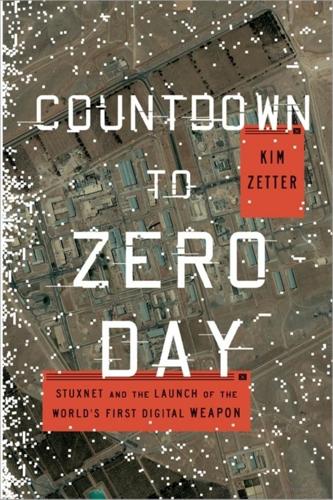
Countdown to Zero Day: Stuxnet and the Launch of the World's First Digital Weapon
by
Kim Zetter
Published 11 Nov 2014
The attackers got in through two unprotected servers and remained undetected for two weeks until workers noticed problems with their machines.23 Cal-ISO officials insisted the breach posed no threat to the grid, but unnamed sources told the Los Angeles Times that the hackers were caught just as they were trying to access “key parts of the system” that would have allowed them to cause serious disruptions in electrical service. One person called it a near “catastrophic breach.” The attack appeared to originate from China, and came in the midst of a tense political standoff between China and the United States after a US spy plane collided in midair with a Chinese fighter jet over the South China Sea. In response to growing concerns about critical infrastructure, and in particular the security of the nation’s power grids, the Department of Energy launched a National SCADA Test Bed program in 2003 at the Idaho National Lab (INL). The goal was to work with the makers of control systems to evaluate their equipment for security vulnerabilities, and was an initiative that ultimately led to the 2007 Aurora Generator Test.24 There are 2,800 power plants in the United States and 300,000 sites producing oil and natural gas.25 Another 170,000 facilities form the public water system in the United States, which includes reservoirs, dams, wells, treatment facilities, pumping stations, and pipelines.26 But 85 percent of these and other critical infrastructure facilities are in the hands of the private sector, which means that aside from a few government-regulated industries—such as the nuclear power industry—the government can do little to force companies to secure their systems.

Accelerando
by
Stross, Charles
Published 22 Jan 2005
In these tense later days of the War Against Unreason, impossible new shapes move in the sky; Amber gapes upward as a Shenyang F-30 climbs at a near-vertical angle, a mess of incomprehensibly curved flight surfaces vanishing to a perspective point that defies radar as well as eyeballs. The Chinese – fighter? missile platform? supercomputer? – is heading out over the South China Sea to join the endless patrol that reassures the capitalist world that it is being guarded from the Hosts of Denial, the Trouble out of Wa'hab. For the moment, she's merely a precocious human child. Amber's subconscious is off-lined by the presence of forceful infowar daemons, the Chinese government censorbots suppressing her cognition of their deadliest weapons.
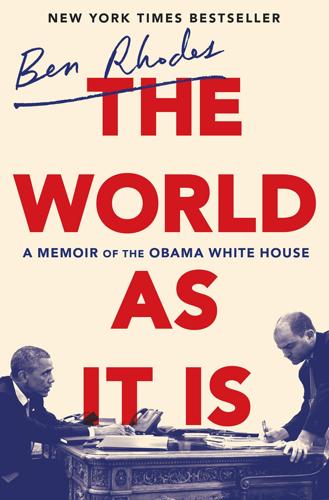
The World as It Is: A Memoir of the Obama White House
by
Ben Rhodes
Published 4 Jun 2018
We’d go to South Korea and discuss ways to increase pressure on North Korea. We’d go to Malaysia, something of a swing state in Southeast Asia, which we were bringing closer through TPP. And we’d end in the Philippines, a U.S. ally that was mired in territorial disputes with China over maritime boundaries in the South China Sea. Before leaving, we had a meeting in which a guy who focused on strategic planning at the NSC reminded us that the most important foreign policy work often involved incremental advances—hitting singles and doubles, as he put it. Obama leaned forward in agreement. “After I was reelected,” he said, “I pulled together a group of presidential historians that I have in from time to time.”
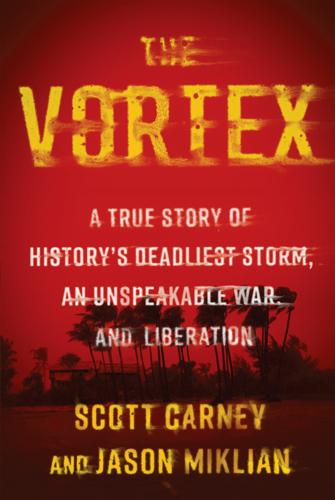
The Vortex: A True Story of History's Deadliest Storm, an Unspeakable War, and Liberation
by
Scott Carney
and
Jason Miklian
Published 28 Mar 2022
Richard Nixon cared little about East Pakistan in February 1971, and it was about as low on the American geostrategic agenda as humanly possible. After all, that was a big reason why Candy and John Rohde elected to move there in the first place. Ten months later, Nixon was ready to start a nuclear war with the USSR to protect it. Today, if a megastorm hits Mozambique, the South China Sea, or Yemen, it’s unlikely to be front-page news. But we ignore possible black-swan effects to our peril. The Great Bhola Cyclone didn’t directly liberate Bangladesh; it only flicked the first domino over. It’s the placement of the other dominoes—and the reasons why they are there—that determine if a storm leads to war.

Corporate Warriors: The Rise of the Privatized Military Industry
by
Peter Warren Singer
Published 1 Jan 2003
It used Executive Outcomes 14 THE RISE to carry out commando operations, while many other firms were used to support the international intervention into once Indonesian-held EastTimoiv>0 These included UN-employed intelligence and security firms and Dyncorp, which provided helicopter and satellite network communication support. The Indonesian government also hired Strategic Communication Labora- tories, a firm that specializes in psychological warfare operations, to help it respond to outbreaks of secessionist and religious violence.51 Offshore, violent attacks on commercial shipping in the South China Sea are on the rise. As a result, private firms such as Trident have also begun to take on anti- piracy duties. Illustrated by its own reliance on logistics outsourcing during the East Timor operation, Australia is the country at the forefront of the trend toward use of PMFs within Asia. Like Britain, it has announced a plan to turn over the entirety of certain military services to private companies/*2 Perhaps most interesting, though, is Australia's privatization of military recruiting.

Gonzo: The Life of Hunter S. Thompson
by
Corey Seymour
,
Johnny Depp
and
Jann S. Wenner
Published 31 Oct 2007
But you can expect my copy flow to be interdicted, as they say, at any moment from now on and in fact you may have to use this stuff as either the ending for the piece or as some kind of intro/editor’s note, explaining why my story sounds so jerky, garbled and unfinished. We are working under extreme tension here. LOREN JENKINS Well, the shit came down, the North Vietnamese came into town, and we all evacuated off the roof of the American embassy in helicopters. I spent four days on a carrier in the South China Sea sailing to Subic Bay in the Philippines and made my way through to Bali, Sanur Beach, the Tandjung Sari Hotel. I checked in to a nice little two-story bungalow with the rooms upstairs and a sort of salon downstairs, right on the beach, with a thatched roof, thinking, “War’s over, all done.” But on the first night, at about three in the morning, there’s this racket and gunfire and loud sounds and explosions.
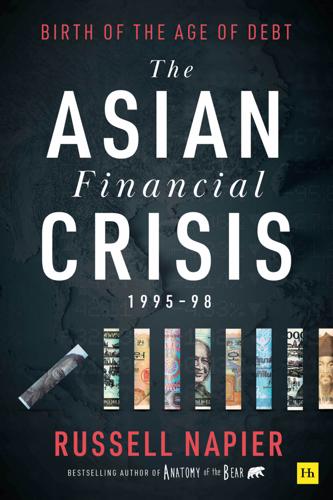
The Asian Financial Crisis 1995–98: Birth of the Age of Debt
by
Russell Napier
Published 19 Jul 2021
However, generations of Asian savers and investors can have built up no such touching faith in the protection of their assets by the adjudication of independent third parties. The history of Asian capital is the history of appropriations and thefts. The notorious pirate Mrs Cheng was able to put 50,000 pirates afloat in the South China Seas by 1805 and the state was powerless to protect any citizen or their business. While in the 19th century the Chinese businessman was powerless against the thieves, in the 20th century he is powerless against the appropriations of his own government. Given this background, the attitude towards asset utilisation in Asia is likely to be radically different from that which has developed in the West.
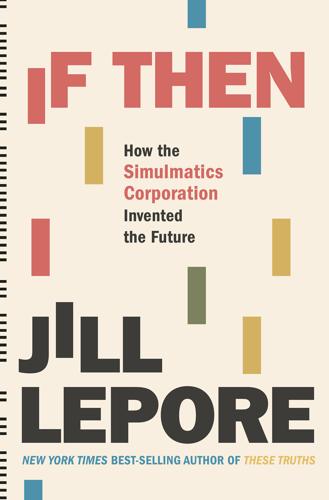
If Then: How Simulmatics Corporation Invented the Future
by
Jill Lepore
Published 14 Sep 2020
Most of them had been there since 1954, when the Geneva Conference divided the country at the seventeenth parallel, and Catholics had fled to the south.77 Pool and de Grazia had come to see Nguyen Van Thu, forty-six, a visitor himself, a young priest with slicked-black hair and a grave stare. He worked for Simulmatics. Nguyen Van Thu was born in a fishing village in Thanh Hoa Province, on the coast of the South China Sea, the son of a fisherman and one of ten children. He’d gone to seminary in North Vietnam during an era of terrible famine. He’d changed his name to Joseph Hoc and been ordained in Rome in 1949, where he’d gone as part of a delegation seeking ways to halt the spread of communism.78 After his ordination at the Vatican, he’d traveled to the United States, where he studied at Worcester’s College of the Holy Cross, Catholic University, and Stanford, earning a doctorate in sociology in 1953.

Project Hail Mary
by
Andy Weir
Published 15 May 2021
* * * — Technically the carrier was named the People’s Liberation Army Navy Gansu. Why their navy has “Army” in its name I’ll never know. Regardless, people stopped calling it that and started calling it Stratt’s Vat. Despite objections from the sailors aboard, the name stuck. We wandered around the South China Sea, never getting too close to land. I’d spent a blissful week doing nothing but science. No meetings. No distractions. Just experimentation and engineering. I’d forgotten how much fun it was to get immersed in a task. My first breeder prototype had demonstrated another successful run.
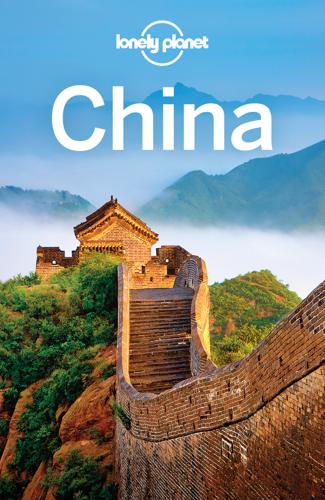
Lonely Planet China (Travel Guide)
by
Lonely Planet
and
Shawn Low
Published 1 Apr 2015
In Lingshui, after leaving the station’s main exit, cross the road and head right. Walk a few blocks and catch a minibus in front of the Bank of China to Xincun (¥3, 40 minutes). In Xincun, catch a motorcycle taxi or walk the 1km to the harbour. Sanya %0898 / Pop 685,400 China’s premier beach community claims to be the ‘Hawaii of China,’ but ‘Moscow on the South China Sea’ is more like it. The modern, hyper-developed resort city has such a steady influx of Russian vacationers these days that almost all signs are in Cyrillic as well as Chinese. Middle-class Chinese families are increasingly drawn to Sanya’s golden shores as well, which means the beaches are just as full at night as they are during the day (due to the Chinese aversion to sunburn).
…
Close to shipping lanes, surrounded by well-stocked fishing grounds and near to the Chunxiao gas field, the islands have aggravated Chinese and Japanese nationalism and overseen a growing mutual antipathy. Occasionally violent anti-Japanese protests in China have been the result. A festering dispute has also seen growing tensions between China and Vietnam, the Philippines and other nations over the control of waters, islands, reefs, atolls and rocky outcrops in the South China Sea. While keeping an eye on maritime issues, at home President Xi Jinping has to deal with growing unrest in Xinjiang province, which has led to terror attacks in both Yunnan and in front of the Gate of Heavenly Peace in Beijing, as well as a spate of brazen bombings and attacks in Xinjiang itself.
…
China’s Landscapes The Land The world’s third-largest country – on a par size-wise with the USA – China swallows up an immense 9.5 million sq km, only surpassed in area by Russia and Canada. Straddling natural environments as diverse as subarctic tundra in the north and tropical rainforests in the south, this massive land embraces the world’s highest mountain range and one of its hottest deserts in the west, to the steamy, typhoon-lashed coastline of the South China Sea. Fragmenting this epic landscape is a colossal web of waterways, including one of the world’s mightiest rivers – the Yangzi (Chang Jiang). Over 1.2 million tons of transparent plastic sheeting is used annually by China's farmers to reduce water loss from evaporation, but much of the plastic is later ploughed into the earth, polluting the soil and decreasing crop yields.
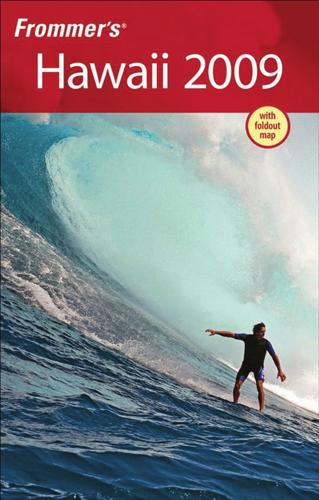
Frommer's Hawaii 2009
by
Jeanette Foster
Published 2 Jan 2008
On the main strip, across from Sunnyside Market, you’ll find the recently expanded Kela’s Glass Gallery (& 808/822-4527), the island’s showiest showplace for handmade glass in all sizes, shapes, and prices, with the most impressive selection in Hawaii. Go nuts over the vases and studio glass pieces, functional and nonfunctional, and then stroll along this strip of storefronts to Hula Girl (& 808/822-1950) and South China Sea Trading Company (& 808/8238655), and see if you can resist their wares. South China’s Asian accents make you want to move in for good. You’ll find everything from inexpensive bead necklaces and coconut rice paddles to kitchen accessories and sumptuous Indonesian silk sarongs, all of high quality and at reasonable prices; at its furniture store in the Kauai Design Center (& 808/822-9444), it’s all mosquito netting and carved doors and coconutinlaid armoires.
…
Patrick’s Day Parade (Oahu), 55 Salt Pond Beach Park (Kauai), 590, 598 Sandal Tree (Maui), 480 Sand Castle Building Contest (Oahu), 54 Sandwich Isle Divers (Big Island), 314–315 Sandy Beach Molokai, 505 Oahu, 180, 228 San Marga Iraivan Temple (Kauai), 615 Sansei Seafood Restaurant & Sushi Bar (Maui), 489 Sans Souci Beach (Oahu), 177 Sans Souci State Recreational Area (Oahu), 177 Science City (Maui), 468 Sconees (Honolulu), 240 Scorpions, 66 Scotch Mist Sailing Charters (Maui), 440 Scuba diving, 79 best places for, 9–10 Big Island, 311, 314–315 Kauai, 597–598 Lanai, 534 Maui, 442, 444–445 Molokai, 505 Oahu, 186–187 Seafood, 46–47 Sea House Restaurant (Maui), 489 Sea life, 37–39 Sea Life Park (Oahu), 212–213 Sea Quest Snorkeling and Rafting Adventures (Big Island), 315 Seasickness, 67 Seconds to Go (Big Island), 358 Segway tours, Oahu, 202 16_285558-bindex.qxp 8/11/08 10:52 PM Page 657 INDEX Senator Fong’s Plantation & Gardens (Oahu), 232 Senior travelers, 71 Seven Sacred Pools (Maui), 473–474 Sharks, 39, 68 Oahu, 188 Shark’s Cove (Oahu), 187 Sheraton Caverns (Kauai), 598 Shipwreck Beach (Lanai), 534 Shop Pacifica (Honolulu), 244 Shopping Big Island, 349–362 Lanai, 541–543 Maui, 475–486 Molokai, 518–521 Oahu, 237–249 Shops at Mauna Lani (Big Island), 355 The Shops at Wailea (Maui), 482 Shung Chong Yuein (Honolulu), 219 Sierra Club, Hawaii Chapter of the, 75, 78 Kauai, 600 Maui, 448 Oahu, 190 Sig Zane Designs (Big Island), 360 Silk Road Gallery (Big Island), 357 Silver Moon Emporium (Oahu), 248 Silversword, 36, 468 Skyline Trail (Maui), 451 Slaughterhouse (Mokuleia Beach; Maui), 441 Sleeping Giant (Kauai), 618 The Sleeping Giant Trail (Kauai), 604–605 Sliding Sands Trail (Maui), 448–449 Smith Bronte Landing Site (Molokai), 517 Smoking, 53, 636 Snorkel Bob’s Big Island, 310, 315 Kauai, 594, 595 Maui, 432, 439, 442 Oahu, 185 Snorkeling, 79–80 best places for, 9–10 Big Island, 311–312, 315 Kauai, 598 Lanai, 534 Maui, 439–440, 442–443 Molokai, 505–506 Oahu, 187 Snuba Big Island, 315–316 Maui, 439 Society of Seven (Waikiki), 254 Sony Open (Oahu), 54 Soul of the Sea (Molokai), 520 South China Sea Trading Company (Kauai), 627 South Kona (Big Island) accommodations, 271–272 restaurants, 291–293 shopping, 353–354 sights and attractions, 329–331 South Kona Coast (Big Island), 259 South Kona Fruit Stand (Big Island), 354 South Maui accommodations, 392–402 Kihei, 392–399 Makena, 402 Wailea, 399–402 beaches, 433–438 brief description of, 372–373 golf, 453–454 nightlife, 489–490 restaurants, 421–426 shopping, 482 sights and attractions, 462–468 South Pacific Kayaks (Maui), 441 South Point (Big Island) accommodations, 284–285 attractions, 349 beaches, 307, 310 restaurant, 305–306 South Shore Tiki Lounge (Maui), 489 Spas, best, 19–21 Spats (Maui), 489 Special events and festivals, 53–61 SpeediShuttle (Big Island), 262 Spencer Beach Park (Big Island), 315 Spinning Dolphin Charters of Lanai, 534–535 Sportfish Hawaii Kauai, 595, 596 Maui, 443–444 Oahu, 188 Sportfishing.
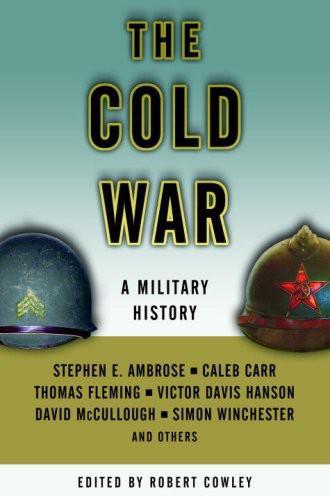
The Cold War
by
Robert Cowley
Published 5 May 1992
While the marine infantry and artillery struggled against their NVA counterparts, an astonishing array of combat, transport, and intelligence-gathering aircraft crisscrossed the skies over the plateau. Marine and navy A-6 Intruders, A-4 Skyhawks, and air force F-4 Phantoms and F-105s—indeed, planes from all over South Vietnam, Thailand, and even aircraft stationed on carriers in the South China Sea—were ready for action should they be called on by either the Tactical Air Direction Center of the First Marine Air Wing or the 7th Air Forces Airborne Command and Control Center, both of which orchestrated the air war (not without friction) during the siege. And then there were the B-52 bombers.

The Relentless Revolution: A History of Capitalism
by
Joyce Appleby
Published 22 Dec 2009
The trade in silks and spices from the East Indies enticed pirates because one such prize would pay the outfitting cost of an entire voyage. Turkish pirates preyed on ships in the Mediterranean, though the pashas of Tripoli later found it more rewarding to exact tribute in formal treaties. Piracy also flourished in the Red Sea, Indian Ocean, the Strait of Malacca, and the South China Sea, but especially in the Caribbean because of the allure of the gold and silver carried home by the Spanish. Jumping ahead for a minute, we can see that as the volume of legitimate trade increased, the sober, solidly middle-class side of commerce asserted itself. Merchants got tired of losing valuable cargoes to pirates and having to pay high insurance premiums even when they didn’t lose their ships.
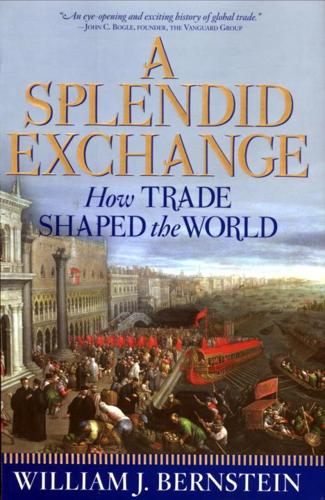
A Splendid Exchange: How Trade Shaped the World
by
William J. Bernstein
Published 5 May 2009
During the seven centuries between the death of the Prophet Muhammad and the Renaissance, the Muslim states of Europe, Asia, and Africa outshone and towered over western Christendom. Muhammad's followers dominated the great conduit of long-range world commerce, the Indian Ocean, and in the process spread his powerful message from west Africa to the South China Sea. Then, with breathtaking speed, a newly resurgent West took control of global trade routes in the decades following the first roundings of the Cape of Good Hope by Bartholomew Diaz and Vasco da Gama. Can we understand these events under the larger banner of the history of trade? The great national trading organizations, particularly the English and Dutch East India companies, spearheaded Europe's commercial dominance and made world trade the nearly exclusive province of large corporate entities and, in the twentieth century, of the multinational corporation.

The Rise and Fall of Nations: Forces of Change in the Post-Crisis World
by
Ruchir Sharma
Published 5 Jun 2016
It is another big plus that the major media are not talking up the “South Asian Tigers.” At least not yet. Southeast Asia Outside of the Indian subcontinent, there is no region in the world where every country is enjoying reasonably high growth with stable inflation. Next door in Southeast Asia, the picture for the nations clustered around the South China Sea is the usual mix of good, average, and ugly. The region is home to one of the most widely overlooked success stories in the world, the Philippines, which is five years into a run of strong growth, yet shows none of the signs of excess—whether in credit, or investment, or inflation, or current account deficits—that normally signal the end.
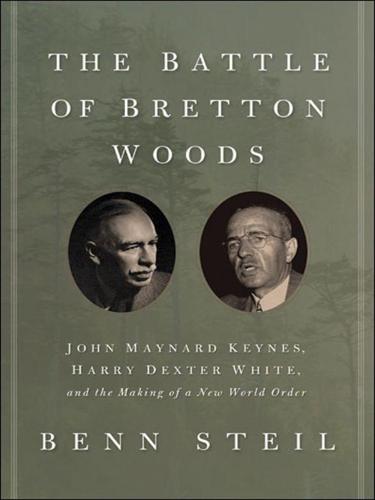
The Battle of Bretton Woods: John Maynard Keynes, Harry Dexter White, and the Making of a New World Order
by
Benn Steil
Published 14 May 2013
It is tempting to fall back on eighteenth-century Enlightenment thinking, of Immanuel Kant and David Hume in particular, and to imagine that commercial entanglement gives China and the United States sufficient interest in a stable international order that neither would risk provoking a rupture in order to change fundamentally the balance of geopolitical prerogatives between them. This would include the monetary order, and not just the geopolitics of territorial sovereignty in the South China Sea and control of global strategic resources such as energy. Yet it is perhaps equally plausible that such a rupture is inevitable, in the same way that British Foreign Office official Eyre Crowe argued that it was between Britain and Germany back in 1907. Irrespective of Germany’s intentions, or stated intentions, Crowe argued, Germany had an unmitigated interest in creating “as powerful a navy as she can afford,” and the very existence of such a navy was “incompatible with the existence of the British Empire.”
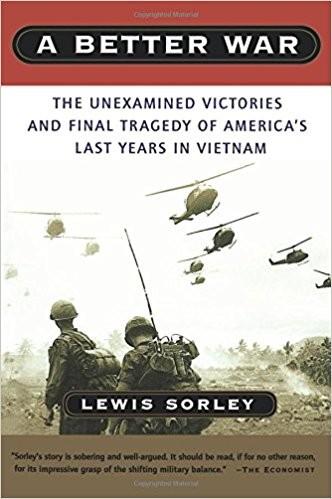
A Better War: The Unexamined Victories and Final Tragedy of America's Last Years in Vietnam
by
Lewis Sorley
Published 2 Jun 1999
ARMY CENTER OF MILITARY HISTORY With South Vietnam in its death throes, President Gerald Ford—who earlier had given amnesty to those who dodged the draft to avoid service in Vietnam—gratuitously announced that, as far as the United States was concerned, the war was finished. U.S. ARMY CENTER OF MILITARY HISTORY With their country near final collapse, South Vietnamese refugees crowd the U.S. merchant ship Pioneer Contender in the South China Sea. In the war’s final days the U.S. evacuated 130,000 at-risk South Vietnamese. INDOCHINA ARCHIVE, UNIVERSITY OF CALIFORNIA AT BERKELEY On April 30, 1975, this North Vietnamese Army tank crashed through the gates of Independence Palace in Saigon. The war was over. North Vietnam’s long quest to subjugate all of Vietnam under its authority was finally crowned with success. 23 Final Days DECLINING U.S.
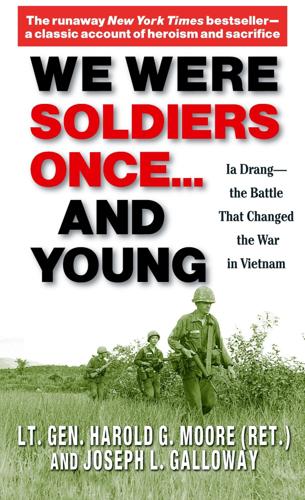
We Were Soldiers Once...and Young: Ia Drang - the Battle That Changed the War in Vietnam
by
Harold G. Moore
and
Joseph L. Galloway
Published 19 Oct 1991
That attack, in turn, would draw an ARVN relief column of troops and tanks out of Pleiku and down Route 14, thence southwest on the one-lane dirt track called Provincial Route 5--where a regiment of People's Army troops would be waiting in a carefully prepared ambush. Once the ARVN relief forces were destroyed and Plei Me camp crushed, the victorious North Vietnamese army regiments would then take Pleiku city and the way would be clear to advance along Route 19 toward Qui Nhon and the South China Sea. Whoever controls Route 19 controls the Central Highlands, and whoever controls the Highlands controls Vietnam. By early 1966, the North Vietnamese commanders were certain, South Vietnam would be cut in two and trembling on the verge of surrender. The North Vietnamese preparations were well under way by the fall of 1964, while Lyndon B.
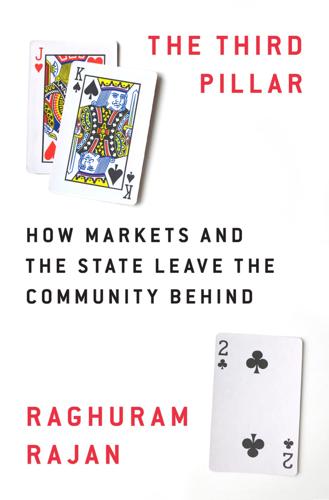
The Third Pillar: How Markets and the State Leave the Community Behind
by
Raghuram Rajan
Published 26 Feb 2019
Similarly, new China-sponsored multilateral financial institutions like the Asian Infrastructure Investment Bank make the United States concerned that China is undercutting existing multilateral institutions that the United States dominates. China’s hard power, as demonstrated by its militarization of islands in the South China Sea, and its soft power as evidenced by its One Belt, One Road initiative to build out infrastructure connectivity across land and sea from China, causes yet more unease in Washington. The reality is that China’s rise cannot, should not, be stopped. China has to be accommodated, especially in global governance structures.

Beyond: The Astonishing Story of the First Human to Leave Our Planet and Journey Into Space
by
Stephen Walker
Published 12 Apr 2021
On March 23, the same day that Bondarenko died, the president openly challenged the Soviets in a press conference to stop supplying arms to the rebels. If they did not, he warned, ‘those who support a genuinely neutral Laos will have to consider their response’. To back up that challenge he sent the US Seventh Fleet to the South China Sea along with helicopters and a further two hundred marines who happened to have been in Japan performing as extras for the movie Marines, Let’s Go!, and who abruptly disappeared from the set. Nor was Laos the only flashpoint. There was Cuba too, at just ninety miles from Key West, Florida, a truly next-door danger with its Communist leader Fidel Castro.
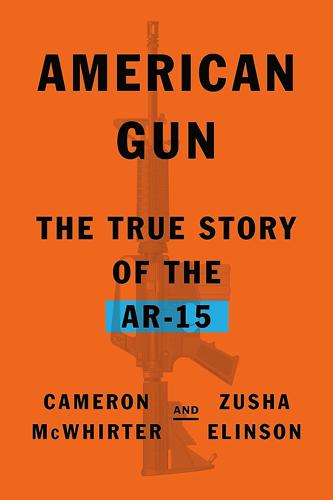
American Gun: The True Story of the AR-15
by
Cameron McWhirter
and
Zusha Elinson
Published 25 Sep 2023
The article made no mention of jammed rifles. Back on the ships after the Hill Fights, many Marines panicked about having to go back into combat with M16s. “I never want to see one again as long as I live. I hated it,” Monahan said. At one point, he dismantled his rifle and threw a piece of it into the South China Sea to avoid having to fight with the weapon. Al White recalled after the battle handing in the rifle on the ship, and the officer in charge giving him a hard time because the serial number didn’t match the one he was assigned. “He really started eating my ass,” White recalled. “I said, ‘It’s up on that hill.
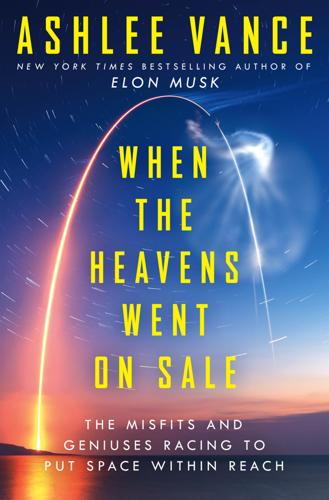
When the Heavens Went on Sale: The Misfits and Geniuses Racing to Put Space Within Reach
by
Ashlee Vance
Published 8 May 2023
Other scientists survey forests and pinpoint the areas most at risk for wildfires, which helps them suggest places to thin or burn trees. Meanwhile, the people charged with protecting California’s public lands turn to the satellites to locate illegal drug-growing operations. Open-source analysts have presented reports on the construction of China’s first homemade aircraft carrier, its takeover of islands in the South China Sea, and its expansion of Uighur reeducation centers. In such cases, Planet’s images typically end up on the front pages of newspapers such as the Wall Street Journal and the New York Times, where they bolster the stories and make them more visceral for readers. Similar work has led to stories on the discovery of remote missile facilities in Iran, the construction of Tesla’s enormous battery factory in Nevada, and attacks on Saudi Arabian oil refineries.
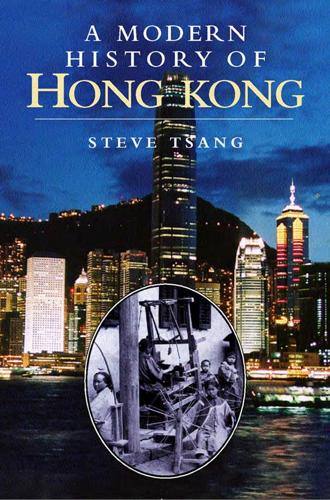
A Modern History of Hong Kong: 1841-1997
by
Steve Tsang
Published 14 Aug 2007
Mirs Bay Ping Chau ue Mun Passage 114˚20'E 114˚20'E Lei Y an ong Shek O Group ve oi in Chai W o T Kwun T P Res. Sai Kung North Point ong Sha T Tolo Harbour Kok Plover Co Island Stanley au . Hong K (ceded 1842) an ) Sham Shui Po ORIES Sha T Fanling Sheung Shui Kwai Chung SOUTH CHINA SEA Tai Po ORIA Tsuen W i Lamma Is (leased 1898 KOWLOON (ceded 1860) ai Mo ShanT VICT Aberdeen 3143 ft (958m) NEW TERRIT Tsing Y ictoria Harbour PROVINCE V Cheung Chau GUANGDONG uen LongY 114˚E o 114˚E eak Mui W . uen MunT o Is Lantau P 3,064 ft (934m) 10 miles Deep Bay Sok Airport Lantau Island Tai O 10 kms 5 New International (to be completed 1998) The Colony of Hong Kong 1997 0 0 22˚20'N Part I The Foundations of Modern Hong Kong Chapter 1 War and Peace The Crown Colony of Hong Kong was a product of the First Anglo-Chinese War (1839–42), popularly known as the ‘Opium War’.

Aerotropolis
by
John D. Kasarda
and
Greg Lindsay
Published 2 Jan 2009
, China’s will be the next to gawk at Times and Trafalgar squares, Notre-Dame and Niagara Falls, taking in the scenery through their cell phones. Wait until a hundred million people are in line ahead of you at Disneyland—you’ll see it’s a small world after all. Millions more may never leave China, and they won’t have to. The government is commissioning pleasure domes as fast as factories. On Hainan Island in the South China Sea—an island the size of Belgium with the climate of Hawaii—the State Council has decreed a “test case” in developing an “internationally competitive tourist destination,” which developers have taken as their cue to build Miami by way of Macau. One is single-handedly building twenty-two golf courses—from links to desert to one modeled on Augusta National—lined with shopping malls and luxury villas.
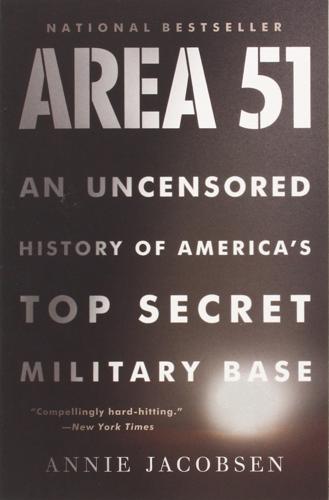
Area 51: An Uncensored History of America's Top Secret Military Base
by
Annie Jacobsen
Published 16 May 2011
Bevacqua had arrived on Kadena the month before, having been selected to fly the Air Force version of the Oxcart, the SR-71. “All I had been told that day was that someone was missing,” Bevacqua remembers. “I didn’t have a need to know more. But I think I knew that the pilot was CIA.” The downed pilot, he learned, might be floating somewhere in the South China Sea, approximately 520 miles east of the Philippines and 625 miles south of Okinawa. “As I set out, my heart was pumped up and I was thinking, Maybe I will find this guy. I remember anticipation. Hopeful anticipation of maybe seeing a little yellow life raft floating somewhere in that giant sea.” Instead, Bevacqua saw nothing but hundreds of miles of open water.

May We Be Forgiven
by
A. M. Homes
Published 14 Jun 2012
He jumps on his pickle barrel like a little girl. My mother has to chase the mouse like a big cat. Can I ask you a question?” “Of course.” “What do you like so much about China?” “No one has ever asked me that before. This may sound odd, but I like how big it is—China has everything from Mount Everest to the South China Sea, and how many millions of people live there, how industrious they are, the depth of the history, how ancient, beautiful, mysterious, and other it is.” “Have you ever been there?” she asks. “No,” I say. “Have you?” She shakes her head no. “My parents tell me they never want to go back, that what is there is from long ago, and that life is very hard.
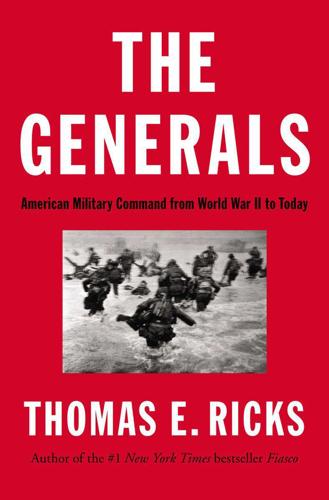
The Generals: American Military Command From World War II to Today
by
Thomas E. Ricks
Published 14 Oct 2012
“My answer is a qualified ‘yes,’” responded Twining, who thought “about three A-bombs” would take care of the Indochina problem. If it came to a vote, it looked as though the Joint Chiefs would favor air strikes. Two American aircraft carriers, the Boxer and the Philippine Sea, steamed in the South China Sea with small nuclear bombs in their weapons lockers. But what Ridgway lacked in votes he made up for in energy. “My answer is an emphatic and immediate ‘NO,’” he wrote in his own memo. “Such use of United States armed forces . . . would constitute a dangerous strategic diversion of limited United States military capabilities, and would commit our armed forces in a non-decisive theatre to the attainment of non-decisive local objectives,” he told his fellow members of the Joint Chiefs on April 6, 1954.

This Is How They Tell Me the World Ends: The Cyberweapons Arms Race
by
Nicole Perlroth
Published 9 Feb 2021
In 2018, U.S. officials watched in horror as Beijing successfully tested a new submarine-launched ballistic missile and began moving ahead with a new class of subs that could be equipped with nuclear-armed missiles. Meanwhile, the game of chicken between American and Chinese jets and warships in the South China Sea was coming dangerously close to triggering a broader conflict. Both countries abandoned long-standing lines of communication, the kind of measures needed to prevent minor incidents from escalating into war. By 2019 their ships and jets had faced off in eighteen near-collisions. And by 2020, American officials accused China of secretly testing nuclear weapons in violation of longstanding nonproliferation agreements.
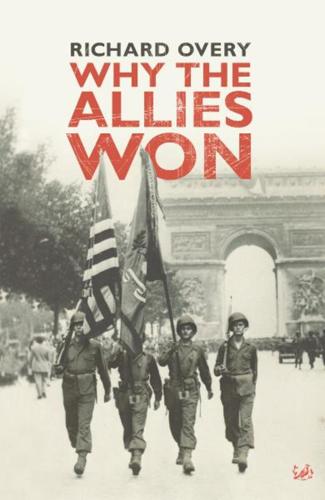
Why the Allies Won
by
Richard Overy
Published 29 Feb 2012
Japan ignored the warning sent after the Atlantic meeting, and on 7 December attacked the American Pacific Fleet at Pearl Harbor and British possessions in the Far East. Churchill, confident that battleships could still defend themselves against air attack, sent the Prince of Wales and Repulse to Singapore. Both were caught by Japanese torpedo bombers in the South China Sea on 9 December and sunk. Admiral Phillips and Captain Leach stood at salute on the bridge of the Prince of Wales as it disappeared into the sea. ‘In all the war’, Churchill later wrote, ‘I never received a more direct shock.’ After the Japanese attacks there were no major British or American warships in the whole of the Pacific or Indian Oceans.
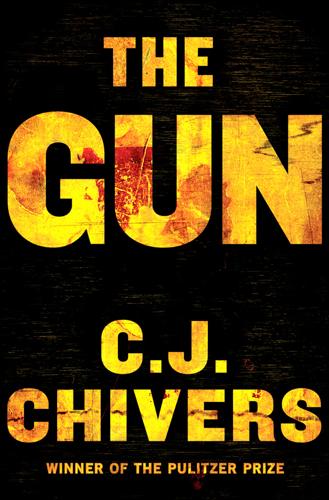
The Gun
by
C. J. Chivers
Published 12 Oct 2010
In front of them was their next destination: the village of Ap Sieu Quan, a narrow cluster of buildings surrounded by paddies and dikes just south of the demilitarized zone in the Quang Tri province of Vietnam. From out in the field, the village looked deserted in the rising late-morning heat. The Marines sensed menace awaiting. At least three North Vietnamese Army battalions had infiltrated the area, an agricultural belt in the coastal lowlands where the jungles and mountains drained into the South China Sea. Many of the NVA units were patrolling. Others were dug in and concealed. Hotel Company’s Second Platoon had been hit by a North Vietnamese unit in Ap Sieu Quan a short while before. Now the company was converging. The Marines were exposed as they moved. They saw the low-slung buildings ahead.
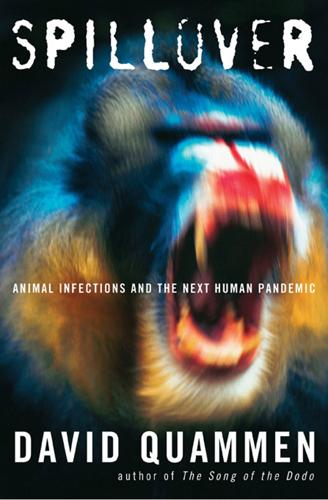
Spillover: Animal Infections and the Next Human Pandemic
by
David Quammen
Published 30 Sep 2012
Bats too are an ancient part of the native fauna; the fossil record in Queensland shows that small bats have been there for at least 55 million years, and flying foxes may have evolved in the region during the early Miocene, about 20 million years ago. Human presence is more recent, dating back only tens of millennia. More precisely, humans have inhabited Australia since the pioneering ancestors of Australian aboriginal peoples first made their way, island hopping daringly in simple wooden boats, from southeastern Asia by way of the South China Sea and the Lesser Sunda Islands to the northwestern coast of the island continent. That was at least forty thousand years ago, possibly much earlier. So three of the four principals in this complex interaction—flying foxes, Hendra virus, and people—have probably coexisted in Australia since the Pleistocene era.
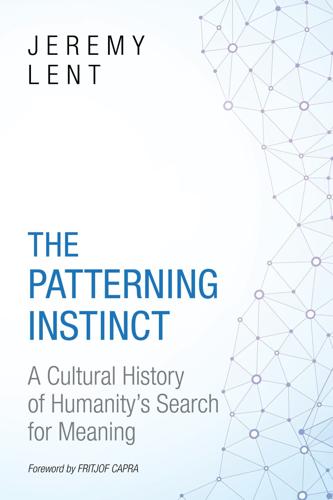
The Patterning Instinct: A Cultural History of Humanity's Search for Meaning
by
Jeremy Lent
Published 22 May 2017
Whereas amongst our people the noblest and bravest become soldiers, in China it is the vilest and most cowardly who attend to matters of war.”26 What emerges is a contrast not just between European and Chinese values but between the unique European approach to power and the norms of other major civilizations. Another illuminating example can be found in the Portuguese disruption of traditional trading practices in South Asia in the early sixteenth century. For many centuries, the four sea powers that plied the ocean stretching from the Arabian to the South China Seas all had a shared interest in trading, and they maintained unwritten rules for peaceful coexistence. They would respect each other's ships and often carried goods and passengers for each other. However, as soon as the first Portuguese sailors came across this peaceful situation in 1498, everything changed forever.
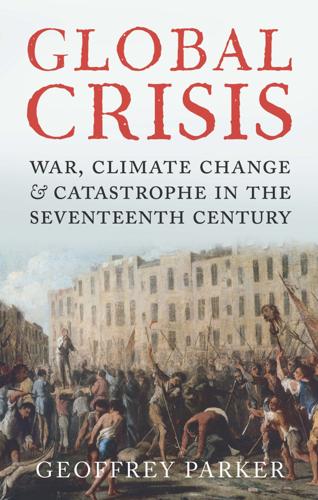
Global Crisis: War, Climate Change and Catastrophe in the Seventeenth Century
by
Geoffrey Parker
Published 29 Apr 2013
Then, just when Coxinga seemed about to accept these terms, the envoys sent by Beijing to handle the final negotiations bluntly stated: ‘If you do not shave your head, then you cannot receive the [emperor's] proclamation. If your head is not shaven, then we need not even meet.‘88 Outraged, Coxinga used his warships – some of them armed with Western-style artillery – to dominate all trade in the South China Sea until by 1659 he had gathered sufficient funds and support to mount a campaign up the Yangzi. Thirty-two counties and seven prefectural capitals declared their allegiance before a Qing counter-attack forced Coxinga first to retreat to the coast and eventually to abandon the Chinese mainland, making the island of Taiwan his new base.89 Lacking a fleet capable of pursuing him there, the Qing now imposed another draconian and deeply unpopular measure on their Chinese subjects: in the hope of starving out Taiwan, they ordered all who lived within 20 miles of the mainland's southeast coast to abandon their homes and move inland.
…
(i) Smithfield (i) Smolensk (i), (ii), (iii), (iv), (v) Smout, Adriaan (i), (ii) n 27 Smyrna, see Izmir Snow, see Little Ice Age Soares, Diogo (i) Sodomy (i), (ii), (iii), (iv), (v), (vi), (vii), (viii) n 20 Sofala (i) Sofia Romanov (i) Soissons, Louis de Bourbon, count of (i) Soldiers (i), (ii), (iii), (iv), (v), (vi), (vii), (viii), (ix), (x), (xi), (xii), (xiii), (xiv), (xv), (xvi), (xvii), (xviii), (xix), (xx), (xxi), (xxii), (xxiii), (xxiv), (xxv), (xxvi), (xxvii), (xxviii), (xxix), (xxx), (xxxi), (xxxii), (xxxiii), (xxxiv), (xxxv), (xxxvi), (xxxvii), (xxxviii), (xxxix), (xl), (xli), (xlii), (xliii), (xliv), (xlv), (xlvi), (xlvii), (xlviii), (xlix), (l), (li), (lii), (liii), (liv), (lv), (lvi), (lvii), (lviii), (lix), (lx), (lxi), (lxii), (lxiii), (lxiv), (lxv), (lxvi), (lxvii), (lxviii), (lxix), (lxx), (lxxi), (lxxii), (lxxiii), (lxxiv), (lxxv), (lxxvi), (lxxvii), (lxxviii), (lxxix), (lxxx), (lxxxi), (lxxxii), (lxxxiii), (lxxxiv), (lxxxv), (lxxxvi), (lxxxvii), (lxxxviii), (lxxxix), (xc), (xci), (xcii), (xciii), (xciv), (xcv), (xcvi), (xcvii), (xcviii), (xcix), (c), (CI), (CII), (CIII), (CIV), (CV), (CVI), (CVII), (CVIII), (CIX) n 77, (CX) n 14, (CXI) n 10, see also Janissaries, Samurai, Wars Soll, Jacob (i) Solothurn (i) Sombaopu (i) Song, Chinese Imperial Dynasty (i), (ii) Songs, see Music Sonora (i) Sorbière, Samuel (i), (ii) Sorokin, Pitirim (i) South China Sea (i) Spain (i), (ii), (iii), (iv), (v), (vi), (vii), (viii), (ix), (x), (xi), (xii), (xiii), (xiv), (xv), (xvi), (xvii), (xviii), (xix), (xx), (xxi), (xxii), (xxiii), (xxiv), (xxv), (xxvi), (xxvii), (xxviii), (xxix), (xxx), (xxxi), (xxxii), (xxxiii), (xxxiv), (xxxv), (xxxvi), (xxxvii), (xxxviii), (xxxix), (xl), (xli), (xlii), (xliii), (xliv), (xlv), (xlvi), (xlvii), (xlviii), (xlix), (l), (li), (lii), (liii), (liv), (lv), (lvi), (lvii), (lviii), (lix), (lx), (lxi), (lxii), (lxiii), (lxiv), (lxv), (lxvi), (lxvii), (lxviii), (lxix), (lxx), (lxxi), (lxxii), (lxxiii), (lxxiv), (lxxv), (lxxvi), (lxxvii), (lxxviii), (lxxix), (lxxx), (lxxxi), (lxxxii), (lxxxiii), (lxxxiv), (lxxxv), (lxxxvi), (lxxxvii), Plates 6, 10, 11, 12, Figs 10, 29 Spices (i), (ii) n 38 Spinoza, Baruch (i), (ii), (iii) Spitsbergen (i), (ii) Sprat, Thomas (i) Sri Lanka (i), (ii), (iii), (iv) Stansel, Valentin (i) Star Chamber, Court of (i), (ii), (iii), (iv) Starvation, see Famine States-General (Dutch Republic) (i), (ii), (iii), (iv), (v), (vi), (vii) States-General (France) (i), (ii), (iii), (iv) States-General (Naples) (i) Steensgaard, Niels (i), (ii) Stephens, Anthony (i) Steuart, Adam (i) Stockholm (i), (ii), (iii), (iv) Storer, Arthur (i) Stradivari, Antonio (i), (ii) Strafford, Thomas Wentworth, earl of (i), (ii), (iii), (iv), (v), (vi), (vii), (viii), (ix), (x), (xi), (xii), (xiii), Plate 15 Stralsund (i), (ii) Stránský, Pavel (i), (ii) Strasbourg (i), (ii) Street lighting (i) Strozzi, Tommaso (i) Struve, Lynn (i), (ii), (iii), (iv), (v) Strypa (i) ‘Stunting’, see Height Styria (i), (ii) Suárez, Margarita (i) Subtelny, Orest (i) n 7 Sudan (i), (ii) Sudd (i) Suffolk (i) Sugar (i), (ii), (iii), (iv), (v), (vi), (vii), (viii), (ix), (x), (xi), (xii), (xiii) Suicide (i), (ii), (iii), (iv), (v), (vi), (vii), (viii), (ix), (x), (xi), (xii), (xiii), (xiv), (xv), (xvi), (xvii), (xviii), (xix), (xx), (xxi), (xxii), (xxiii), (xxiv), (xxv), (xxvi), (xxvii) nn 5, 6, 8, 16, Plate 5 Sulawesi (i) Sully, Maximilien de Béthune duke of (i), (ii), (iii) n 54 Sumptuary Laws (i), (ii), (iii), (iv), see also Dress Sunspots (i), (ii), (iii), (iv), (v), (vi), (vii), (viii), (ix), (x), (xi) nn 36, 38, Plate 1, Fig. 2 Superior, lake (i) Surat (i), (ii) Suzhou (i), (ii), (iii), (iv), (v), (vi), (vii), (viii), (ix), (x), (xi), (xii) Suzuki Shōsan (i), (ii) Swabia (i) Sweden (i), (ii), (iii), (iv), (v), (vi), (vii), (viii), (ix), (x), (xi), (xii), (xiii), (xiv), (xv), (xvi), (xvii), (xviii), (xix), (xx), (xxi), (xxii), (xxiii), (xxiv), (xxv), (xxvi), (xxvii), (xxviii), (xxix), (xxx), (xxxi), (xxxii), (xxxiii), (xxxiv), (xxxv), (xxxvi), (xxxvii), (xxxviii), (xxxix), (xl), (xli), (xlii), (xliii), (xliv), (xlv), (xlvi), (xlvii), (xlviii), (xlix), (l) n 50, (li) n 14 Swiss Confederation (i), (ii), (iii), (iv), (v), (vi), (vii), (viii), (ix), (x), (xi), (xii), (xiii), (xiv), (xv), (xvi) Syria (i), (ii), (iii), Fig. 21 Sysyn, Frank (i) Tabor, Robert (i) Taille (i), (ii), (iii) Taiwan (i), (ii), (iii), (iv), (v), (vi), (vii), (viii), (ix) Taj Mahal (i), (ii) Talanda (i) Talon, Omer (i) Tamarit, Francesc de (i), (ii) Tamerlane (i) Tang, Chinese imperial dynasty (i) Tang Xianzu (i) Tangier (i) Tanistry (i), (ii), (iii), (iv) Tarabotti, Elena Cassandra (i) Tarragona (i), (ii), (iii) Tasmania, (i), (ii) Tawney, Richard (i) Taxation, taxes (i), (ii), (iii), (iv), (v), (vi), (vii), (viii), (ix), (x), (xi), (xii), (xiii), (xiv), (xv), (xvi), (xvii), (xviii), (xix), (xx), (xxi), (xxii), (xxiii), (xxiv), (xxv), (xxvi), (xxvii), (xxviii), (xxix), (xxx), (xxxi), (xxxii), Plates 10, 11, Figs 21, 31 Tea (i), (ii) Tecumseh (i) Tegh Bahadur (i) Teixeira Saldanha, Bento de (i) Teleki, Mihail Tell, William (i), (ii) Temperature (i), (ii), (iii), (iv), (v), (vi), (vii), (viii), (ix), (x), (xi), (xii), (xiii), (xiv), (xv), (xvi), (xvii), (xviii), (xix), (xx), (xxi), (xxii), (xxiii), (xxiv), (xxv) n 14, (xxvi) nn 63, (xxvii), Plate 28, Figs 2, 18, 19, 34, 51 Tenedos (i), (ii) Testament, Old and New, see Bible Testi, Fulvio (i) Thames, river (i), (ii), (iii), (iv), (v), (vi), (vii), (viii), (ix), (x), (xi), (xii) Thames River Barrier, (i) Theatre (i), (ii), (iii), (iv), (v), (vi), (vii) n 23, (viii) n 29 Theibault, John (i) Theologians (i), (ii), (iii), (iv), (v), (vi), (vii), (viii), (ix), (x), (xi), (xii), (xiii), (xiv), (xv), (xvi), (xvii) n 43, (xviii) n 12, (xix) n 76 Thessalonica (i) Thiele, Peter (i), (ii), (iii) Thionville (i) Thirty Years War (i), (ii), (iii), (iv), (v), (vi), (vii), (viii), (ix), (x), (xi), (xii), (xiii), (xiv), (xv) n 65, Plates 2, 9, 22, 23 Thomas, Sir Keith (i) Thornton, John (i) ‘Thorough’ (in Ireland) (i) Three Feudatories Revolt (i), (ii), (iii), (iv), (v), (vi) Tiacang (i) Tianjin (i) Tianqi, emperor of China (i), (ii), (iii), (iv), (v) Tigris, river (i), (ii) Tilly, Johann Tserclaes, count of (i) Timbuktu (i) Tinglin Yao (i), (ii), (iii), (iv), (v), (vi), (vii) Tipperary (i) Tisza, river (i) Toba, Mount (i) Tobacco (i), (ii), (iii), (iv), (v), (vi), (vii), (viii), (ix), (x), (xi), (xii), (xiii), (xiv), (xv), (xvi), (xvii), (xviii), (xix), (xx), (xxi), (xxii), Plate 22 Tōhoku (i) Tokugawa Hidetada, shogun (i), (ii), (iii) n 22 Tokugawa Iemitsu, shogun (i), (ii), (iii), (iv), (v), (vi), (vii), (viii), (ix) nn 22, 28, (x) n 31, (xi) nn 45, 49 Tokugawa Ieyasu, shogun (i), (ii), (iii), (iv), (v) n 31, (vi) n 49 Tokyo (i), (ii), (iii), (iv), (v), (vi), (vii), (viii), (ix), (x), (xi), (xii), (xiii), (xiv) n 50, Plates 4, 20 Tomsk (i), (ii) La Torre, count of (i) Tortosa (i), (ii) Totman, Conrad (i), (ii) Toyotomi Hideyoshi (i) Trade (i), (ii), (iii), (iv), (v), (vi), (vii), Fig. 42 Trakhaniotov, Peter (i), (ii) Transylvania (i), (ii), (iii) Trapani (i) Trevor-Roper, Hugh (i), (ii), (iii) Trier (i) Trivulzio, Teodoro (i) Trosten, Hannes (i) Trotsky, Leon (i) Troyes (i) Tryon, Thomas (i), (ii) Tsaritsyn (i) Tunisia (i) Turenne, vicomté of (i), (ii) n 46 Turfvolster, Alit (i) Turkey (i), (ii), (iii), (iv), (v) Turquet de Mayerne, Theodore (i) Tuscaloosa (i) Tuscany, Ferdinand, Grand Duke of (i), (ii), (iii) Tutini, Camillo (i), (ii) n 17 Tweed, river (i), (ii), (iii) Tyler, Wat (i) Tyne, river (i) Tyneside (i), (ii), (iii), (iv) Typhoid (i) Tyrone, county (i), (ii) Uceda, Cristóbal Gómez de Sandoval y Rojas duke of, (i) Uganda (i) Ukraine (i), (ii), (iii), (iv), (v), (vi), (vii), (viii), (ix), (x), (xi), (xii), (xiii), (xiv), (xv), (xvi), (xvii), (xviii), (xix), (xx), (xxi), (xxii), (xxiii), (xxiv), (xxv), (xxvi), (xxvii), (xxviii), (xxix), (xxx) n 5, (xxxi) n 73 Ulm (i), (ii), (iii), (iv), (v), (vi) Ulozhenie (i), (ii), (iii), (iv), (v), (vi) n 40 Ulster (i), (ii), (iii), (iv), (v), (vi), (vii), (viii), (ix), (x), (xi) Unfree Labour, see Serfs, Servants, Slaves Uniate church (i), (ii), (iii) ‘Union of Arms’ (i), (ii), (iii), (iv), (v) United Nations (i) United States of America (i), (ii) Universities (i), (ii), (iii), (iv), (v), Fig. 49 Unteregg (i) Uppsala University (i) Urals (i), (ii), (iii), (iv) Utrecht (i), (ii), (iii), (iv), (v), (vi) Uzbeks (i), (ii) Valdivia (i) Valence (i) Valencia (i), (ii), (iii), (iv), (v), (vi), (vii) Valladolid (i) Valtelline (i) Vaquero, José M.

The Rise of the Network Society
by
Manuel Castells
Published 31 Aug 1996
Local governments in the whole area, full of cash from overseas Chinese investors, embarked on the construction of major infrastructural projects, the most amazing of which, still in the planning stage at the time of writing, was the decision by Zhuhai’s local government to build a 60 km bridge over the South China Sea to link by road Zhuhai and Hong Kong. The southern China metropolis, still in the making but a sure reality, is a new spatial form. It is not the traditional megalopolis identified by Gottman in the 1960s on the north-eastern seaboard of the United States. Unlike this classical case, the Hong Kong–Guandong metropolitan region is not made up of the physical conurbation of successive urban/suburban units with relative functional autonomy in each one of them.
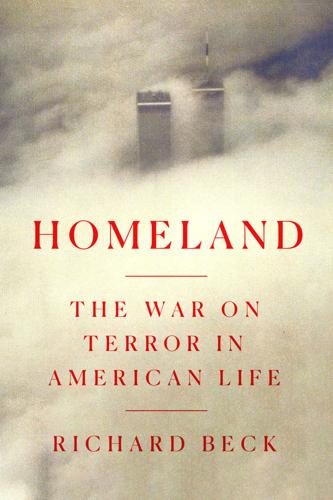
Homeland: The War on Terror in American Life
by
Richard Beck
Published 2 Sep 2024
“That’s the only way you could describe it.” Deck space became so limited on the two aircraft carriers from which these helicopters were dispatched that some of the choppers were simply pushed overboard, millions of dollars of the most sophisticated military hardware in the world dumped into the South China Sea.[6] Now people had to watch the same thing happen in Kabul, with the main difference being that fixed-wing aircraft had replaced the helicopters. The similarities between Vietnam and the war on terror should not be overstated, though. Vietnam discredited overt American militarism for fifteen years.
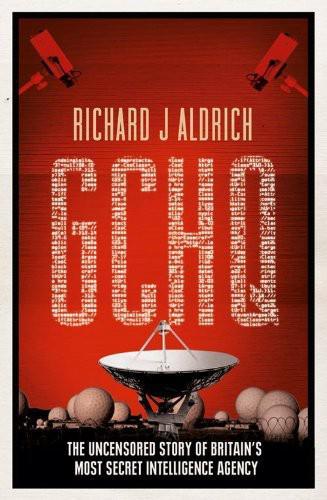
GCHQ
by
Richard Aldrich
Published 10 Jun 2010
In 1982 the GCHQ station at Little Sai Wan, which had depended on listeners with headphones, had been closed down and replaced by a new operation at Chum Horn Kok, on the south side of the island, which monitored satellite activity.30 This new station was initially given the code name ‘Demos-1’.31 The problem with the location was accommodating the massive dishes – there were eventually five – on what was a narrow shelf of rock overlooking the South China Sea.32 Chinese agents took a close interest in the station, so there were tight procedures whereby a ‘cleared expatriate’ supervised the moving of classified waste to a vast ‘Refudoc’ incinerator in the main building. The burn bags full of top-secret sigint material were huge, standing three feet high and weighing about thirty pounds.33 Despite the problems of its precarious site, Demos-1 had continued to grow during the 1980s.
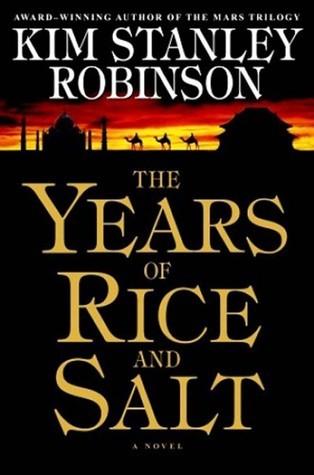
The Years of Rice and Salt
by
Kim Stanley Robinson
Published 2 Jun 2003
They even sailed through the Malacca Strait without hindrance from Palembanque, or, north of that, from the myriad pirates of Cham, or the Japanese wakou – though, as Kyu pointed out, no pirate in his right mind would chal lenge a fleet so huge and powerful, tooth of the Buddha or no. Then as they sailed into the south China Sea, someone saw the Dalada floating about the ship at night, as if, he said, it were a little candle flame. 'How does he know it wasn't a candle flame?' Kyu asked. But the next morning the sky dawned red. Black clouds rolled over the horizon in a line from the south, in a way that reminded Bold strongly of the storm that had killed Temur.

Escape From Rome: The Failure of Empire and the Road to Prosperity
by
Walter Scheidel
Published 14 Oct 2019
The Roman experience refutes the notion that it was inherently difficult for Europeans to access the riches of South and East Asia: it was hard for them only when they were not organized as a single imperial entity. It is true that navigating the Atlantic Ocean required sturdier ships and more sophisticated rigging than riding the monsoon winds did in the Indian Ocean and South China Sea: but that fact alone did not compel Europeans to live up to that greater challenge. Otherwise, Japan would have developed similarly advanced shipping instead of orienting itself toward the imperial behemoth to its southwest. Institutions, not winds, turned out to be decisive: imperial hegemony and its gravitational pull on the one hand, inter- and intrastate polycentrism on the other.97 East Is West … This leaves us with the second objection to an institutionalist perspective: that geography may have lent Europeans a helping hand while stymieing others.

Israel & the Palestinian Territories Travel Guide
by
Lonely Planet
But every year the entire community joins together on Mt Gerizim to sacrifice sheep for Passover – so it was before 1967, when the two centres of Samaritan life were ruled by Jordan and Israel, and so it is today despite the complicated relationship between Israelis and Palestinians. Israel's Vietnamese community of about 200 was established in 1977 when Prime Minister Menahem Begin welcomed Vietnamese boat people rescued in the South China Sea by Israeli merchant ships. Hummus & Olives: Regional Food Israelis and Palestinians disagree about many things, but food isn't one of them. Israel and the Palestinian Territories offer a vast smorgasbord of delicious dishes, some of them hard to find outside the region, many of them vegetarian and all of them – including innovative fusion variants – likely to intrigue your taste buds.
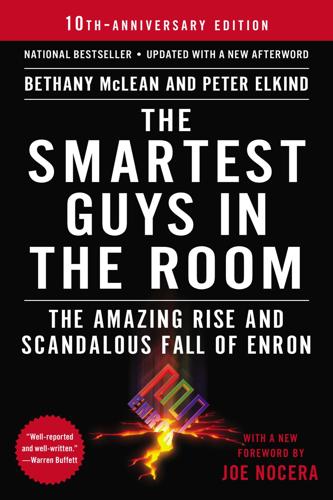
The Smartest Guys in the Room
by
Bethany McLean
Published 25 Nov 2013
For the next six years, Lay paid his dues: first in Houston, at Humble Oil (a forerunner to Exxon), where he worked as an economist and speechwriter while taking night classes toward his Ph.D., then in the navy, in which he enlisted in 1968, ahead of the Vietnam draft. Originally intended to become a shipboard supply officer, perhaps in the South China Sea, Lay was abruptly reassigned to the Pentagon. This assignment introduced him to Washington. Lay later attributed such critical turns in his life to divine intervention, but in this instance, there was no miracle involved: Pinkney Walker had pulled some strings for his protégé. Instead of putting in his tour of duty at sea, Lay spent it conducting studies on the military-procurement process.

The Stack: On Software and Sovereignty
by
Benjamin H. Bratton
Published 19 Feb 2016
Throughout the colonial era of globalization, the basic description of a “new” territory over which a state might wish to internalize into its jurisdiction, and over which it contests control, may be legally precedent to whatever private strategies are subsequently put in motion, or they may come later as decorative legitimation of earlier speculative adventures.32 Either way, sovereigns have long claimed and enforced the right to name and objectively represent the territories they govern. Today contested lines on maps still symbolize geopolitical tensions over sovereign influence, as the many intrigues over islands in the South China Sea attest. Consider then the curious episode in 2010 when Google Maps slightly shifted the line marking the border between Nicaragua and Costa Rica. Troops were summoned and war over the ambiguous territory seemed possible. The naming and measuring of the ground over which and into which politics might maneuver was, however unintentionally, remade not by either of these states but by a Californian software company.

Growth: From Microorganisms to Megacities
by
Vaclav Smil
Published 23 Sep 2019
China, once again, has strong and unyielding central control over 9.6 million km2 (slightly larger than the US) and its leadership, once again, refers to millennia of imperial history in superlative terms. And it does not tolerate any real dissent, it exercises pervasive social control, it pressures its smaller neighbors, it exhibits territorial ambitions that run counter to international norms (claiming sovereignty over virtually the entire South China Sea), and its grandiose plans of a new Silk Road are to put many nearby and more distant Asian (and African) economies firmly within Beijing’s economic control: Qing dynasty strategists would approve. And (in an unmistakably symbolic way) the leaders still run the new empire from the Forbidden City.
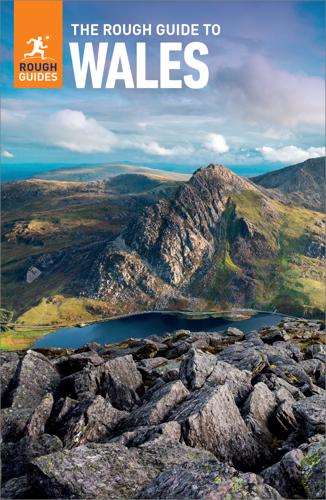
The Rough Guide to Wales
by
Rough Guides
Published 14 Oct 2024
National Coracle Centre Cenarth Mill, SA38 9JL • Easter–Sept Mon–Fri & Sun 10.30am–5.30pm; other times by appointment • Charge • 01239 710980 The riverside National Coracle Centre is a delightful small museum with intriguing displays of original coracles from all over the world, many of them from Wales. There are some fascinating stories here, not least in the bamboo coracle from Vietnam that was used to transport a handful of refugees hundreds of miles across the South China Sea to Hong Kong. The heyday of the coracle fishing industry in Wales was the early twentieth century, when some two hundred vessels would ply the waters hereabouts. Commercial practices started to wane at the end of the 1980s, though between April and August you may still see people fishing for salmon from these traditional boats, which the fishermen strap to their backs to haul upstream.
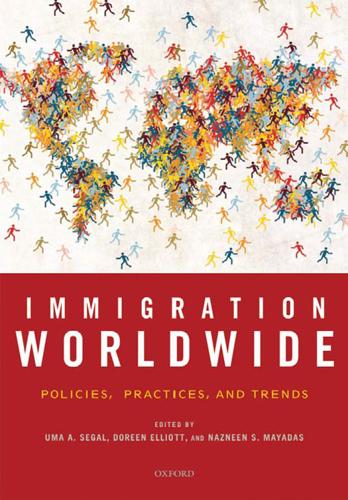
Immigration worldwide: policies, practices, and trends
by
Uma Anand Segal
,
Doreen Elliott
and
Nazneen S. Mayadas
Published 19 Jan 2010
The territorial conflicts between China and Vietnam beginning in the mid-1970s witnessed another wave of cross-border movement to the Mainland. This peaked in 1978 and 1979, when large outflows of people with Chinese ethnicity, some 160,000 to 250,000, fled Vietnam for southern China (Zhang, 2007). Many of these refugees were reportedly settled in state farms on Hainan Island in the South China Sea. Some arrived as ‘‘boat people,’’ following the currents of the big oceans; some were offered asylum in Europe and the United States; some eventually settled in the regions where their boats landed, and some were admitted to China as immigrants. The second source of immigration to Mainland China is from the brotherhood nations of the developing world, or the Third World.
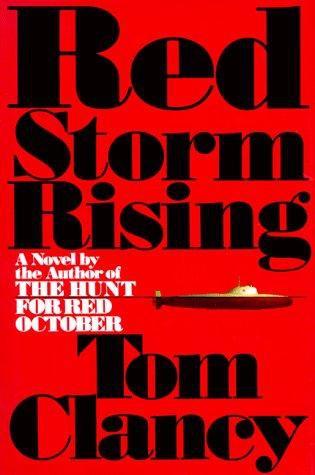
Red Storm Rising
by
Tom Clancy
Published 2 Jan 1986
Bottom line: Japan is not allowing any bases on its soil to be used for offensive strikes against the Soviet Union. What we have in Korea is needed there. The only carrier group we have in the Western Pacific is centered on Midway. They're well out to sea at present, and they don't have the moxie to go after Kamchatka alone. There's some air activity in the South China Sea west of the Philippines, but nothing major yet. Cam Ranh Bay appears to be empty of Soviet shipping. So the Pacific is quiet, but that won't last long. "In the Indian Ocean, somebody launched a missile attack against Diego Garcia, probably a submarine. Not much damage--just about everything there was sent out to sea five days ago--but it got their attention.
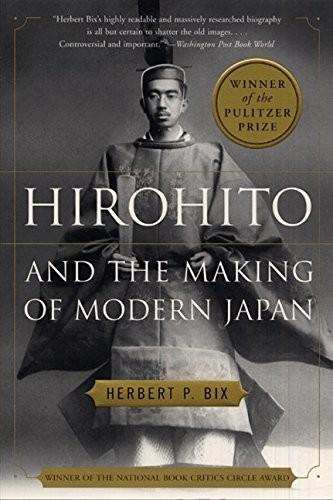
Hirohito and the Making of Modern Japan
by
Herbert P. Bix
Published 1 Jan 2000
Among them are the cult of reverence for the throne and its occupant; Japan’s unilateral takeover of Manchuria which Tokyo justified in the name of “self-defense;” Japanese violations of wartime international law during the Japan-China War; and the still controversial Nanking massacre, concerning which, to this day, no public documentary trace exists of the emperor ever having set an investigation in motion. Part III also addresses the Japanese navy’s policy of advancing toward the south, which, after the imperial navy’s occupation of Hainan island in the South China Sea in early 1939, led directly to Pearl Harbor and the last phase of Japan’s Asia-Pacific War. Taken as a whole, this book challenges readers to confront how wars are justified and how the history of heads of state and their close advisers is falsified. In writing it I sought to encourage more than a reevaluation of Hirohito as a special kind of war leader.
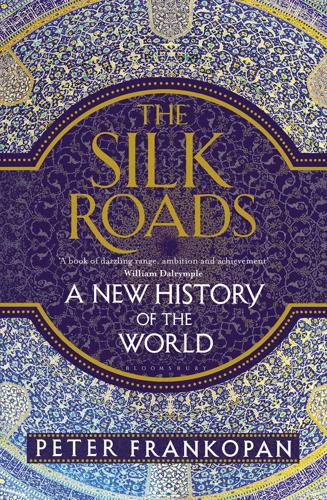
The Silk Roads: A New History of the World
by
Peter Frankopan
Published 26 Aug 2015
We do not have to rely solely on ambiguous or unreliable written sources to establish how important the city became as a commercial centre.36 A shipwreck from the bay of Guangzhou dating to precisely this period reveals that goods were being imported from all over southern Asia and in all likelihood from the Persian Gulf and East Africa too. Pepper, frankincense, ambergris, glass and cotton made up just a part of a valuable cargo that went down off the coast of China in or soon after 1271.37 Merchants could be found crossing the South China Sea in ever greater numbers, establishing trading posts in Sumatra, on the Malay peninsula and above all on the Malabar coast of southern India, home to the world’s great supply of pepper – long established as a favoured commodity in China as well as in Europe and elsewhere in Asia.38 By the middle of the fourteenth century, so many ships were sailing to towns like Calicut that some observers commented that all maritime transport and travel in this part of the Indian subcontinent was being undertaken in Chinese boats.
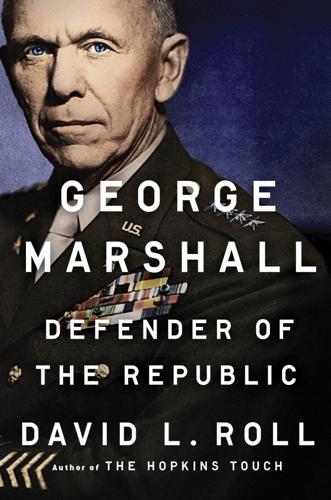
George Marshall: Defender of the Republic
by
David L. Roll
Published 8 Jul 2019
Not to be outdone by his German ally, Benito Mussolini delivered an ultimatum to the Kingdom of Albania on March 25, demanding that it consent to Italian occupation. The imminence of war in Europe reverberated in the Far East. In China, Japanese armies continued advancing south, capturing the city of Nanchang on March 27. In the South China Sea, Japan’s naval forces annexed a necklace of strategically situated islands that lay athwart sea lanes to Singapore and the island of Luzon in the Philippines. As proclaimed by its foreign ministry, the Japanese were pursuing a “New Order”—one that threatened European colonies in Southeast Asia as well as the Philippines.
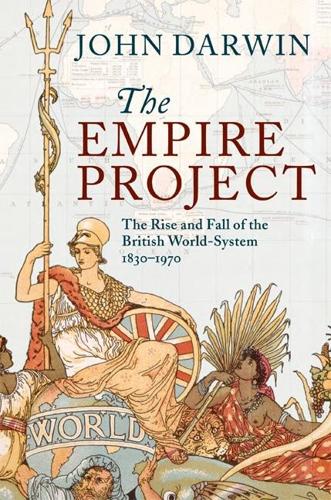
The Empire Project: The Rise and Fall of the British World-System, 1830–1970
by
John Darwin
Published 23 Sep 2009
The Chiefs of Staff decided that no more than two of the navy's eleven available battleships could be sent to the East if the confrontation turned violent: six had to be kept in Home waters, and three in the Eastern Mediterranean.31 At best, they could act as ‘some deterrent’ against a major Japanese move into ‘the South China Seas or Australasian waters’. If the Japanese moved south ‘in force’, the China squadron would have to leave Singapore and ‘retire westwards’.32 To relieve the crisis, the British ate humble pie.33 Meanwhile, home defence loomed larger and larger. As rearmament quickened and its cost raced ahead of the projected budget (hurriedly increased from £1,500 million to £2,100 million), purely defensive needs assumed an ever higher priority: fighters (to defend) not bombers (to attack); escort vessels (to guard convoys) not battleships.
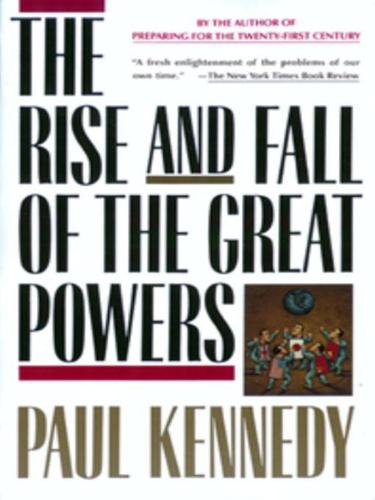
The Rise and Fall of the Great Powers: Economic Change and Military Conflict From 1500 to 2000
by
Paul Kennedy
Published 15 Jan 1989
Following the new tactic that “they were by no means to board, but to fight with the artillery,” the Portuguese crews were virtually invincible at sea.29 On land it was quite a different matter, as the fierce battles (and occasional defeats) at Aden, Jiddah, Goa, and elsewhere demonstrated; yet so determined and brutal were these western invaders that by the mid-sixteenth century they had carved out for themselves a chain of forts from the Gulf of Guinea to the South China Sea. Although never able to monopolize the spice trade from the Indies—much of which continued to flow via the traditional channels to Venice—the Portuguese certainly cornered considerable portions of that commerce and profited greatly from their early lead in the race for empire.30 The evidence of profit was even greater, of course, in the vast land empire which the conquistadores swiftly established in the western hemisphere.
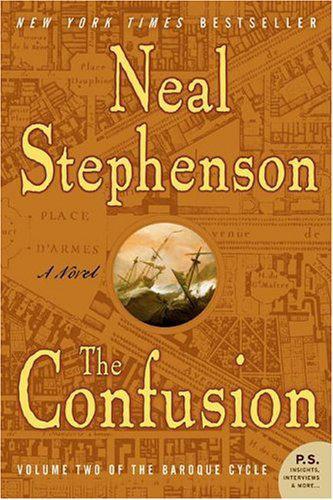
The confusion
by
Neal Stephenson
Published 13 Apr 2004
A rope burst and began thrashing about on the deck like a living thing as the tension bled out of it and its lays came undone. But then this momentary squall subsided and they found themselves working into a blustery north wind, across the darkling bay. The sun had plunged meteorically into the South China Sea, and its light was now overmatched by the lightning over Manila, which had merged into a continuous blue radiance that a person could almost read by. “One day, long after they’ve given up hope, one of these wretches—one of the few who can still stand—will be up on deck, throwing corpses over the rail, when he’ll see something afloat in the water below: a scrap of seaweed, no bigger than my finger.
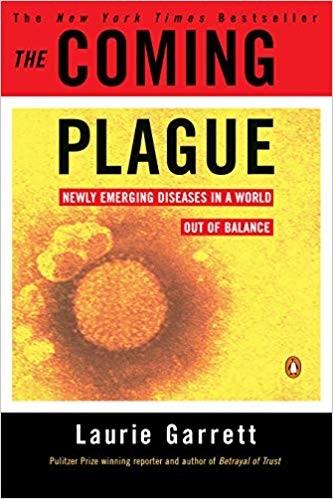
The Coming Plague: Newly Emerging Diseases in a World Out of Balance
by
Laurie Garrett
Published 31 Oct 1994
Japan, which was quickly becoming one of the two or three wealthiest countries on the planet, was reeling under Tokyo’s expanding needs. By 1985 less than 40 percent of the city’s housing would be connected to proper sewage systems, and tons of untreated human waste would end up in the ocean.40 Hong Kong, a center of wealth for the Chinese-speaking world, was dumping one million tons of unprocessed human waste into the South China Sea daily. Nearby Taiwan had sewage service for only 200,000 of its 20 million people, two-thirds of whom lived in its four largest cities. But for the poorest developing countries, the burden of making their growing urban ecologies safe for humans, rather than heavens for microbes, proved impossible.
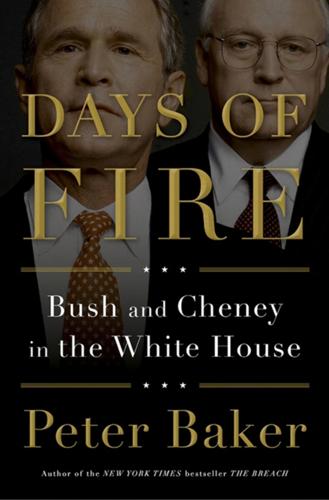
Days of Fire: Bush and Cheney in the White House
by
Peter Baker
Published 21 Oct 2013
Cheney never discussed the contingent resignation with anyone other than Bush and Addington until he revealed it in his memoir after leaving office. 6 “Iron filings moving across a tabletop” President Bush was at Camp David on Saturday, March 31, when Condoleezza Rice, who had joined him and the first lady for the weekend, notified him about 10:00 p.m. that an American spy plane had made an emergency landing on Chinese soil after a midair collision with one of Beijing’s jet fighters. The navy’s EP-3E Aries II reconnaissance plane was gathering intelligence over the South China Sea seventy nautical miles off the coast when a Chinese pilot shadowing it got too close. The American four-engine turboprop plummeted thousands of feet before its pilot reasserted control and managed to land at a Chinese base on Hainan Island. Its crew of twenty-four destroyed as much sensitive equipment as they could before being detained.

The Better Angels of Our Nature: Why Violence Has Declined
by
Steven Pinker
Published 24 Sep 2012
When people are rapacious or terrified, they develop the weapons they need; when cooler heads prevail, the weapons rust in peace. Resources and Power. When I was a student in the 1970s, I had a professor who shared with anyone who would listen the truth about the Vietnam War: it was really about tungsten. The South China Sea, he discovered, had the world’s largest deposits of the metal used in lightbulb filaments and superhard steel. The debates on communism and nationalism and containment were all a smokescreen for the superpowers’ battle to control the source of this vital resource. The tungsten theory of the Vietnam War is an example of resource determinism, the idea that people inevitably fight over finite resources like land, water, minerals, and strategic terrain.
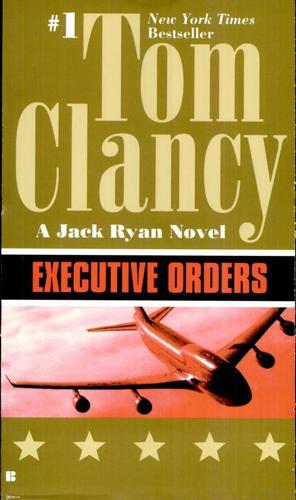
Executive Orders
by
Tom Clancy
Published 2 Jan 1996
I'm going to kill Arnie for exposing me this way all the time. John, the Secretary was engaged in some important consultations. That's all I have to say on the issue. He was in the Middle East, wasn't he? Next question? Sir, the Pentagon has announced that the carrier Eisenhower is moving into the South China Sea. Did you order that? Yes, I did. We feel that the situation warrants our close attention. We have vital interests in that region. I point out that we are not taking sides in this dispute, but we are going to look after our own interests. Will moving the carrier cool things down or heat them up?